10 of the very best places to visit in Cuba

Jan 9, 2024 • 6 min read
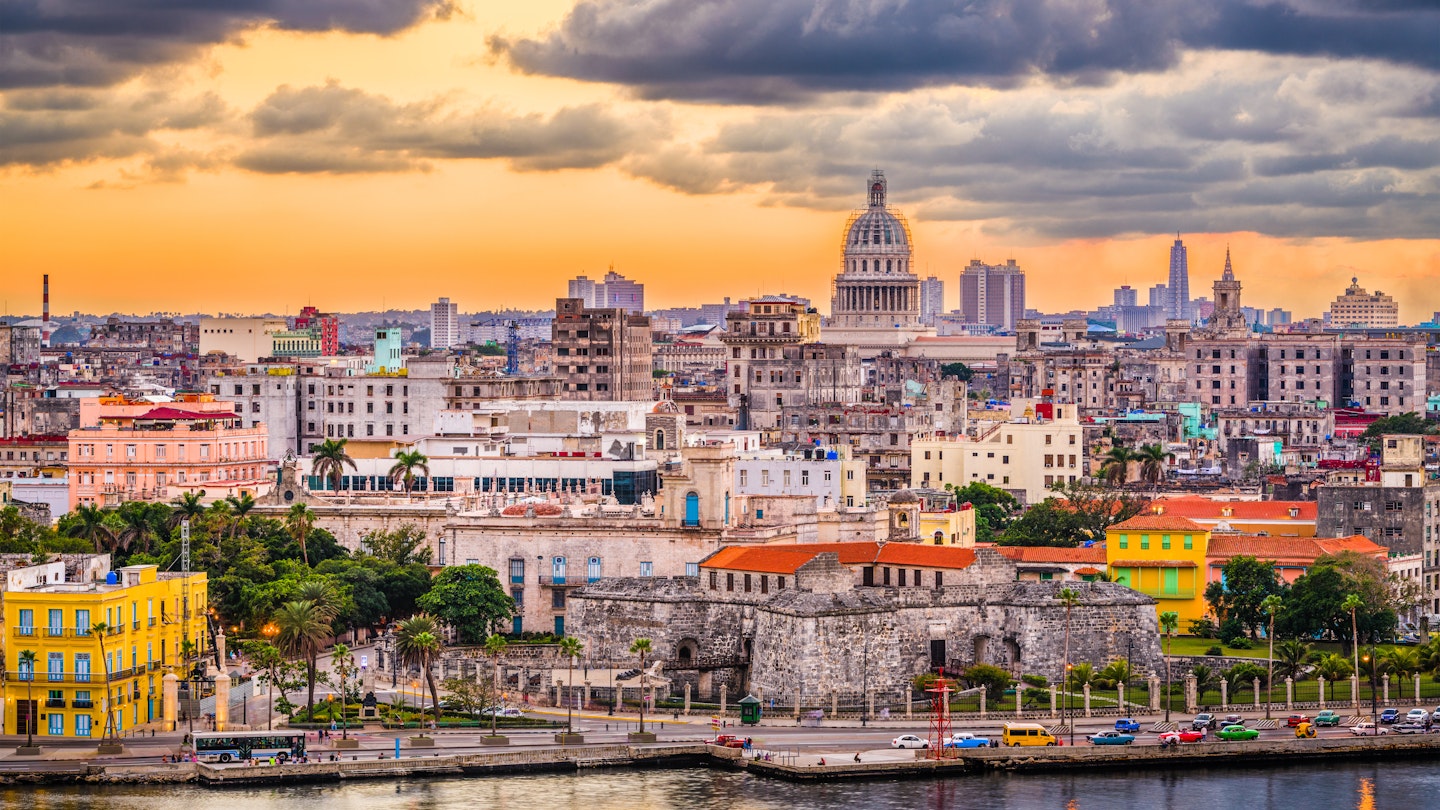
Experience the very best of Cuba with these top places to visit, starting with Havana © Sean Pavone / Shutterstock
From gorgeous cities swaying to the beat of tropical rhythms to unspoiled, lush forests, Cuba delights travelers with a wide variety of contrasting places.
Travelers will find eclectic architecture, white-sand beaches and prime wildlife-watching spots across the country. Here are 10 places worth adding to your Cuba itinerary to truly experience the Caribbean’s biggest and most fascinating island.
Best city for art and architecture
The Cuban capital of Havana is packed with vintage cars, embellished with old-world cobblestone plazas and silhouetted on the north by a 5-mile sea drive known as the Malecón.
Make sure you visit Habana Vieja ’s old squares for a glimpse of the colonial architecture that shaped the city in the 1700s and 1800s, where you can admire the palatial mansions that now operate as museums and hotels.
A walk along pedestrianized Calle Obispo offers art galleries, shops, music venues and incredible architecture, with buildings spanning periods from the 1700s to the late 1900s in just a mile.
Planning tip: Art is everywhere in Havana, with plenty of galleries and artsy outdoor areas such as San Isidro Art District and Fusterlandia . For an in-depth session on Cuba’s artistic history, spend a day at the Museo Nacional de Bellas Artes – Arte Cubano .
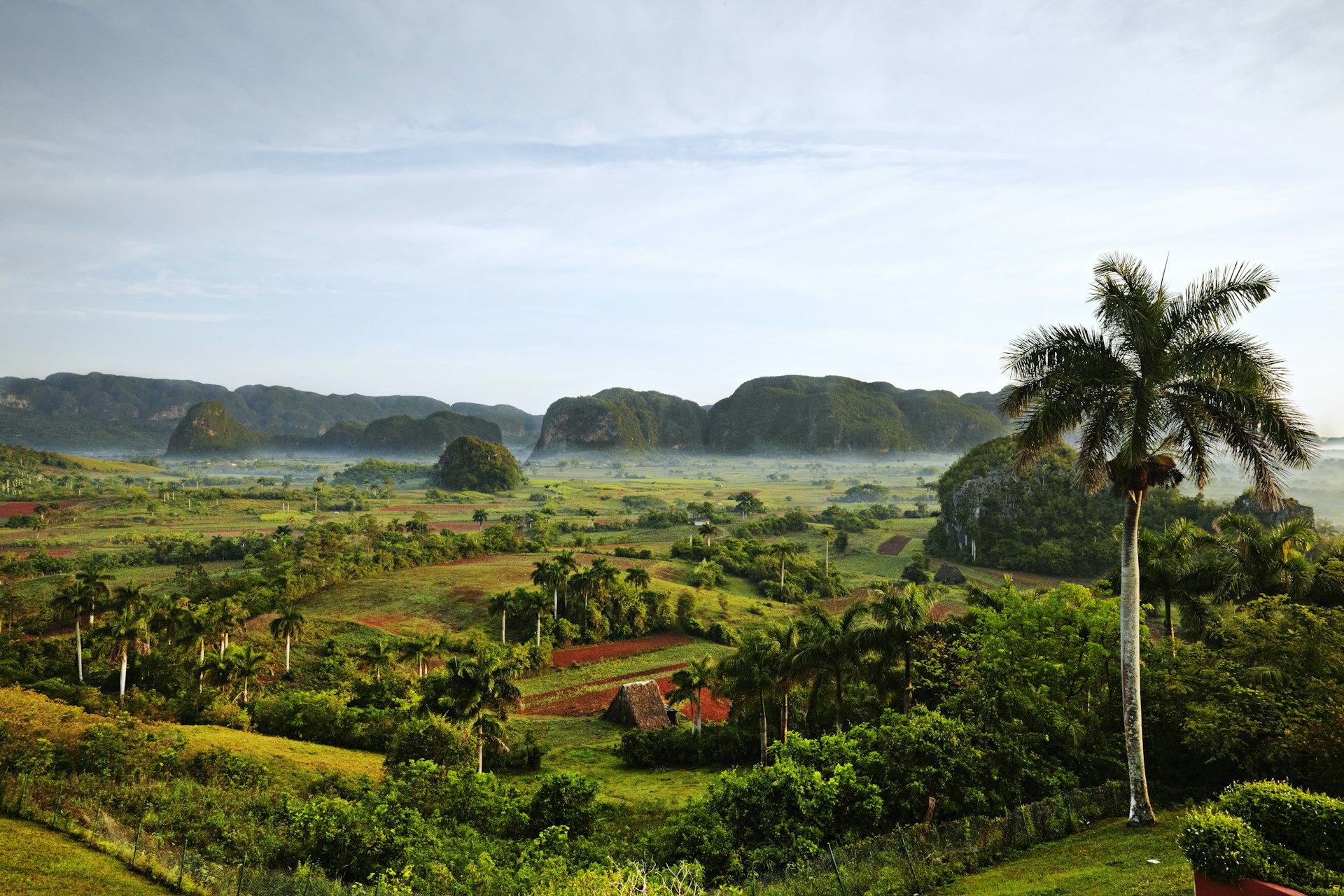

2. Valle de Viñales
Best for tobacco plantations
About 180km (100 miles) west of Havana, Viñales is one of the most beautiful places in Cuba. It was added to UNESCO's World Heritage List because of its dramatic landscapes of red soils and distinctive limestone outcrops called mogotes.
Viñales has the best casas particulares (private homestays) in Cuba and some of the friendliest and most helpful casa owners, who are the go-to coordinators for local activities. Choose from cycling, horseback riding or hiking to Los Acuáticos and Valle del Palmarito, or drive to the Gran Caverna Santo Tomás , Cuba’s largest cave system.
Planning tip: Touted as the growing spot of the world’s best tobacco, Viñales isn’t fully experienced unless you book an expert-guided tour inside the triangle-roofed drying houses scattered on local tobacco plantations.
3. Varadero
Best Cuban beach resort
Even if every tourist in Cuba decided to meet in Varadero , there’s still room for more. Varadero is Cuba’s best beach resort, with 20km (12 miles) of white, powdery sand and impossibly crystalline waters.
You can stay in all types of accommodations, from top-end all-inclusive resorts to beautiful casas particulares . Families enjoy Varadero’s safe, shallow shores while revelers dance the night away at Casa de la Música or themed party nights at hotels.
Planning tip: When you tire of the beach (if that is possible), while away an afternoon sipping rum-infused cocktails at Mansión Xanadú ’s rooftop bar while gazing out at the peninsula.
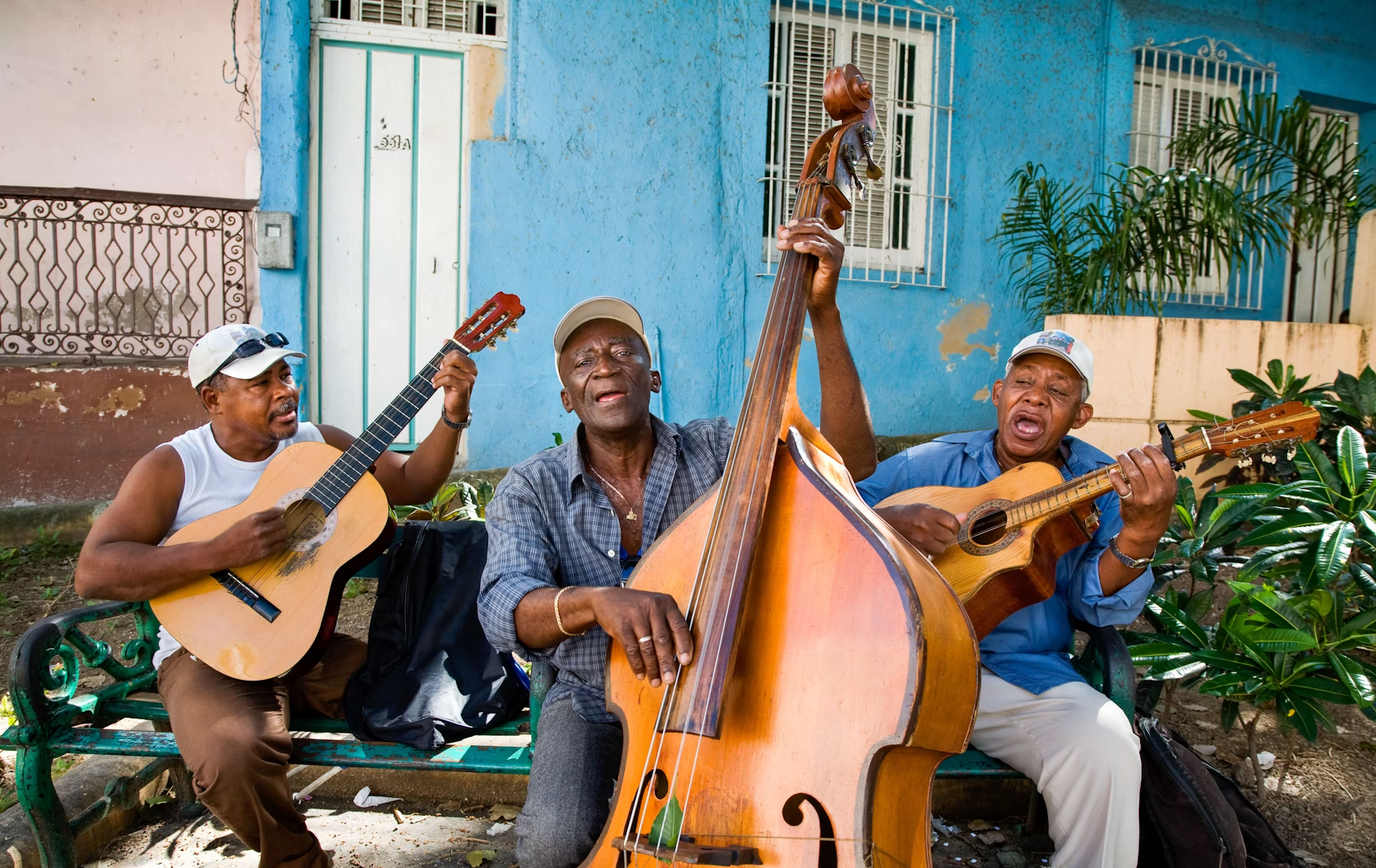
4. Santiago de Cuba
Best for understanding Cuba’s revolutionary history
Considered the second capital of Cuba, Santiago de Cuba was the HQ of the revolutionary guerrillas in the 1950s, but there’s more to experience here. Caribbean rhythms, tropical flavors and frenzied festivals set the rhythm of this colorful city.
Start with a visit to Cuartel Moncada , one of Cuba’s best museums, with a curated collection of the guerrillas’ paraphernalia and a detailed explanation of the events that started the 1959 revolution. Continue your journey through the past at the Basílica de Nuestra Señora del Cobre , Cuba’s most venerated church.
It has an exhibition of offerings given to the patron saint, including those given by the bearded revolutionaries themselves in the 1950s.
Planning tip: In symphony with its rebellious roots, Santiago bursts with a constant party-like atmosphere, reaching its pinnacle at the nationally famous Carnavales (Carnival) right after the Día de la Rebeldía Nacional (National Rebellion Day) on July 26.
Best for wildlife spotting
Located in the easternmost tip of Cuba, just getting to Baracoa is an experience in and of itself. The road from Guantánamo leads to La Farola, a sinuous 60km-long (37-mile) road considered the most scenic drive in Cuba.
Expect a three-hour trip through lush mountains, interrupted only by vendors of cucuruchos de Baracoa , a cone-shaped mix of coconut flakes, honey, guava paste and a fruity flavor (such as pineapple and orange rinds) all wrapped up in a palm frond.
Planning tip: Río Duaba and El Yunque are great spots for hiking among abundant flora and birdlife, but if you’re looking for a deeper immersion into semi-virgin forests, book a tour at Parque Nacional Alejandro de Humboldt.
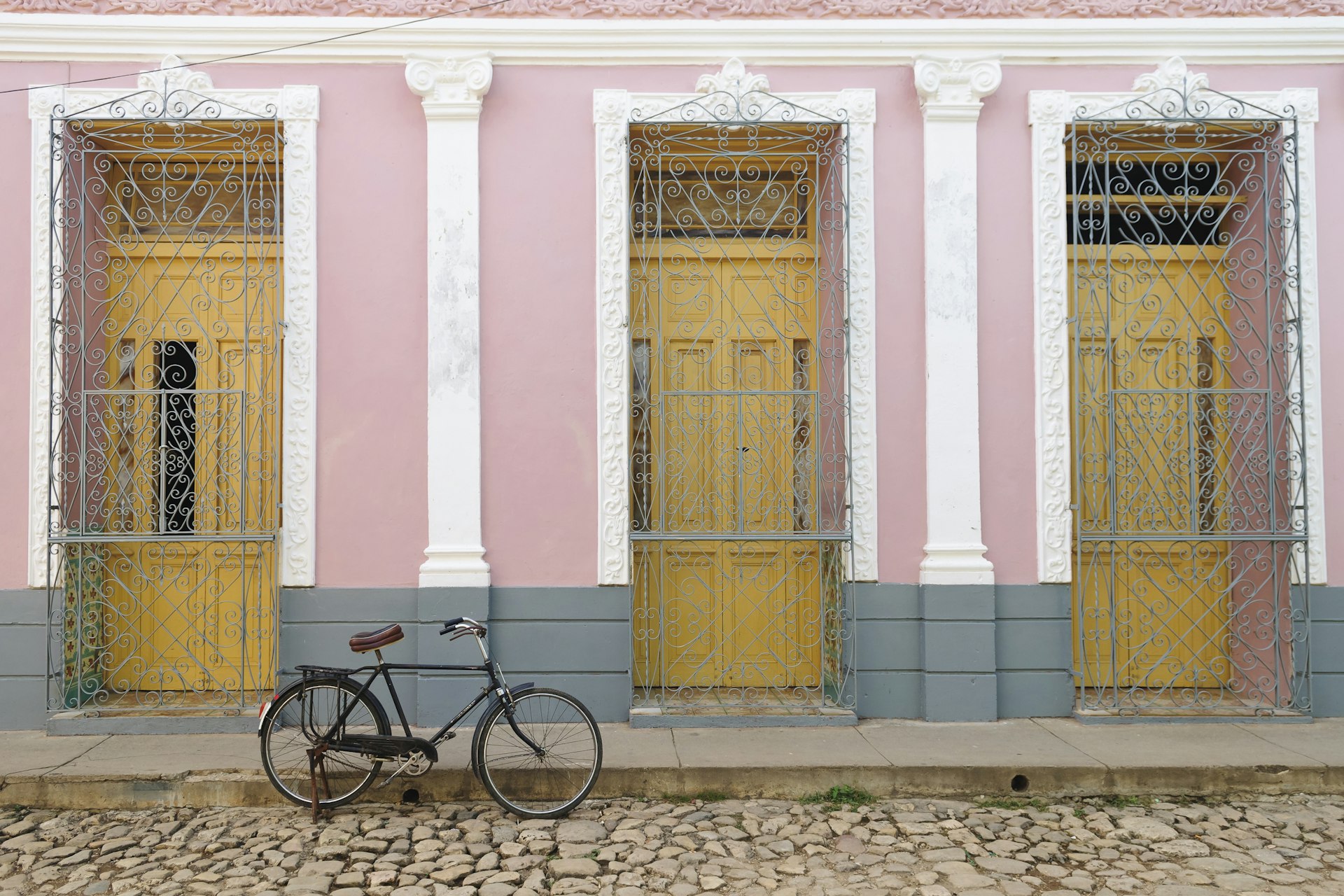
6. Trinidad
Best for shopping handmade arts and crafts
Declared a UNESCO World Heritage Site in 1988 and a World Craft City in 2018, Trinidad , full of cobblestoned streets and colonial-era mansions, is not only Cuba’s best-preserved “open-air museum,” it’s also a cradle of the best handmade crafts on the island.
Trinidad's needleworkers stitch their linen pieces at open-air markets, exhibiting handmade clothing, delicate embroidered tablecloths and garments such as guayaberas (Yucatán shirts).
Planning tip: You’re likely to see local markets on pedestrianized parts of the town’s historical center, adjacent to the Plaza Mayor , but artisans also display a daily fair at the base of Torre Manaca Iznaga , 16km (10 miles) outside of Trinidad.
7. Matanzas
Best for live music and dancing
Touted as the Athens of Cuba, Matanzas is the homeland of some of the country’s most cherished performers, such as Miguel Failde, creator of the cheek-to-cheek danzón (ballroom dance).
The city is also the birthplace of rumba, an Afro-Cuban dance that 70-year-old music group Muñequitos de Matanzas has promoted worldwide. Look out for live music performances held weekly at the Museo Histórico Provincial – Palacio de Junco .
Local tip: For travelers looking for a more Cuban Cuba – and not the usual tourist postcard of Varadero – Matanzas offers alluring architecture, featuring neoclassical buildings such as the fully restored Teatro Sauto or living antiques like the Museo Farmacéutico , founded as the first of its type in Latin America in 1882.

8. Cienfuegos
Best spot for water sports including kayaking, fishing and windsurfing
Known as the Pearl of the South, Cienfuegos is Cuba’s French-inspired city, founded in 1819 on a beautiful natural bay. Deep enough to welcome cruises and mega-yachts, the bay is best enjoyed from Punta Gorda and the nautical centers at Club Cienfuegos and Marlin Marina Cienfuegos.
Planning tip: Enjoy a day kayaking, fishing or windsurfing, but make sure you include an excursion to Laguna Guanaroca , Cienfuegos’ natural protected area, for the chance to see flamingoes and take a boat trip on the lake.
9. Camagüey
Best city for strolling maze-like alleys
Elegant and artistic, Camagüey oozes charm and youthful energy, but it’s the surprisingly intricate street pattern of the city center that usually strikes visitors most.
With most of the grid formed by one-way narrow streets, it’s almost impossible to figure it out if you’re behind the wheel. Instead, stroll around maze-like alleys to discover small but lovely plazas all within walking distance from one another.
Spend a day wandering between the artisan market in Plaza San Juan de Dios and the less-visited Plaza del Carmen , home of the inspiring art gallery of Martha Jiménez Pérez .
Planning tip: Check out Cuba’s narrowest and shortest streets while you're in Camagüey. Callejón del Cura is only 1.4m (4.6ft) wide, while Callejón de la Miseria is 15m (49ft) wide, with only two houses facing each other.
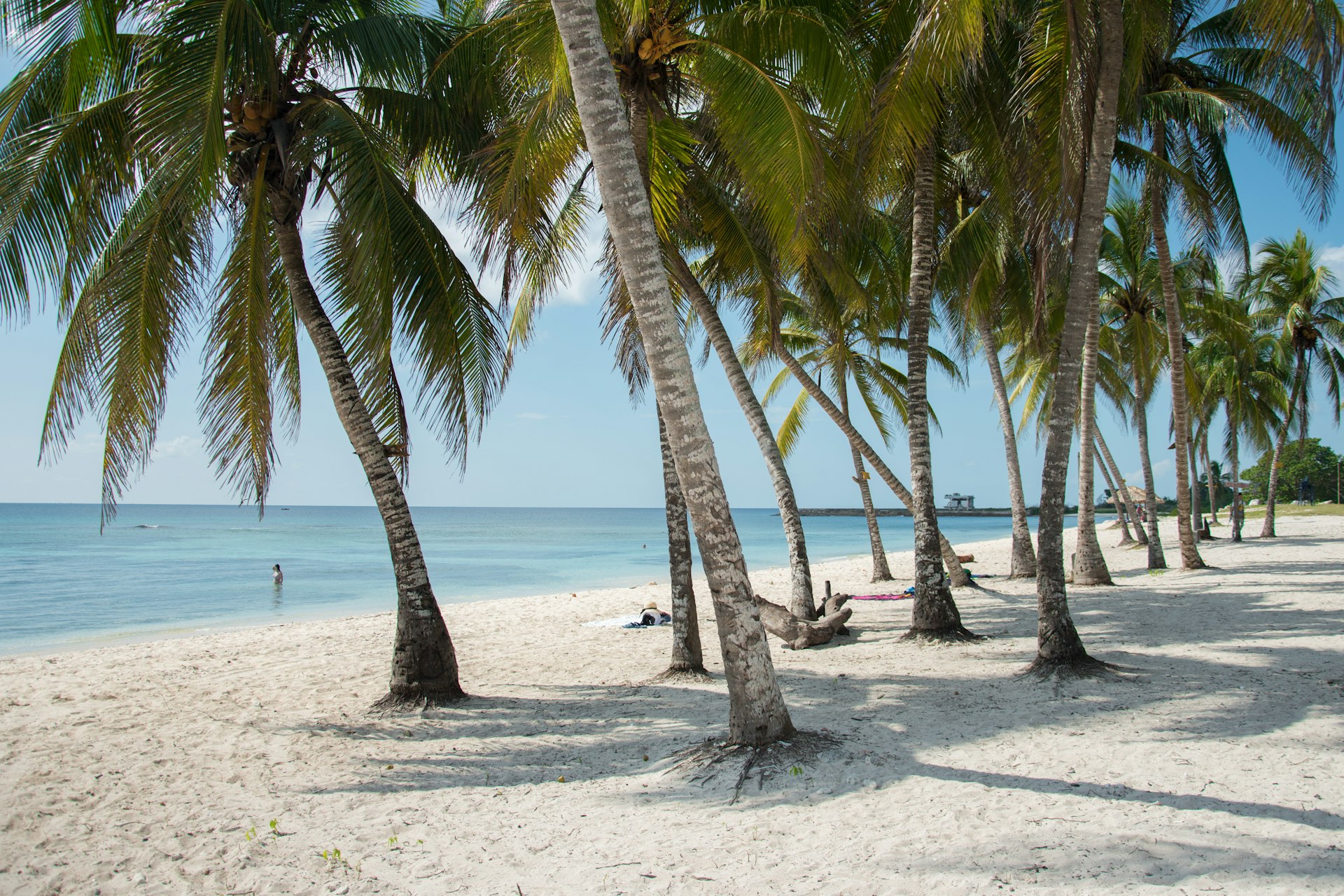
10. Playa Girón
Best for swimming, diving and birdwatching
South of Matanzas province, Playa Girón has one of the country’s best diving sites that isn’t far offshore – no boat required! The clear Caribbean waters offer impressive visibility and a colorful variety of marine fauna. Go for a refreshing swim in a gorgeous cove at Caleta Buena , or look for coral reefs at Punta Perdiz .
Playa Girón is also one of the best places in Cuba for birdwatching because it is part of the Parque Nacional Ciénaga de Zapata, which welcomes about two-thirds of the nearly 350 bird species that call Cuba home.
Planning tip: On the way from Playa Larga to Playa Girón, make sure you stop at Cueva de Los Peces , one of Cuba’s few cenotes.
This article was first published Dec 8, 2021 and updated Jan 9, 2024.
Explore related stories
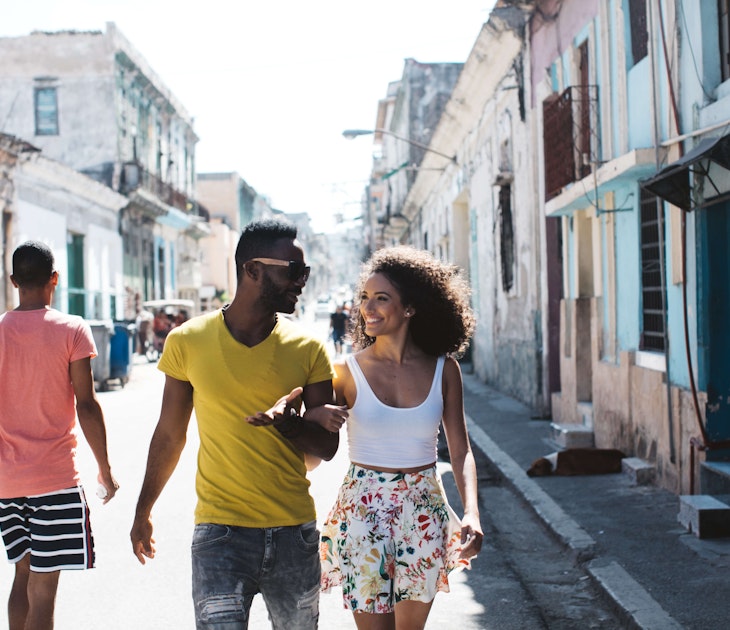
Tips & Advice
Jan 18, 2024 • 4 min read
Travelers often have questions about the visa process for Cuba and whether US citizens can even visit. Here’s our guide to Cuba’s visa requirements.
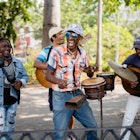
Jan 9, 2024 • 4 min read

Jan 7, 2024 • 10 min read
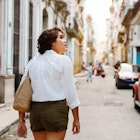
Jan 6, 2024 • 7 min read

Jan 5, 2024 • 8 min read
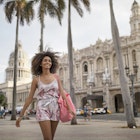
Jan 5, 2024 • 4 min read
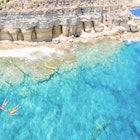
Nov 24, 2023 • 7 min read

May 6, 2023 • 9 min read

Jan 6, 2023 • 7 min read

Jan 5, 2023 • 8 min read
One Week in Cuba
48 Hours in Havana
Day Trips from Havana
Top Things to Do in Cuba
Things to Do in Havana
Best Beaches
Museums to Visit
Where to Go Shopping
Foods to Try
Best Restaurants in Havana
Nightlife in Havana
What Americans Should Know
Best Time to Visit
Weather & Climate
Best Hotels in Havana
Public Transportation
Neighborhoods to Explore
Places to Visit
Top Travel Destinations and Attractions in Cuba
:max_bytes(150000):strip_icc():format(webp)/bobislands-56a3911f3df78cf7727dfc3b.jpg)
TripSavvy / Anna Haines
Old Havana (La Habana Vieja) is the heart of Cuba's capital and its cultural center. Founded in 1519 by the Spanish, Havana was originally a walled city. Most of the old walls are now gone, but the dense, 3,000-building district they once guarded contains some of Cuba's most important cultural sites.
Amid the narrow streets of Old Havana you'll find the Plaza Vieja, established in 1559, the national capital building, the Great Theater of Havana and the city's museum of fine arts, the Cathedral of Havana, the Museum of the Revolution, and the famous La Floridita bar, a onetime hangout of Ernest Hemingway and the birthplace of the daiquiri cocktail .
Check Cuba Rates and Reviews at TripAdvisor
Havana's iconic seawall is the best place to meet local residents in a relaxed environment. The Malecón runs for five miles along the Caribbean shoreline of Havana from the mouth of the harbor to the Old Havana waterfront. Lovers, fishermen, joggers, tourists, prostitutes, Santeria practitioners, and ordinary Habaneros alike can be found day and night during a stroll here.
The crashing surf and glorious sunset are worth a visit along, but prominent and interesting landmarks also include the grand Hotel Nacional de Cuba, a monument to the victims of the USS Maine explosion in 1898, and the statue of Cuban nationalist hero José Martí in the Plaza de la Dignidad.
The Museum of the Revolution
Havana's Museo de la Revolución tells the story of Cuba's successful revolt to overthrow the Fulgencio Batista dictatorship (and U.S. ally) in the 1950s. Located in Batista's former presidential palace, the museum includes a variety of artifacts from the conflict, including a Russian tank and U.S.-built fighter plane that took part.
Most prominent is the yacht Granma , which was used to transport Fidel and Raul Castro, Che Guevara, Camilo Cienfuegos, and their revolutionary comrades from Mexico to Cuba at the outset of the war. Exhibits include weapons carried by Guevara and Cienfuegos, the engine from a U.S. U2 spy plane shot down during the Cuban Missile Crisis of 1962, and Batista's gold telephone.
Bellamar Caves
This famous show cave in Matanzas is one of Cuba's oldest tourist attractions -- and still one of the most popular. Located close to the Varadero resort area, these limestone caves were formed more than 300,000 years ago but only discovered in 1861.
Filled with impressive stalactites, stalagmites, galleries, and an underground river, Bellamar Caves has lights and stairs for visitors but, unlike most caves, is quite warm and humid inside. The complex also includes a museum, cafe, playground, and gift shop. Tours can be arranged from hotels in Havana or Varadero.
The beautiful Spanish colonial city of Trinidad, Cuba, takes visitors back in time. Located in the mountainous central Cuba province of Sancti Spíritus, Trinidad is a UNESCO World Heritage Site. Founded in 1514, the city is a well-preserved example of a Caribbean sugar town of the 19th century (the surrounding area is known as the Valley of the Sugar Mills), filled with ornate Spanish colonial mansions, plazas and churches.
Plaza Mayor is the heart of Trinidad, an excellent jumping-off point for walking tours that take in major sites such as the old San Francisco convent (now a museum) and ornate mansions that once belonged to sugar barons. The rolling hills, historic plantations and waterfalls of the Valley of the Sugar Mills can be toured by steam train or horseback.
The beaches of Varadero are world famous and home to most of the island's international resorts. Located on a narrow peninsula east of Havana, Varadero's 12 miles of beaches were once home to waterfront mansions and today boasts dozens of international hotels visited by more than one million tourists annually.
Nearby attractions and activities include jeep trips to the El Nicho waterfall, the Bellamar Caves, and the Montemar Natural Park at the tip of the Zapata Peninsula.
Santiago de Cuba
San Pedro de la Roca Castle, a 1638 Spanish fortress, is one of the historic landmarks of Cuba's second largest city, but hardly the only one worth visiting. Dating to 1515, this Caribbean port city was the scene of the famous Battle of San Juan Hill during the Spanish-American War, as well as an abortive attack on the Moncado Barracks by revolutionaries led by Fidel Castro in 1953 -- an incident viewed as the opening shot of the Cuban Revolution.
One of the cultural capitals of Cuba, the city includes museums containing the expropriated art collection of the Bacardi rum family (who fled to Puerto Rico after the revolution), a broad musical heritage, and lively Afro-Caribbean culture, including the practice of santeria. Other top attractions along this city's narrow streets include a rum museum, a multitude of parks, and the unique French-Haitian district called Tivoli.
Santiago de Cuba 's Carnival celebration is the best in Cuba, reflective of a city that is notoriously hot and loud but also vibrant and bustling. To get a respite, head to the beach or the large Baconao nature park is nearby.
Vinales Valley
This breathtakingly beautiful valley is a UNESCO World Heritage site known for its unique rock formations and traditional agriculture that includes tobacco cultivation -- much of it used for prized Cuban cigars.
A depression in the Sierra de los Órganos mountains of Pinar del Rio province, the area's most distinguishing landscape features are a profusion of knolls with cliffs rising from the valley floor, known as mogotes -- the result of limestone erosion in the karst valley.
In addition to tobacco, local farmers raise taro and bananas, while the surrounding mountains are known for their many caves.
Cayo Largo del Sur
An island paradise about 50 miles off the southern Caribbean coast of Cuba renowned for its lovely white-sand beaches, Cayo Largo is home to a few small resorts, many catering to clothing-optional travelers. Playa Paraiso has made various world's best beach lists, and nude sunbathers abound.
The island has no permanent residents and few bells and whistles other than some restaurants, shops and a turtle farm, making it ideal for a short-term Caribbean disappearing act in a remote corner of Cuba.
Santa Clara
The town of Santa Clara was the site of one of the crucial battlefields of the Cuban Revolution and remains a shrine to the memory of Che Guevara. The Battle of Santa Clara in 1958 pitted two columns of revolutionary soldiers -- one led by Che, the other by Camilo Cienfuegos -- against government troops loyal to General Fulgencio Batista, who were quickly routed.
Batista fled Cuba just 12 hours later, handing victory in the Cuban Revolution to Fidel Castro and his allies. Today, visitors can visit Che's mausoleum, see an armored train derailed by rebel soldiers, or stroll the streets of this 300-year-old city, centered on the beautiful Parque Vidal.
The surprisingly hip cultural scene includes a rock festival, drag club, and modern art museums; the popular beaches of Cayo Santa Maria, linked via a causeway, are nearby.
Cubas Capital City of Havana
8 Museums to Visit in Cuba
48 Hours in Havana: The Ultimate Itinerary
Top 9 Things to Do in Cuba
Cuba Guide: Planning Your Trip
The 5 Best Day Trips from Havana
Top Cuba Tour Operators for Americans
The Top 17 Things to Do in Cuba
One Perfect Week in Cuba
Gay and Lesbian Friendly Destinations in the Caribbean
Top 10 Restaurants in Havana
Licensed Cuba Travel Providers
5 Neighborhoods to Explore in Havana
Top Mexico Destinations
How to Travel to Cuba If You Are an American
The 27 Best Things To Do in Miami
18 Stunning Places to Visit in Cuba
Adventurous Kate contains affiliate links. If you make a purchase through these links, I will earn a commission at no extra cost to you. Thanks!
Of all the wonderful places to visit in Cuba, the city of Havana tops most travelers’ lists. And while old Havana is a spectacular place, where else should you go in Cuba? Are there other good cities, or beaches, or nature spots?
I’m glad you asked! Cuba is one of the most interesting of the Caribbean islands, and there are so many cool places to visit in this island nation. Cuba is like nowhere else in the world, and there’s a surprising amount of diversity in the island.
Here you can make your way from colonial cities like Trinidad and Cienfuegos to gorgeous beaches like Playa Maria la Gorda and Playa Giron, as well as natural wonderlands like El Nicho and Viñales Valley.
I asked my travel blogging colleagues to share their favorite spots, and WOW. You are going to love them.
Also, if you’re American and thinking about visiting Cuba, YOU CAN! I did as an American in early 2020, and plenty of Americans visit on a regular basis. I wrote a complete guide on how to visit Cuba as an American and what you need to know before you go.
This post was last updated in April 2022.
Table of Contents
Map of Places to Visit in Cuba
The capital of Havana , the outdoorsy paradise of Viñales , and the colonial city of Trinidad are the top destinations in Cuba and very popular with tourists.
Varadero is a popular Cuba beach resort destination with gorgeous beaches. Playa Giron and Playa Larga are other great beach options.
If you want to visit places that many other tourists don’t, check out the fascinating town of Sancti Spiritus and the island of Cayo Levisa.
You will likely start your trip in Havana. From there, you can travel around via the Viazul bus line or take shared taxis (colectivos), or more expensive private taxis, depending on your location.
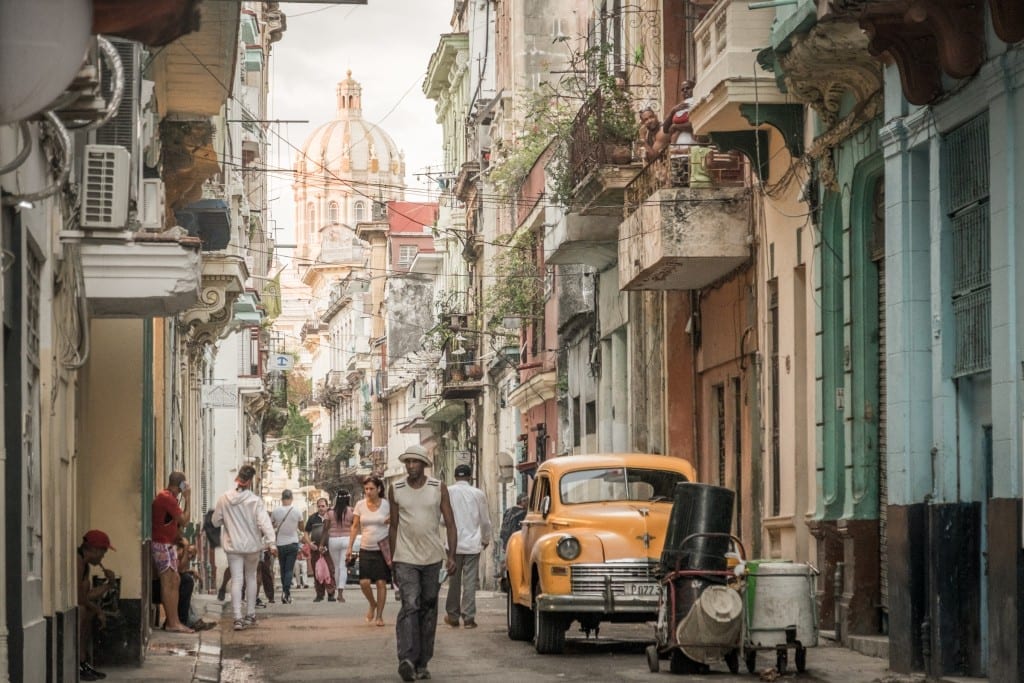
Submitted by Anne Betts of Packing Light Travel
Havana boasts a rich mixture of history, art, architecture, politics, culture, and food. One of the best ways to enjoy a pleasant introduction to these facets of Cuban life is through a food tour while feasting on churros or sipping a mojito.
In Old Havana, visit a couple of other memorable works of José Ramón Villa Soberón, including the one of Ernest Hemingway at El Floridita. The famous cocktail bar is credited with introducing the world to the frozen daiquiri in the 1930s, a favourite drink of the author. Ordering a daiquiri isn’t mandatory, but it’s desirable.
Best things to do in Havana: Take a tour of Havana landmarks in one of the vintage cars. A popular stop is Parque John Lennon in Vedado, where tourists cozy up to a bronze statue of the famous musician relaxing on an ornate park bench. Created by José Ramón Villa Soberón, the sculpture warrants its own security guard to safeguard the replica of the circular-rimmed glasses that were a recognizable signature of Lennon’s period of political activism.
How to get to Havana: Havana is the main hub of Cuba, and all flights and travel routes lead through Havana.
Where to stay in Havana: The best place to stay in Havana is at a casa particular , or guesthouse, where hosts may or may not live on the premises. It’s an opportunity to forge meaningful connections with Cuban residents. Enjoy home-cooked meals, receive recommendations on things to do and help with transportation and bookings at casa particulars in other regions.
In Havana, the Vedado neighbourhood is a good choice. Compared to Old Havana and the city center, there’s less traffic and more green spaces that translate into cleaner air. The neighbourhood is dotted with old mansions oozing loads of character, and services such as supermarkets, money-changing centres, and Wi-Fi zones.
Visit a restaurant in Vedado, and chances are it’s an establishment serving Cuban specialties and is one frequented by locals.
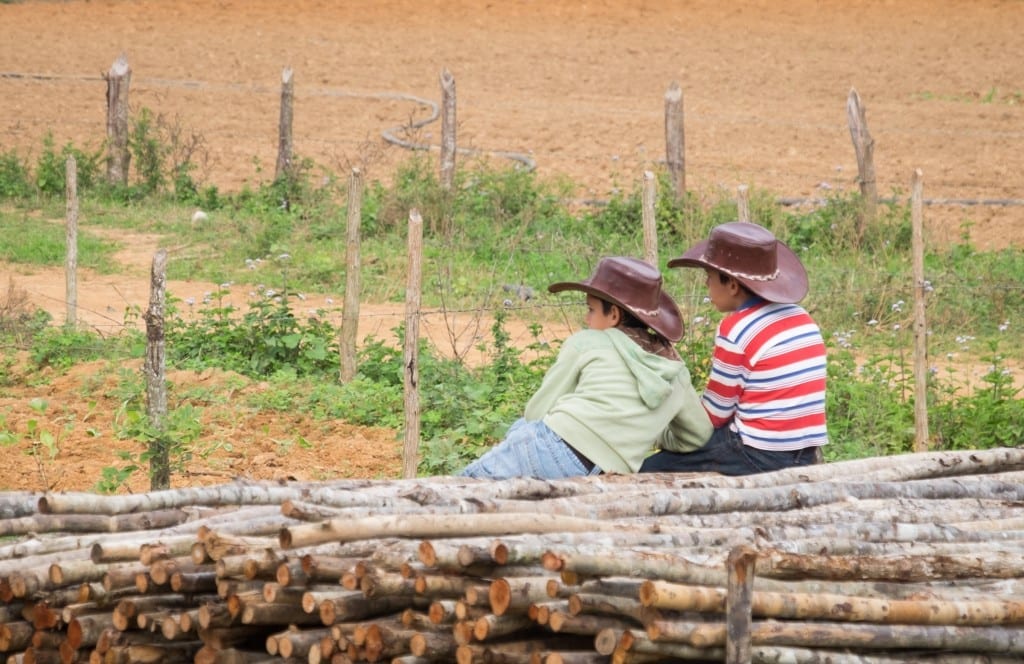
Submitted by Bella from Passport & Pixels
Viñales is a pretty, colourful town in the Pinar del Rio region in the west of Cuba, surrounded by the Sierra de los Organos mountains and the lush green farmland of the Viñales Valley. Its main attractions are all outdoors — hiking, cycling, horseback riding or even rock climbing in the steep-sided limestone hills — just pick your favorite outdoor adventure!
Best things to do in Viñales: One of the most popular things to do in Viñales is to take a horseback riding tour of the valley. These usually last about 3-5 hours and are a great way to enjoy the region’s stunning scenery of rolling hills studded with palm trees.
But if horses aren’t your thing, you might prefer to do a day hike to visit the tobacco farms for which Viñales is famous. Here you can meet local farmers and learn about how they produce Cuba’s most iconic export — cigars — and even get to try one yourself.
How to get to Viñales: Viñales is about a 2.5-hour drive from Havana, and the easiest way to get there is either by bus or private taxi. The best way to do this is to first take a taxi to the central coach and taxi station, and then haggle with the drivers there. You’ll get a much better price than if you try to book through your hotel, and you might even get to ride in one of Cuba’s gorgeous classic cars .
Another option is to join a shared taxi (colectivo) from Havana.
Where to stay in Viñales: The best place to stay while in Viñales is in one of the private homestays known as casas particulares. These give you a much more authentic (and often nicer) experience of Cuba than staying in a hotel. Just turn up and look for the signs on people’s front doors or book through Airbnb.
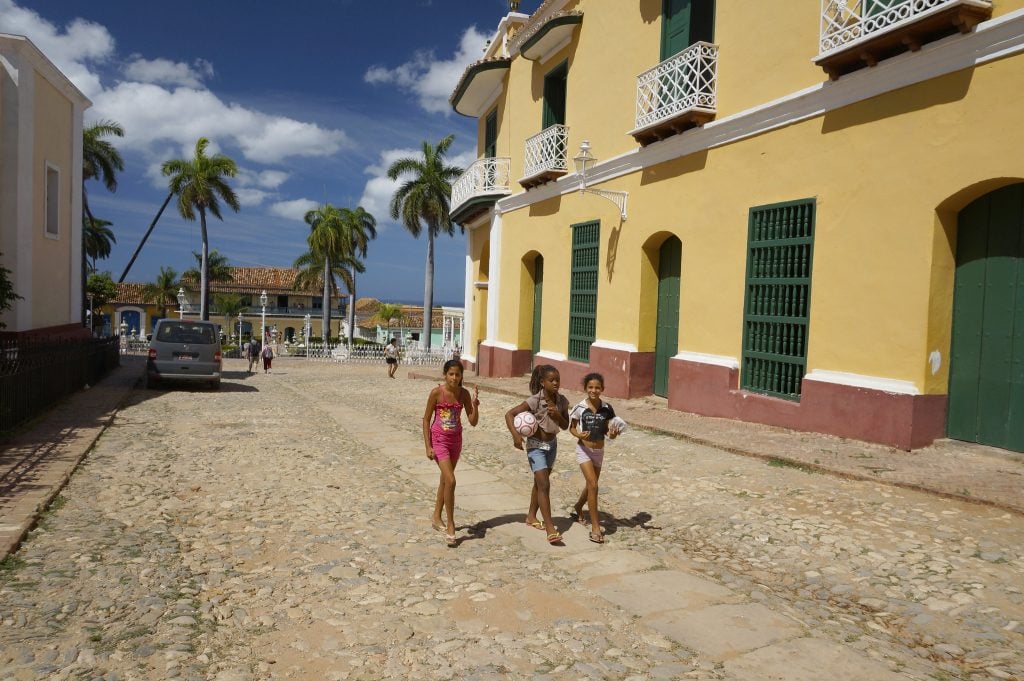
Submitted by Trijit Mallick from DogTravel Buff
With bright-colored buildings, pastel houses, and cobblestone streets, Trinidad is one of the best-preserved colonial towns in Cuba. It is a small town but packed with history, beautiful architecture, scenic beauty, and delicious local cuisines.
After a few hours in Trinidad, you’ll soon see why it’s one of the best places to visit in Cuba!
Best things to do in Trinidad: Plaza Mayor is the best place to start exploring the city. It is the main square where the Church of the Holy Trinity is located. The stunning pale yellow-colored church is a great spot for photography. Make sure to visit Brunet Palace, a large yellow building consisting of two floors. You will also find some other historical buildings and restaurants in this area. Sala Class is very popular in Trinidad. You can go for a group lesson for a unique experience.
If you are a beach person, Playa Ancon is a must-visit place for you. You can rent a bike or take a public bus that takes around 30 minutes to reach Playa Ancon. Enjoy the beautiful combination of blue waters, white sand beach, and palm trees.
There is no shortage of bars and restaurants in Trinidad. Restaurante San José is a solid option for people looking to taste authentic Cuban cuisine. The canchanchara is the original signature cocktail of Cuba and it’s very popular in this region.
How to get to Trinidad: Bus service is available from all major cities (like Havana, Viñales, and Varadero) to Trinidad and is the cheapest way to get to Trinidad. If budget is less of a concern, hire a shared or private taxi (colectivo) or rent a car for a more flexible journey. It takes around four hours to reach Trinidad from Havana by road.
Where to stay in Trinidad: You can stay at casas particulares which are basically private homestays like B&B. These private B&Bs offer air-conditioning and hot water at a very reasonable price.
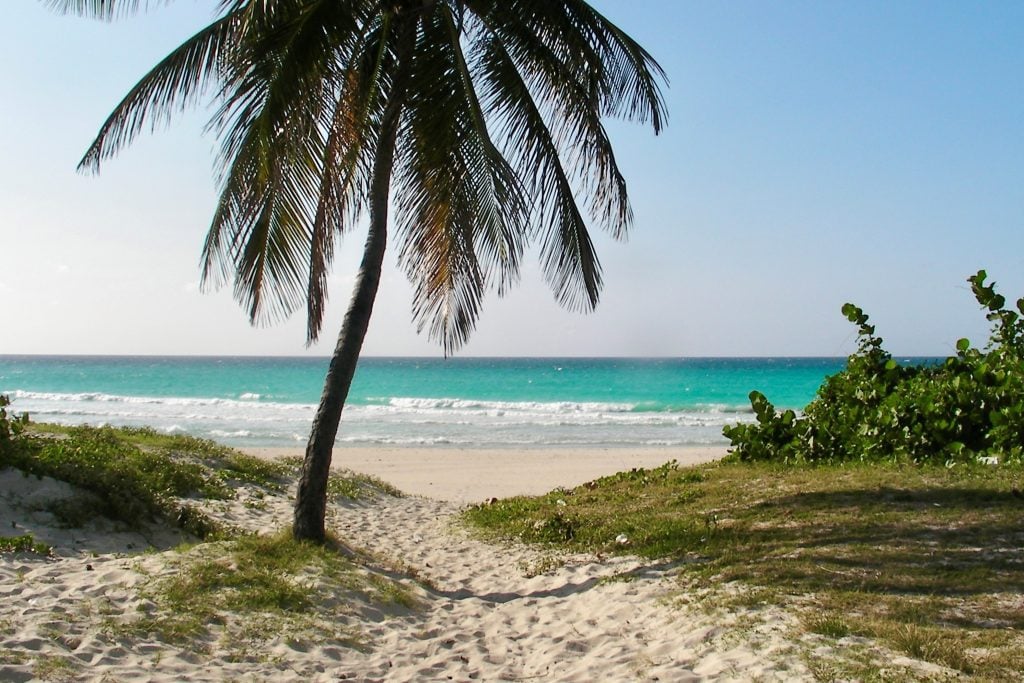
Submitted by Martha from May Cause Wanderlust
Cuba is teeming with culture, but it also has wonderful natural beauty and some stunning beaches — and the most spectacular beach is at Varadero, a peninsula in the north of Cuba.
Varadero beach is 20 km of fine white sand, lapped by bright turquoise water and lined by lush green coconut trees. It really is special. By far the best thing to do here is to relax in the warmth of the Caribbean sun, letting the sound of the waves soothe you as you sip on fresh coconut milk.
Best things to do in Varadero: If you like to be active, there are things to do in Varadero like scuba diving, kayaking, fishing and golf. There’s also an ecological park with some ancient cave drawings.
You can even visit the former homes of the American millionaires and gangsters, who once made Varadero their playground, before the revolution. Al Capone’s old house is now a restaurant!
How to get to Varadero: Varadero has its own international airport, so many people fly straight in. If you’re driving from Havana, Varadero is about a 2.5-hour drive east of there, along the Via Blanca.
Where to stay in Varadero: Varadero has been one of Cuba’s major tourist resort areas since the 1990s, and there are plenty of 4-star and 5-star hotels, mainly in the middle and eastern end of the peninsula, including several Iberostar hotels.
However, if you prefer to travel independently and/or you’re on a budget, there are plenty of lower-cost guesthouses on the western end of the peninsula.
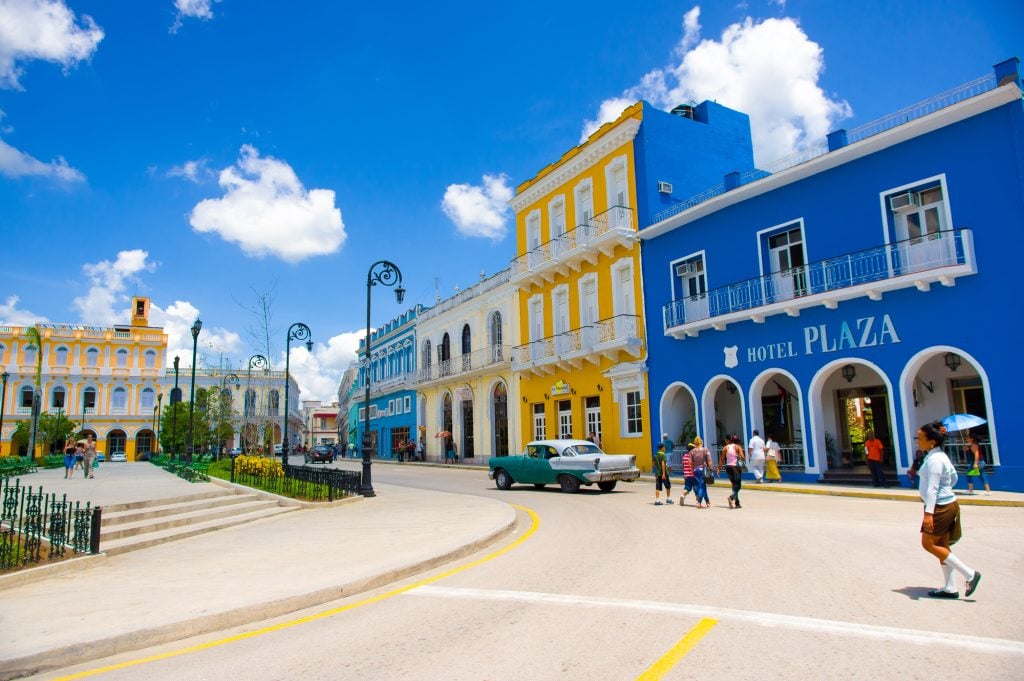
Sancti Spiritus
Submitted by Sarah Carter from Cuba’s Best
One of Cuba’s oldest cities, Sancti Spiritus is usually bypassed in favor of the more touristy Trinidad, but this lovely city is great for visiting if you’d like some time off the tourist trail. Although it’s not so far off the beaten track that you can’t easily get here on the Viazul Bus (which is your best option for transport).
There are colonial buildings, lovely squares, a medieval bridge that wouldn’t look out of place in rural England, and some fabulous spots to just chill out.
Puente Yayabo, the bridge in question is worth the walk and is best viewed from the Taberna Yayabo while clutching a refreshing drink. To get there, walk down Calle Llano the most atmospheric street in Sancti Spiritus. You’ll find the center of life in Sancti Spiritus in Plaza Serafin Sánchez where people-watching is the main thing to do.
Best things to do in Sancti Spiritus: For something unique, go to the Casa de La Guayabera. The Guayabera is a style of shirt, with a collar and pockets, worn primarily by farmers, but made popular by Fidel Castro.
Cubans claim that the shirt was invented here and so, the free museum displays a collection of the shirts previously worn by the famous people and you’ll get to see local ladies making more shirts too. Sancti Spiritus has the look and feel of Trinidad without the jiniteros. Come here for a little slice of regular Cuban life!
How to get to Sancti Spiritus: Sancti Spiritus can easily be reached on the Viazul Bus.
Where to stay in Sancti Spiritus: Stay at the Real Colonial Hostal for a great location close to the main square and super friendly staff.
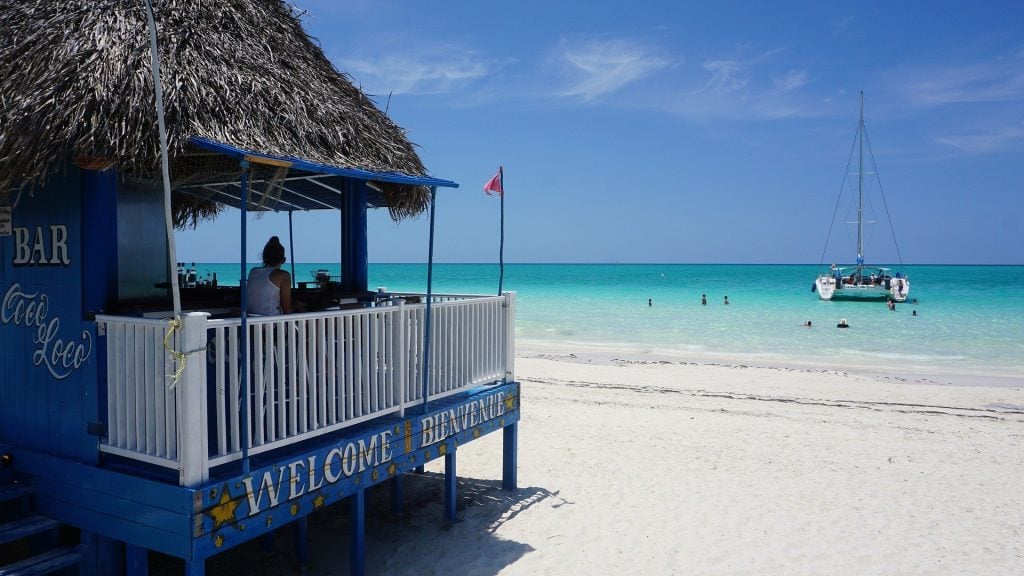
Submitted by Antoine and Marielle of Offbeat Escapades
Cayo Coco is one of Cuba’s most beautiful places, as well as one of the country’s more remote islands. Featuring turquoise waters and fine sands, it’s no wonder why Cayo Coco has starred in many movies and novels such as Hemingway’s Islands in the Stream and The Old Man and the Sea .
It is also a great place to go if you’re looking for a unique destination in Cuba that feels offbeat, isolated, and laidback.
Best things to do in Cayo Coco: Given Cayo Coco’s idyllic waters and landscapes, beaches are the main attraction and best thing to do on the island. The most well-known beach in Cayo Coco is Playa Los Flamencos. This stellar beach is over 5 kilometers long, facing the Atlantic Sea, and features pristine white sand.
If you’re looking for a quieter beach, you can also check out Playa Prohibida which is more suitable for hikers or those who want a more peaceful yet adventurous nature experience. Finally, Cayo Coco is also well-known for bird-watching activities.
How to get to Cayo Coco: Cayo Coco is connected to the mainland by a bridge so to get to the island, you can either drive, or if you prefer a more convenient option, you can arrive by airplane from one of the major airport hubs in the country.
Where to Stay in Cayo Coco: Once you arrive, you can stay in one of the island’s many luxurious resorts and hotels such as Melia Cayo Coco Hotel and Memories Caribe Beach Resort. These hotels offer a relaxing atmosphere with beachfront views.
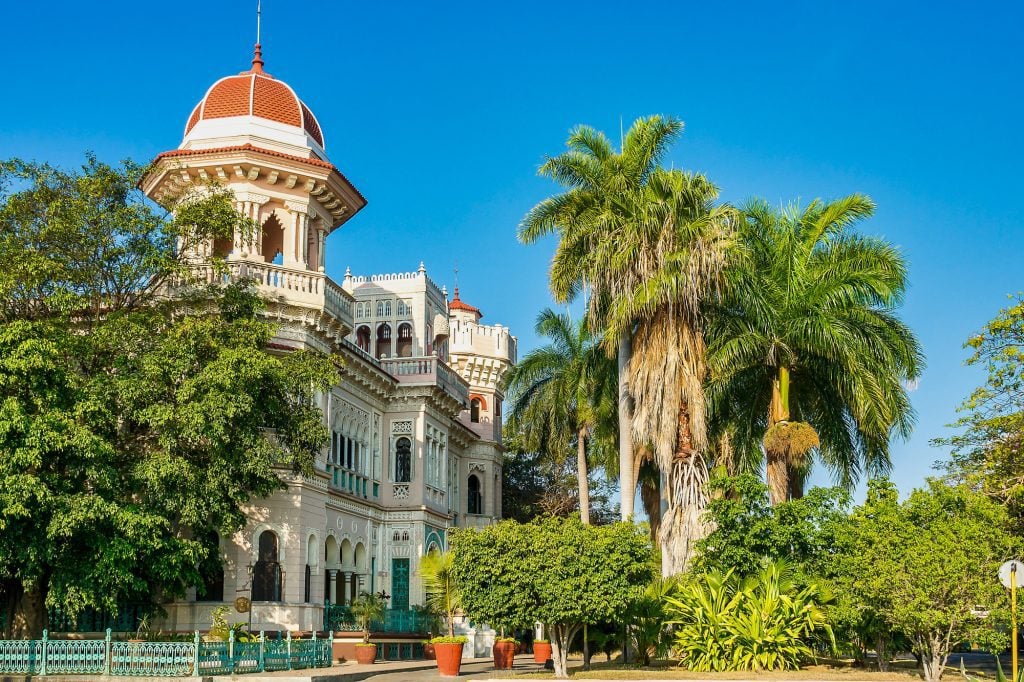
Submitted by Claire from Tales of a Backpacker
Cienfuegos itself is much like other Cuban cities, with colonial architecture and an attractive main square. In the evening, stroll down to Punta Gorda and enjoy the views of the sunset from the Malecón, or even better, from the terrace of the Palacio de Valle restaurant for 360-degree views.
Best things to do in Cienfuegos: You can visit El Castillo, a small fortress built to defend the city from pirates, but what really makes Cienfuegos worth adding to your Cuba itinerary is the wealth of things to do outside the city.
Laguna Guanaroca is a nature reserve where you can take a boat trip out to the lake to watch flamingos – a rare time to enjoy peace and tranquillity in Cuba! There is also a güira orchard here, a fruit that is used to make maracas, as well as other species of birds and trees to admire.
The beautiful waterfalls at El Nicho are another must-visit, an hour and 15-minute taxi ride away from the centre of Cienfuegos. Here you will find a series of natural pools and waterfalls for swimming and bathing – even better if you have a bottle of Havana Club chilling in the cool water.
How to get to Cienfuegos: Cienfuegos is on the road to Trinidad from Havana, about a 90-minute drive from Trinidad. There are buses that pass through Cienfuegos from Havana and Trinidad, or you can hire a collectivo taxi from Trinidad which can work out cheaper than the bus if you club together with other travelers.
Where to stay in Cienfuegos: Stay at one of the casas particulares in Cienfuegos, such as Casa Vista al Mar, which has a swimming pool and a seafront terrace. Be sure to eat at least one meal at Doña Nora, an excellent restaurant serving great value local specialities like ropa vieja .
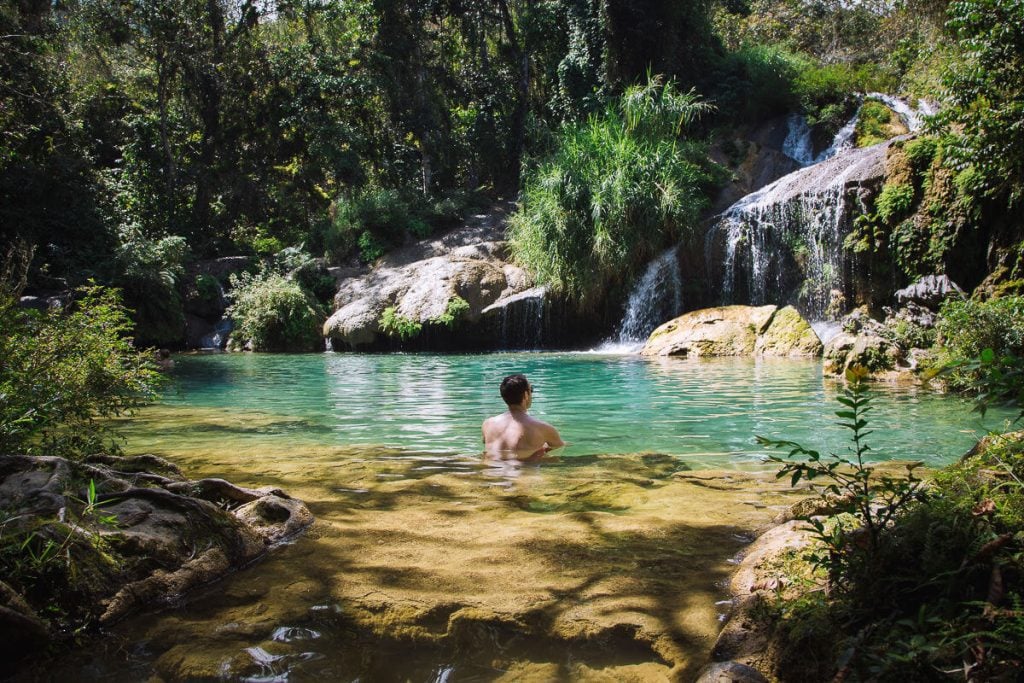
El Nicho
Submitted by Paul Healey from Anywhere We Roam
Topes de Collantes is a nature reserve stretching across the Escambray Mountains in the center of Cuba, close to Cienfuegos. The reserve is made up of 5 smaller parks and one of the most impressive is Parque El Nicho . Here palm trees clear intermittently to reveal canyon views and waterfalls drop into crystal clear natural swimming pools.
It’s a beautiful place to visit in Cuba to unwind in nature and enjoy scenic wild swimming.
Best things to do in El Nicho: A short hiking trail (1.5 kilometers) called El Reino de los Aguas includes the most scenic sections of El Nicho, including several waterfalls and lookout points. Surrounded by palm trees and framed by large rocks, this natural swimming spot at the base of the main waterfall is the perfect place to unwind after exploring the park.
There is a small fee to enter, however, at press time they are currently only accepting euros as payment. A tour guide is not necessary to visit the park, and you can easily stroll around on your own.
How to get to El Nicho: A popular way to get to El Nicho is to take a colectivo from Cienfuegos on the way through to Trinidad. The driver will look after your luggage in the car and wait for around two hours while you explore the park. Your host or hotel in Cienfuegos will be able to arrange transportation.
Where to stay in El Nicho: It’s best to stay in the nearby city of Cienfuegos and use it as a base for visiting El Nicho.
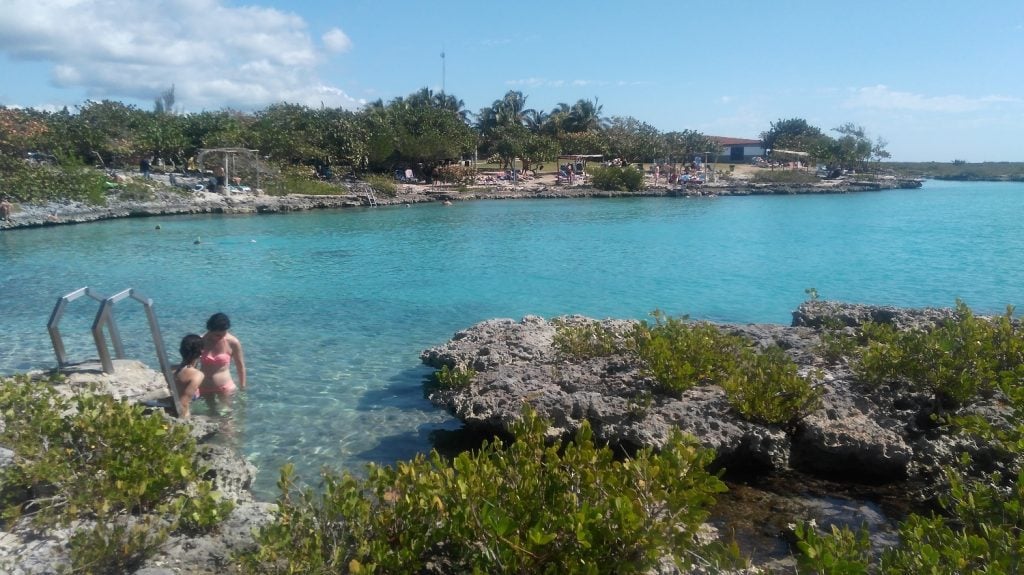
Playa Giron
Submitted by Raluca of Travel With A Spin
Playa Giron lies in the Bay of Pigs , around three hours away from Havana or Varadero by Viazul or a shared taxi. The region is pretty remote by Cuban standards.
But if you love white sand and clear turquoise waters with few tourists and no hotels, Playa Giron and Playa de los Cocos are perfect options for sunbathing and a quick swim.
Best things to do in Playa Giron: Besides sun and water, here one can enjoy snorkeling among fish and coral reefs. The best places to do so are Caleta Buena, Cueva dos Peces and Punta Perdiz.
While there’s a bus connecting these beaches, a popular option is to rent a bike and ride to one of them. The road is mostly flat and there aren’t many cars, making it an easy ride. Besides, the landscape is nice and you can stop wherever you want to admire it, talk to the fishermen or take some nice photos.
At Museo Girón you can learn everything about the historical conflict between Castro and the United States that led to the famous embargo. A little farther, Zapata Swamp is a tentative UNESCO World Heritage Site mostly unknown to foreigners. This incredible place boasts diverse landscapes, including a lagoon, Fidel’s crocodile farm, and underwater shipwrecks.
How to get to Playa Giron: Playa Giron can be accessed via the Viazul bus or a shared taxi. It’s located about a three-hour drive from Havana and Varadero.
Where to stay in Playa Giron: Playa Giron is a small village and although there’s a hotel, this is a great place for a more authentic experience. Most of the locals rent their spare rooms to tourists.
A great option is Hostal Sur Caribe, close to the center of the village. The owner is knowledgeable, prepares delicious breakfasts and can help guests rent bicycles.
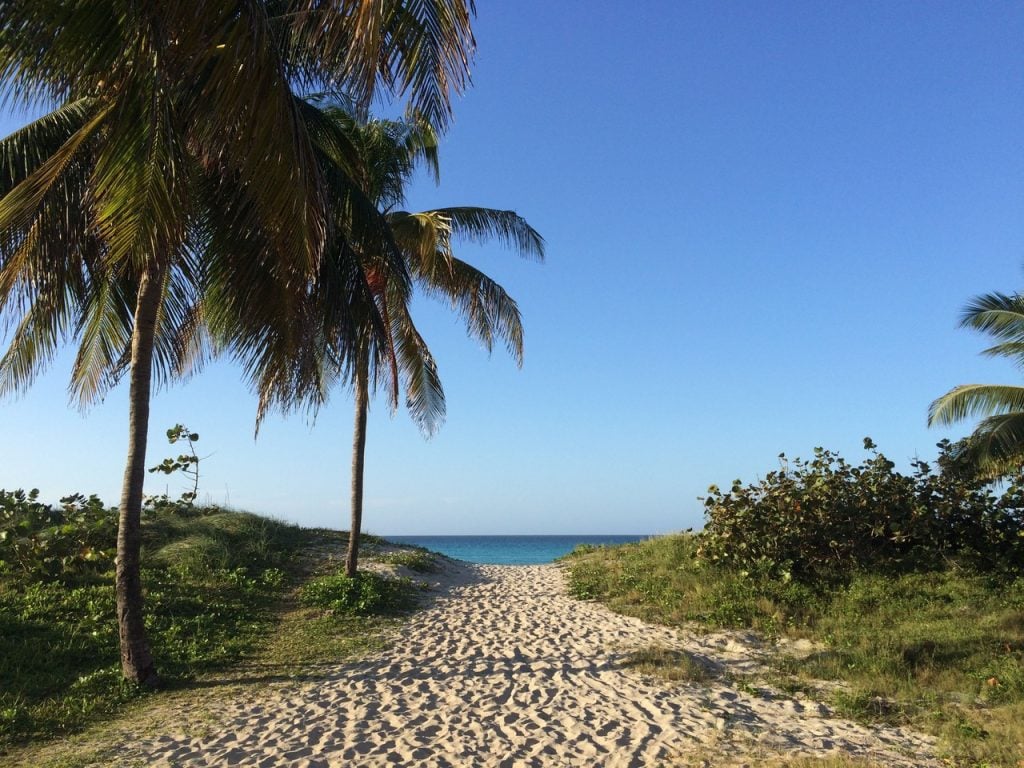
Submitted by Carley from Home to Havana
Located on the eastern end of Cuba, Baracoa is one of Cuba’s oldest and most historic cities. A perfect combination of history, culture, and natural beauty, this small town is a great addition to any Cuba itinerary.
In addition to having a charming historic center — one of Cuba’s most beautiful and laidback — Baracoa also has a number of beautiful white sand beaches to enjoy. Playa Maguana, just a 30-minute drive outside of Baracoa, is also a local favorite for its unspoiled beach and white sand.
Best things to do in Baracoa: If you’re a nature lover and looking to appreciate Cuba’s natural beauty beyond the beaches head to El Yunque to discover some of the best hiking in Cuba .
El Yunque — or “the anvil” in Spanish because of its distinct flat top shape — is one of the most unique mountains in the Caribbean, and was detailed in Christopher Columbus’s journals about his arrival in Cuba. Here you’ll find lush tropical forests and waterfalls, perfect for swimming in after the three-hour hike to the mountaintop.
How to get to Baracoa: Baracoa was once only accessible by sea until the creation of a highway after the Cuban Revolution in 1959, but today Baracoa is easily accessible via a two-hour drive from nearby Santiago de Cuba. You can also find direct flights from Havana into the small airport in Baracoa.
Where to stay in Baracoa: Stay at one of the many casas particulares for the best, most local experience at every price point.
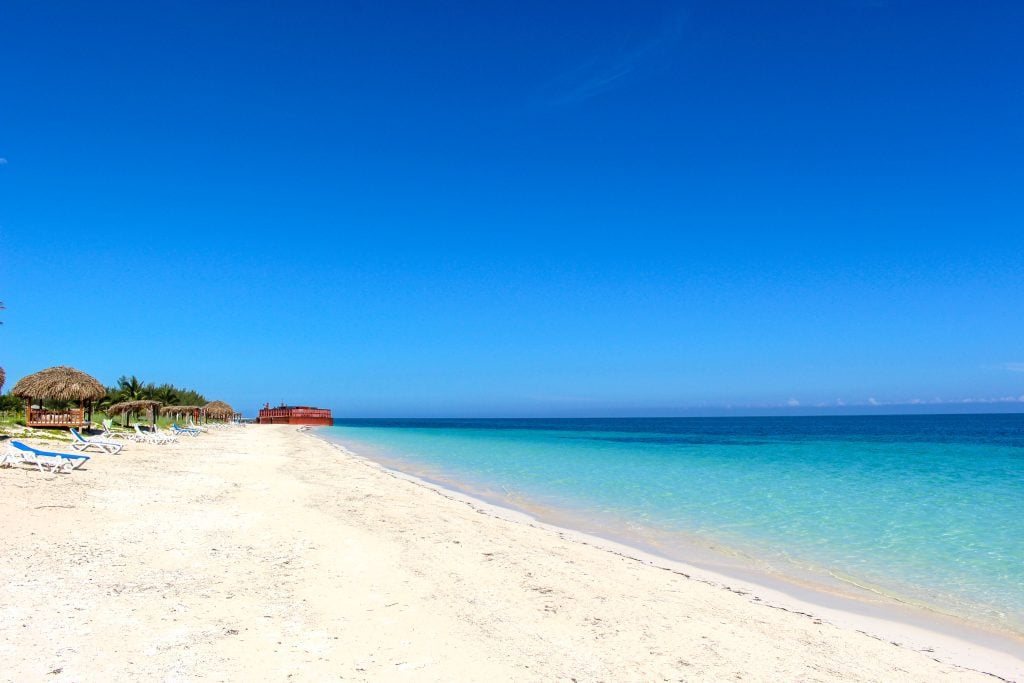
Cayo Levisa
Submitted by Alex Tiffany of Just Go Exploring
If you’re looking for a slice of paradise, minus the other tourists, be sure to include Cayo Levisa in your Cuba itinerary .
This beautiful little cay off the coast of Pinar del Rio province in western Cuba is a picture-perfect Caribbean island, straight out of a postcard. Most of the north shore is one long beach, with soft white sand and perfectly clear, clean turquoise water. On the south side you’ll find thick mangrove swamp teeming with birds and marine life.
The best thing about Cayo Levisa is how undeveloped it is. There is only one (small) hotel on the island, offering a few simple bungalow-style rooms. Other than that, the island is mostly natural and untouched.
Best things to do in Cayo Levisa: You can walk the length of Cayo Levisa and see very few people. Once you get away from the hotel, you basically have the whole place to yourself. Swim in the sea, sip a coconut in the shade, or just laze the day away in a hammock. Enjoy your own (almost) private island.
Several excellent diving spots are accessible from the north shore, with amazing visibility and loads of tropical fish and coral reefs. You can arrange diving trips from the hotel reception. Alternatively, the snorkeling is also pretty good just off the beach.
How to get to Cayo Levisa: To get to Cayo Levisa, you need to take a ferry from the village of Palma Rubia. The ferry runs twice a day, going out to the island at 10:00 AM and 6:00 PM, returning visitors to the mainland at 9:00 AM and 5:00 PM.
Palma Rubia itself is an easy 45-minute drive from Viñales. If you don’t have your own transport, either organize a tour from Viñales or take a taxi (but be sure to arrange a return pickup as you might struggle to flag a cab in Palma Rubia – there’s not much there).
Most people visit the island as part of a day trip from Viñales. However, if you have time, I recommend you stay here for at least a couple of nights. Cayo Levisa is even more magical and unspoiled once the day-trippers have left.
Where to stay in Cayo Levisa: There is only one (small) hotel on the island, offering a few simple bungalow-style rooms.
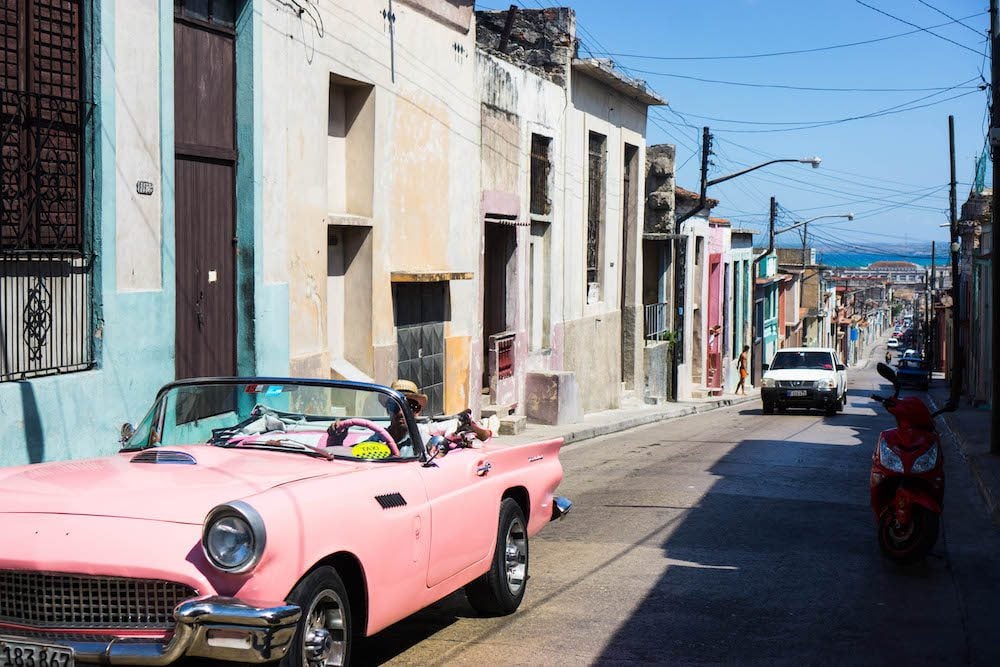
Contributed by Allison of Eternal Arrival
Matanzas is a cultural hub in Cuba, with lively streets and bustling plazas often bursting with live music. It’s a wonderful place to visit if you want to travel a little off the beaten path when preparing for your Cuba trip .
Located just a 55-mile drive from Havana, Matanzas makes a great day trip or is a good stop along the route between Havana and the resort city of Varadero, with its stunning beaches.
Best things to do in Matanzas: Matanzas is also home to several museums, including the Junco Palace Museum (which focuses on regional history), the Museo de Artes de Matanzas, as well as the Museo Farmaceutico, a unique pharmacy museum.
Be sure to check out the Castillo de San Severino, one of the largest fortresses in the Caribbean, which dates back to 1734. Don’t miss the Museum of the Slave Route located inside, which tells the story of the enslaved Africans who built the fortress.
Check out the areas around Plaza de la Vigia and Plaza de la Libertad to see street life in Cuba at its finest!
How to get to Matanzas: As with most travel in Cuba, arranging a private taxi is typically the most straightforward way to get between destinations, though it’s the most expensive. You can also take a taxi colectivo from Havana’s Central Park, or the Viazul bus. Depending on your transit mode, it’ll take between 1.5 and 2.5 hours between Havana and Matanzas.
Where to stay in Matanzas: As with most Cuban destinations, casa particulares are the way to go with accommodation. While I often relied on word-of-mouth referrals when choosing where to stay (Cubans network like no other!), you can also find cute accommodations on Airbnb, like this private room at Casa Manzaneda .
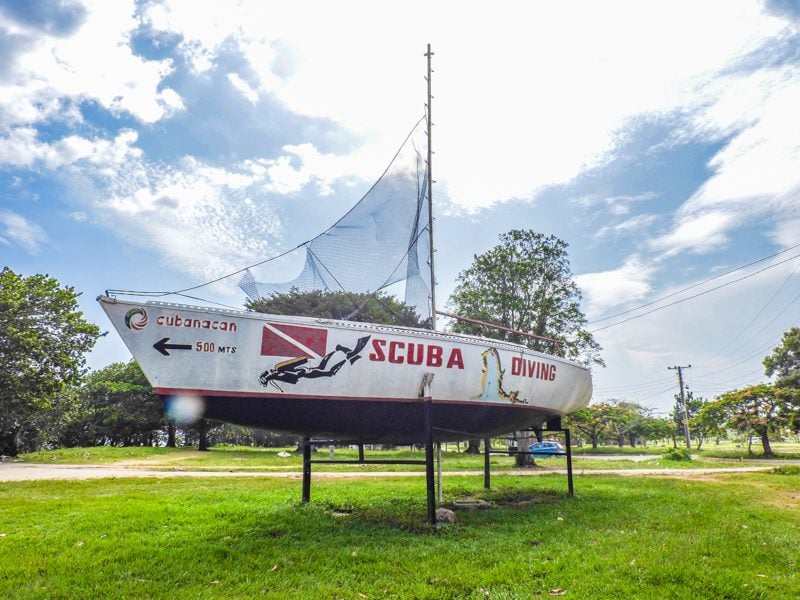
Playa Larga
Submitted by Gemma from Two Scots Abroad
Playa Larga in Cuba is a historically significant area located in the Bay of Pigs, known for the failed US invasion in 1961. Today, one of the best reasons to visit the Bay of Pigs in Cuba is to explore underwater via diving or snorkeling.
Best things to do in Playa Larga: As with most activities in Cuba, you can organize your dive the day before, and sometimes this is the only option. Aim to find a casa around the small town of Caleton or book a resort at Playa Larga or Girón, then ask your host or taxi collectivo driver to set up a session with a local dive school such as The Octopus Club.
A driver will pick you and the other divers up from casas and resorts and drop you off at the dive center where you will be kitted out with equipment. Next, you will hop back on the bus to the dive site, a quiet beach with stretches of calm waters.
After a quick introduction and dive instructions in Spanish with hand actions to translate, it is time to walk into the water. Yes, you physically walk into this dive site, which keeps costs down as there is no need for a boat.
Under the water, you will see lots of colorful fish and reefs, a truly magical and very affordable diving experience.
As always, if you don’t want to dive, you can snorkel instead!
How to get to Playa Larga: To get to the Playa Larga area, you can attempt the Viazul bus, but not all drivers will stop. To secure transport, book a taxi collectivo from Havana , Viñales or Trinidad, which will be pricier but offers a guarantee.
Where to stay in Playa Larga: For accommodation, consider a casa particular in Caleton or Playa Larga, which you can ask your taxi to find for you or book via Airbnb before you arrive.
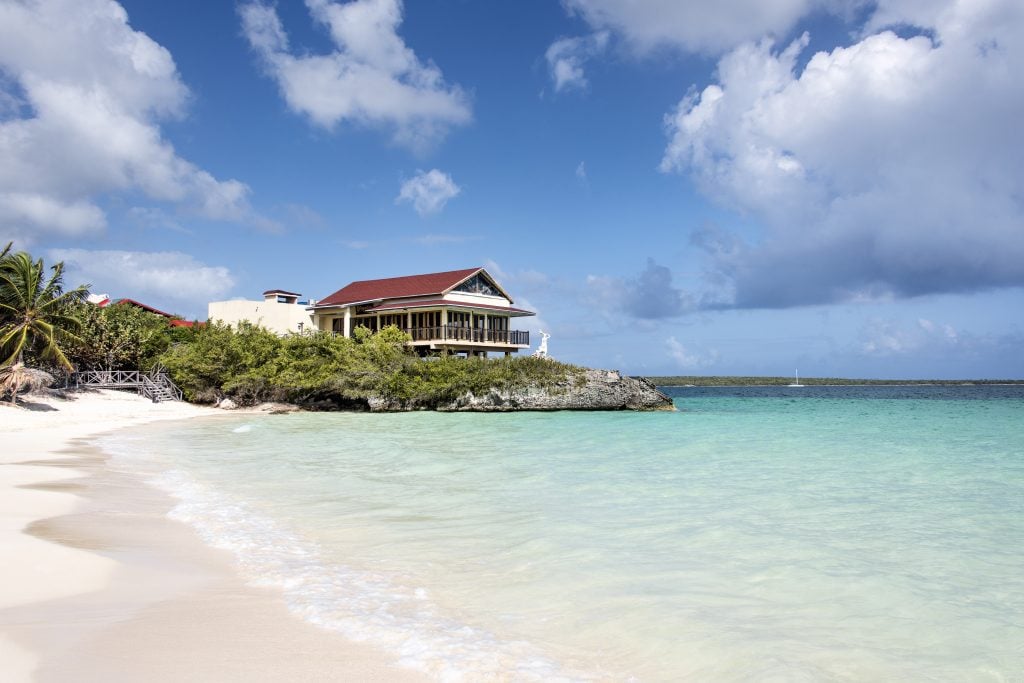
Playa Maria la Gorda
Submitted by Džangir Kolar from Dr Jam Travels
Playa Maria la Gorda is a beautiful Cuban beach located in the western province of Pinar del Rio on Guanahacabibes Peninsula on the far west point of the main island. When you get to this destination you will find yourself in a typical Caribbean paradise with palm trees, white sands, and turquoise clear water.
As this is a quintessential Cuban beach, Playa Maria la Gorda features activities like swimming, sunbathing, and partying with cheap rum drinks during the night.
Best things to do in Playa Maria la Gorda: The waters off Playa Maria la Gorda are full of marine life, so this place is perfect for snorkeling or diving. You can just swim off the coast or take a tour with the dive center. You can hire a guide and explore the area, maybe even see crocodiles or turtles nesting.
How to get to Playa Maria la Gorda: You will be arriving probably from the capital of the region Pinar del Rio in the east. With a car, it will take you around 2.5 hours. The bus will take an hour more. Coming from Viñales will take an extra half hour.
Where to stay in Playa Maria la Gorda: The only accommodation option here is Hotel Maria la Gorda.
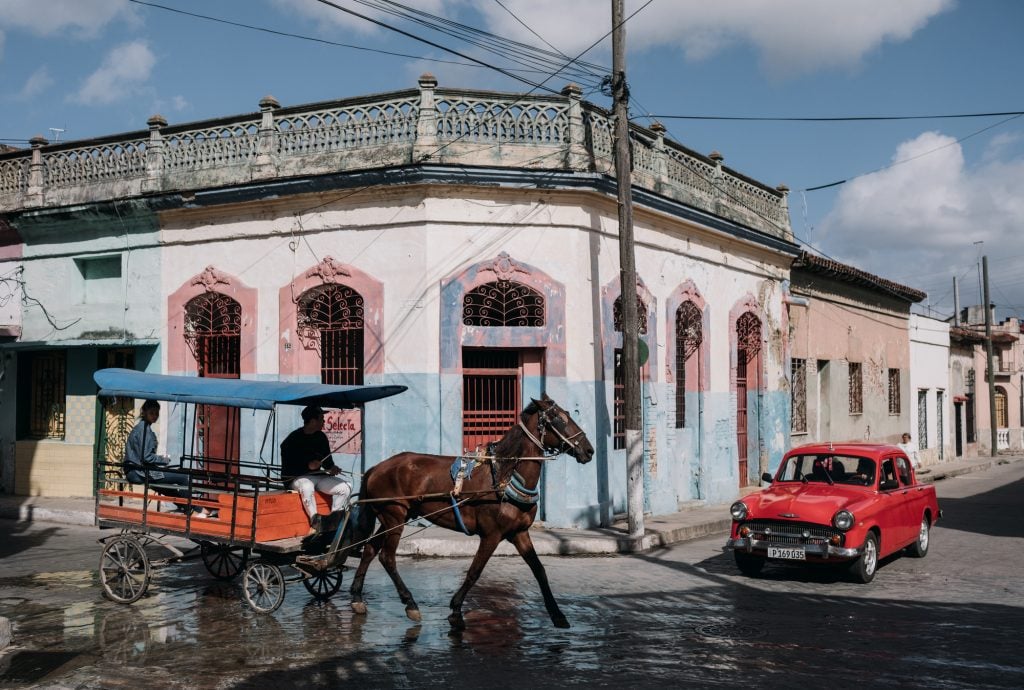
Santa Clara
Submitted by Dan from Layer Culture
When looking for the best places to visit in Cuba you are spoiled for choice — but one city that captivates many travelers is Santa Clara. Here there are two large monuments and a special museum commemorating Che Guevara, a must-see for people interested in Cuban history.
Best things to do in Santa Clara: Whilst exploring Santa Clara you can learn all about Che Guevara via the Mausoleum, a gigantic marble-made monument that was originally put up in 1988. The landmark, which is open year-round also has a small museum open 8:30 AM until 12:30 PM, but be aware that visitors are prohibited from carrying any personal items inside.
Other popular things to do in Santa Clara include hiking up Loma del Caprio and visiting Teatro la Caridad, one of the last colonial theaters that remain in Cuba. You also have Leoncio Vidal Park, which is a fantastic spot to sit and enjoy the Cuban lifestyle in the evenings. It’s not unusual to see locals dancing around here while enjoying rum cocktails.
How to get to Santa Clara: You can arrive to Santa Clara directly from Havana using the Viazul bus service which takes around 3-4 hours.
Where to stay in Santa Clara: By booking a stay at Hostal Vista al Mejunje you’ll feel right at home and the huge breakfast spread they put out in the mornings will leave your eyes wide open.
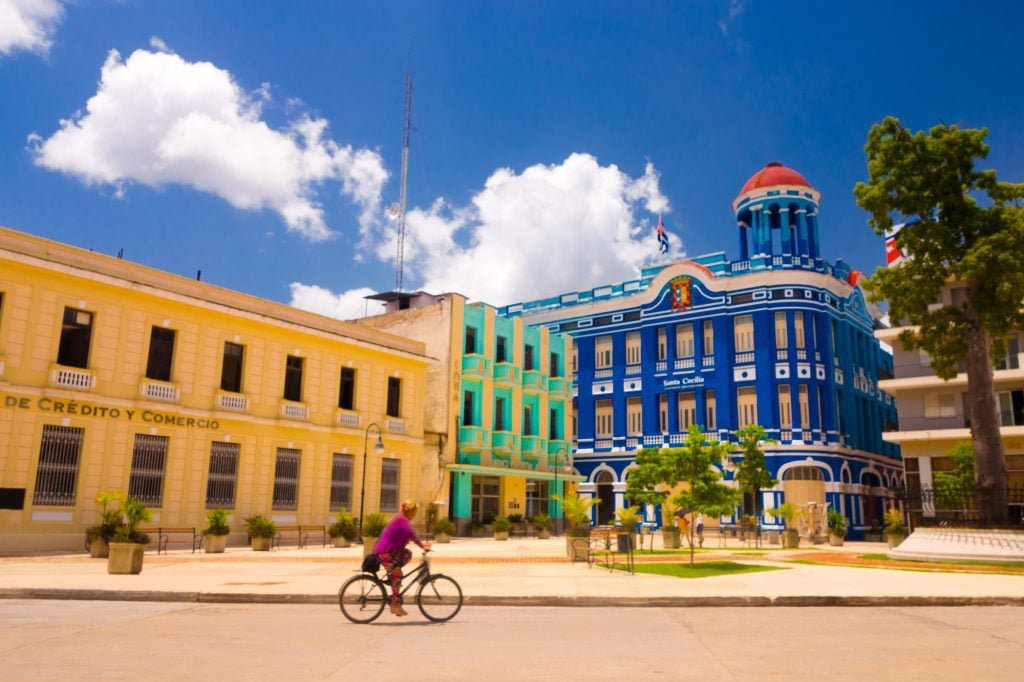
Submitted by Claudia Tavani from My Adventures Across The World
Lesser visited compared to many other places in Cuba, Camaguey can be puzzling for those who choose to visit. While it’s somewhat less touristy compared to Havana or Trinidad, Cuba’s third-largest city (located exactly at the center of the island) is actually packed with touts — locally known as jineteros — who will hardly leave a traveler alone.
That should not detract you from its beauty — in fact, the historic center of Camaguey is a UNESCO World Heritage Site. This was built in a medina style to keep pirates at bay. It means getting lost in Camaguey is almost a given; but on the other hand this will allow you to discover its many corners and hidden gems.
Best things to do in Camaguey: The city is packed with beautiful churches and squares. The ones you should not miss include the Sacred Heart of Jesus Cathedral, the 1748 church of Nuestra Señora de la Merced.
Parque Ignatio Agramonte is the prettiest square in town, so make sure not to miss that either — there’s also a museum by the same name which has an interesting display of antique furniture and an exhibit of 19th and 20th century Cuban art.
How to get to Camaguey: You can get to Camagüey by Viazul bus from Havana and Santiago — it’s the line that connects the two cities and goes on to Trinidad and Cienfuegos. The trip from Havana takes about 10 hours. It’s 6.5 hours from Santiago and five hours from Trinidad.
Where to stay in Camaguey: The best place to stay in Camagüey is the Casa de Caridad, a casa particular in Oscar Primelles 310A between Bartolomé Masò and Padre Olallo. It’s a large colonial house with antique furniture and a beautiful garden at the back.
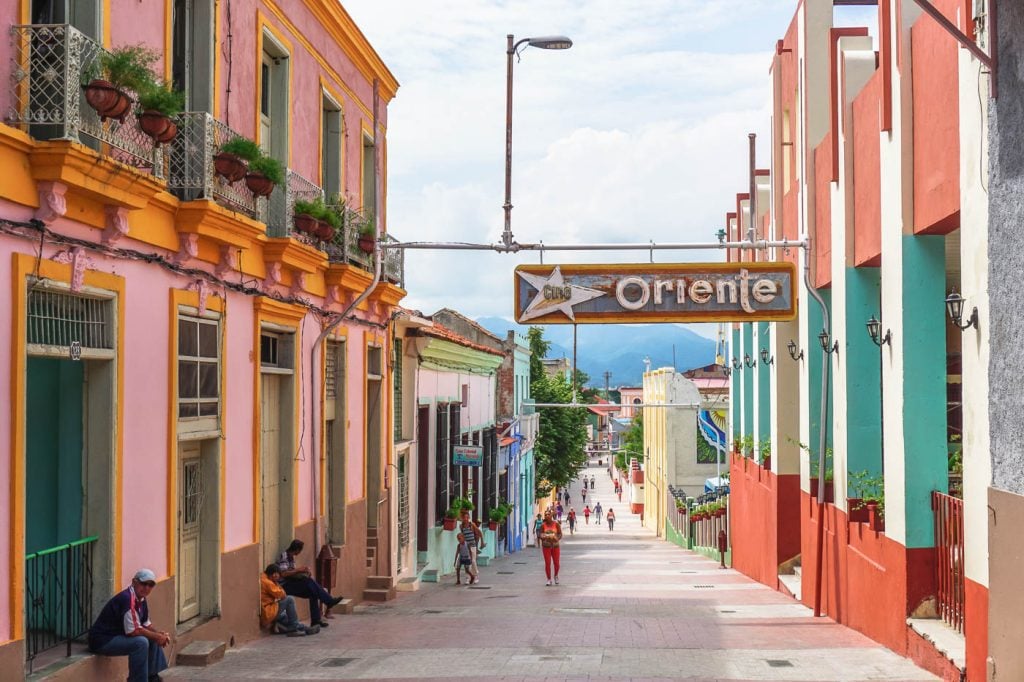
Santiago de Cuba
Submitted by Jordan from Hamburg and Beyond
The second-largest city in Cuba after Havana, Santiago de Cuba is bursting with bright colors and charming architecture . Santiago de Cuba played an important role in the Cuban Revolution, with the revolution beginning at the Moncada Barracks in the city in 1953 and ending with Fidel Castro declaring victory on the balcony of Santiago de Cuba’s city hall in 1959.
Best things to do in Santiago de Cuba: Besides roaming the colorful streets of Santiago de Cuba, center yourself around Céspedes Park – the main square of the city.
Make sure to visit the Cathedral Basilica of Our Lady of the Assumption. First constructed in 1514, this is considered a minor basilica by the Holy See and became a national monument in 1958.
Less than a block away from this cathedral are two great places to get drinks: the porch area of Hotel Casa Granda and Casa de La Trova. The former offers a perfect people-watching location and is beautifully designed, while the latter offers a more authentic experience with live music.
How to get to Santiago de Cuba: It’s easy to reach Santiago de Cuba via plane by flying into Antonio Maceo International Airport. As the city is on the opposite side of Cuba from Havana, driving to/from Santiago de Cuba is a bit more treacherous! The city’s airport has connections to Havana as well as other nearby islands and Paris, France.
Where to stay in Santiago de Cuba: Hotel Casa Granda is also the ideal place to stay due to its proximity to everything in the city and high-class amenities.
More on Cuba and the Caribbean:
Can Americans Travel to Cuba? Yes. Here’s How.
Puerto Rico Has it All
Why Travel to Antigua and Barbuda
A Weekend in St. Croix, US Virgin Islands
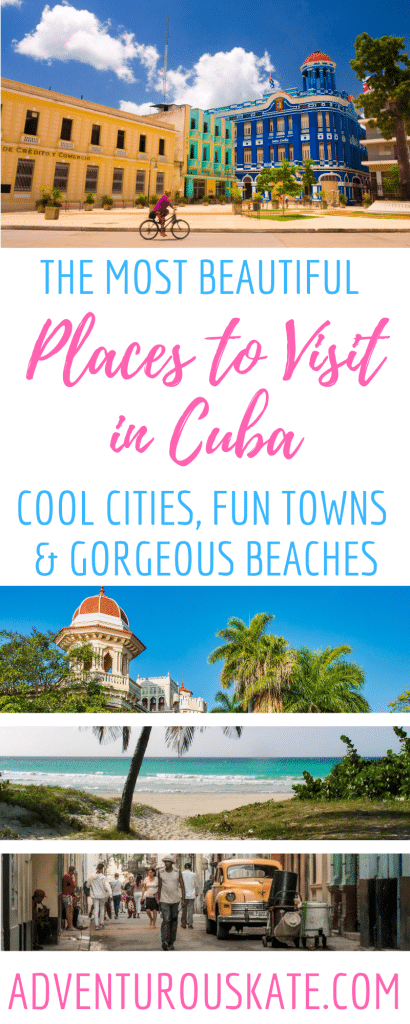
Have you been to Cuba? What’s your favorite place? Share away!
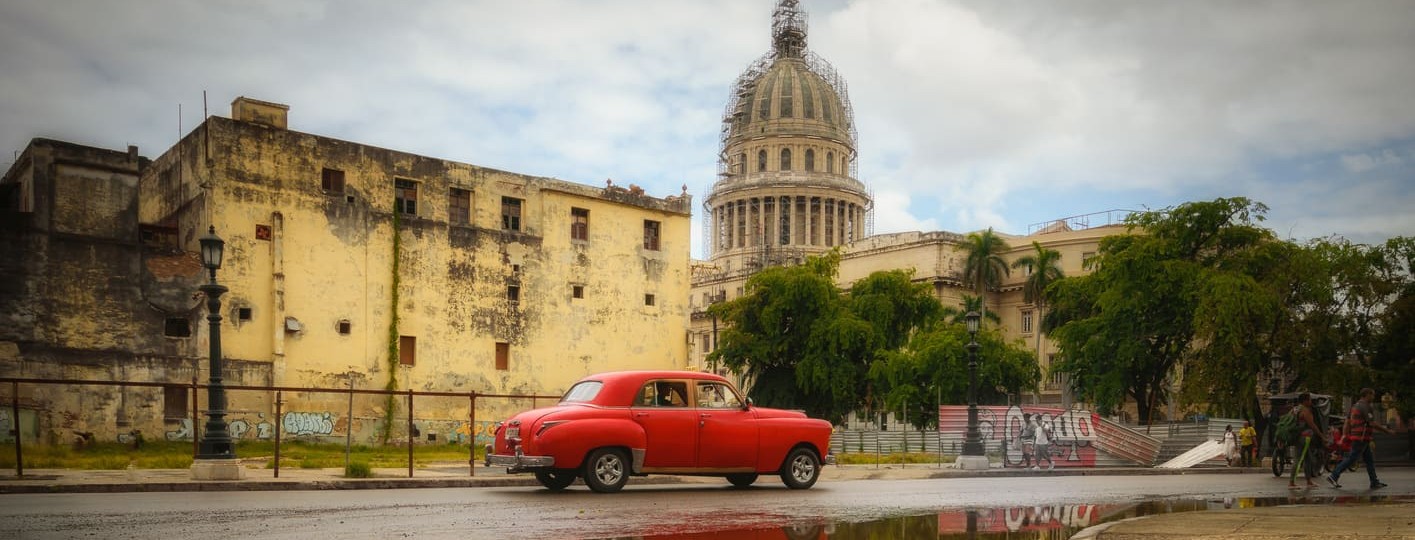
50 Best Things to Do in Cuba + MAP with Attractions
Home | Travel | The Caribbean | Cuba | 50 Best Things to Do in Cuba + MAP with Attractions
There are many things to do in Cuba , a country with a peculiar political history and some of the best beaches in the Caribbean.
The Cuban Revolution marked a turning point in the history of post-colonized Cuba. When the world began to globalize, a communist regime was established on the island, and it’s still present today despite international pressure and global blockades. However, that is exactly the reason why the Cuban tourist attractions are unique and very different from the ones you’ll find in other Caribbean islands.
The country is breathtaking, full of incredible landscapes and rich culture. Regardless of when you visit it, you will always find interesting activities in Cuba . Although you should go as soon as possible if you want to know the authentic Cuba because just two weeks after our 15-day trip to Cuba , Fidel Castro died and the island is changing very quickly since then.
To help you plan your trip, here are the 50 best places to visit in Cuba. Also, at the end of this article, you will find a map with all these tourist attractions of Cuba so you can make the most of your time. I also recommend you read our guide to planning a trip to Cuba .
1. Havana, the most important city to visit in Cuba
Havana is one of the most important places to visit in Cuba since it’s the capital of the country. It’s a city of contrasts, where greatness and decadence collide, and most people have a love/hate relationship with it.
As I explain in our guide on things to do in Havana , the capital city is divided into the neighborhoods of Old Havana, Central Havana , and Vedado . This is where you’ll find some of the most famous places in Cuba , such as the Malecón de La Habana, the Museum of the Revolution, and the Christ of Havana.
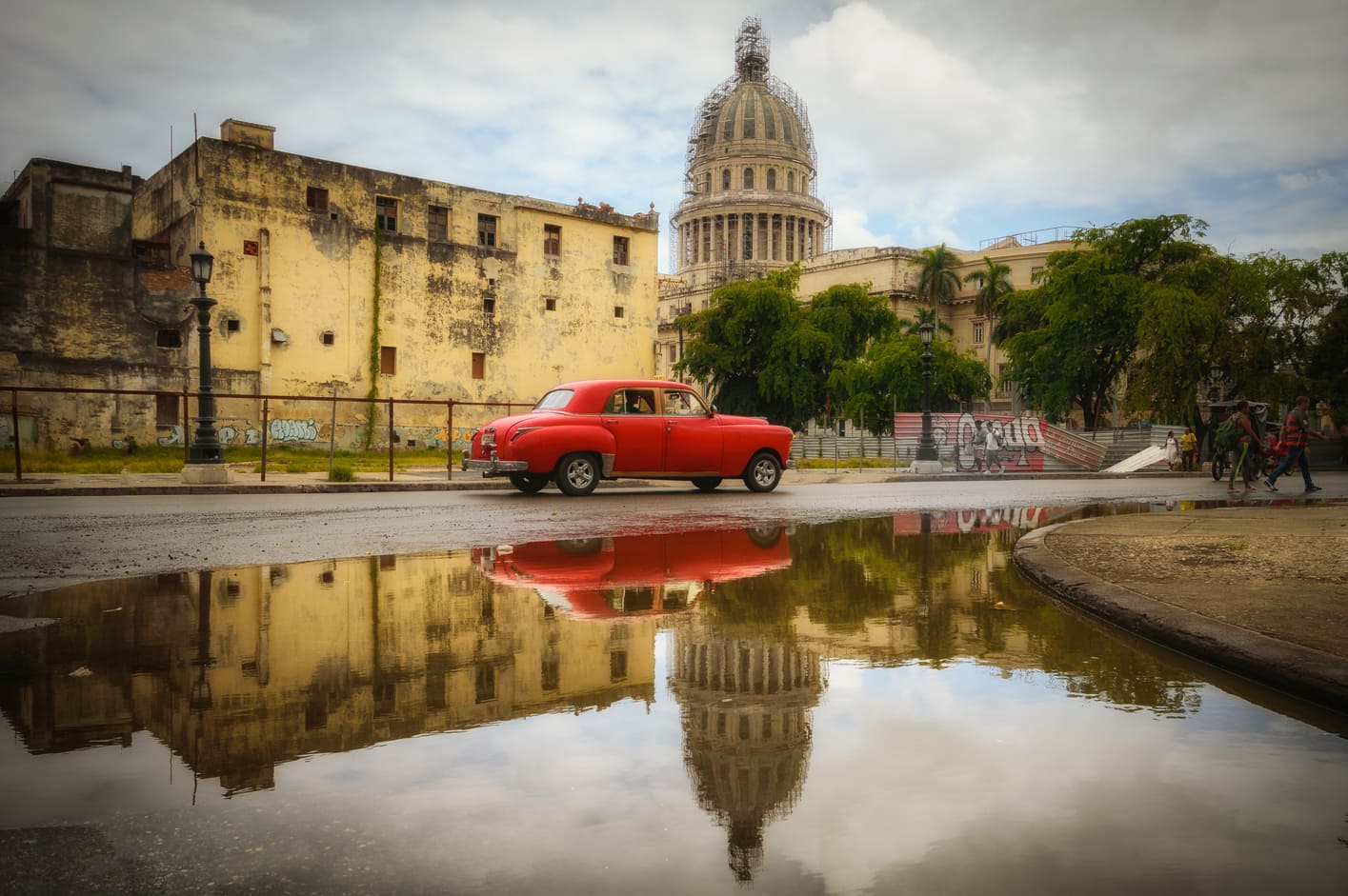
But this is just the beginning of what the city has to offer. If you visit, I recommend checking out our guide to learn more about Havana.
We flew into Havana airport and booked this transfer to the city center. As soon as we arrived, we left our bags at our hotel and took this free tour to see the main points of interest in Cuba . It’s a group tour, but if you prefer something more personal, you can take the tour with a local guide .
Two other free tours in Havana that I recommend are the colonial Havana tour and the night tour, where you can enjoy the city’s best nightlife.
2. Visit Viñales Valley, one of the best things to do in Cuba
The Viñales Valley is one of the most beautiful places to visit in Cuba . Not only is it one of the most popular natural areas in the country, but it’s a UNESCO World Heritage Site and National Monument.
What makes it a must-see in Cuba is the gorgeous natural landscape of native plants and mogotes . These rounded mountains are no taller than 100 feet, but they’re eye-catching. Since they formed from limestone, the Caribbean rains have gradually eroded them, creating caves. Some of these caverns have underground rivers, such as the Cueva del Indio , which I will tell you about later.
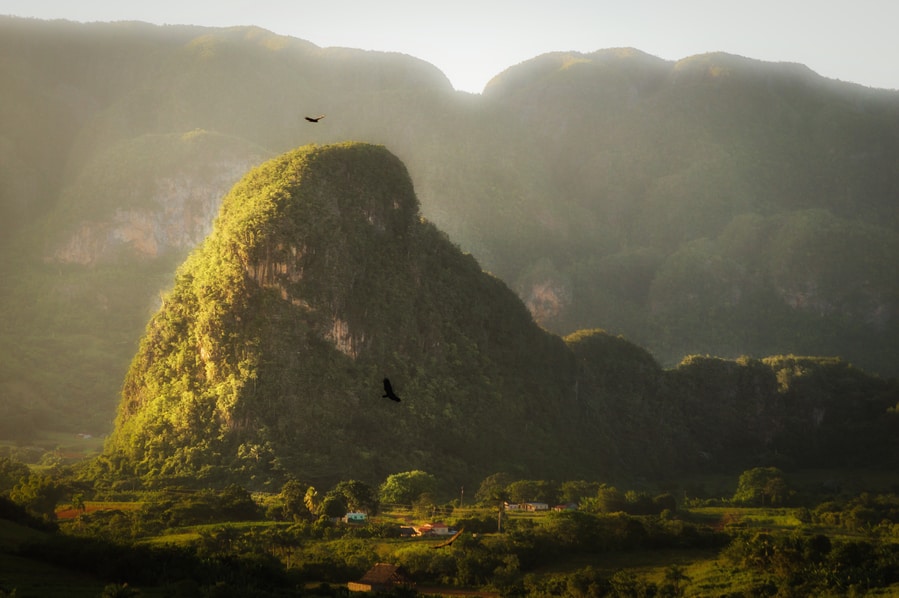
As I mentioned in our guide to the best things to do in Viñales , you cannot miss the area’s coffee and tobacco plantations. I also recommend standing in front of the Prehistory Mural, a large painting on the rock of the mogote Pita. However, this area of the island has much more to offer.
We loved this bike tour , but be prepared to end up sore because the slopes are killer. If you want to save yourself the effort, this electric bike tour may be a good option.
I recommend spending 3 or 4 days in this area, although if you don’t have time, you can take this 1-day tour from Havana to see the most important things.
3. Varadero, one of the most famous beaches in Cuba
Varadero boasts some of the most beautiful beaches, so this is one of the top areas to visit in Cuba . Since it’s so popular, Varadero has several luxury resorts. If you want to spend a few days in total comfort, this is the place to go.
The town has over 13 miles of pristine white sand beaches and crystal-clear turquoise waters. Here, you can disconnect from it all and spend your time swimming, sunbathing, snorkeling, or water skiing.
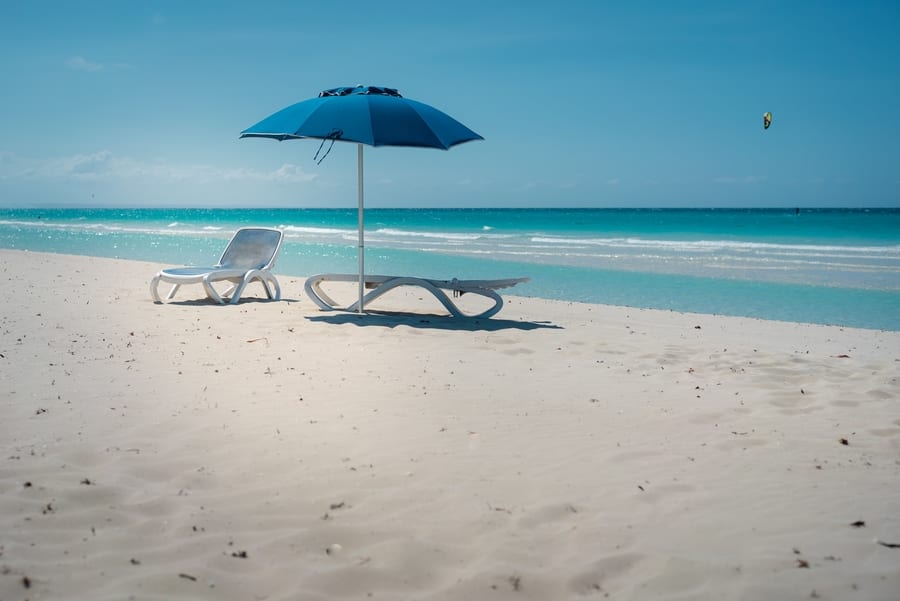
This tourist attraction in Cuba also has several impressive caves, such as the Saturno Cave . Stepping inside this archaeological structure, you’ll be amazed at the rock formations. Best of all, it has a natural pool inside where you can enjoy a dip.
So, if you’re looking for fun things to do in Cuba , Varadero is a place you must visit. If you don’t have much time, you can book this excursion from Havana to see Varadero in one day.
4. Trinidad, a must-visit in Cuba
Trinidad is one of the best cities to visit in Cuba . It’s in the center of the island and is an area of great cultural and historical significance.
As I mentioned in our guide to the best things to do in Trinidad, Cuba , this city still has remnants from the Spanish colonial era. It’s a lovely place, and I encourage you to get lost among its cobblestone streets and colorful buildings. Walk down Real de Jigüe and Amargura streets, and you’ll feel like you’re stepping through a postcard.
I also recommend visiting Plaza Mayor , where you can have a canchánchara , a traditional Cuban cocktail. Another must-visit in Cuba is Casa de la Trova , in Trinidad, where you can enjoy the nightlife and listen to authentic Cuban music.
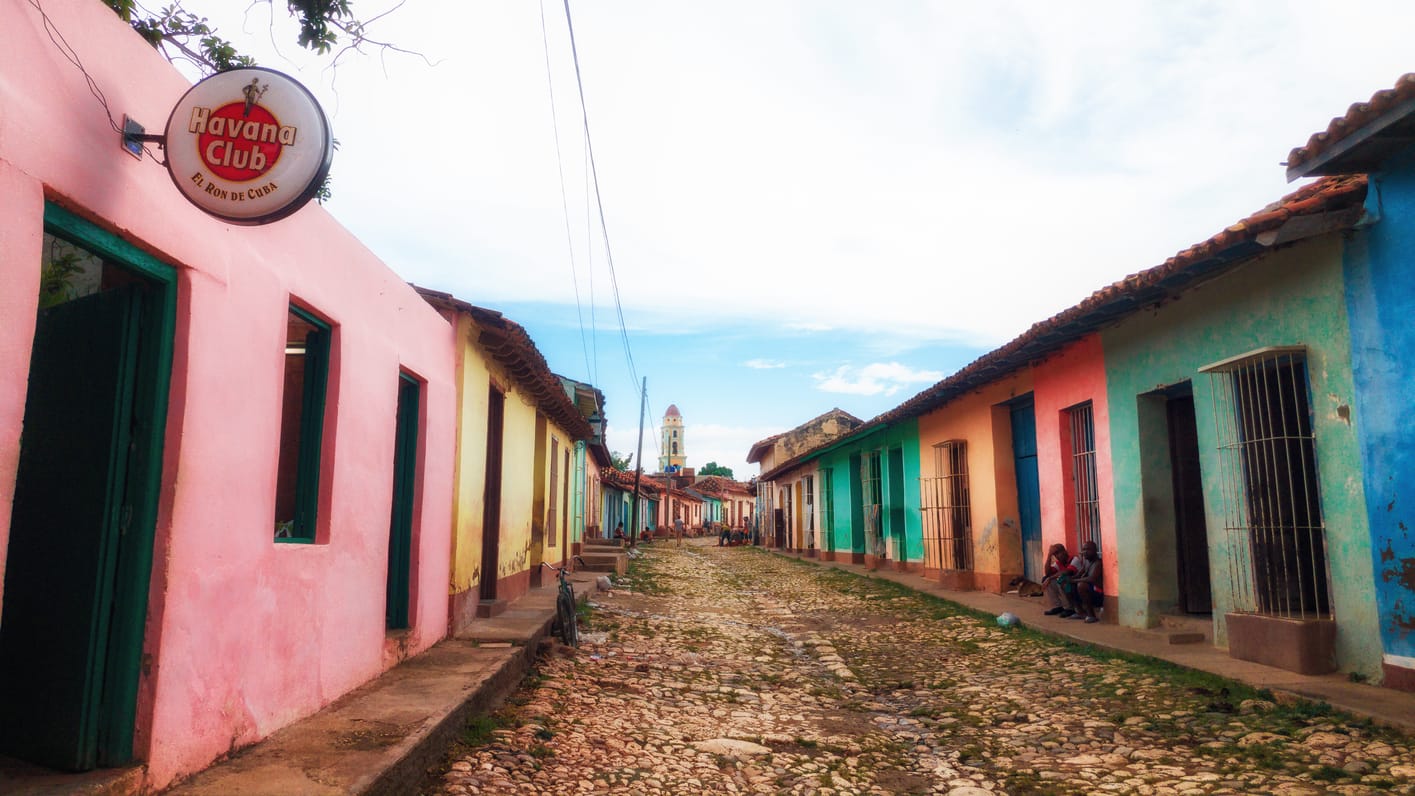
Trinidad is also home to two interesting museums: The Municipal Historical Museum and the National Museum of the Fight Against Bandits . The first has a rooftop terrace where you can get amazing views of the city, while the second has artifacts related to Cuban independence.
Another cool place to go is the Church of the Holy Trinity, one of the largest churches in the country.
If you want to discover everything about this beautiful city, I recommend this free tour to see some of the most famous landmarks in Cuba .
5. Cienfuegos, one of the most beautiful places to visit in cuba
Cienfuegos , also known as the Pearl of the South, is one of the top cities to visit in Cuba . It’s on the way to Trinidad from Havana, so it’s a convenient place to spend a day.
Located on the shores of the bay of Cienfuegos, this town stands out for its buildings from the colonial era. The historical urban center of Cienfuegos is also a UNESCO World Heritage Site.
Some other impressive places in Cienfuegos include the José Martí Park, Ferrer Palace , the Benjamin Duarte Provincial House of Culture , and the Purísima Concepción Cathedral .
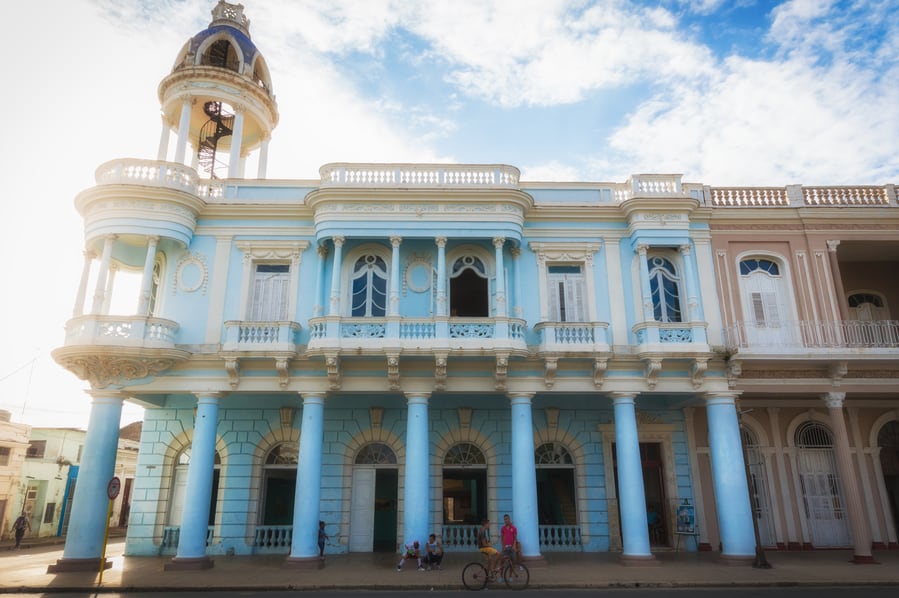
5. Cienfuegos, another must-visit in Cuba
Another cool activity in Cuba is walking along the Paseo del Prado , the largest promenade on the island. It eventually leads to the Malecón de Cienfuegos in Punta Gorda. As I mentioned in our guide with the best things to do in Cienfuegos , this is where you can enjoy one of the best sunsets in the country.
6. Santa Clara and the Che Guevara mausoleum
Che Guevara is one of the most important figures in the country’s history, so visiting the Che Guevara Mausoleum is one of the most important things to do in Cuba . You can find it in Santa Clara , a central city on the island.
Santa Clara stands out for its historical monuments that reflect the independence revolution. The mausoleum also includes the ashes of Guevara’s 16 comrades who were killed during the Bolivia campaign in 1967. The monument on the mausoleum grounds, at over 20 feet tall, is also worth seeing.
In this same area, there is a museum dedicated to the life of Guevara and an “eternal flame” that Fidel Castro lit in his memory.
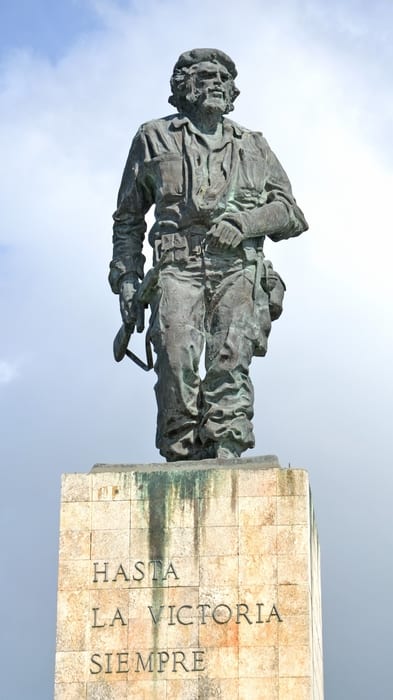
6. Santa Clara and the Mausoleum of Che Guevara, an important place to see in Cuba
While you’re in Santa Clara, take the time to visit some other tourist attractions in Cuba , like the Leoncio Vidal Park and the Armored Train Monument . The latter commemorates the end of the Batista dictatorship and the start of the Castro socialist regime.
Unfortunately, we had to cancel our excursion to Santa Clara due to an amoeba infection, which I mentioned in our article on travel insurance for Cuba . Luckily, it was nothing serious, but it’s a good reminder that travel insurance in Cuba is a necessity.
5% OFF your travel insurance
7. Visit Santiago de Cuba, the 2nd largest city in Cuba
Visiting Santiago de Cuba is another great thing to do in Cuba. While it’s the second-largest city in the country, it’s on the southern end of the island, while Havana is on the northern end. So, if you’re going to spend less than two weeks in Cuba, you’ll have to decide between visiting Havana (and the Northern half of the island) or Santiago (and the Southern half).
We opted for Havana, but we plan to come back so we can discover all that Santiago de Cuba has to offer. This includes beautiful colonial architecture, a rich revolutionary history, and several famous landmarks in Cuba .
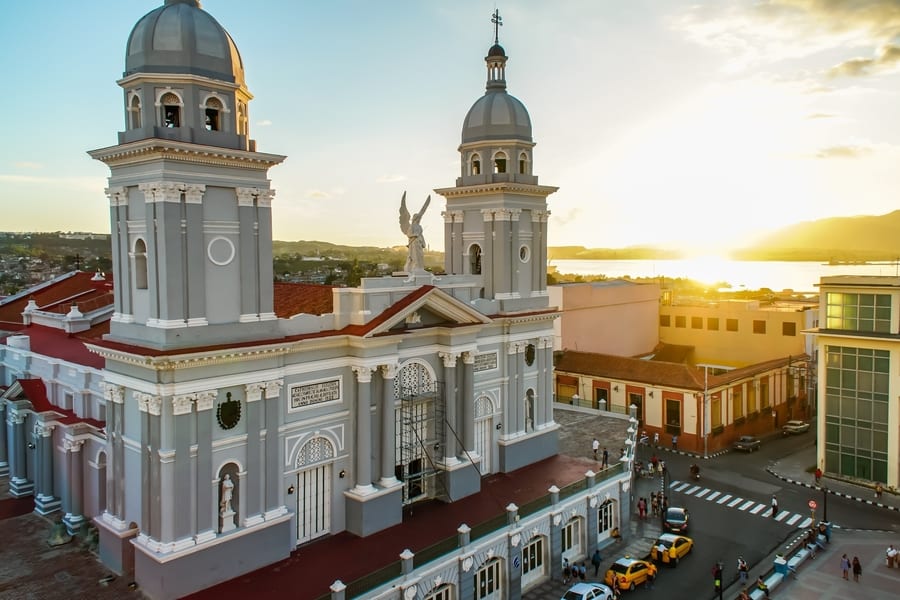
7. Visit Santiago de Cuba, another prominent city to visit in Cuba
Enramada Street is the main artery of the city and where you can access the main tourist attractions. I recommend spending time in the old town, visiting Parque Céspedes and the Cathedral of Our Lady of the Assumption .
Santiago de Cuba also has one of the most famous boardwalks in Cuba, where you can mingle with the locals. This city is also steeped in history, so stop by the Moncada Barracks and Museum, Plaza Marte , and the Santa Ifigenia Cemetery . This is where Fidel Castro’s ashes and the body of José Martí are buried.
8. Ride in a classic car, something to do in Cuba with family
One of the most typical things to do in Cuba is to take a ride in a classic car . In Havana, these types of tours are all over, although they can be a bit pricey. We opted for this tour and explored the city in a classic 1950s automobile.
Our driver, Armando, asked us which parts of the city we’d already visited, so he could take us to new places. Along the way, he told us lots of anecdotes that we wouldn’t have heard if we didn’t do this tour. Also, he let us stop a few times so we could take photos. At the end of our tour, we asked Armando to drop us off at a different spot than the pick-up location, and he happily obliged.
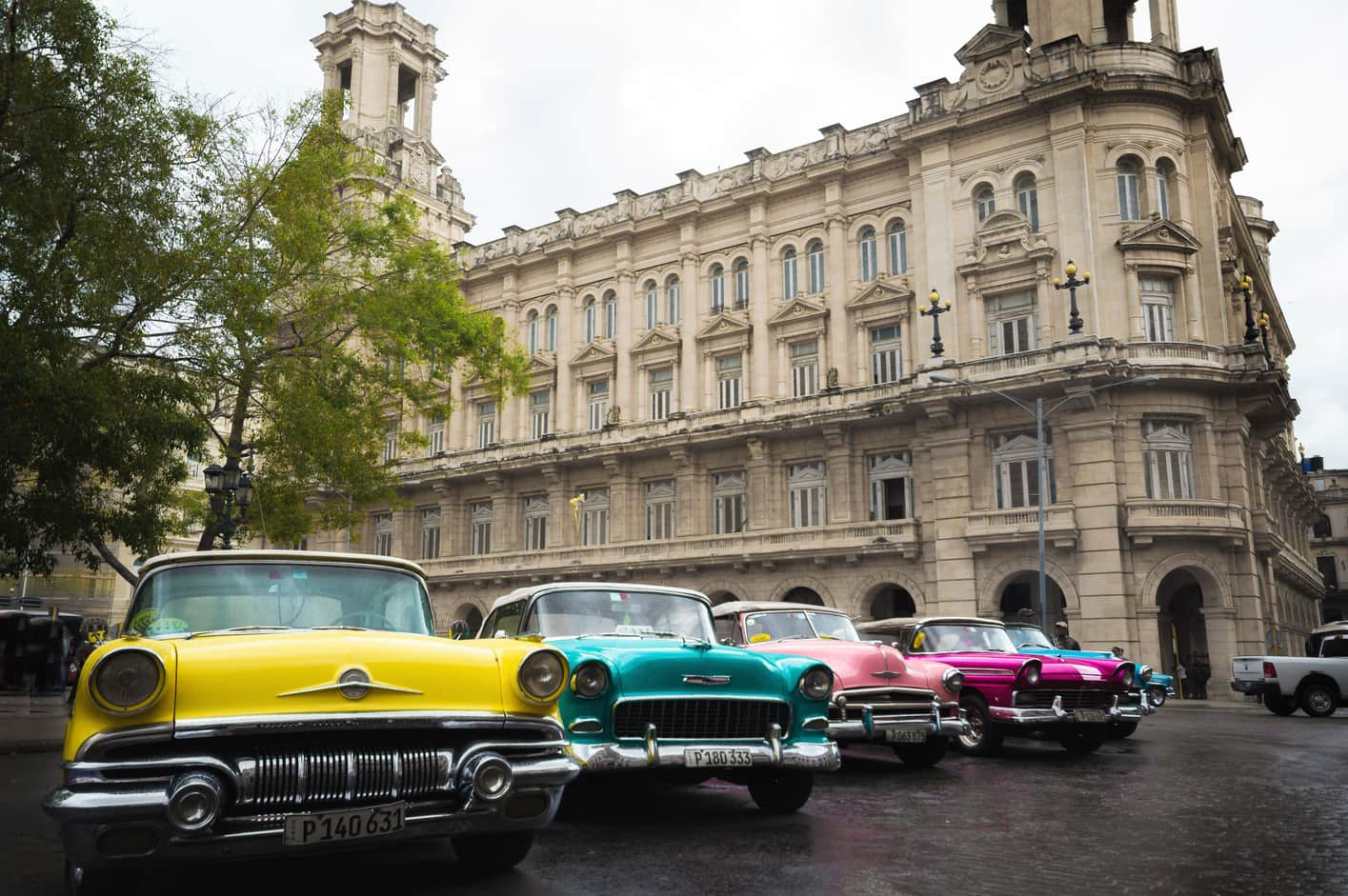
If you want to explore Cuba in style, this excursion is the way to go. You can see iconic sites like the Plaza de la Revolución, Almendares Park, and the Malecón promenade . Plus, riding along in a classic car makes you feel fully immersed in the city’s vibrant atmosphere.
9. Have a mojito in La Bodeguita del Medio, another fun thing to do in Cuba
Another fun thing to do in Cuba is to have a mojito at La Bodeguita del Medio . Although a few replicas have cropped up on the island (and around the world), the original La Bodeguita del Medio is in Old Havana.
The restaurant has long been a meeting place for writers, artists, and politicians. When you visit, you will find out that some personalities have left their sign on the walls, including Ernest Hemingway and Pablo Neruda.

9. Have a mojito in La Bodeguita del Medio, one of the best things to do in Cuba
This is also the best place in Cuba to drink a Cuban mojito . Made with rum, lime, and mint, it’s the traditional cocktail of Havana, and a great way to end your day.
That said, La Bodeguita del Medio is one of the most popular tourist attractions in Cuba ‘s capital city. So, if you want a relaxing evening, you won’t find it here! We went very early so we could avoid the crowds, which worked out quite well. Plus, there was live music, and the drinks weren’t that expensive (about 5 CUC).
10. Buena Vista Social Club, the best place to enjoy Cuban music
Buenavista Social Club is one of the best places to visit in Cuba if you want to enjoy authentic Cuban music. Located in Havana, it’s one of the most popular clubs on the island and the perfect way to enjoy the nightlife.
Like all the clubs in the country, it closed its doors during the 1959 revolution and the rise of the Castro regime. Fortunately, it was able to reopen in the 1990s, and since then, it’s been a must-see in Cuba .
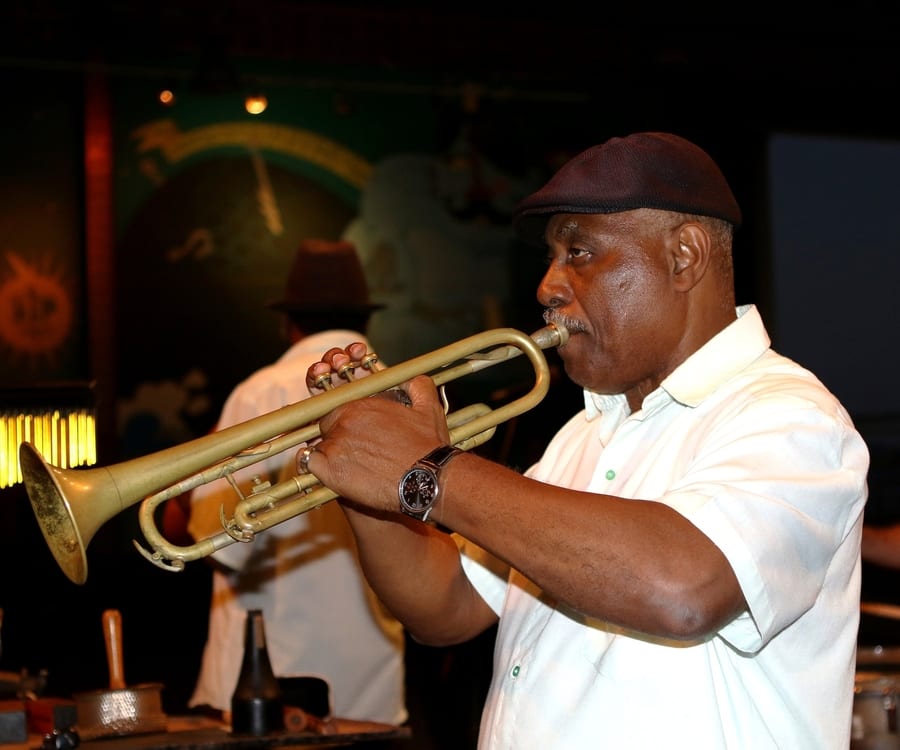
Here, you can watch the Grammy-winning Buena Vista Social Club perform live, as well as the Afro-Cuban All-Stars. These are two of the best Latin bands in the world, so if you’re looking for entertainment in Cuba , look no further.
Since this is a popular club, I suggest booking your ticket in advance. This entry ticket includes a three-course dinner and drinks prior to the performance.
11. Tropicana Cabaret, something fun to do in Cuba at night
The Tropicana Cabaret in Havana is one of the most popular cabarets in the country and even won the 5 Stars Diamond for the Best Cabaret in the Americas. If you’re wondering what to do in Cuba at night , Tropicana has all the fun, music, and color you could want.
What makes this cabaret unique is that it’s outdoors in a tropical garden. The stage is surrounded by beautiful palm trees, creating a fitting atmosphere. Tropicana dates to 1939, and world-renown artists have graced its stage over the years.
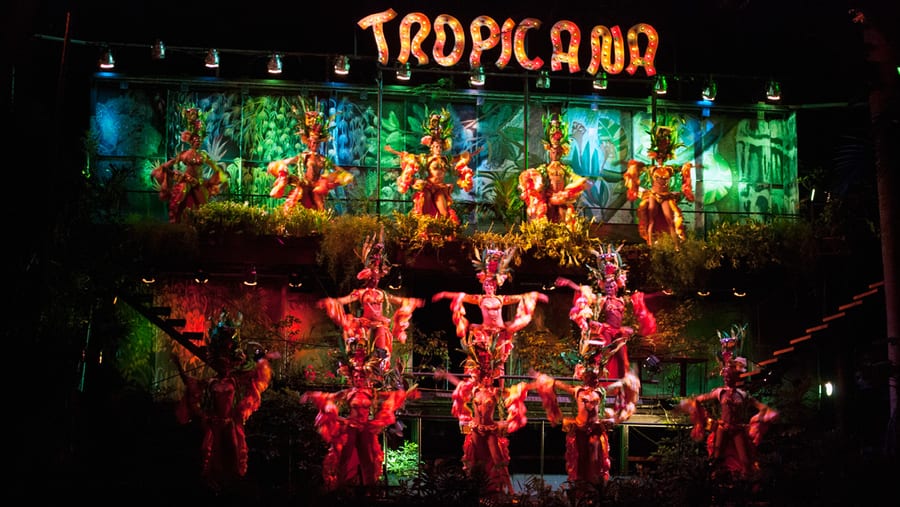
Taking in a show at the Tropicana is one of the most exciting things to do in Cuba . While you sip a mojito, you can watch dozens of performers take the stage. It’s an incredible display of movement, dance, music, and colorful costumes.
The cabaret is very popular, so I recommend booking your ticket in advance. Also, consider the dress code before you go. Men should wear long pants, closed-toe shoes, and a polo shirt or button-down. Women should also dress semi-formally and should only bring small bags. Otherwise, they’ll have to leave it at the entrance.
12. Topes de Collantes, one of the best hikes in Cuba
If you like hiking, one of the places you can visit in Cuba is the Topes de Collantes natural park. It’s just a few miles from Trinidad, so you can take advantage of your visit by stopping here along the way.
The park is in the Sierra del Escambray mountain range, a lush area that’s home to nearly 50% of Cuba’s native species. It’s also full of natural wonders, such as the 210-foot Caburní Falls , the highest waterfall in the Caribbean.
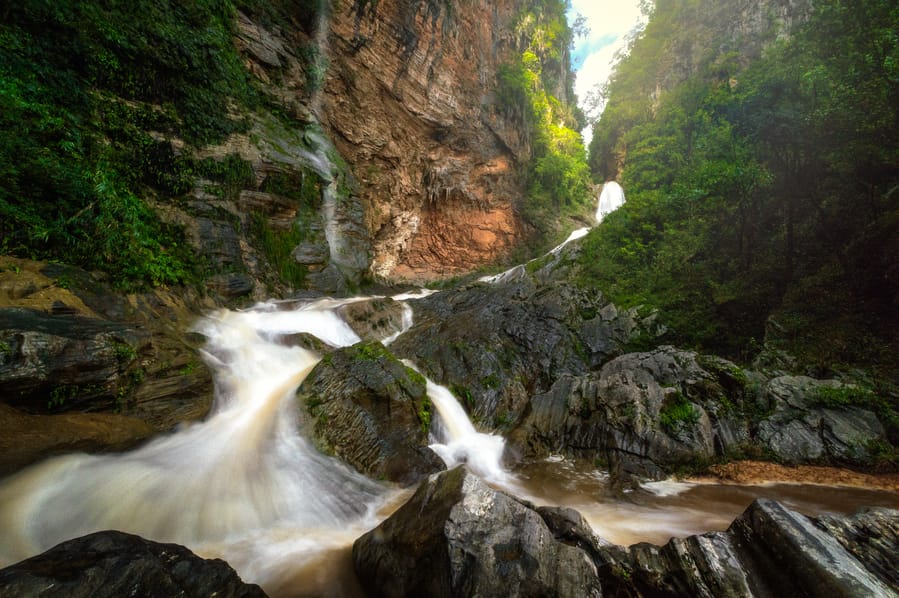
12. Topes de Collantes, one of the best places to go hiking in Cuba
We loved this place, and we were even able to see and photograph several small Cuban hummingbirds hovering around the flowers next to the waterfall. Getting there was a bit difficult because of the rain, but it was more than worth it. If you visit, just bring the right footwear!
While you’re here, check out some other hiking paths, such as the Vegas Grandes trail, that leads to another beautiful fall; or the Gruta Batata trail, which offers amazing panoramic views and leads to natural pools where you can bathe.
Topes de Collantes is also close to the Hacienda Codina mud baths and the Paseo Ecologico nature walkway.
13. Dance in the House of Music, something to do in Cuba for couples
If you’re looking for some nighttime activities in Cuba , I recommend visiting the House of Music . We went to the ones that are in Havana, Trinidad, and Viñales but almost all major towns have one.
Here, you can groove to live musical performances, which vary by the day. Several well-known Cuban artists and groups have performed here, such as Los Van Van orchestra and Bamboleo.
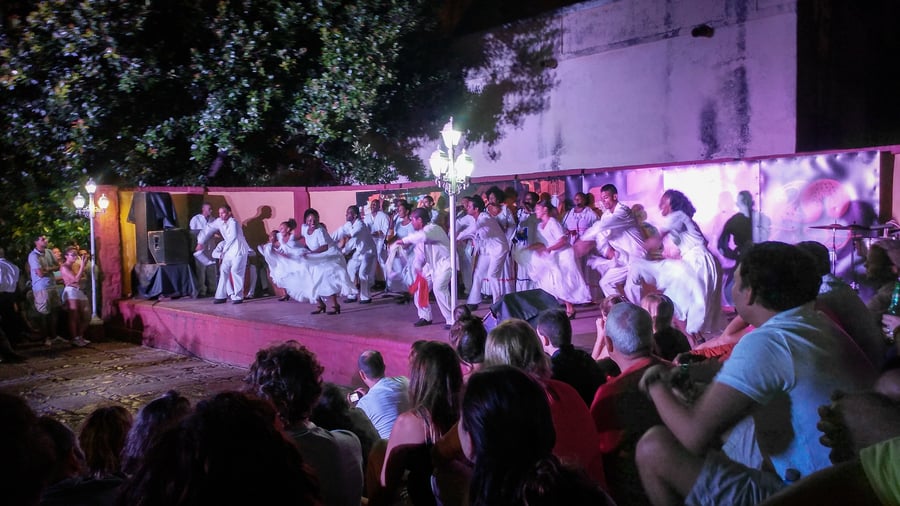
Besides the music and dancing, the House of Music is a great place in Cuba to enjoy a mojito or even a Cuban cigar.
Admission varies depending on who’s performing that night, but the tickets are usually quite cheap. The club is open from 10 pm to midnight, so if you’re looking for fun things to do in Cuba at night, this is the best place to go.
14. Zapata Swamp, one of the best national parks in Cuba
The Zapata Swamp is one of the best national parks to visit in Cuba. It’s in the Matanzas province on the Zapata Peninsula, and it’s the largest wetland in the Caribbean, covering 1,680 square miles. Thanks to its aquatic bird population, the park is a UNESCO -declared Biosphere Reserve and Ramsar Site .
Here, you can explore lush forests filled with about a thousand different native plant species. There is also a wide variety of animals, some of which are endangered. Zapata Swamp serves as a refuge for more than 65 migratory bird species, and it’s home to Cuban crocodiles and alligators. You can go to the park’s Crocodile Farm to learn more about these reptiles, and it’s a fun thing to do in Cuba for kids .
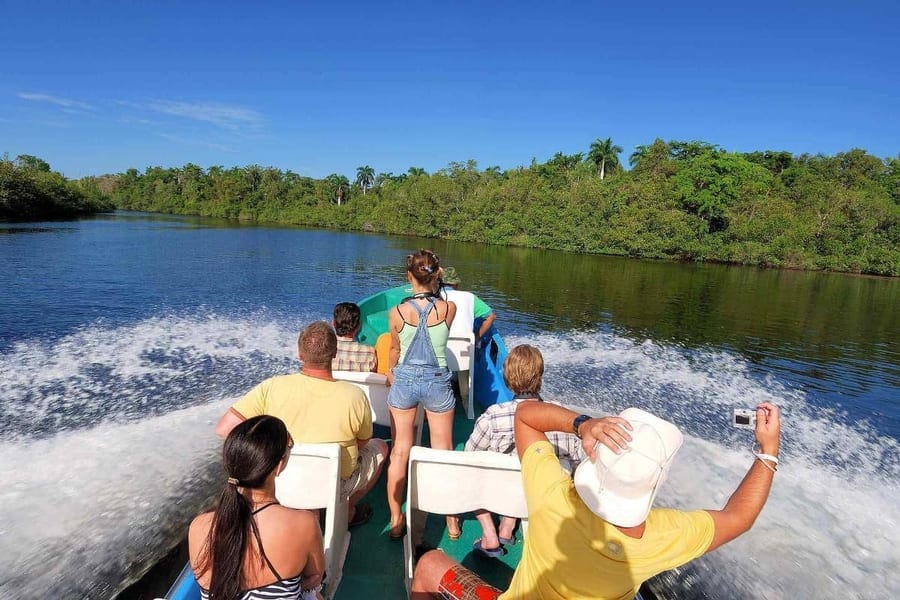
You can also explore other areas near the national park, such as Taino Village . There, you can learn more about pre-Columbian life in Cuba by examining the sculptures and ruins. Another interesting place to visit in Cuba is Playa Larga in the Bay of Pigs, one of the most popular beaches in the country. I also suggest visiting Laguna del Tesoro, Guamá , and the Hatiguanico River .
You’ll need an entire day to explore this area. It’s a bit difficult to navigate on your own, so I recommend this tour from Varadero.
15. Cueva de los Peces, the deepest natural sinkhole in Cuba
Close to Zapata Swamp is Cueva de los Peces , another cool attraction in Cuba . This natural sinkhole is known for its impressive depth, and it’s a natural wonder you should stop and see.
The sinkhole is 230 feet deep and sits among beautiful scenery. It’s open to the public, so you can bathe in its crystal-clear waters and see the fish swimming under the surface. I think it’s a great activity to do in Cuba as a couple. Plus, the Bay of Pigs is right across the road, and it’s the best place to go snorkeling in Cuba.
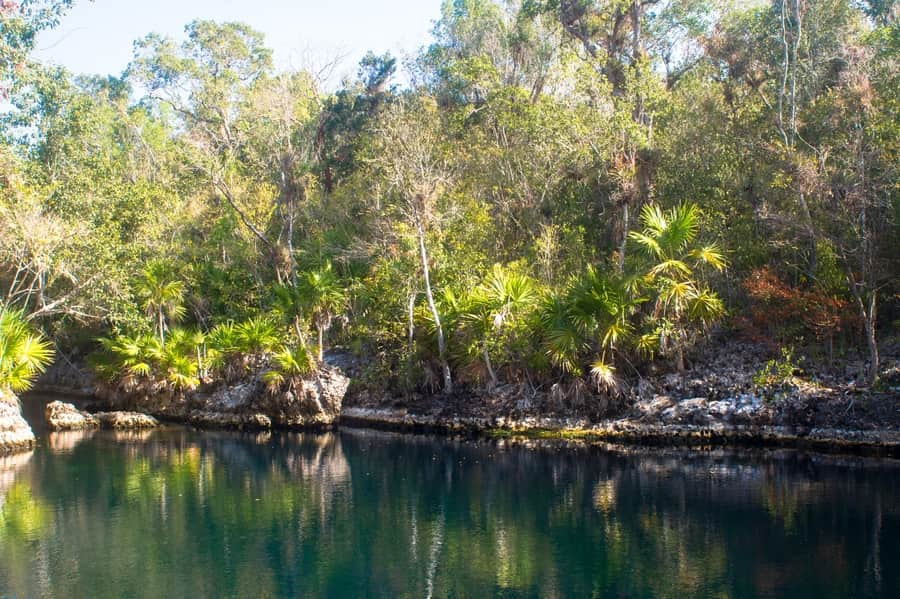
15. La Cueva de los Peces, the deepest natural sinkhole in Cuba
Besides the incredible amount of tropical fish you’ll see, this area is also full of sea sponges and colorful coral. I highly recommend checking out this place if you’re looking for an adventure in Cuba . There is even a small resort where you can rent snorkeling equipment.
16. Valle del Silencio, one of the best places to see the sunset in Cuba
Watching the sunset in the Valle del Silencio is one of the most romantic things to do in Cuba . Many people would agree that this is the most beautiful place in Viñales, so you don’t want to miss it.
This lush Caribbean valley is home to several tobacco and coffee plantations, and it’s one of the most scenic sites to see in Cuba . While the most popular way to explore the valley is by horseback , we took this sunset hike and loved it.
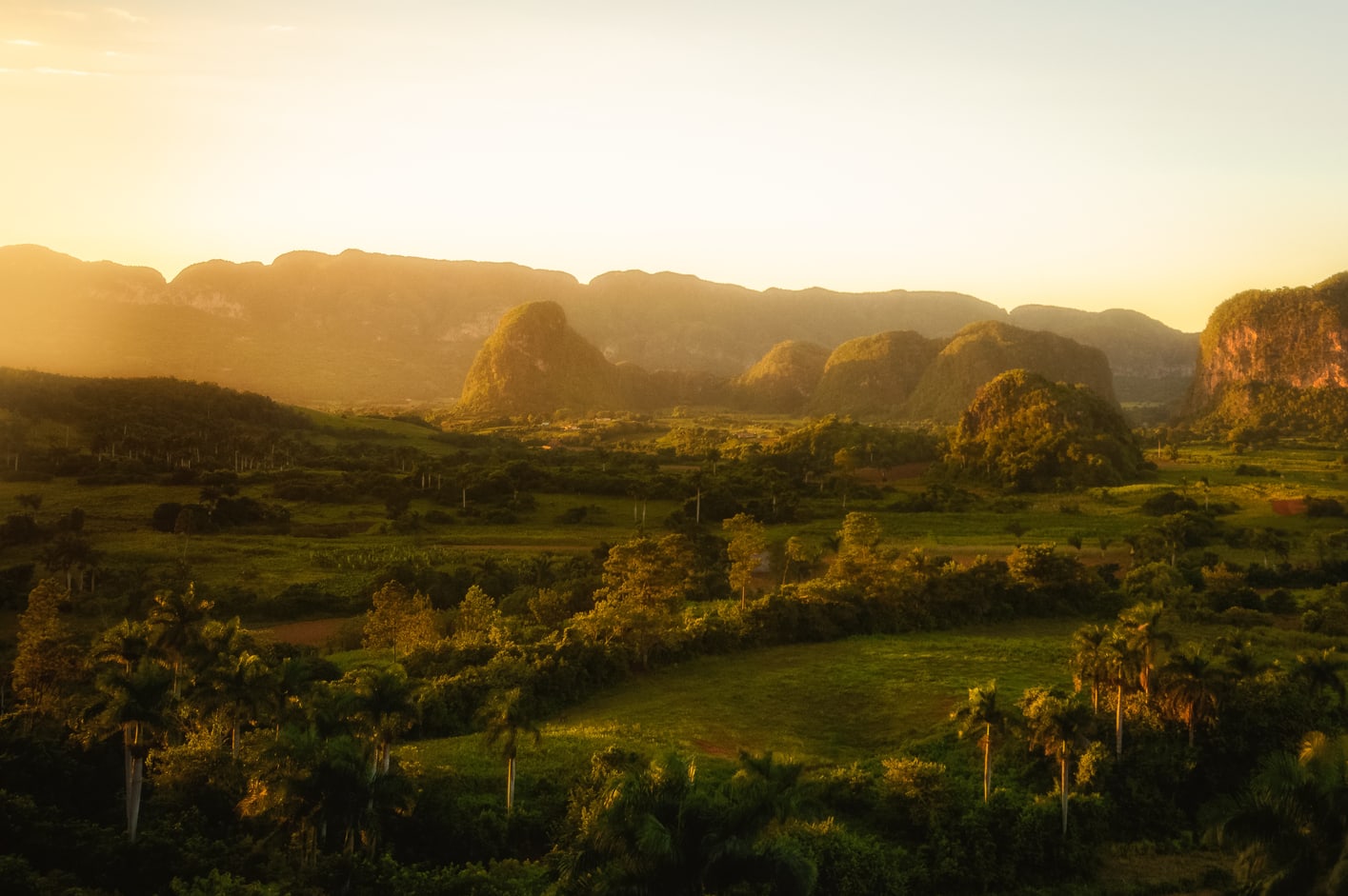
On our hike, we visited a tobacco plantation, where we learned how the farmers dry the plants for distribution. We also got incredible views of the valley as the sunset bathed the mogotes in orange. Without a doubt, it was one of the best outdoor activities in Cuba that we did.
17. Learn about Santeria, something interesting to do in Cuba
Before I went to Cuba, I didn’t know that the primary religion, in addition to Catholicism, is Yoruba . Also known as Santeria , this religion has its roots in Africa and came to Cuba during the colonial slave trade.
Santeria is more present on the island than you might think. For example, during our trip, we saw hundreds of people dressed in white from head-to-toe, signifying that they have been “sanctified”. You’ll have to take this Yoruba religion tour to know what that means! Without a doubt, this is one of the most interesting things to do in Cuba if you want to dig into the country’s culture.
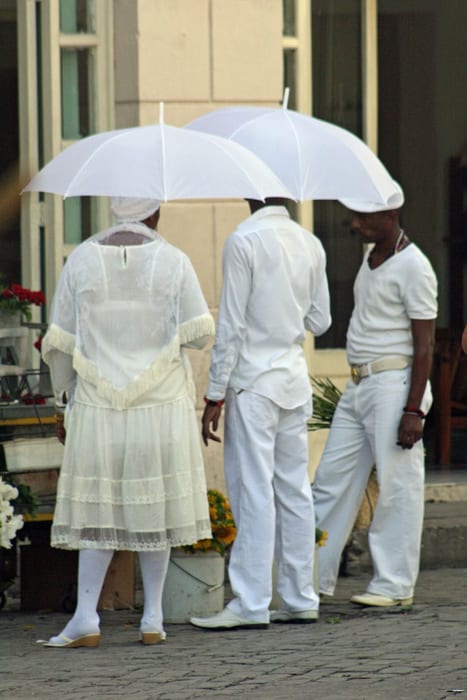
The tour is in Havana, so you’ll get to see many of Cuba’s points of interest . This includes the Museum of the Orishas and the Callejón de Hamel , which is the epicenter of Afro-Cuban culture. You’ll also visit the home of a babalao , or Santeria priest, who will show you some Yoruba rituals.
18. Visit Cayo Levisa or Cayo Jutias, the best beaches in Cuba
If you want to enjoy some of the best beaches in Cuba, go to Cayo Levisa or Cayo Jutias .
Cayo Levisa is an island that’s about 4 miles off Cuba’s northern coast. Typically, visitors arrive from Viñales, so I recommend this excursion to get there. It doesn’t include the cost of the ferry, which is about 15 CUC.
Once in Cayo Levisa, you can enjoy all kinds of beachy activities in Cuba , such as swimming and snorkeling. The gulf waters off the coast are home to a diverse array of fish and reefs.
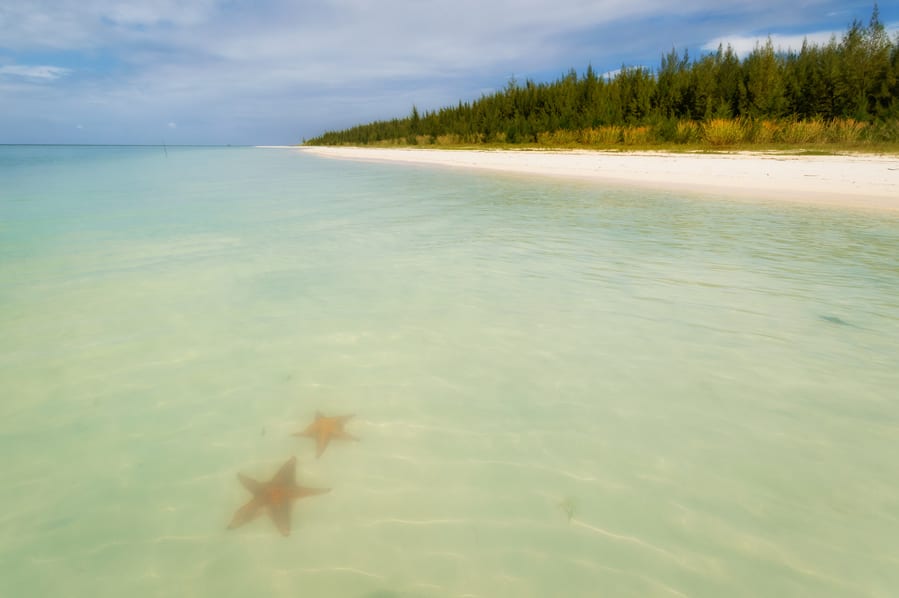
18. Visit Cayo Levisa or Cayo Jutías, the best beaches in Cuba
If you’re looking for more affordable things to do in Cuba , head to Cayo Jutías , which I consider one of the top beaches in the country. This excursion leaves from Viñales and you won’t have to take a ferry to get there.
The beaches of Cayo Jutías look like paradise and are perfect for sunbathing. You can also go swimming and snorkeling here, and I also suggest trying the lobster at one of the nearby restaurants, as it’s a specialty here.
19. Hotel Nacional, one of the most iconic hotels in Cuba
The Hotel Nacional de Cuba is a classic hotel in Havana and an iconic place to visit in Cuba.
This hotel first opened in 1930, and it’s still as elegant as ever. Its first-class services have solidified it as a benchmark within the Cuban hospitality industry.

19. Hotel Nacional de Cuba, one of the most iconic hotels in Cuba
Moreover, several high-profile celebrities and public figures have stayed at the hotel. A few examples include Marlon Brando, Ernest Hemingway, Winston Churchill, and Alexander Fleming. Once you see this famous landmark in Cuba , you’ll get a sense of its grandiosity and glamour.
A fun fact about the hotel is that in 1946, all the bosses of the United States mafia met here. Today, there aren’t any mafia bosses at the hotel, but it’s still fully functional, and you can book a room during your visit to Cuba. If you want to stay here, book in advance because the rooms sell out quickly.
20. Alejandro de Humboldt National Park
Alejandro de Humboldt National Park is one of the best places to visit in Cuba to reconnect with nature. It has been a UNESCO World Heritage Site since 2001, and its lush vegetation and wide variety of native species makes it a must-see.
Experts believe there are more than 340 plant species that are exclusively in this park, making it one of the top places in Cuba. Here, you can enjoy beautiful scenery and views, as well as pleasant walks in nature. If you’re going to be in the southern part of the island, you can’t miss this national park.
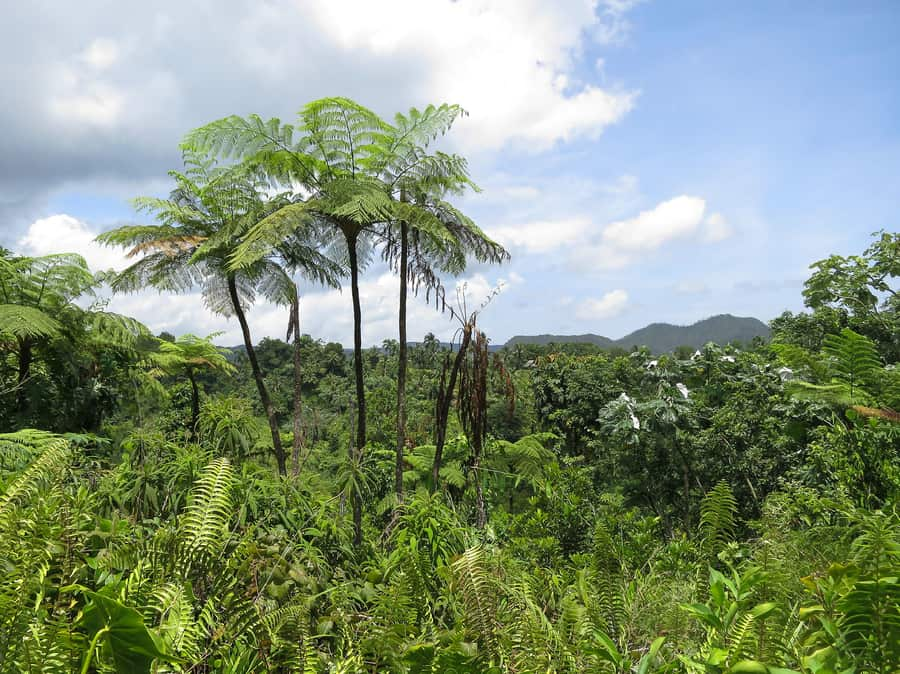
20. Alejandro de Humboldt National Park, a lovely place to see in Cuba
The most popular area to walk around is El Copal . It’s just over one mile and offers amazing panoramic views of the park. Best of all, the path ends at an incredible waterfall that cascades over black rocks into a small natural pool where you can cool off.
Another interesting trail is El Recreo , which is slightly longer. Along the path, you’ll see all kinds of flora and fauna, as well as a viewpoint overlooking Taco Bay.
With all the trails and pretty wildlife, this national park is one of the best attractions in Cuba . You can even take this day trip from Baracoa to learn about the tropical forest and biodiversity of the place.
21. Rock climbing in Viñales, an exciting thing to do in Cuba
If you’re looking for a unique thing to do in Cuba , I suggest rock climbing in Mogote del Valle , Viñales. This area is the most popular place to rock climb in the country, and it attracts climbers from across the globe. Not only does Mogote del Valle have plenty of vertical walls to climb, but the tropical views are out of this world.
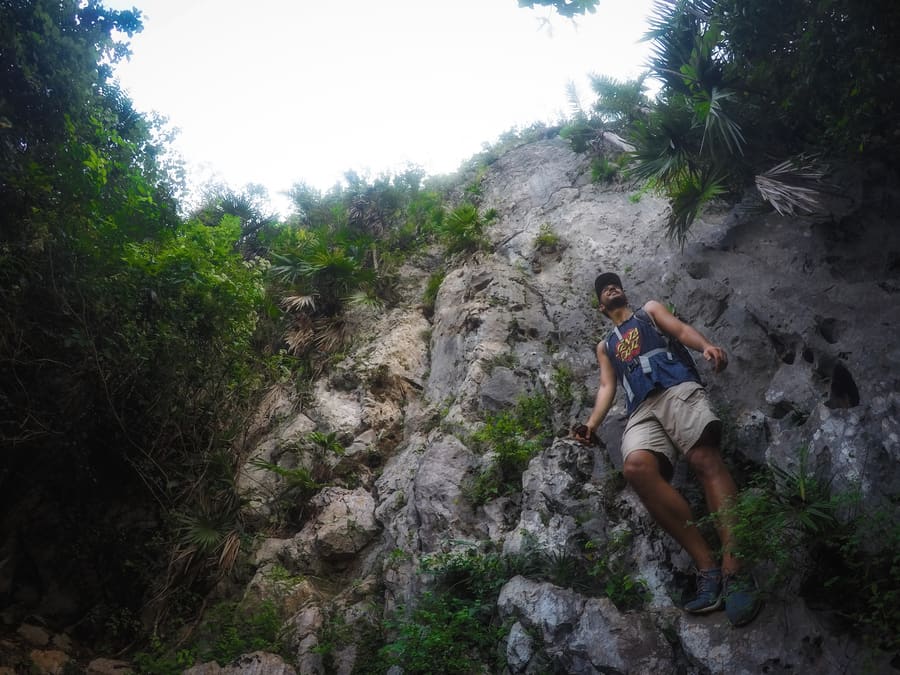
Even if you’ve never rock climbed before, there are different excursions and tour packages for all skill levels. Of course, if you’re a beginner, you’ll want to book a guided tour, so you stay safe while enjoying this exciting activity in Cuba .
If you’re determined to pursue this adventure in Cuba , keep in mind that the best time to go is from November to March since there is less rain.
22. Explore the caves of Viñales, something to do in Cuba with family
Viñales sits on an impressive karst valley, which makes it perfect for climbers. Another benefit of this terrain is that it has formed some incredible caves, and they’re one of the top sites to see in Cuba.
One of the coolest caves in the area is the Great Cavern of Santo Tomás . It’s the largest cave system in the country and the second-largest in all of North America at 28 miles long. Unfortunately, during our trip, the site was under construction due to a landslide, so we couldn’t visit it.
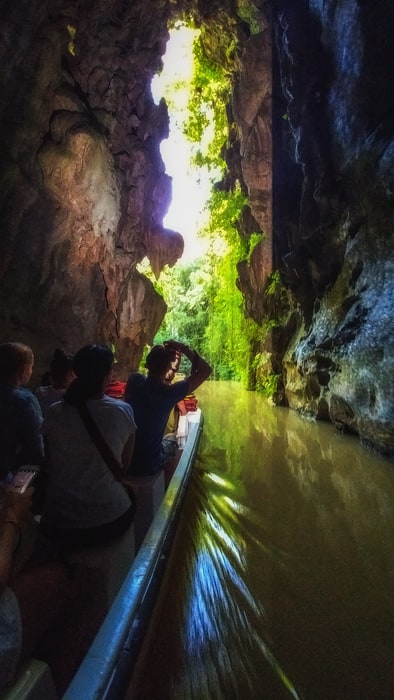
However, we did see the Cueva del Indio , one of the most popular places to visit in Cuba ‘s Viñales area. The San Vicente River runs through it, so you must take a boat tour to explore the cave’s depths.
Another interesting cave is the Cueva de San Miguel, also known as Palenque de los Cimarrones for the African slaves who sought refuge in it after escaping the sugar mills. This cave isn’t as geologically interesting, but it’s historically significant and still worth visiting.
The caves of Viñales are a must-see, but they’re not at a walkable distance from each other so I suggest booking this tour to visit them.
23. See the sunrise at Los Acuaticos, a romantic thing to do in Cuba
One of my favorite memories from our trip was taking a trek at 3 am to see the sunrise at Los Acuaticos .
This may be an unusual thing to do in Cuba because the trail is a little-known secret. We did the trek on our own but got lost a few times! Still, it was worth it to see the sunrise and the warm glow rising over the mogotes.

23. See the sunrise at Los Acuáticos, a romantic thing to do in Cuba
That said, I don’t want you to get lost in the dark here, so I suggest booking this guided hiking excursion . Not only will you get the best views, but you’ll learn more about the community of Los Acuáticos . This traditional village believes in the healing power of water and, as such, has some unique customs.
24. Take a salsa class, something you must do in Cuba
Taking a salsa class is one of the most enjoyable activities in Cuba . The island has a rich history of salsa dance, so you can find lots of bars and clubs offering classes.
I must admit, watching Cubans salsa dance is quite hypnotic, and it seems that the rhythm pulses through their veins. Most salsa classes provide instruction as well as some background history about Cuban and Afro-Caribbean rhythms and movements. Practicing the steps with your partner is also a romantic thing to do in Cuba .
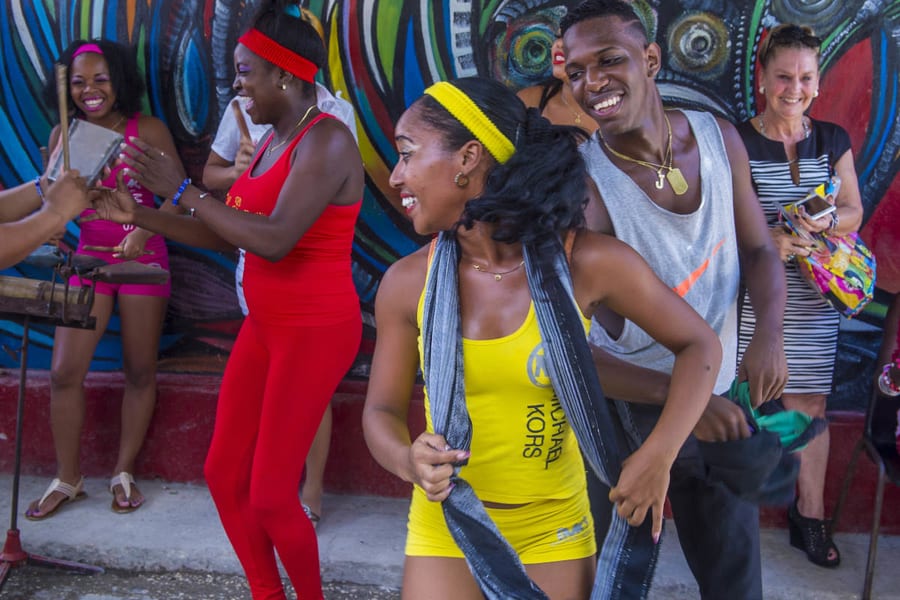
If you’re looking for salsa dance lessons in Havana, I recommend this class . The one-hour class includes instruction from professional dancers, who will teach you basic salsa moves, as well as the merengue and the cha-cha-chá. Without a doubt, it’s a fun thing to do in Cuba with your loved one.
25. Camagüey, one of the most beautiful cities to visit in Cuba
While traveling in Cuba , be sure to visit the city of Camagüey . A UNESCO World Heritage Site, Camagüey is full of culture, history, and religious significance. It’s also one of the most beautiful places in Cuba , so if you’re visiting the center of the island, be sure to check out this city.
Besides, most of the tourist attractions in Camagüey are quite close to each other, so you can see them all in one day.
The Ignacio Agramonte Park is a historical spot commemorating the War of Independence with a statue of this Cuban revolutionary. You can learn more about him at the Ignacio Agramonte Birthplace Museum in Plaza de los Trabajadores.
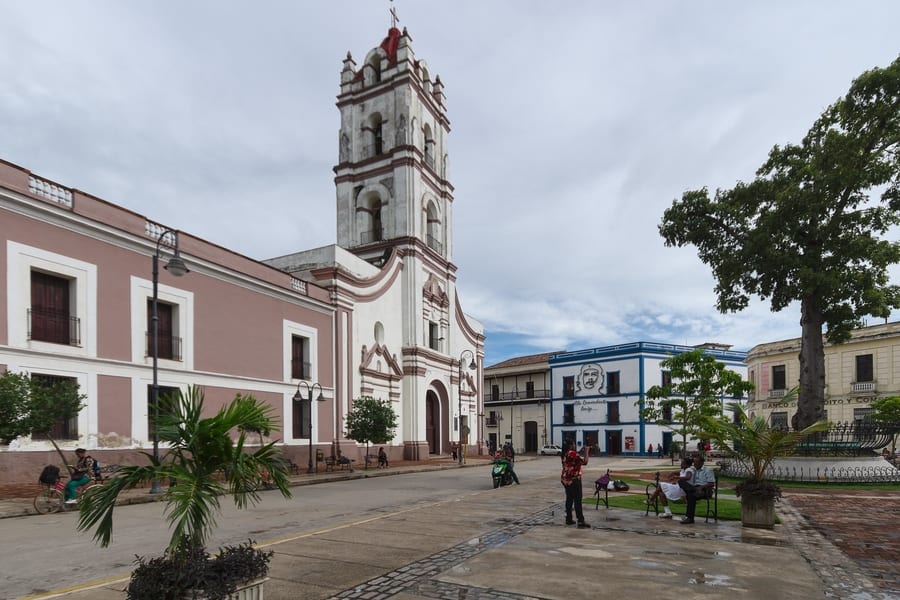
Plaza del Carmen is another point of interest in Cuba . In this beautiful square, you can see the Church of Our Lady of Mount Carmel, the only religious building in Camagüey with two Cuban-style towers.
I also recommend visiting Our Lady of Candelaria Cathedral , which dates to 1735; the Teatro Principal , headquarters of the Camagüey ballet; and the Casino Campestre Park , one of the largest natural parks in Cuba.
26. Santa Ifigenia Cemetery, a unique place to visit in Cuba
The Santa Ifigenia Cemetery in Santiago de Cuba is something you should see if you’re traveling in Cuba ‘s southern region.
The cemetery is over 150 years old and the second-largest in Cuba, after the Necropolis of Christopher Columbus in Havana. The area is home to several funerary monuments, such as the hexagonal marker of José Martí, representing the six ancient provinces of Cuba. Here, you’ll also find Fidel Castro’s tomb and the final resting places of several prominent Cubans.
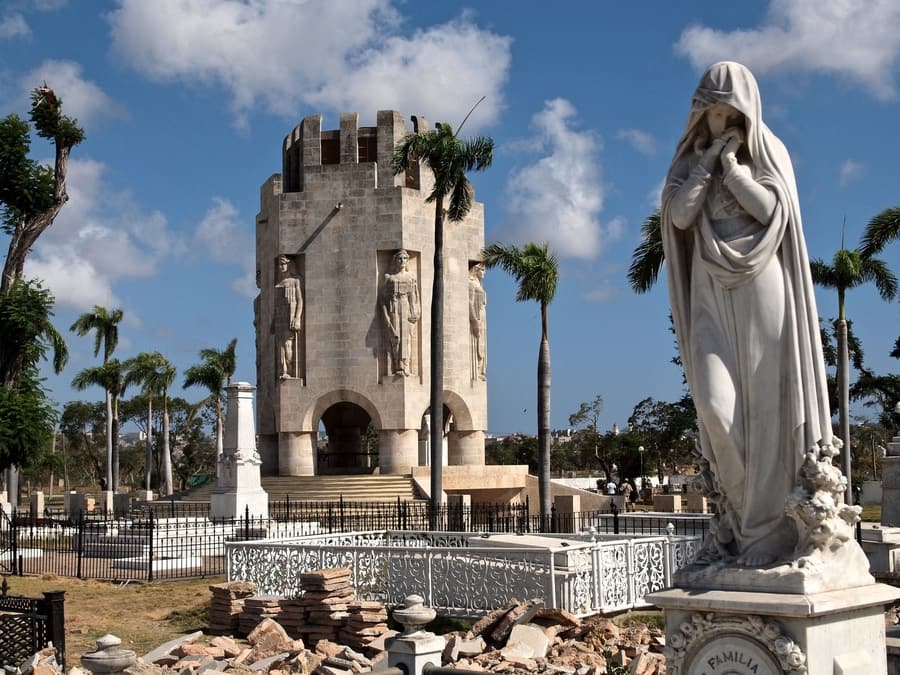
You can get a better understanding of the cemetery and the historical figures buried there by booking this tour . Along with the cemetery, you’ll visit the Barracks of Moncada and the Museum of Bacardi , two other interesting attractions in Cuba .
27. National Capitol of Havana, another must-see in Cuba
The National Capitol Building in Havana is a famous landmark in Cuba worth visiting. It dates to 1929 and, in addition to being one of the largest buildings on the island, it’s a National Monument.
Construction on El Capitolio began during the dictatorship of Gerardo Machado with the help of North American financiers. As a result, the national building resembles the White House in Washington D.C., especially the neoclassical columns and grand dome.
The dome once held a large 25-carat diamond to symbolize Kilometer 0 on the Central Highway of Cuba, although it has been replaced with a replica diamond.
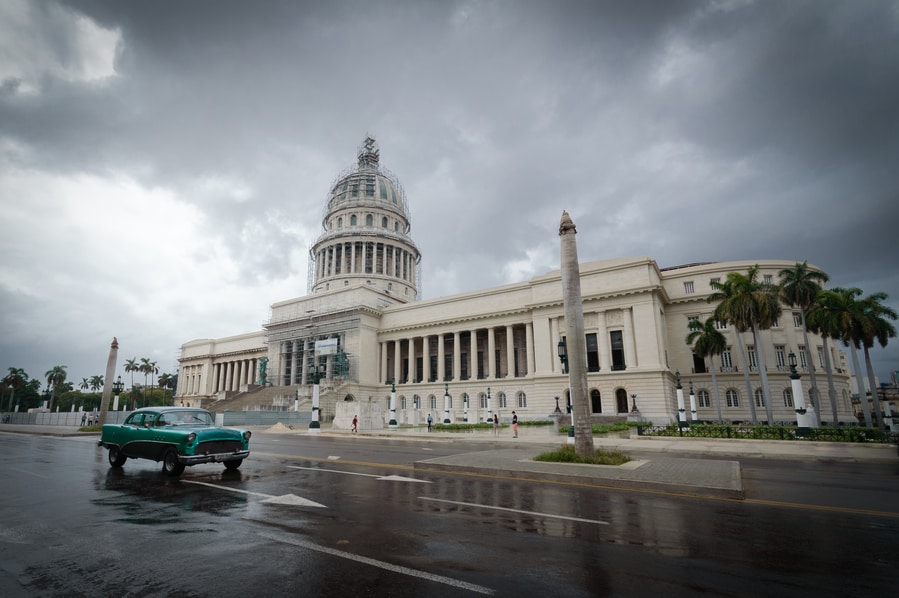
While you can visit the capitol building on your own, there are official one-hour guided tours that take place daily. It could be an interesting way to learn more about this prominent place in Cuba .
During the tour, you’ll visit the Hall of Lost Steps , with the impressive Statue of the Republic at its center. You’ll also see the former conference room of Baire Hall , the French-style Bolívar Hall , the neoclassical Baraguá Room , and the Martí Room in the library’s anteroom.
28. Cayo Santa Maria, one of the best beaches in Cuba
Cayo Santa Maria is one of the best places to visit in Cuba , especially if you want to enjoy spectacular beaches with turquoise blue water.
This island is north of central Cuba and links to the mainland via the world’s longest stone seawall (30 miles). So, you can reach Cayo Santa María by car, taking in all the wonderful coastal views along the way.
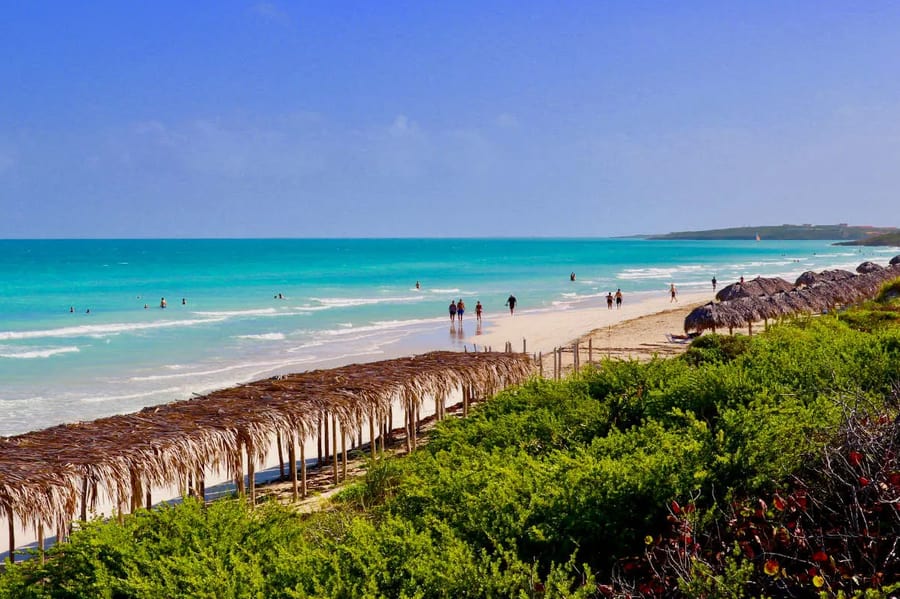
28. Cayo Santa María, one of the best beaches in Cuba
Once you arrive, you can sunbathe on the white sand beach or go snorkeling in the crystal-clear waters. Another fun thing to do in Cuba is to take a boat trip and try to spot dolphins in this Caribbean paradise.
If you head to the southern part of the island, you can take a nature walk among the lush vegetation. If you’re not sure where to go in Cuba to disconnect and unwind, Cayo Santa María is your best bet. To make things nice and easy, consider this excursion from Santa Clara with transportation.
29. Visit La Isabelica coffee plantation, another interesting thing to do in Cuba
Near Santiago de Cuba, you’ll find La Isabelica Coffee Plantation , a UNESCO World Heritage Site and one of the most important places in Cuba .
Located over 3,700 feet above sea level, this impressive cafetal boasts social and historical significance. It doubles as a museum dedicated to the coffee slave trade and to the economic grown that the area saw when French emigrants from Haiti arrived in that part of Cuba and raised over 600 plantations.
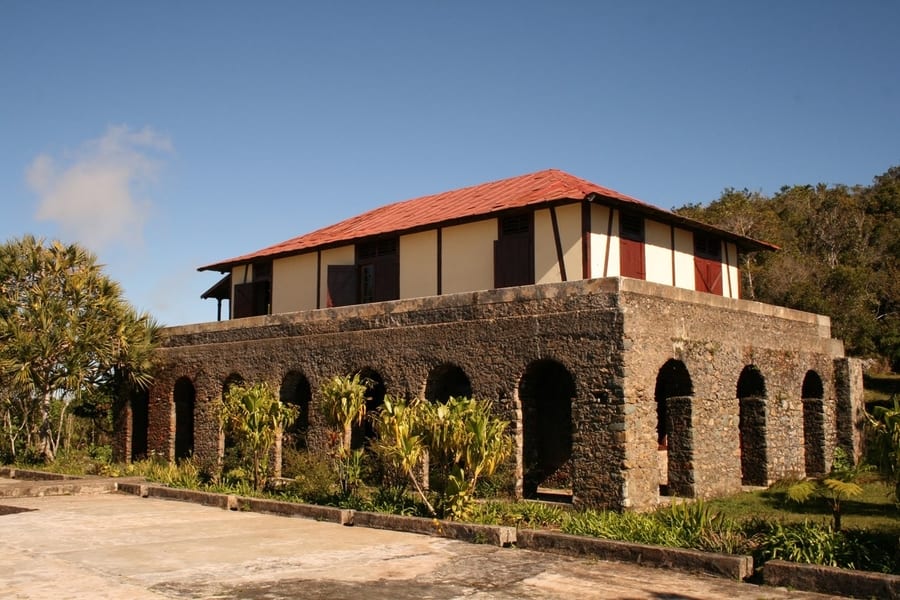
Besides visiting the extensive coffee drying rooms, you can access La Isabelica Coffee Museum . This two-story mansion features period furniture and objects related to plantation work. The second floor has been restored to replicate the original home, so you can get a better idea of life back then.
About a mile away is La Gran Piedra , another popular tourist attraction in Cuba that I’ll talk about next.
30. La Gran Piedra, an amazing place to visit in Cuba
In the Sierra Maestra mountain range is La Gran Piedra , one of the most peculiar places to visit in Cuba .
La Gran Piedra (The Great Stone) is a huge volcanic rock weighing around 60,000 tons. It is over 165 feet long, 80 feet tall, and nearly 100 feet wide. It has become one of the most popular attractions in Cuba , despite the 459 steps you must climb to get to the top.
It’s worth it because the views from up there are magnificent. Over 4,030 feet above sea level, La Gran Piedra is even in the Guinness World Records book as the highest rock of its size in the world.
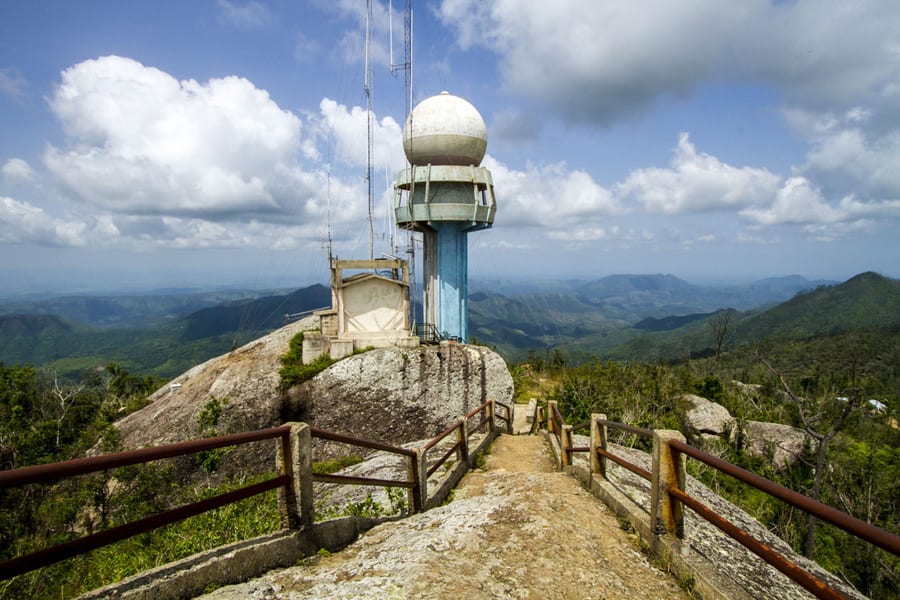
While you’re atop the rock with the entire Sierra Maestra underfoot, you’ll notice the big domed tower nearby. It’s a meteorological radar tower that records the climate changes in the region.
If you want to see La Gran Piedra, you should visit during your trip to La Isabelica coffee plantation. It’ll make for an unforgettable experience in Cuba .
31. Take a train ride through Valley of the Sugar Mills
One of the most interesting things to do in Cuba is to take a train ride through the Valley of the Sugar Mills , a UNESCO World Heritage Site.
This area was home to the sugar mills and distilleries that exported supplies to Europe. While it yielded a large profit, it was unfortunately at the hands of African slaves. Taking a journey through this region means facing the darker parts of Cuba’s history.
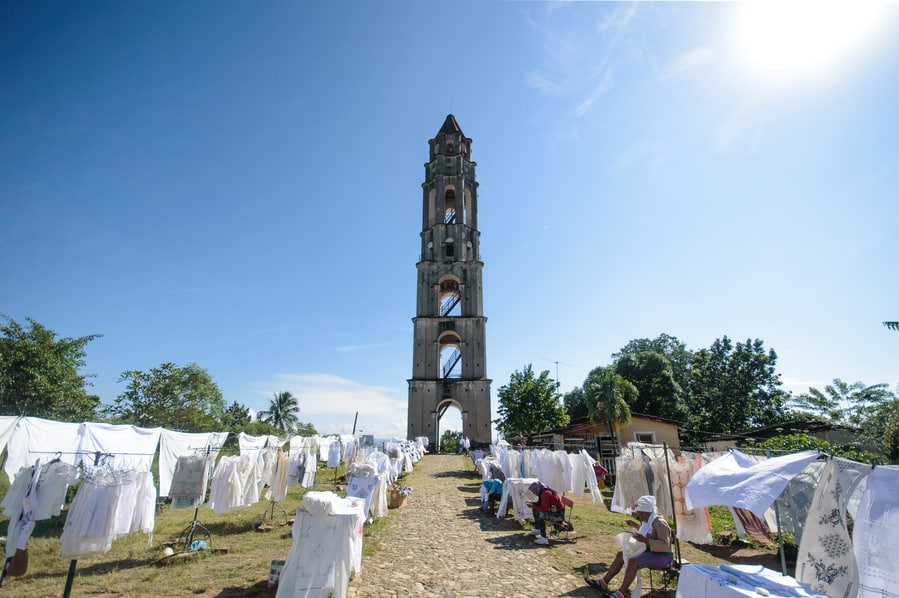
31. Take a train ride through Valley of the Sugar Mills, an interesting thing to do in Cuba
You can take a ride on a steam train from Trinidad to Manaca Iznaga , one of the most lucrative plantations. Once there, you can visit the slave barracks and the watchtower that kept a close eye on the laborers.
Another sugar mill to visit is San Isidro de los Destiladeros . It’s close by but not as crowded as other similar sites in Cuba , so you can take your time looking around. The plantation is in good condition, as are the buildings and watchtower, from which you can get great views of the valley.
32. Ancon Beach, a calm place to go in Cuba
If you’re looking for the top places on the island to watch the sunset, consider Ancon Beach . Not only is it one of the best vacation places in Cuba , but the reddish hues of the sun reflecting on the calm sea is something you can’t miss.
This beach is close to Trinidad, so if you’re going to be in the area, it’s the perfect day trip. Ancon Beach boasts an expansive coastline, and it’s more secluded than other resort towns on the island.
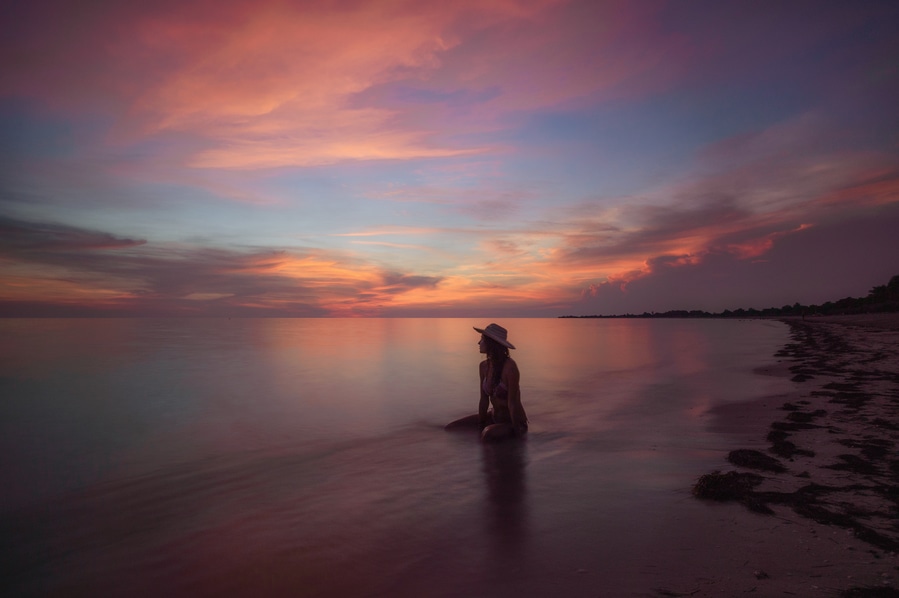
Best of all, this beach is one of the most beautiful places in Cuba to go snorkeling. Along with the crystal-clear waters and fine white sand, the area has loads of colorful tropical fish. You can rent some snorkeling equipment on the beach and dive into those pristine waters.
We visited this beach several times, both by taxi and by bike, which takes 40 minutes from Trinidad. My word of advice is not to stop at La Boca, because although it may seem pretty, there is a lot of sewage. Instead, go straight to Ancon Beach, where you can relax on the clean shores.
33. Visit Baracoa, an important city in Cuba
Baracoa , also known as the First City, is a must-see in Cuba since it was the first established city on the island.
Despite its historical importance, Baracoa isn’t the most popular place in Cuba since it’s in the southern part of the country, in Guantanamo. Even so, it’s worth visiting, thanks to its preserved traditions, sites, and mix of jungle and seaside activities.
To start, visit Seboruco Castle to enjoy some beautiful panoramic views of Baracoa. Then go to Parque Independencia in the city center, where you’ll find lots of bars and restaurants.
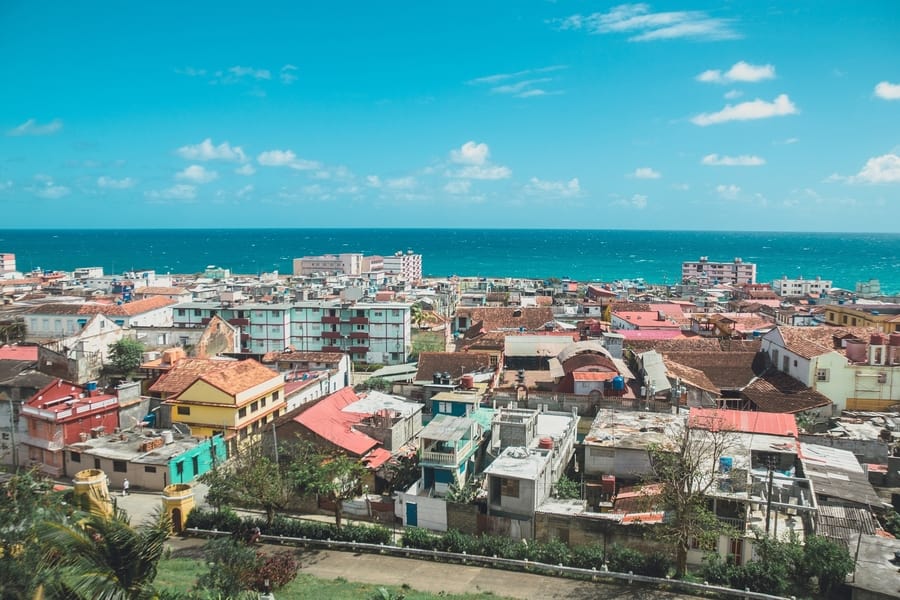
I also recommend stopping by the Cathedral of Our Lady of the Assumption . Inside, you can see the Cruz de la Parra , the last of the 29 crosses that Christopher Columbus took to the New World and a beloved Christian relic.
If you get tired while walking the streets of Baracoa, you can take a stroll along the Malecón promenade, which always has a lively atmosphere. You might also enjoy one of the excursions that leave from Baracoa, such as the Alejandro Humboldt National Park , Maguana Beach , or Yunque de Baracoa and the Yumirí Canyon, which I’ll mention next.
34. Yunque de Baracoa, the best place to hike in Cuba
Yunque de Baracoa is one of the best places to visit in Cuba to enjoy wildlife and nature walks. Due to its historical, environmental, and cultural value, it has been declared a National Monument.
This nature reserve is one of the most well-known areas in the country and sits 1,310-1,890 feet above sea level. It gets its name from the peculiar flat surface at its peak, which looks like an anvil. If the distinct shape and impressive height of this place don’t astound you, the plentiful vegetation will.
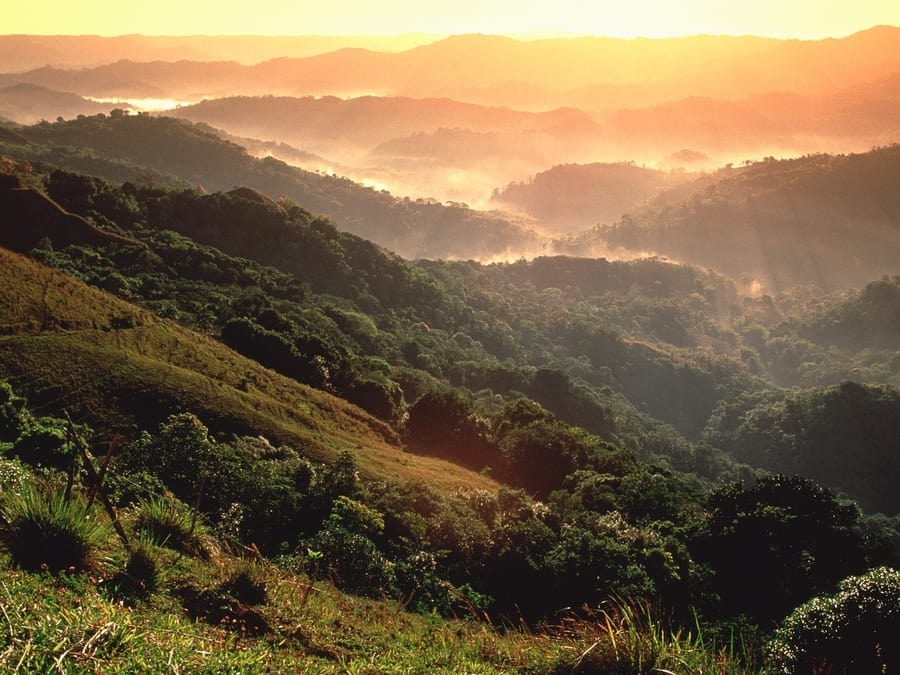
Walking along the Yunque’s nature trails is one of the top things to do in Cuba with family , so I highly recommend it. The trail to the top takes around 4 hours, but it’s an enjoyable and scenic journey in the tropical forest. You’ll also spot different wildlife species along the way.
Once you get to the top, you’ll have gorgeous views. You’ll also see the bust of General Antonio Maceo, also known as the Bronze Titan.
If you want to discover all that the Yunque has to offer, I suggest booking this full-day excursion .
35. Yumuri Canyon and Belete waterfalls, a breathtaking place to go in Cuba
If you’re going to be in Baracoa, one of the top Cuban points of interest to see is the Yumuri Canyon . It’s a protected natural area with some of the best biodiversity in the country. Plus, it’s ideal for birdwatching, hiking, and other outdoor activities.
What’s nice about the canyon is that there are different walking paths, so you can choose one that suits your level. However, I highly recommend the trail that leads to the Belete waterfalls . It’s about 4 miles each way, but it’s worth it to see those clear emerald waters and breathtaking 65-foot falls.
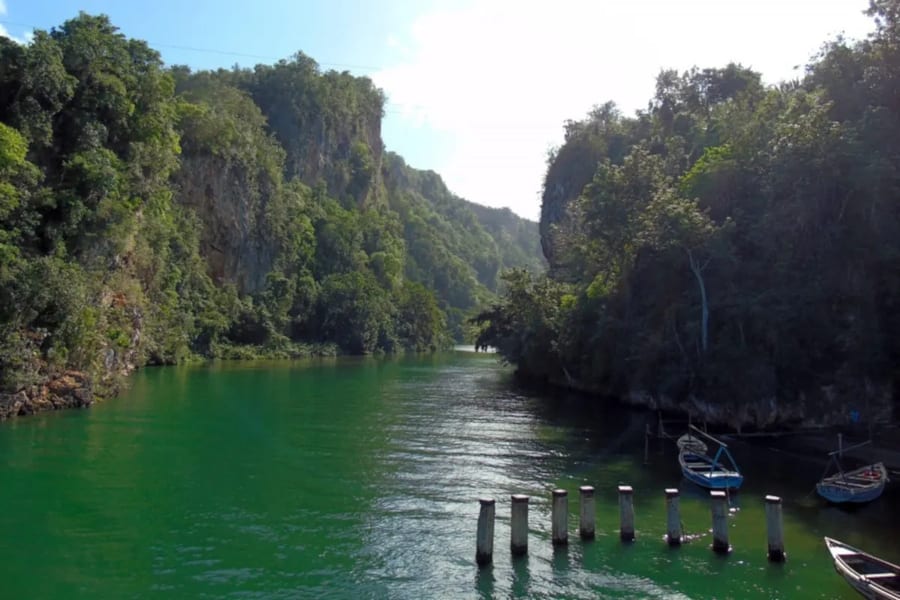
35. Yumurí Canyon and Belete waterfalls, a breathtaking place to go in Cuba
The entire Yumurí Canyon is one of the most beautiful places in Cuba , full of lush rainforest, different animal species, and natural wonders. You’ll be surrounded by lovely tropical scenery the whole time, making you feel like you’re in paradise.
If you want to make the most of your time here, I suggest this excursion , which includes a visit to a cocoa plantation and the beautiful beach of El Manglito. You’ll also get to take a boat ride along the Yumurí canyon river.
36. Stay overnight in a casa particular, a unique experience in Cuba
One of the most authentic things to do in Cuba is staying overnight at one of the casas particulares , or private homes . Even if it’s just for one night, it will be an unforgettable way to meet the locals and immerse yourself in the culture.
Since 2000, Cuban families have been able to obtain permits that allow them to offer a room in their home as tourist accommodations. While traveling in Cuba , you will see signs for room rentals all over around.
Among the many perks of renting a room in a family’s home, I’d like to highlight the great prices, flexible dates, and the incredible opportunity to learn about Cuban culture first-hand.

This type of accommodation is usually quite charming, and each one is unique. Plus, the host families are super friendly and often greet you with a fresh drink or snack upon your arrival. They’re also a great source of insider information about where to go and what to do in Cuba . You could spend hours chatting and learning about their life on the island and how it has changed over the years.
I mention more about these private rooms in our guide on how to plan a trip to Cuba , so check that out if you’re interested in this type of accommodation!
37. Museum of the Revolution, one of the most important museums in Cuba
The Museum of the Revolution is the best museum in Cuba to learn more about the 1953 revolution.
It’s in Havana’s city center, inside what was the Presidential Palace. The last president of Cuba to use it was the dictator Fulgencio Batista. After the revolution, it became a popular tourist attraction in Cuba , exhibiting photos, documents, and other objects related to this pivotal event.

The museum is clearly propaganda, with an emphasis on the economic and social achievements of the communist system. I found the Cretins’ Corner to be quite humorous and intriguing, as there are giant caricatures of George H.W. Bush, his son, Fulgencio Batista, and Ronald Reagan.
The revolution was a crucial event that marked a distinct before and after in the country. If you want to learn more about its historical significance in Cuba, check out this walking tour , which includes stops at some of the most important and famous landmarks in Cuba .
38. Learn about Cuban cigars on the Tobacco Route
Whether you smoke or not, one of the most unique things to do in Cuba is to learn about the culture of Cuban cigars and how they’re made.
You can journey along the tobacco route in Pinar del Río province and see some of the main cultivation areas and Cuban cigar factories. While exploring the natural landscape, you’ll learn more about the country’s tobacco tradition and its economic importance.
Another option is to visit the Raúl Reyes Estate in Viñales, which is what we did. Besides being one of the most interesting places to visit in Cuba , the owner is humble and kind, so it was a thoroughly enjoyable experience.
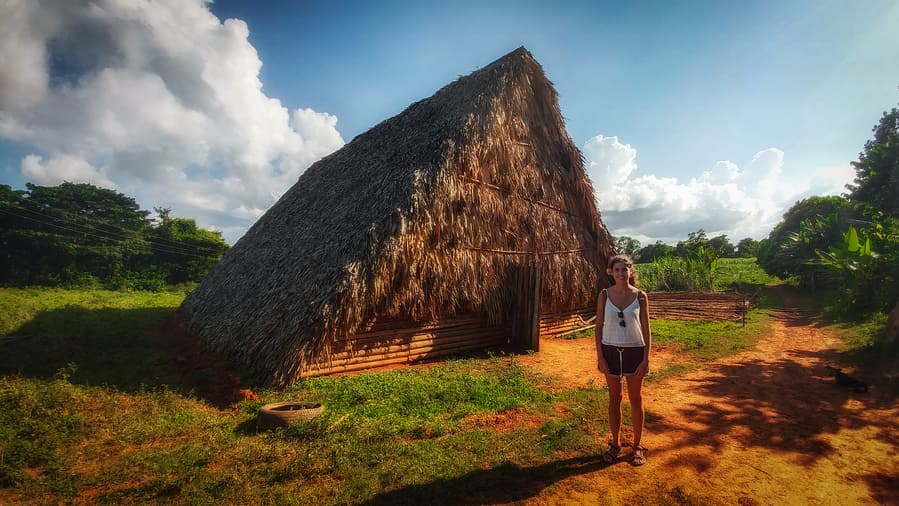
38. Learn about Cuban cigars on the Tobacco Route, another must-do in Cuba
During our time here, we saw the tobacco drying houses and plantations. Raúl Reyes explained the entire process and offered unique insights about his life and work in the field. We ended up purchasing a few cigars and some coffee as souvenirs.
Along with the tobacco plantations, another cool place to go in Cuba is a tobacco factory. The most famous one is Partagas in Havana, which is also the oldest in the country. Here, you can watch Cuban cigars being made and visit the accompanying museum.
39. Maria la Gorda, the best place to go diving in Cuba
While I’ve already mentioned some great beaches where you can go diving, there are a few other places in Cuba you should check out if you want to enjoy this activity.
María la Gorda in the northwestern Pinar del Río province is the best place in Cuba for diving . Here, you can swim over black coral reefs and among barracudas, crabs, lobsters, and other sea critters.
Be sure to check out the María la Gorda International Diving Center before you hit the water. There, you’ll find all the necessary information about the place, as well as interesting spots to dive. You can also rent diving equipment or book a boat ride.
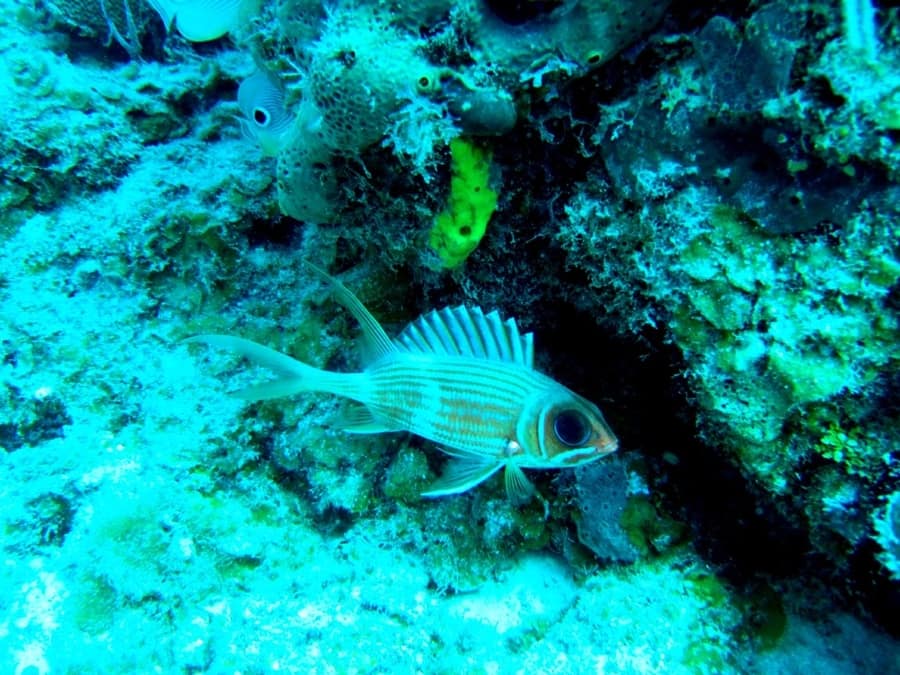
39. Maria de la Gorda, the best place to go diving in Cuba
From Pinar del Río, you can visit the Isle of Youth , another popular diving spot in Cuba. This area is good for both beginners and experts, and it boasts some amazing geological formations, as well as sharks.
If you’re going to be mostly in Havana, check out this snorkeling excursion , which explores the City of Alexandria and the SS Olivette shipwrecks. Another great diving trip is this one in Santiago de Cuba, which explores the Almirante Oquendo battleship that sank in 1898.
40. Attend the cannon firing ceremony, an unforgettable thing to do in Cuba
The cannon firing ceremony is one of the oldest traditions in Havana, dating to 1774 when soldiers would fire the cannon to announce the closing of the city gates. Hearing the boom of the cannon reverberating throughout the city is a memorable thing to do in Cuba that you don’t want to miss.
The cannon is at the San Carlos de la Cabaña Fortress , a UNESCO World Heritage Site surrounded by thick walls to keep bandits and pirates at bay. These days, the ceremony is part of Havana’s cultural tradition, and participants even wear 18th-century clothing to recreate the colonial era.
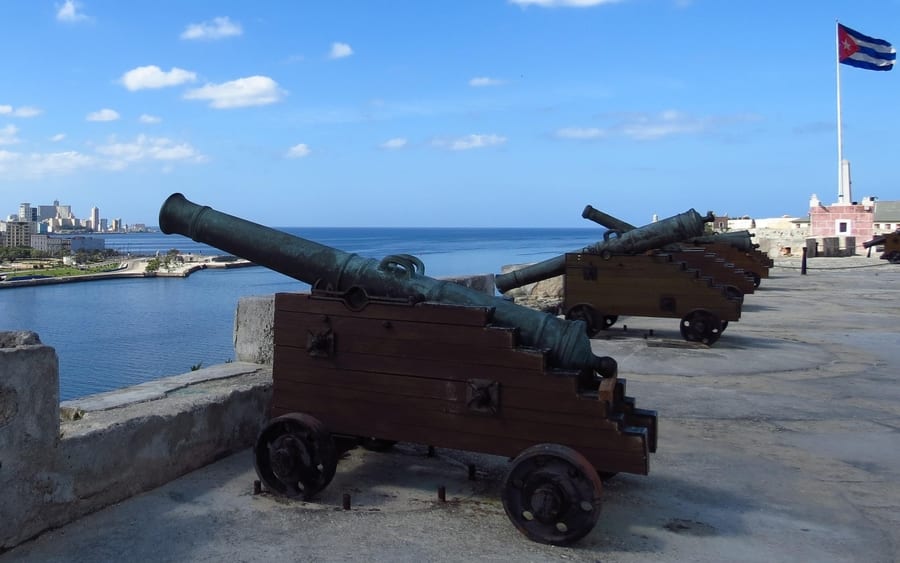
40. Attend a cannon firing ceremony, an unforgettable thing to do in Cuba
Again, if you’re visiting Havana, be sure to check out this impressive ceremony. I should warn you that the fortress is a bit out of the way from the city center, but this tour can pick you up from your hotel and take you there. You’ll also get to tour Old Havana and enjoy dinner at a local restaurant.
41. Have a daiquiri at El Floridita, something to do in Cuba at night
Along with the mojito, the daiquiri is one of Cuba’s signature cocktails, so you can’t leave Havana without trying one. Ernest Hemingway even said, “My mojito at La Bodeguita, my daiquiri at El Floridita.”
And so, it is, that you should go to El Floridita for a daiquiri and a fun night on the town. If you want to try the famed author’s particular drink, it’s made with 4 ounces of white rum with lemon and grapefruit juice, crushed ice, and six drops of maraschino cherry liqueur. We tried it, and it was quite good!

Even without its connection to Hemingway, this bar is a great place to go in Cuba . The atmosphere is quite distinct, with the waiters in 1950s uniforms and live music playing most nights. Also, don’t miss the steel statue of Hemingway leaning on the bar.
Moreover, if you’re a bookworm or a big fan of Hemingway, I suggest this guided tour through his home, La Vigía, and the town of Cojímar , which inspired his book The Old Man and the Sea . You’ll also see his regular hotel room at Ambos Mundos Hotel before ending the tour at El Floridita.
42. Watch the sunset at the Malecón in Havana, something to do in Cuba as a couple
The Malecón in Havana is a broad promenade along the city coast. It extends for 5 miles and is known as one of the most famous landmarks in Cuba . Here, you’ll find locals meeting up, tourists sightseeing, and lovers watching the sunset.
There’s no doubt that this is the perfect spot for people-watching. The lively atmosphere and mix of visitors make it an attraction in Cuba worth seeing. Of course, what makes it so popular is the stunning sunset views you can get here.
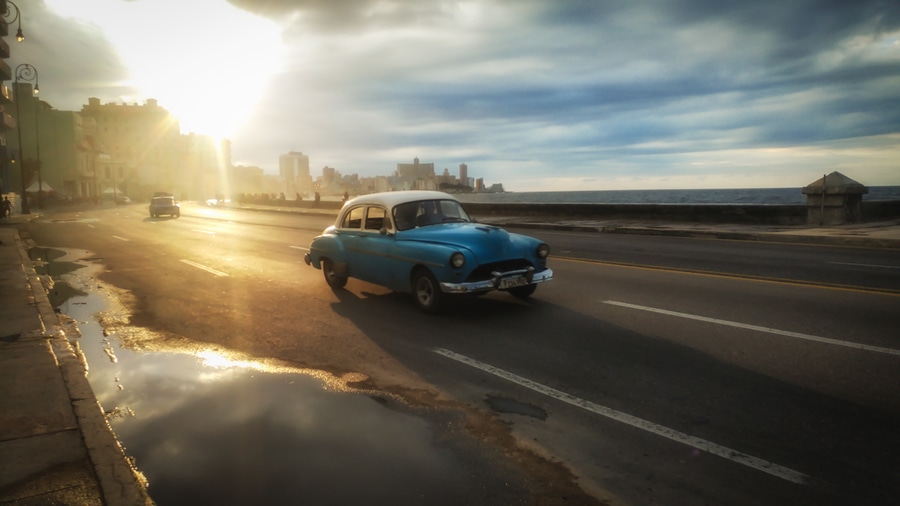
While Havana’s malecón may be the most important boardwalk in the country, it’s not the only one you should visit. The coastal towns of Cienfuegos, Baracoa, and Puerto Padre also have lovely promenades. If you’re going inland, check out Santa Clara , which has a boardwalk along the Cubanicay River and another next to Teatro La Caridad.
Whichever one you visit, you’re sure to strike up a conversation with the locals, who are super open and friendly!
43. Have an ice cream at Coppelia, the best thing to do in Cuba with kids
Coppelia is Cuba’s national chain of ice cream parlors that became internationally popular after the film Strawberry and Chocolate . You can find Coppelia parlors throughout the country and enjoying one of those sweet treats is a fun thing to do in Cuba with kids .
These ice cream shops are a little different because they only serve three flavors. However, the flavors change daily, so there is always a reason to stop by!
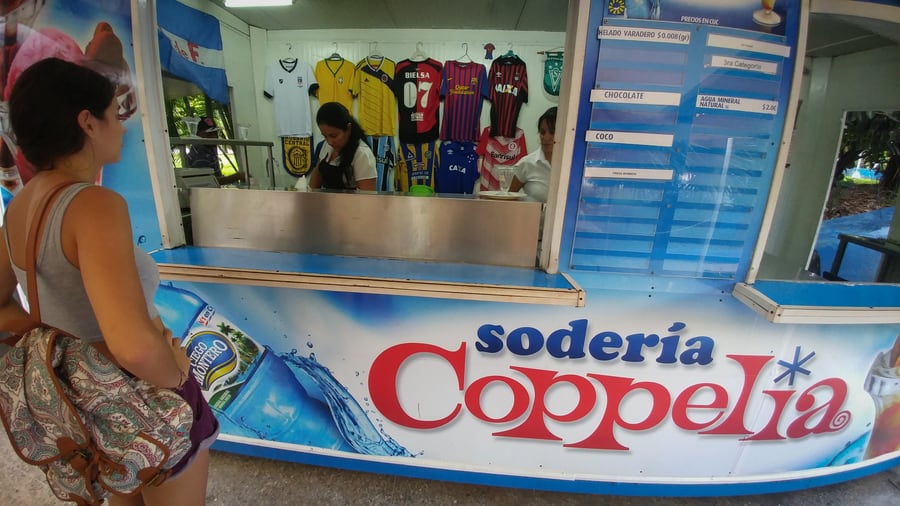
As the most popular place in Cuba to get ice cream, Coppelia can be packed, especially if you go in the evening. We went to one in Havana around noon, and the line wasn’t bad at all. Yet, even if there is a line, it’s worth it because the ice cream is to die for.
Again, we went to Coppelia in Havana, but you can also visit the ice cream parlors in Matanzas, Cienfuegos, Trinidad, Santa Clara, Sancti Spíritus, Camagüey, Santiago de Cuba, and Guantánamo.
44. El Nicho waterfalls, an amazing place to go in Cuba
El Nicho is one of the most beautiful places to visit in Cuba , and a must-see if you’re around the Topes de Collantes park. I mentioned the Caburní Falls earlier, however, El Nicho is much more accessible and just a short drive away from Cienfuegos.
As a result, the El Nicho waterfalls tend to be one of the more crowded attractions in Cuba . Still, I think they’re well worth seeing, with their clear blue water and lush tropical vegetation. You can bathe in the natural pools under the waterfall, too, so remember to bring your swimsuit.
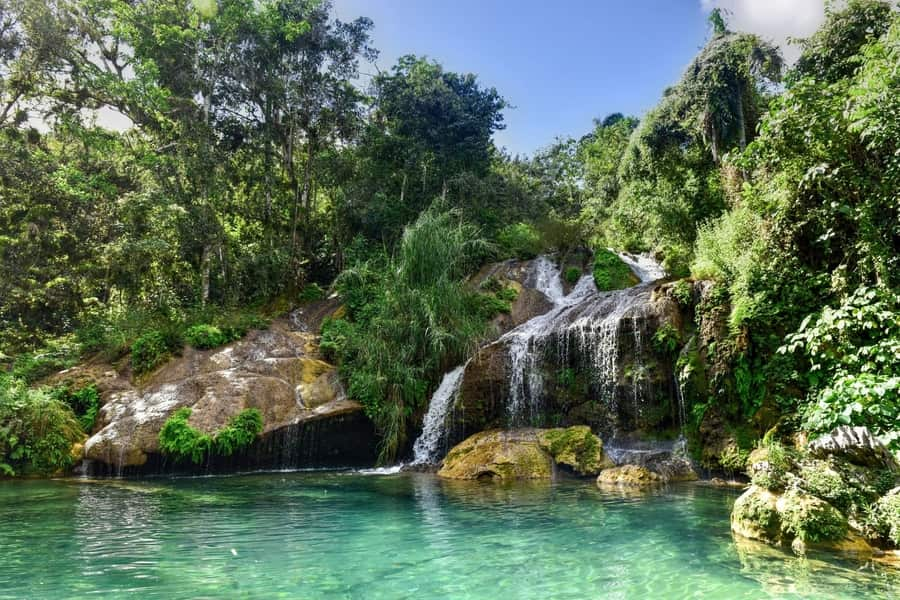
While you’re there, explore the surrounding areas. There are several nearby caves as well as hiking trails. I recommend the main trail to the falls, also known as the Kingdom of the Waters . It’s only about half a mile, so it’s the perfect thing to do in Cuba with kids .
45. Climb Pico Turquino in Sierra Maestra, the best hike to do in Cuba
One of the most beautiful places in Cuba is the Sierra Maestra National Park in the southeast. It’s also known as the Turquino National Park because of its highest point, Pico Turquino .
At 6,475 feet tall, Pico Turquino is also the highest mountain in the country and one of the few sites in Cuba that has recorded snowfall, back in 1900.
Some say the name Pico Turquino is a mispronunciation of turquesa , or turquoise, which reflects the vibrant blue hues you can see from atop the mountain. Even Che Guevara said that the peak had a mystical air to it, so it’s something you must see during your visit. Also, on the hilltop is a bust of José Martí, which marked his 100th birthday.
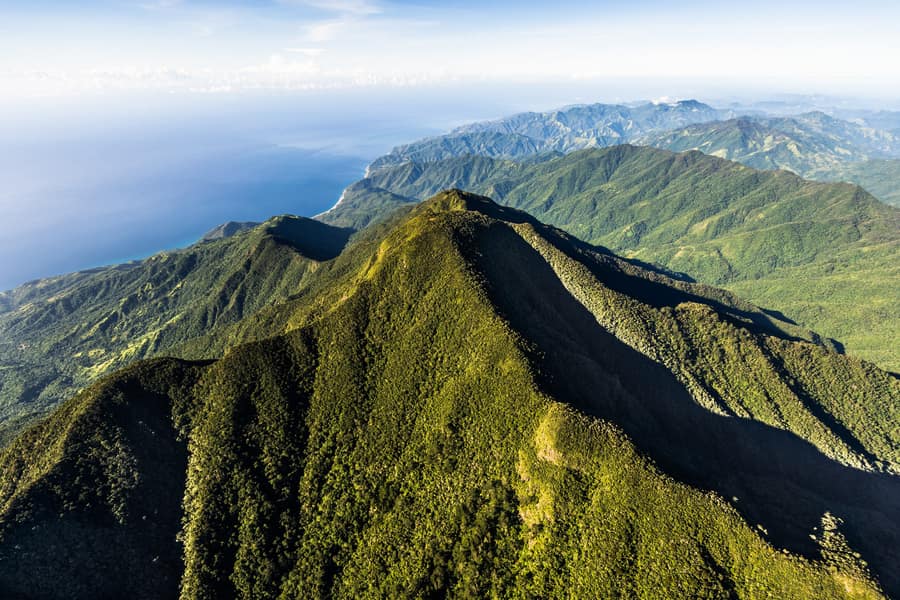
Getting to the top isn’t easy, but if you like hiking, this is a must-do in Cuba . Two paths lead to the top; a 7-mile trail from the Turquino Caves on the coast, and an 11-mile trail from the Bartolomé Masó neighborhood of Santo Domingo.
You can decide which path to take, but you must hike with an official park guide. There is also the option to do a 2-day route, but you’ll have to make a reservation at the San Joaquín campsite.
46. Disconnect in Cayo Blanco, the best thing to do in Cuba as a couple
Have you ever dreamed of going to a deserted island and disconnecting from everything? Well, that is something you can do in Cuba, at Cayo Blanco , a true island paradise.
The best way to get to Cayo Blanco is via catamaran. This trip leaves from Varadero and transports you to that idyllic spot in luxury. The deserted island is perfect for getting away from the hustle and bustle of the cities. You can explore the breathtaking Caribbean waters and pristine beaches in total peace.
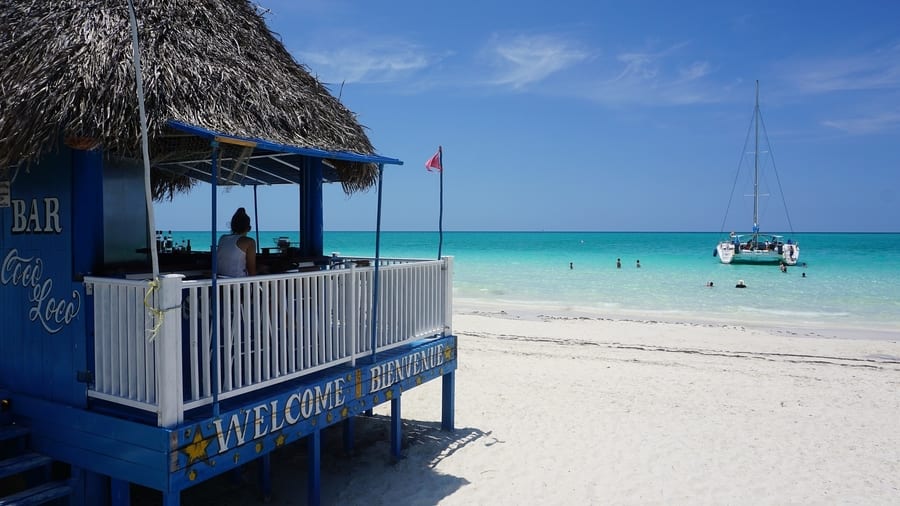
A visit to Cayo Blanco is a great thing to do in Cuba as a couple , too. You may choose to relax and sunbathe or you might want to enjoy some outdoor activities like snorkeling. The seabed is absolutely gorgeous and full of sea sponges, lobsters, crabs, coral reefs, and colorful tropical fish.
The catamaran excursion also includes a buffet lunch and cocktails, so it’s the best way to enjoy a romantic plan in Cuba with your partner.
47. Eat in a paladar , a popular thing to do in Cuba
Paladar translates to ‘palate’ in English, but in Cuba, paladares are owner-run restaurants. Eating in a paladar is one of the best things to do in Cuba if you want to taste authentic Cuban food.
These restaurants are typically in a Cuban family’s home, and they’re one of the few private businesses permitted in the country. Eating at one is like sitting down at the family dinner table and enjoying a home-cooked meal. It’s the best way to experience the local and traditional flavors of the island.
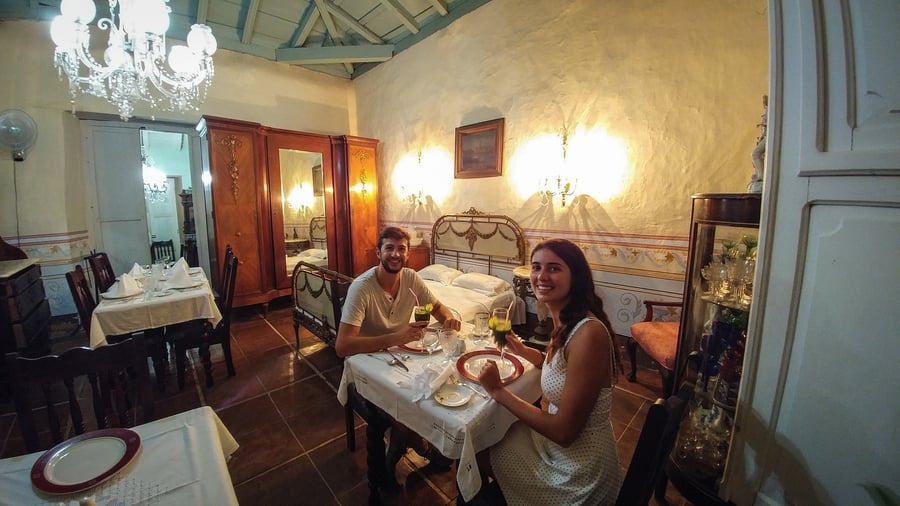
47. Eat in a paladar, a popular thing to do in Cuba
Most paladares in the cities are now restaurants like anywhere in the world. However, you can still find authentic paladares in smaller towns and villages throughout the country. The dishes are usually modest yet delicious and include a base of rice or beans and sometimes pork or chicken.
Grab a seat by the window or door so you can people-watch while you eat. Without a doubt, it’s a fun thing to do in Cuba if you want to feel like a local!
48. Visit the Bay of Pigs, an incredible thing to do in Cuba
If there is something you must see in Cuba , it’s the Bay of Pigs . The site of the failed Bay of Pigs invasion of 1961, is today a remarkable natural beach with crystal-clear waters and idyllic beaches. Unlike other beaches in Cuba, the Bay of Pigs isn’t as touristy, which makes it even more enjoyable.
Here, you can find the Crocodile Farm, Cueva de los Peces, and Long Beach, some tourist attractions in Cuba that I mentioned earlier. There is also Playa Girón , where the Bay of Pigs invasion took place. It’s a nice area for sunbathing and snorkeling, as are Playa Coco and Caleta Buena .
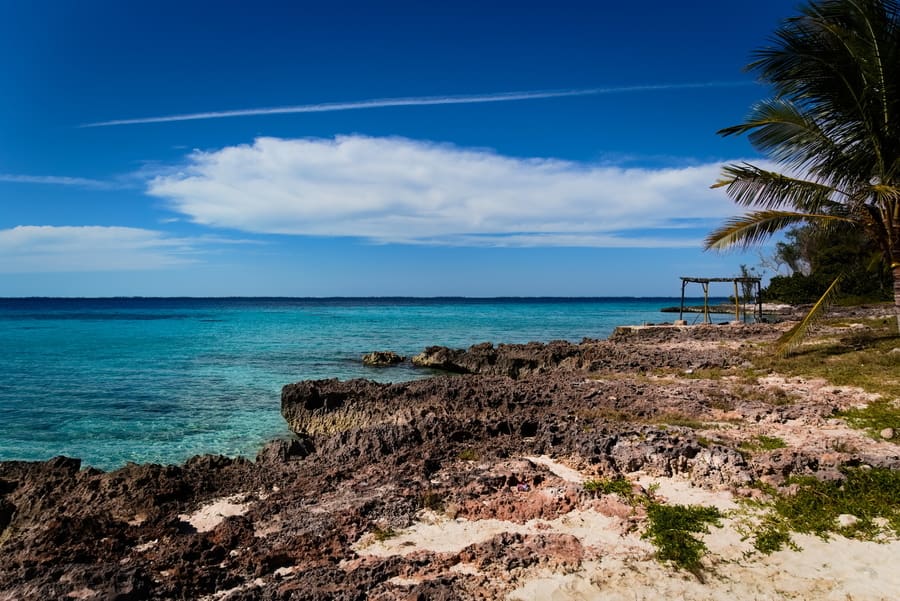
Another interesting thing about the Bay of Pigs is that after the first springtime rains, the road is covered in crabs migrating to the water to spawn. Try to avoid going around that time so you can avoid making a mess!
49. Rent a bicycle, something to do in Cuba as a family
The best way to get around Cuba is via shared taxi, Viazul bus, or the public buses called botellas . I go over all the transportation options in our guide to planning a trip to Cuba .
That said, once you’re at your destination, the easiest way to get around is by renting a bicycle . This is one of the most common activities in Cuba , so you won’t have any trouble finding a place to rent a bike. After asking the locals which sites to check out, we traveled by bike through Havana, Trinidad, and Viñales.

Moreover, you don’t have to worry about parking when you travel by bicycle. Our experience in Cuba was quite positive, and we felt safe while traversing the area on bikes. Plus, we never had problems with storing them, even when we forgot to lock them up!
50. Take in some colonial and Cuban street art
One of the things that struck me the most about Cuba was the colonial buildings and street art . The visual splendor in this country speaks of historical events and moments of greatness. All the art and architecture here is most impressive when you first arrive, but it’s still worth mentioning.
It’s also quite a sight to see spectacular palatial buildings from Cuba’s golden era, today completely in ruins due to economic and political turmoil. Despite the peeling paint, rusty balconies, and grime, the locals have worked hard to turn these ruins into art, and it’s something you must see in Cuba .
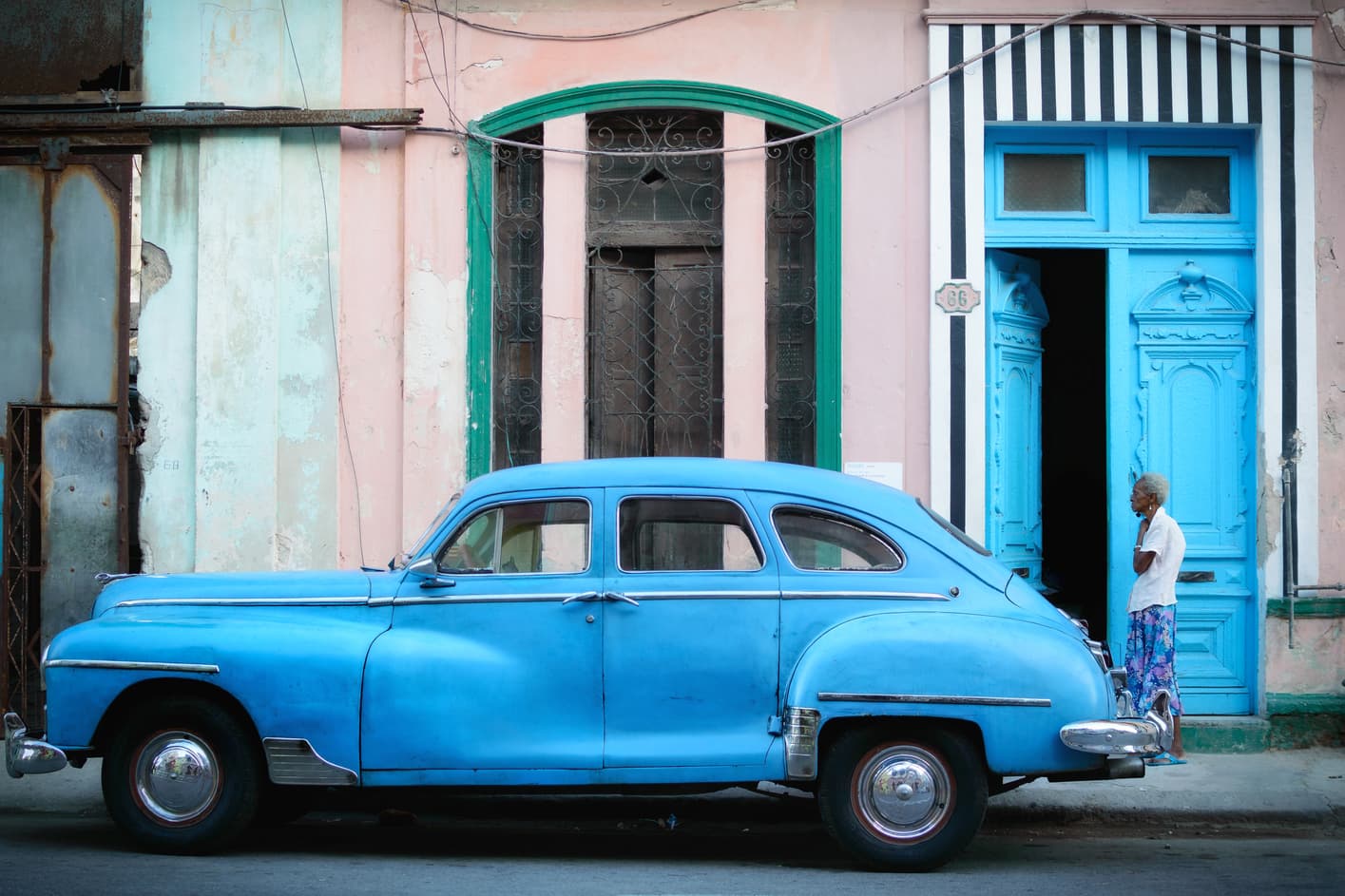
50. Take in some colonial and Cuban street art, another must-do in Cuba
The communal effort of local artists and residents has transformed Cuba into the colorful country we know it as today. If you’re interested in seeing some of the best street art on the island, check out Callejón de Hammel . This neighborhood is the epicenter of Afro-Cuban culture in Havana and a striking artistic attraction in Cuba , full of murals and sculptures.
With that, you now know the 50 best things to do in Cuba . I hope this guide helps you plan your visit! Here is a map of the tourist attractions in Cuba that I mentioned so you can more easily find them.
I wish you safe travels and an enjoyable time in this historically-rich country. If you have any questions, leave them below, and I’ll do my best to help!
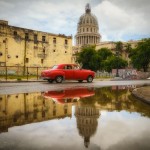
Ascen Aynat
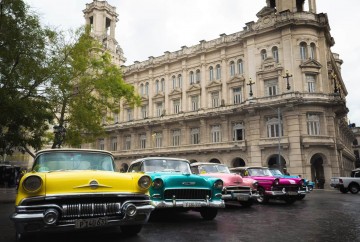
Leave a Reply Cancel reply
Your email address will not be published. Required fields are marked *
This site is protected by reCAPTCHA and the Google Privacy Policy and Terms of Service apply.

Top Things to Do in Cuba - Cuba Must-See Attractions
Things to do in cuba, explore popular experiences, top attractions in cuba.

Popular Cities in Cuba
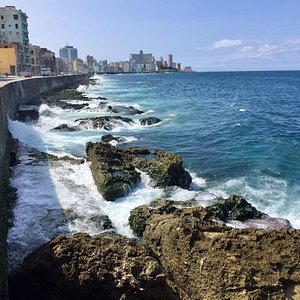
What travelers are saying
- Varadero Beach
- Jardines De La Reina
- Bay of Pigs
- Guardalavaca Beach
- Discover Vinales
- Travel in the Eastern Cuba
- Playa Paraiso
- Valle de Vinales
- Havacubvision
- Cubaoutings
- Free Walking Tour Havana
- The 10 Most Beautiful Spots...
The 10 Most Beautiful Spots In Cuba

Cuba is a long, thin island located in the Caribbean and known for its colorful culture, idyllic beaches, and lush forests. Much of the country’s 42,000-plus square miles of land has been recognized by UNESCO World Heritage for its beauty and historic significance. Here we’ve rounded up a list including some of those sites and beyond as the most beautiful spots in Cuba.
1. old havana.

Old Havana, or Habana Vieja , boasts UNESCO World Heritage status because the city is home to some of the best-preserved history in Cuba. So much so that it feels like time has stopped here. Wander the cobbled streets to find some excellent examples of Baroque and neoclassical architecture like the Cuban Baroque Catedral de San Cristobal as well as historic sites like the Bodeguita del Medio , an old restaurant where Hemingway used to hang out. Don’t miss the Castillo de la Real Fuerza, a military fortress, or the Plaza Vieja, a beautiful town square that serves as an excellent spot to enjoy a mojito in the sun.
Habana Vieja, Paseo de Martí, La Habana, Cuba

Old Havana, or Habana Vieja, boasts UNESCO World Heritage status © Jan Arendtsz / Flickr

Baracoa is a little-known slice of paradise in Cuba. Founded in 1511, it is the oldest city in the country. Unlike touristy resorts, this town has a secluded black-sand beach, peaceful streams, crashing waterfalls to explore and bathe in, and lush forests to hike through. Many visitors come to hike Yunque , a mountain famous for its flat top at 589 meters high that offers incredible views of the sea. Although the hike up is almost entirely vertical, the pathway is shaded and the breathtaking view is so worth the sweat. When you come back into town, you can taste some of the freshest mangoes and papayas in the area.
Baracoa, Cuba

Baracoa is a little-known slice of paradise in Cuba. Founded in 1511, it is the oldest city in the country © PIVISO / Flickr
3. Trinidad

Trinidad’s collection of a well-preserved history is second only to Havana. The UNESCO site has not changed much since the 1800s, and it has an impressive number of vibrant Spanish-colonial buildings. Visit the nearby Playa Ancon , a beach on the southern coast, and dine on rooftop restaurants to enjoy beautiful views at any time of day. Trinidad’s old town is open only to foot and horse traffic, so visitors are free to roam the street markets and view the iconic bright, pastel houses freely from the narrow, cobbled roads. Around every corner is another picturesque delight in Trinidad.
Trinidad, Cuba

The UNESCO site has not changed much since the 1800s, and it has an impressive number of vibrant Spanish-colonial buildings © Matteo Artizzu / Flickr

5. Cienfuegos

Cienfuegos is a city with a clear European style full of grandiose architecture. Called the Paris of Cuba, this city has French influences in both its customs and style. Stroll around the harbor-side town to find the beautiful bay Bahia de Jagua and the art galleries around the Plaza de Armas. Throughout the city and on the coastal drive west to the Bay of Pigs are elaborate, colorful mansions.
Cienfuegos, Cuba

Cienfuegos is a city with a clear European style full of grandiose © Joe Ross / Flickr
Valle de Viñales
Explore this sprawling valley nestled in the Sierra de Los Órganos mountain range. The UNESCO site is filled with tiny towns, towering, rounded limestone cliffs, stick straight pine trees, and traditional tobacco farms. Bike, hike, or ride horses through the lush valley and enjoy the slow way of life. The biggest cigar brands in the country are supplied with tobacco grown in the Valle de Viñales, the area that epitomizes rural Cuban life.

6. Alejandro de Humboldt National Park

7. Peninsula de Zapata
Peninsula de zapata.
Bird watchers and nature lovers should visit this remote area of Cuba for some of the most breathtaking natural sites on the island. Filled with the Parque Nacional Ciénaga de Zapata, the peninsula is one of the largest wetland areas in the Caribbean. The park is a UNESCO Biosphere Reserve and home to around 150 species of birds, including rare bandicoots, waterhens, parrots, and much more. Crocodiles roam the swampland throughout the peninsula, but animal lovers can safely see them up close at the Criadero de Cocodrilos crocodile farm.
Peninsula de Zapata, Cuba

8. Caya Coco
Caya Coco is a stunning rural beach famous for appearing in two of Hemingway’s novels, Islands in the Stream and The Old Man and the Sea . The beach is connected to mainland Cuba by a bridge, but you can also travel by air to the Jardines del Rey archipelago island. The white-sand beaches are covered by cloudless skies and plenty of sunshine, and the gently lapping water is a beautiful turquoise color. Visit the Parque Natural el Bagá to see crocodiles, turtles, and flamingoes.
Caya Coco, Cuba

Visit the Parque Natural el Bagá to see crocodiles, turtles, and flamingoes © WEnDy / Flickr
9. The Malecón
The malecón.
This famous waterfront promenade is one of Havana’s most popular areas and an essential stop for anyone traveling through Cuba. The idea was conceived in 1901, and the Malecón was partly built in 1902. The 7-kilometer road offers a place to walk along the sea and view a well-preserved mixture of different 20th-century building styles in beautiful pastels. There is always something to do on the Malecón. From people watching and lounging by seawall during the day to mixing with the musicians and dancers at night.
The Malecón, La Habana, Cuba

This famous waterfront promenade is one of Havana’s most popular areas and an essential stop for anyone traveling through Cuba © Bryan Ledgard / Flickr
Since you are here, we would like to share our vision for the future of travel - and the direction Culture Trip is moving in.
Culture Trip launched in 2011 with a simple yet passionate mission: to inspire people to go beyond their boundaries and experience what makes a place, its people and its culture special and meaningful — and this is still in our DNA today. We are proud that, for more than a decade, millions like you have trusted our award-winning recommendations by people who deeply understand what makes certain places and communities so special.
Increasingly we believe the world needs more meaningful, real-life connections between curious travellers keen to explore the world in a more responsible way. That is why we have intensively curated a collection of premium small-group trips as an invitation to meet and connect with new, like-minded people for once-in-a-lifetime experiences in three categories: Culture Trips, Rail Trips and Private Trips. Our Trips are suitable for both solo travelers, couples and friends who want to explore the world together.
Culture Trips are deeply immersive 5 to 16 days itineraries, that combine authentic local experiences, exciting activities and 4-5* accommodation to look forward to at the end of each day. Our Rail Trips are our most planet-friendly itineraries that invite you to take the scenic route, relax whilst getting under the skin of a destination. Our Private Trips are fully tailored itineraries, curated by our Travel Experts specifically for you, your friends or your family.
We know that many of you worry about the environmental impact of travel and are looking for ways of expanding horizons in ways that do minimal harm - and may even bring benefits. We are committed to go as far as possible in curating our trips with care for the planet. That is why all of our trips are flightless in destination, fully carbon offset - and we have ambitious plans to be net zero in the very near future.

7 Inspiring Women Who Hail from Cuba

See & Do
The best snorkelling spots in cuba.

Does Fidel Castro Really Have Hundreds of Children?

The Most Beautiful Towns To Visit While Sailing in Cuba

Food & Drink
The best cuban rum cocktails to try.

The Best Cuban Desserts To Try Now

A Guide to Sailing in and Around Cuba

Is Cuban Rum Really the Best in the World?

Guides & Tips
The best cigars in the world: alternatives to the cuban cigar.

Stay Curious: Experience Cuba From Your Living Room

10 Things You Never Knew about Cuban Cigars

Slow Burn: How the Meticulous Craft of Cigar Making Put Cuba on the Map
Culture trip spring sale, save up to $1,100 on our unique small-group trips limited spots..

- Post ID: 693404
- Sponsored? No
- View Payload

18 Top-Rated Tourist Attractions in Havana
Written by Karen Hastings Updated Dec 27, 2023 We may earn a commission from affiliate links ( )
Author Karen Hastings traveled extensively around Cuba and loved soaking up Havana's history and culture.
History and Havana go hand in hand. The name Havana conjures images of Spanish conquistadors, revolutionary heroes, and the literati and glitterati who once basked on these sun-splashed shores. Today, the fascinating history of Cuba's capital awaits you at every twist and turn, in the cobbled streets of Old Havana ; in the beautiful Cuban Baroque buildings; in the historic forts, museums, legendary restaurants, and lively public squares.
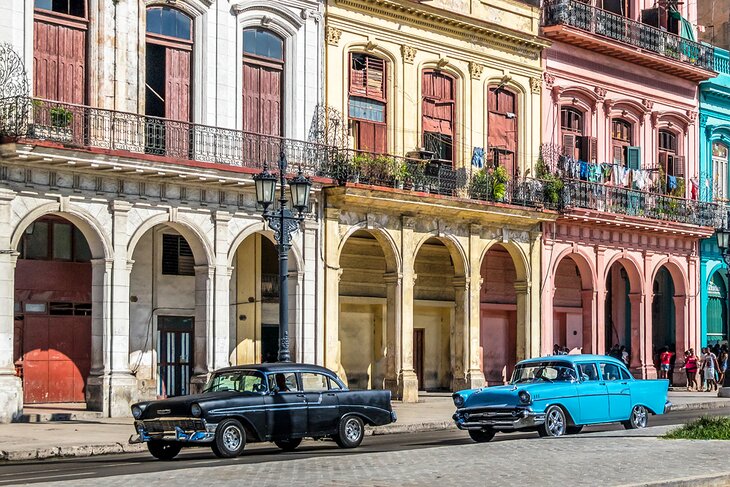
A fiesta for the senses, Havana is a city made to stroll, with plenty of cultural attractions and unique things to do. Listen to live rumba music on a street corner, feast at restaurants where Hemingway once dined, or inhale the salt-soaked air along the famous Malecón.
But perhaps the best part of a visit to Havana is the people. Friendly and outgoing, the locals are proud of their culture-rich Caribbean city and happy to share its historic treasures and many hidden gems. Learn about the highlights and best places to visit with our list of top attractions in Havana, Cuba.
See also: Where to Stay in Havana
1. Old Havana (Habana Vieja)
2. the malecón, 3. plaza vieja, 4. plaza de la revolución (josé martí memorial), 5. el capitolio (national capitol building), 6. museo de la revolución, 7. playas del este, 8. museo nacional de bellas artes, 9. fusterlandia, 10. paseo del prado, 11. fortaleza de san carlos de la cabana, 12. gran teatro de la habana, 13. cojimar, 14. finca la vigia, san francisco de paula, cuba, 15. miramar, 16. museo napoleonico, 17. castillo de los tres reyes del morro, 18. national botanical garden of cuba, where to stay in havana for sightseeing, map of tourist attractions in havana, more places to visit near havana.
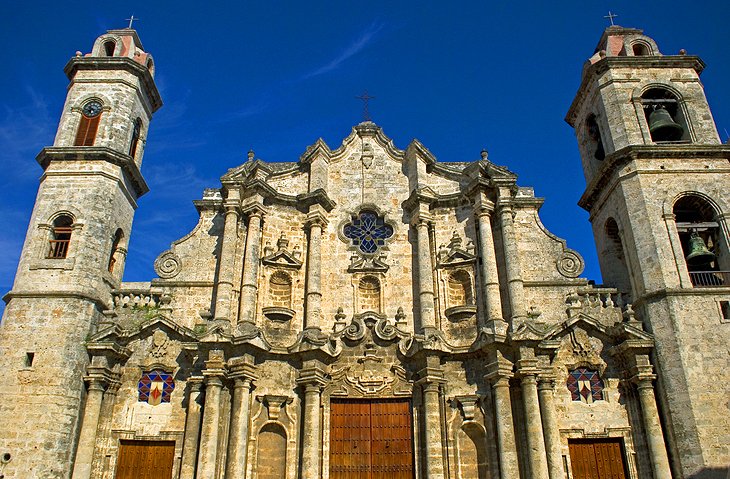
Old Havana, Cuba, a UNESCO World Heritage site, oozes the charm of days gone by. Elegant neoclassical and Baroque buildings border cobbled squares and narrow streets, and many have been carefully restored to their former beauty.
If you're wondering what to do in Old Havana, start your sightseeing tour by heading to one of the popular public squares: Plaza Vieja and Plaza de Armas . The latter is where the splendid Palacio de los Capitanes stands, home to the Museo de la Ciudad (City Museum) and a delightful leafy courtyard.
Other highlights of Old Havana include the magnificent Catedral de San Cristobal , a celebration of the Cuban Baroque style, and the stout Castillo de la Real Fuerza , an impressive military fortress.
To tap into the lively vibe of Havana, take a walk along Calle Obispo . By day, you can browse the shops and art galleries and admire the colorful Cuban Baroque and Art Nouveau architecture. By night, live music lures you into buzzing restaurants and entertainment venues. Here, you'll also find the famous El Floridita restaurant, a must-do on most tourists' sightseeing lists.
After soaking up all the history of this captivating quarter, check out the 35-meter tower of the camera obscura. When open, it offers a breathtaking overview of these well-aged jewels.
Finally, if you're looking for places to eat in Havana, the former Hemingway hangout, La Bodeguita del Medio , serves up succulent seafood and ice-cold drinks.
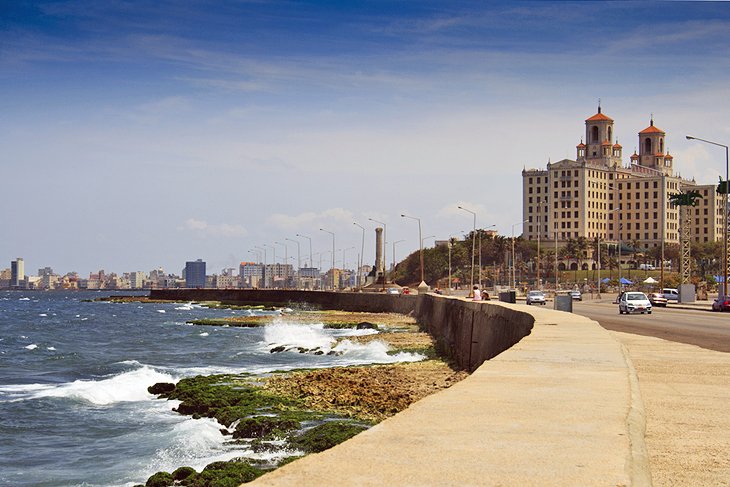
Strolling along the Malecón (El Malecon) at sunset is a wonderful way to soak up the feel of this evocative city and see some sights along the way.
Havana's famous seafront boulevard runs about seven kilometers from Habana Vieja (Old Havana) to the Vedado and Plaza area. Overlooking the boulevard is a colorful collection of well-preserved 20th-century buildings in a mix of architectural styles, from Art Deco to Neo Moorish. In the golden glow of the setting sun, they make a beautiful picture .
The Malecón is also a great place to meet the locals. Anglers come here to cast their lines, and families and young couples saunter along the seafront enjoying the fresh air and ocean breezes.
Those seeking to rest their weary feet should stop by the historic Hotel Nacional de Cuba , a World Heritage Site and a National Monument with a long list of glamorous former guests, including Frank Sinatra, Marlene Dietrich, and Marlon Brando.
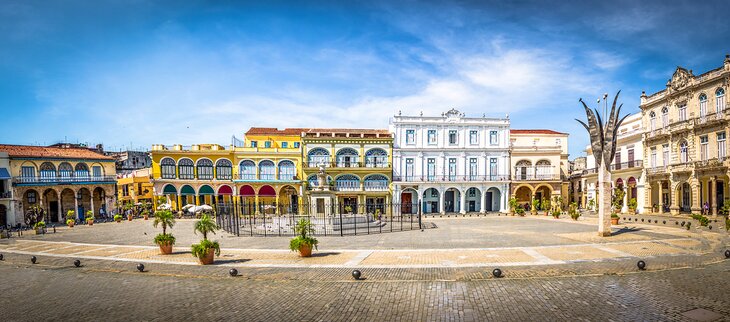
It's easy to see why Plaza Vieja is one of the most popular places to visit in Havana. Set in the heart of Old Havana, this landmark square is lined by colorful buildings depicting a variety of architectural styles. Whether you're a fan of classic, Baroque, or Art Nouveau, you'll find something to love in this historic square, which dates to 1559.
Tourists love visiting this bustling plaza because it is packed with fun things to do. Enjoy a meal al fresco, grab a coffee in a café, enjoy the view from the Camera Obscura , or ogle the impressive stained-glass windows. Families and couples alike could spend hours here, and they do. Be sure to arrive hungry!
Once known as Plaza Nueva, which means New Square, Plaza Vieja (Old Square) has been recently revamped, becoming one of the most visited places in the city.
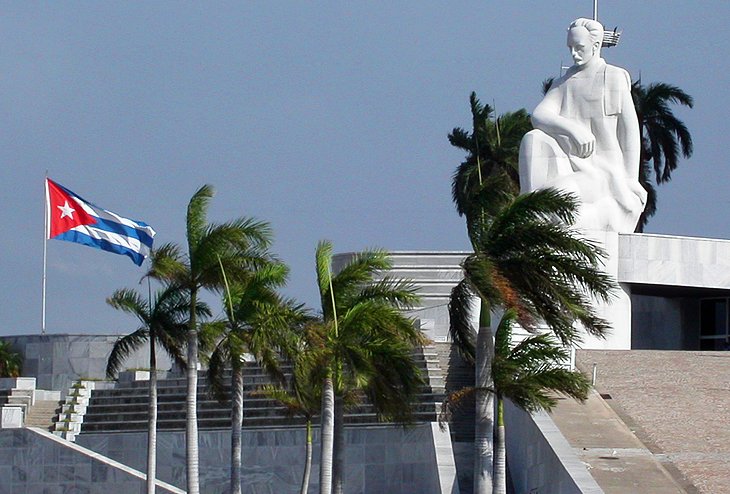
The Plaza de la Revolución (Revolution Square), formerly the Plaza Civica before the Revolution, is worth a brief stop due to its historical significance. During a 1998 visit to Cuba, Pope John Paul II celebrated mass in this famous square, and more than a million people have gathered here for Castro's speeches.
Overlooking the square is the José Martí Memorial with a 109-meter gray tower and white marble statue of the Cuban national hero. You can browse the small museum here or take the lift up the tower for panoramic city views.
Government buildings surround the square, including the Ministry of the Interior building adorned with the iconic image of Che Guevara.
Address: Paseo y Calle 39, Havana, Cuba
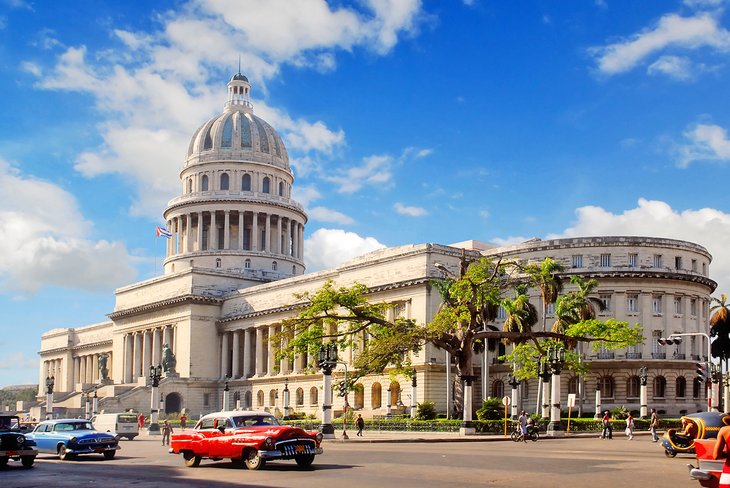
Travelers to Havana who have visited Washington, D.C. may do a double take when they see beautiful El Capitolio, inaugurated in 1929. Rising from the city skyline, this grand building is reminiscent of the American Capitol building, but it was the Panthéon in Paris, which reputedly inspired its distinctive cupola.
The structure displays a blend of neoclassical and Art Nouveau styles and was the seat of government until 1959, after the Cuban Revolution.
For a small fee, you can take a guided tour of the recently restored building, with headsets provided in the language of your choice. Highlights include the grand hallways, beautiful inlaid marble floors, and massive dome.
Atop the dome is a replica of the bronze sculpture Mercury, originally created by the 16th-century Florentine sculptor Giambologna. Below the dome is a replica of a 24-carat diamond. This reputedly marks the point from where all highway distances between Havana and other destinations in Cuba are measured.
El Capitolio remains a striking landmark for those wandering around Havana; its huge dome is visible from almost anywhere in the city.
Address: Paseo de Marti, (Prado) Havana, Cuba
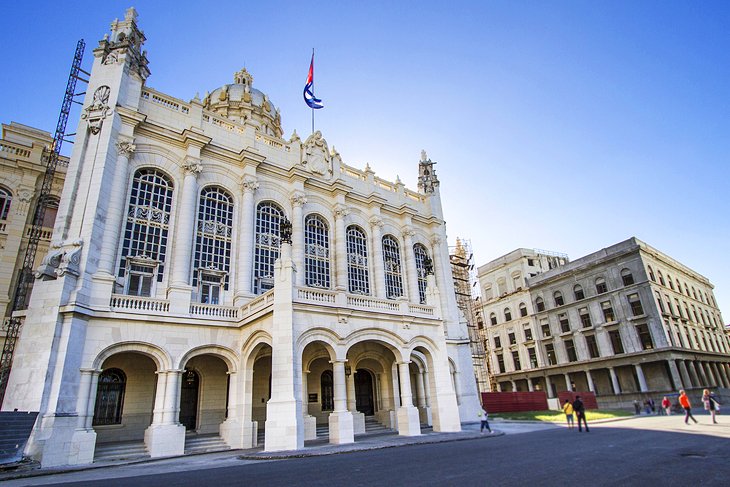
Housed in a former presidential palace, the Museo de la Revolución (Museum of the Revolution) is worth seeing even if only from the outside. The old presidential palace was designed by the Belgian architect Paul Belau and was built in the early part of the 20th century in a sumptuous version of neoclassical architecture.
Those who do venture inside are treated to a multitude of displays on Cuba's struggle for independence, colored with a revolutionary spin. Of note are the life-size wax figures of Che Guevara and Camilo Cienfuegos.
Behind the museum is an interesting display of the yacht Granma. It was this boat that brought Fidel Castro and his gang to Cuba from Mexico. Also on display is a plane shot down during the ill-fated Bay of Pigs invasion.
Address: Calle Refugio 1, Havana, Cuba
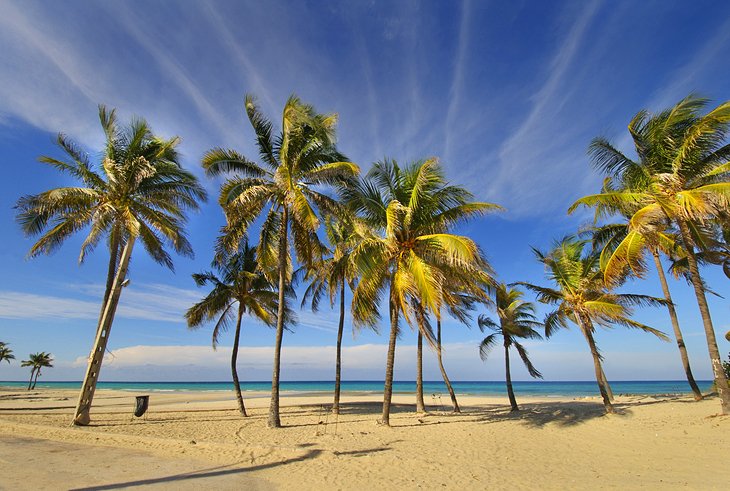
A short drive from Havana's city center, Playas del Este is a long stretch of palm-fringed beach that runs for miles. This is a great alternative for travelers who are unable to visit the more remote beach resorts in other parts of Cuba.
Along Playas del Este sightseers will find hotels, restaurants, and all the regular tourist facilities. The beach is divided up into sections, with one of the best stretches at Santa Maria del Mar , a popular tourist spot. Another beautiful section and a locals' favorite is Guanabo , although this area offers fewer tourist services.
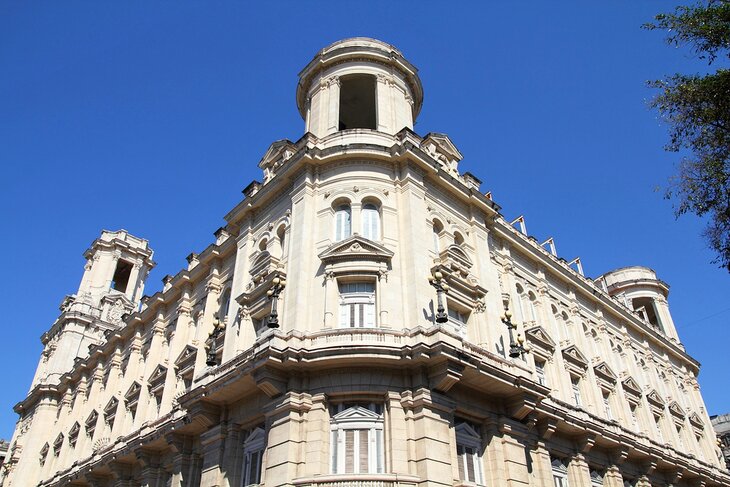
Spread across two buildings, Havana's Museo Nacional de Bellas Artes (National Museum of Fine Arts) is a must-see for art lovers.
The restored Palacio del Centro Asturiano, designed in the 1920s by Manuel Bustos, houses Art from European Masters and a collection of more than 600 works of Ancient Art, from the Egyptian to Roman ages.
Dating from 1959, the Rationalist-style Palacio de Bellas Artes building is dedicated to Cuban Art from the 17th century to the present day. Here, you can admire an impressive collection of paintings, prints, and sculptures. One of the highlights is the unique marble sculpture "Form, Space and Light" at the museum entrance.
The museum is open Thursday through Saturday from 9am to 5pm and on Sundays from 10am to 2pm.
Palacio de Bellas Artes
Address: Trocadero Street e/Zulueta y Monserrate, Old Havana
Palacio del Centro Asturiano
Address: San Rafael, e/Zulueta y Monserrate, Old Havana
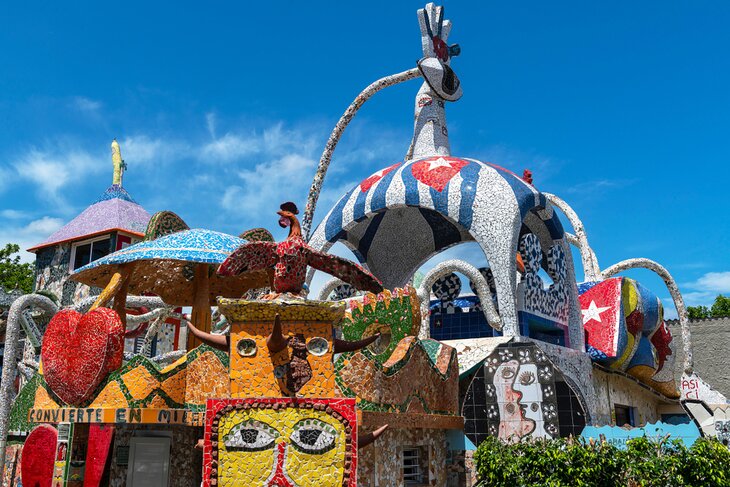
Calling all art lovers! If you're looking for some inspiration, this whimsical wonderland is one of the must-see places to visit in Cuba . Decorating a small village on the outskirts of Havana, Fusterlandia is a complex of three-dimensional neighborhood art and a rhapsody of color and creativity.
Local painter and sculptor José Fuster created this kaleidoscopic display of mosaics, sculptures, and paintings throughout the neighborhood to represent his life and art. Affectionately known as the "Picasso of the Caribbean," Fuster even decorated neighbors' homes and bus shelters.
Stroll through the streets to see the vibrant creations popping out of houses and public areas, then visit Fuster's home studio, and see where he creates this multi-hued feast for the eyes.
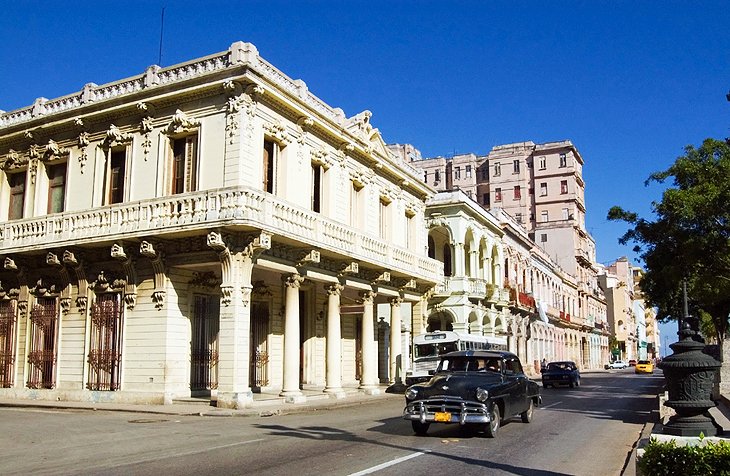
Considered by many to be the most beautiful street in Havana, the tree-lined Paseo del Prado bordering Old Havana deserves a leisurely stroll.
The terrazzo, marble benches, bronze lions, and iron lampposts impart the feel of a grand boulevard from a bygone era, and indeed the street was once home to some of Havana's wealthiest families.
Elegant old cinemas, mansions, and hotels from the 19th and 20th century line the street, many of which have been carefully restored. Highlights include the Hotel Sevilla , with its Moorish styling; the home of Dr Carlos Finlay, the man who discovered that mosquitoes spread yellow fever; and Havana's most famous wedding chapel, the Palacio de los Matrimonios .
The Paseo del Prado is a popular meeting place and people-watching spot at any time of day.
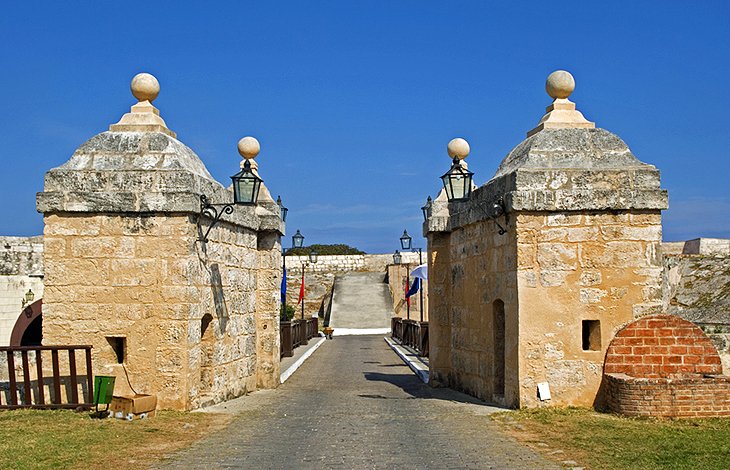
About a 15-minute walk from El Morro in the Parque Historico Militar , the huge Fortaleza de San Carlos de la Cabana, also called the Castillo de San Carlos de la Cabana, sits atop La Cabana hill.
At the time of its construction in the 1770s, it was the largest fort the Spanish had ever built, as well as the most costly. Following the British occupation, the Spanish set about building this imposing fort, which dominates the entrance to the Bay of Havana.
La Cabana, as it is usually referred to, was used as a military prison during the Batista regime and later became the headquarters for Che Guevara following the Revolution.
Today, the fort houses a few museums. The most impressive is the Museo de Comandancia del Che , with the office of Che Guevara preserved as it was during his time here. Some of his personal items are also on display.
During the day, the fort offers splendid views over the city and the sea. And if you're looking for things to do in Havana at night, come here for the Ceremonia del Cañonazo, when actors clad in 19th-century costumes perform a cannon-firing ceremony at 9pm each evening.
Address: 4MW2+R5R, La Habana, Cuba
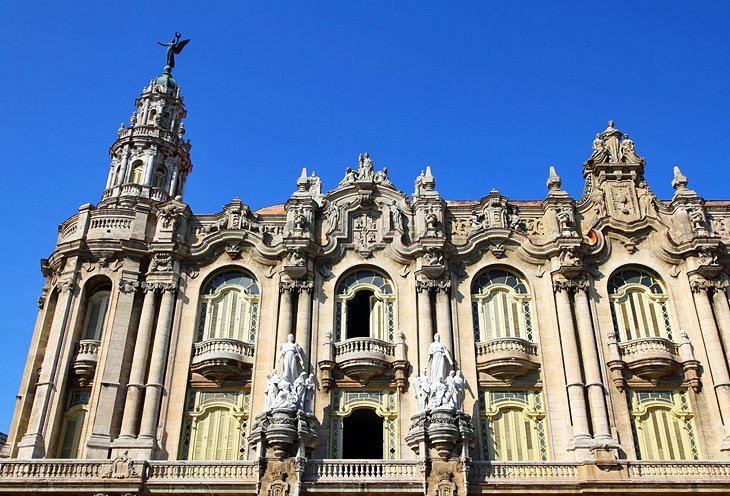
You might not expect to find one of the world's largest opera houses in the middle of the Caribbean, but the magnificent Gran Teatro de La Habana is just that.
Designed by Belgian architect, Paul Belau, the theater faces Parque Central and was built as part of a larger complex in 1915. Art aficionados will be pleasantly surprised by the beautiful Baroque façade, which features four stunning sculptures created by the master, Giuseppe Moretti.
Over the years, the Gran Teatro de La Habana has hosted a wide variety of performances by some of the most famous celebrities in the world. Today, the theater is home to Cuba's National Ballet and Opera.
Try to catch a performance while you're here to truly appreciate its grandeur and excellent acoustics. Guided tours are also available.
Address: Prado e/ San jose y San Rafael, Havana, Cuba
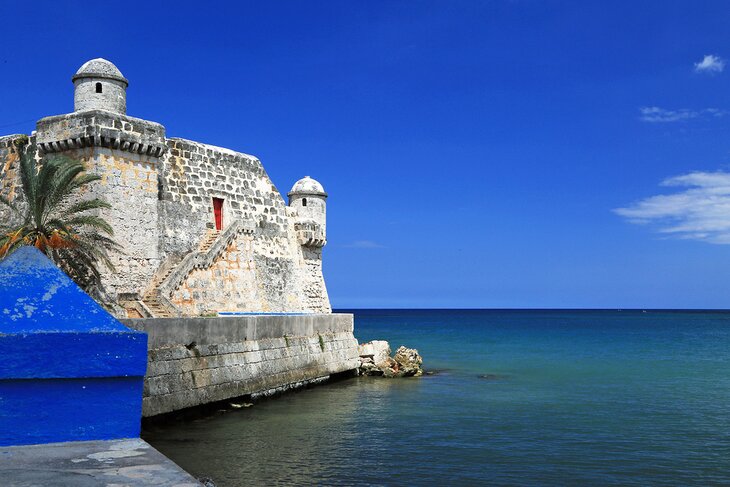
Hemingway fans should visit the small fishing village of Cojimar, about 20 minutes east of Havana by taxi. During the 1950s, Hemingway visited Cojimar often and made it the setting for his novel, The Old Man and the Sea. He also kept his boat the "Pilar" here, and could often be seen socializing with locals in the streets.
These days, tourists come here to visit the square named in his honor and see the statue of the famous scribe. Perhaps inspired by Hemingway's legacy, many artists from Havana and other parts of Cuba are drawn here.
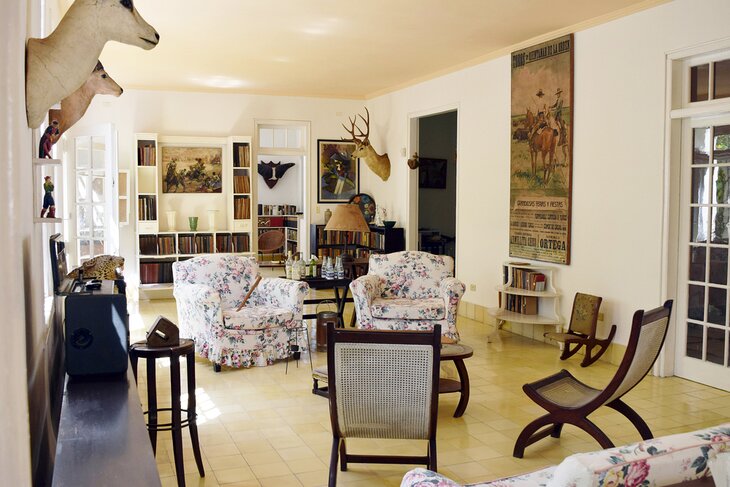
About 16 kilometers east of Havana in the town of San Francisco de Paula, Finca La Vigia was the part-time residence of Ernest Hemingway for 20 years. He lived here between 1939 and 1959, despite all the turmoil in Cuba during that period.
Upon Hemingway's death, Finca La Vigia was turned into a museum, the Museo Hemingway . The house remains as Hemingway left it, with more than 8,000 books on display, as well as artwork, hunting trophies, the author's typewriter, and other personal belongings.
Visitors are not allowed inside, but it's possible to peek in through the windows, unless the house is closed up during rainy weather. You can also wander through the garden to see Hemingway's fishing boat, "Pilar," which he had kept in Cojimar. The garden is also home to a pet cemetery, the final resting place for some of his beloved cats.
The museum is open from 10am to 5pm Monday through Friday and from 10am to 4pm on Saturdays. It is closed on Sundays. Admission is 125 CUP per person.
Address: 3P93+3WX, Finca Vigía Km. 12 ½, J Sosa, La Habana, Cuba
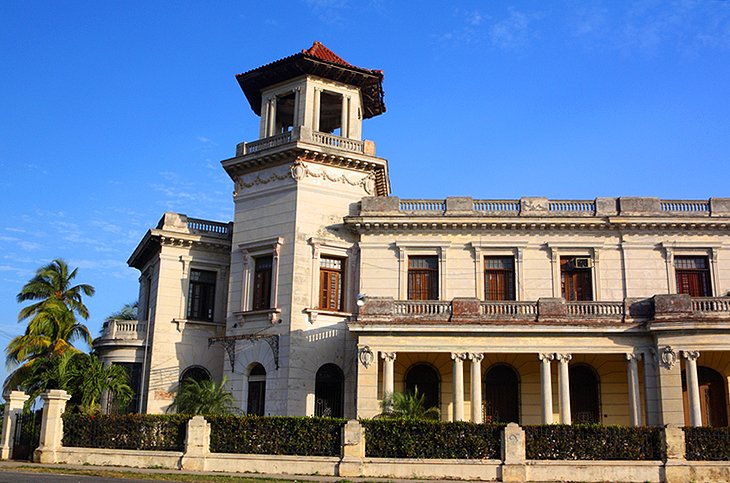
Lying to the west of Havana's historic city center, Miramar has traditionally been an upscale area. Today, it maintains this reputation with the addition of upper-end hotels and restaurants.
You can cruise the wide, tree-lined avenues here and admire the stately homes, some of which have become embassies and government offices after the original owners fled during the Revolution.
The main street in Miramar is Avenida 5 , with its Miami-style Art Deco mansions and grand homes. The Avenues are numbered; Avenida Primera (First Avenue) is closest to the ocean.
Another worthwhile tourist attraction in Miramar, other than the general ambiance of grandeur, is the Maqueta de La Habana with a scale model of the city.
Address: 5ta Ave y calle 112, Havana, Cuba
Near the impressive Universidad de La Habana (University of Havana), the Museo Napoleonico in Havana displays the private collection of Julio Lobo, who was a collector of all things Napoleon.
Lobo hired people to find and purchase Napoleonic mementos and memorabilia for his personal collection. When Lobo left Cuba in 1959, his collection was purchased by the Cuban government and is now housed in a beautiful building styled on a Florentine palace.
On display are personal items belonging to Napoleon, including one of his teeth and a lock of his hair. The Museo Napoleonico also contains Napoleon's death mask, a library of related topics, weaponry, and two portraits of the famous French military leader by Andrea Appiani and Antoine Gros.
In total, the collection contains more than 7,000 pieces. It is one of the finest collections of Napoleon artifacts outside of Europe.
Address: San Miguel 1159, Havana, Cuba
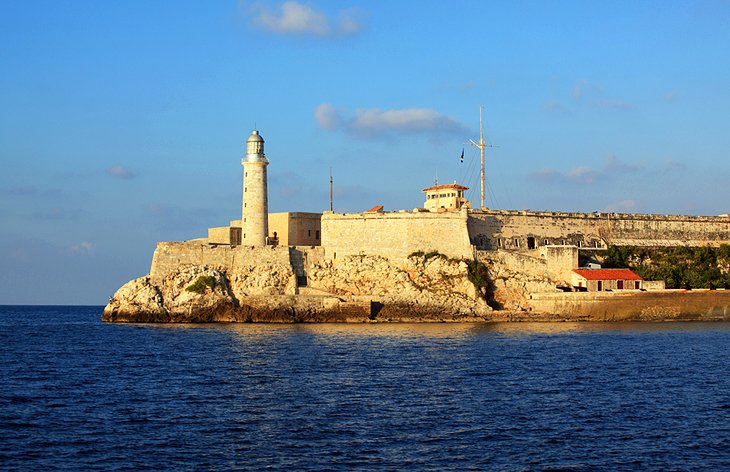
Castillo de los Tres Reyes del Morro , also known as El Morro, stands proudly at the entrance of the Bay of Havana in the Parque Historico Militar .
El Morro was built in the late 16th century and early 17th century to guard against the constant threat of pirate attacks. It was designed by Italian engineer, Giovanni Battista Antonelli and looks much the same as it did in the 17th century.
One of the main changes to the fort is the lighthouse. It was rebuilt several times and then finally replaced in the middle of the 19th century with a new lighthouse constructed of solid stone. Today, its original lamp still shines, and the fort is open to tourists. You can enjoy beautiful views over the ocean and the city of Havana from its upper reaches.
Address: 5J2V+34X, La Habana, Cuba
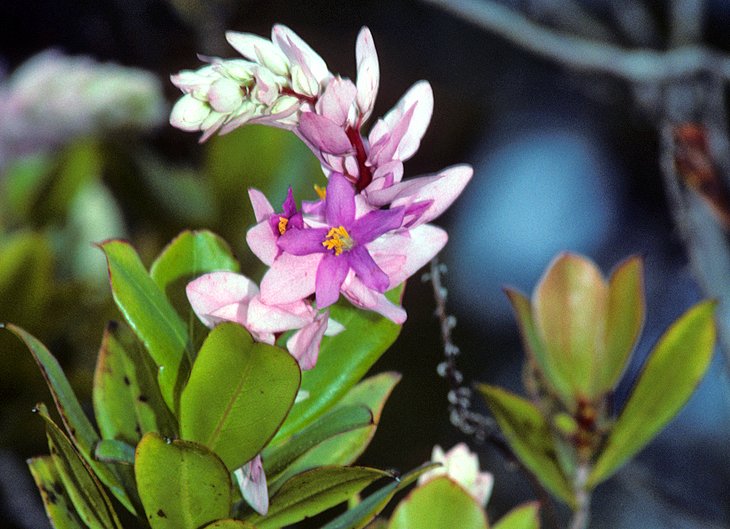
About 10 kilometers south of Havana, the Jardin Botanico Nacional encompasses 1,500 acres of botanical wonders from around the globe. The garden lies near Parque Lenin , a popular recreational area, and is divided into geographical zones.
You can hop aboard a train to enjoy an effortless two-hour tour through the gardens. Highlights of the park are the Jardin Japones (Japanese Garden) with a pond, waterfalls, and gazebos, and the Pabellones de Exposicion with cactuses and tropical plants. For a look at local flora, check out the Caribbean section, which contains about 3,500 species native to Cuba.
Address: Carretera del Rocio Km 3, Calabazar, Arroyo Naranjo, Havana, Cuba
Exploring Havana is one of the top things to do in Cuba. To truly soak up the history and culture of Havana, the best place to stay is in or close to Old Havana, with its historic buildings and cobbled plazas. Areas of Central Havana and the eastern end of the waterfront promenade called the Malecón are within walking distance to Old Havana, and also make a convenient base. Most of these hotels include breakfast but keep in mind that Havana hotels tend to be pricey, and a five-star hotel here would generally be rated much lower elsewhere. Here are some highly rated hotels in these convenient areas:
Luxury Hotels:
- Overlooking the Malecon and the ocean, a short taxi ride from Old Havana, the iconic Art Deco Hotel Nacional de Cuba is the grande dame of Havana hotels. Former guests include Hemingway, Winston Churchill, and Rita Hayworth.
- In a fantastic location right in the center of Havana, close to El Capitolio, the Museum of the Revolution, and Old Havana, the Iberostar Parque Central occupies a Spanish colonial-style building and an adjoining modern tower. You can enjoy beautiful views over the city from the rooftop pool.
- Also with a rooftop pool, Hotel Saratoga sits across the street from El Capitolio and is only a short walk from Old Havana highlights.
Mid-Range Hotels:
- Steps from the Museum of Fine Arts, the historic Hotel Telegrafo overlooking Parque Central was a former press haunt. Its renovated guest rooms are large and comfortable, with high ceilings and huge windows.
- In the heart of Old Havana, the Baroque and Art Nouveau-style Hotel Raquel has an impressive stained-glass dome in the lobby and a beautiful rooftop garden.
Budget Hotels:
- Elegant colonial-style architecture and a convenient location opposite Parque Central are the best features of the historic Hotel Inglaterra , Cuba's oldest hotel.
- On a pedestrian-only street, a stone's throw from Plaza Vieja in Old Havana, Hotel Los Frailes has a great location and a quirky monastic theme.
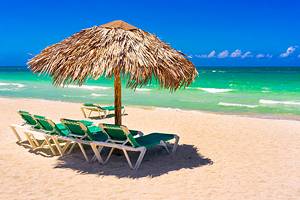
Head to the Coast: Besides the rich history of Havana and Old Havana , the island of Cuba has more than 5,700 kilometers of picturesque coastline. Craving some beach time? Varadero , about a two-hour drive away, flaunts one of the most beautiful beaches in the Caribbean , 20-kilometer-long Varadero Beach.
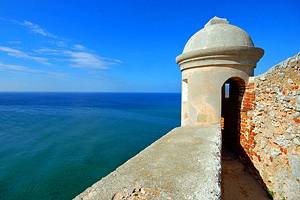
Cuban Culture: Drive south from here for about four hours to soak up the colonial history of World Heritage-listed Trinidad . From here, you can also take day trips to waterfalls; more beautiful beaches; and the lush Valle de Los Ingenios, another World Heritage site. On Cuba's southeastern side, Santiago de Cuba , is the country's second-largest city, with a rich Afro-Caribbean heritage.

More on Cuba
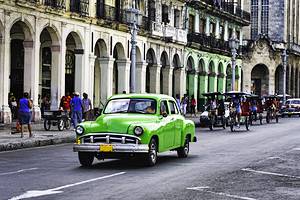
- Search Search Search …
- Search Search …
34 Iconic Things to Do in Cuba
Cuba is a world away from other places that you’ll visit. This revolutionary island that claimed independence underwent a revolution and fought off an American invasion has many unique aspects. It’s an island with a huge history, a challenging future, and seriously interesting things to do. Whether you’re visiting Cuba for a week or longer, there is plenty in Cuba to keep you occupied. Here’s our inspiration for things to do in Cuba for your trip.
THIS POST MAY CONTAIN COMPENSATED AND AFFILIATE LINKS. MORE INFORMATION IN OUR DISCLAIMER
When you come to Cuba you want to make sure that you do and see the things that make Cuba what it is today. Welcome to the iconic things to do in Cuba.
The Top 34 Iconic Things to do in Cuba.
These Cuba experiences are unique in many ways to the island – there are places and things to visit in Cuba that you won’t find anywhere else. Even if you’re staying in a Cuba all-inclusive you can get out and about and see some of the unique and iconic Cuban things to do.
#1 THING TO DO

Take a Classic Car Tour of Havana
Take an iconic classic car tour of Havana – cruise the Malecon, visit the Plaza de la Revolution, see El Capitolio, and stop for cocktails at the Hotel National.
1. Stay in a casa particular in Cuba
There is no better way to experience Cuban than by staying with a Cuban family. The Casa Particular Cuba movement came about in the early 1990s when the tourist trade started to pick up following the dissolution of the Soviet Union. Before this 80% of imports came from the Soviet Union, and a similar amount of Cuban exports went there. The changes meant that Cubans had to find an alternative source of revenue. Originally staying in a Casa Particular was informal, but since 1997 the Cuban Government has issued licenses and it’s all above board now. Staying in a Casa Particular gives you a certain insight into the Cuban way of life. Casa Particulars range from renting an entire apartment, house, or villa from a private owner, or just a room in their house. It’s all official, above board and government sanction and the owners do pay a tax for providing this service.
There are some incredible Casa Particulars in Cuba, with amazing hospitality and fantastic food. Check out our guide to casa particulars and get the low down on everything you need to know about where to stay in Cuba. Y ou can book your Casa Particular Stay with Homestay here . I recommend Homestay as they don’t charge the Casa Particular owner any fees, so more of your money remains with the Cuban people.
2. Explore Havana, Cuba
There is no better way to explore Havana than just to go for a walk. Wherever you’re staying, there are things to see. Many Cuban’s live a lot of their life out on the street. So a walk around the streets of Havana will have you seeing a lot of Cuban life. Whether it’s old Havana or the Vedado district. You’ll find street vendors, stunning and dilapidated buildings, and gorgeous old cars. Be sure to try and end up on the Malecon for Sunset.
If you don’t feel comfortable exploring by yourself, take a private tour with a Cuban local and get more of an understanding of the way of life here.
You’ll find more on the best things to do in Havana in our guide to Havana here.
3. Visit Hotel Nacional in Cuba
The iconic Hotel Nacional just back from the Malecon in the Vedado district of Havana was opened in 1930 when Cuba was a major tourist destination for wealthy Americans. Today it is a National Monument in Cuba and is a famous location for a mojito on the lawn. Famous visitors have included Sir Winston Churchill, Frank Sinatra, and Johnny Weissmuller.

4. Walk or Drive along Havana’s Malecon at Sunset
A Malecon is an esplanade or seawall. In Havana, the Malecon stretches for 8 kilometers (5 miles) from the Havana harbor mouth to the Vedado neighborhood. Subject to the beating Caribbean sun during the day the atmosphere at sunset and in the early evening is both electric and quintessentially Cuban. The falling down dilapidated buildings take on a magical air, the classic Cuban cars look magical and the entire city comes to cool down.

Malecon across Cuba were laid out in the early 1900s and has been a way of life since. Havana’s Malecon makes for amazing photos, as much exercise as you want, and an incredible insight into Cuba. Ride down the Malecon at sunset in a classic car – it’s iconic Havana .
5. Take a FREE Walking Tour of Old Havana
Like many cities around the world, it’s possible to take a free walking tour of Havana. The tours are tip-based and run in English and Spanish. They’re a great way to get an introduction to the city of Havana and also the Cuban culture. They focus on old Havana, and you’ll come away with lots of tips on where to eat and what to do while you’re in the city and the country.
Reservations are required , and you meet at 1000 and 1500 each day by the Fountain of the Lions in Francisco de Asís Square, also known as Plaza de las Palomas. Tours last about 2 hours and 30 minutes.
6. Engage your inner Hemingway and drink a Daiquiri at El Floridita
This bar opened in 1817 but didn’t become El Floridita until 1914. It became famous because of regular visitor author, Ernest Hemingway, who is remembered by the bronze bust placed in the bar in 1954 and the life-sized statue of “Papa” which has been at the bar since 2003. It’s definitely a tourist hot spot and whether you get the famous daiquiri here or not probably depends on your determination to outstay the crowds. Visit Hemingway’s favorite bars, his home, and his inspiration on this Hemingway-inspired day tour from Havana.

The bar is famous for the daiquiri cocktail, invented in Eastern Cuba, but perfected here by barman Constantino Ribalaigua. You can take a Hemingway-inspired tour of Havana and get yourself a Hemingway Daiquiri at El Floridita.
7. Drink Mojitos in Cuba
No mojito will ever taste the same after you’ve had one, or more, in Cuba. Sure you should go to famous places, but you should also take up offers from your Casa Particular owner to make you one. They will knock your socks off. And you will definitely sleep well. Havana, Cuba is recognized as the birthplace of the Mojito. Legend has it that following a raid at Cartagena de India in Colombia, Sir Francis Drake‘s ships sailed to Havana. An epidemic of dysentery and scurvy broke out, so it was a small boarding party that went ashore and brought back a local remedy for both. The ingredients of the remedy were aguardiente de caña (a rum made from sugar cane), lime, mint, and sugarcane juice. While it wasn’t called a mojito at the time and rum was added by the sailors, it fast became a favorite.
You can learn more about the history of Cuban Cocktails in our guide here .
La Bodeguita del Medio in Old Havana is famous as where author Ernest Hemingway drank his mojitos. Nowadays the bar is more recognized for its food, than the quality of its mojitos, but it’s well worth the US$5 per drink to watch them being made.

8. Drink Craft Beer in Cuba
Rum might be the drink of choice in Cuba, but a craft beer revolution is starting. Head to Cerveceria Puerto Del Rey on the riverfront in Santiago de Cuba – where you can try a flight of beer brewed here. Or if you don’t get as far as Santiago de Cuba, head to Cerveceria Antiguo Almacen de la Madera y El Tabaco this old wood and tobacco warehouse is part of the revitalization of Havana’s harbor. There’s another cerveceria in Plaza Vieja too that’s well worth a visit – the Cerveceria Fabrica Plaza Vieja.
9. Explore Cuban’s Revolutionary Past
You simply cannot come to Cuba and not understand at least a little of her revolutionary past. Before you come I’d recommend you at least read a basic history, it will help you understand the people so much more. Here’s a basic history of Cuba – in recent times at least.
If you do nothing else culturally in Cuba, then I recommend you visit the Museum of the Revolution. We know from our travels that national museums control the message. The Museum of the Revolution is no different.
Interested in the Cuban Revolution? Follow our 7 day Cuban Revolution Travel Itinerary here
The Museum of the Revolution is housed in the old Presidential Palace of Cuba. Following the Cuban Revolution, it became the Museo de la Revolución. It covers the Cuban revolutionary war of the 1950s and the history of Cuba since 1959. Many of the exhibits are in Spanish, but there is also some detail in English.
If this museum does nothing other than question what was written in the newspapers of your home country then (for me) it’s done its job.

10. Find out about the history of Cuban Rum
If there’s one drink that epitomizes Cuba then it’s rum. The most famous brand of which is Havana Club. And you won’t find a cheaper place to buy Havana Club than in Cuba. Cuba is famous for rum-based cocktails like the Mojito, the Daiquiri, and the Canchanchara. There is a museum of rum in Havana that you can find here . However, I think the better rum museum in Cuba is in Santiago de Cuba and it’s here that you should head to find out more about the history of Cuban Rum.
11. Ride in a Colectivo while in Cuba
Much of the economy of Cuba has been driven by necessity. Ownership of private cars is low, the national wage is around US$30 a month. A sharing economy is very much at the forefront of life and so using colectivos to get around is the norm. A colectivo is simply a shared ride that you pay for. Think of it as the shared airport pickup or shared minivan between points A and B. Only in Cuba, your colectivo might be a 50-year-old. They don’t always provide 21 st -century comforts and there might be a few more people in the sharing that you’re normally used to, but they’re well worth an experience.
12. Ride in a Classic Car in Cuba
Classic cars really are the icon of Cuba. Even though they’re primarily American. There are so many American Classic Cars in Cuba because there were so many trade restrictions placed on the country following the Cuban Revolution. So no new imports of cars came into the country, as it was too expensive to import from countries other than the USA, which is only 180 kilometers away. And so a make-do and mend attitude came into the Cuban way of life. So these classic cars you see driving around the streets of Havana and other cities are there not just for tourists, but they’re a way of life and a necessity. So when you find the plastic-covered seats an annoyance, consider the sacrifices that the owner had to make to get the car restored. Book the best classic car tours of Havana here.

Riding in a Cuban Classic Car along the Malecon in Havana is one of the most iconic experiences. You can pre-book this experience, or even take a tour around Havana in a classic car. Read more about it here , or book your Cuban Classic car experience now.
13. Ride a Train in Cuba
2019 saw changing fortunes for trains in Cuba, with the first new train in more than 40 years! With support from the Chinese government, Cuba hopes to rebuild the Cuban rail system by 2030. The deal with the Chinese government has seen 80 Chinese-made new rail carriages, with a further 170 due to arrive by the end of the year. The trains, however, run slowly as the tracks require repair. Buy tickets from the Havana railway station and check out more details about Cuba’s trains here .
14. Celebrate May Day in Havana, Cuba
May 1 st is the traditional public holiday of “Workers Day” around the world. If you’re lucky enough to be visiting Cuba on May Day then come together with Cubans from all walks of life and march towards Plaza de la Revolucion in Havana. The parades are immense, the flag-waving and banner carrying are stirring and it starts early. No public transport runs until it’s all over. Even taxis are unlikely to be running as the streets are so crowded. We left our casa particular at 0530 and walked towards Plaza de la Revolucion, hitting a backlog of crowds and joining in. The drinking starts early on May Day too. We’re not sure if folks had made it home or if they’d been out all night and just gone straight to the parade. Here’s what it’s like to spend May Day in Cuba.

We were in Havana during the May Day Parade and had a great time – if you get the chance do attend!
15. Visit the public parks to get some internet in Cuba
The internet in Cuba has come slowly. While it is possible now to get some mobile internet (read my guide to esims here ) and some internet access in hotels and private homes, the vast majority of internet access is still via public Wi-Fi hot spots in parks.

There are more than 1000 Wi-Fi hotspots across Cuba and access can be gained by buying cards for time periods. Read more about how to get access to the internet in Cuba here.
Regardless of how you access the internet in Cuba – please do consider using a VPN. If you plan on making online bookings (say for the Viazul Bus, or a Casa Particular), checking details of your return flight, or even using some social media sites then you’ll need a VPN in Cuba. The VPN that I use (12+ years now) and recommend is ExpressVPN – this link gives you 3 months for free
16. Understand Cuban Rationing
Cuba imports up to 70% of its foodstuffs and still operates a system of rationing. 2019 saw a halving of deliveries of oil as a result of the issues faced in Venezuela and the hardening of the American trade embargo. This has led to an increase in the rationing that has been in place in Cuba since the revolution in 1959. Goods such as chicken, eggs, rice, and beans are now affected. Some hygiene products are also affected, like soap.
Cuban residents receive a ration book, a Libreta de Abastecimiento, that lets them buy small quantities of basic goods – beans, rice, sugar, and eggs for instance for the equivalent of a few US cents.
Most goods sold under this scheme are distributed at the local bodega or store. Meat, fish, and poultry are sold at the meat store and other goods are also included in the libreta system – like cigarettes, cigars, and cooking fuels. Allowances depend on your age and sex – children under the age of 7 get 1 litre of mil a day. Over 65-year-olds get different allowances as do those with specific health conditions. Signs at these specific stores indicate the allowances and the costs.
Take a close look at signage as you walk around Cuba to understand a little more.

17. Go Shopping to understand a little more about Cuba
You’ll read a lot about how it’s hard to buy what you might classify as normal things in Cuba. Like fresh milk, sun cream, or tampons. Many people, before they get to Cuba, think that this is a myth. Walking around some of the more touristy areas of Havana you’ll see tourist and souvenir shops that appear to be stocked with goods that you can buy. But for the ordinary man on the street, buying staples and goods that you take for granted is more than a little difficult
Try heading off the beaten track, or walking into a “supermarket” to see the range of goods that are available and you’ll see a very different Cuba and it will increase your understanding of the challenges faced by ordinary people here.
18. Really test your Spanish in Cuba
While you are likely to find English spoken in the all-inclusive resort hotels of Varadero, step out into the streets of any Cuban town or city and Spanish is the language. Move further away from the tourist hotspots of Havana, Trinidad, and Santiago de Cuba and if you don’t speak much Spanish you’ll be relying a lot on sign language. Cuba is a great place to really test your Spanish skills and understand some of the nuances of pronunciation.
Cubans tend to drop the “s” off words. So “Dos” (or two) becomes “Doh”. It takes a lot of getting used to and is usually best understood with a smile!
Don’t forget your Cuban Spanish phrasebook!
19. Go diving in Cuba
The waters that surround Cuba are some of the clearest and cleanest you can dive in and much of the diving in Cuba is shore-based, which means that it’s cheaper – there’s no cost for a boat, so you walk into the water. Or jump. The most famous place to dive in Cuba is the Bay of Pigs – the scene of the historic failed American invasion.
TOP DIVE TIP

Take Your Own Snorkel Mask
While we found the dive gear in Cuba reasonable, I would definitely take my own dive mask. If you don’t want to carry it afterward you can always gift it.
Diving here is cheap. Just US$25 a dive. Plus US$10 if you’re a complete beginner and just want to try it, you’ll get a specific instructor to work with you. That includes all equipment, which while it isn’t new, was safe and our dive leader was superb. Read more about the Bay of Pigs diving here.
21. Visit the Historic Bay of Pigs, Cuba
The “Invasion of the Bay of Pigs” was a failed invasion by the USA’s Central Intelligence Agency (the CIA), aiming to overthrow Fidel Castro’s communist government. A combination of paramilitaries and aircraft attacked Cuba between the 13th and 15th of April 1961, with the main invasion occurring on April 16 th at Playa Giron in the Bay of Pigs.
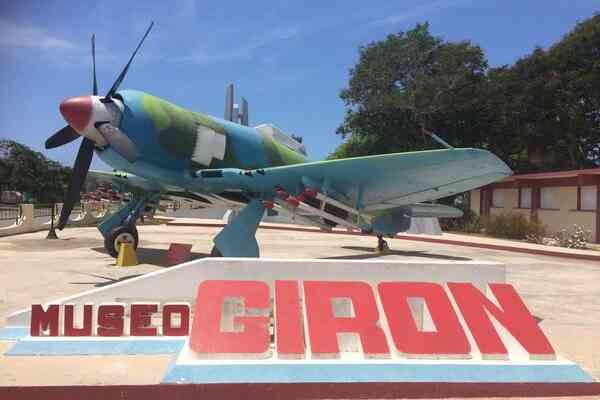
The invasion was overcome within 3 days. The museum at Playa Giron tells the Cuban version of events. 99% of the exhibits are in Spanish (but relatively easy to read), however, there are sometimes options to take a tour in English. Ask at your Casa Particular or the museum entrance. We visited the museum here while staying in Playa Giron.
22. Lie on a beach and relax in Cuba
I’m going to preface this by saying I don’t think I’ve laid on a beach for 20 years plus. It’s not my thing. But there are some incredible beaches in Cuba. If all-inclusive is your thing, then there are some incredible luxury beaches in Cuba. If independent travel is your thing, bring a towel, and a bottle of your favorite hydrating or dehydrating liquid and enjoy.
If you do spend the day on the beach be sure to secure your valuables. We use and recommend portable travel safes.
TOP PRODUCT PICK

Best Portable Travel Safe for Cuba
This fabulous portable travel safe is big enough for laptops, phones, cameras, and a whole lot more. It packs flat and secures to just about anything!
Varadero is the location of some of the most famous beaches in Cuba, but you’ll find them, throughout the country. Facilities tend to be basic, peace generally reigns and there’s always the cooling waters of the gorgeous Caribbean Sea to walk into. You can visit the beaches east of Havana or even take a day trip from Havana to Varadero if you don’t have much time.

23. Snorkel from your own private beach in Cuba
Stay outside of the norm and get yourself a casa particular in a smaller village or town and you find yourself with an almost private beach. Even in the main diving areas of Playa Larga and Playa Giron, you’ll find the beaches relatively quiet. We spent great days snorkeling in very clean shallows at La Boca near Trinidad and Boca La Camaron about 30 minutes from Varadero. There are also few people to be found on the public beaches of Varadero.
There are however few beach facilities, so you’ll need to take your own sunshades and drinks. You’ll also pay a serious premium if you try to purchase snorkeling gear in Cuba – even if you can actually find it.

Best Snorkel Set for Cuba
You’ll want to take your own snorkel gear to Cuba. While you might be able to rent it, it’s likely to be old. So take your own. Gift it to a local at the end of the trip.
24. Eat Lobster while in Cuba
If you enjoy seafood then you’re in for a treat in Cuba. Much of what is on the Cuban menu is sourced locally, imports are few and far between and expensive. So if you see Lobster on a menu, it’s because someone picked it up that morning. The sale of lobsters in restaurants is heavily controlled by the government, and restaurant owners are required to buy from specific government sources only. That’s not to say that’s what happens in reality. If you do spot surreptitious activity, and bags of freshly caught seafood changing hands, then you’ll be delighted to know that this tastes just as delicious as the government-sanctioned foodstuffs.
We enjoyed lobster in Boca La Camaron and also in La Boca. Each enormous lobster was big enough for 2 people and cost the equivalent of US$15 and was served as part of a set meal.
25. Eat Cuban specialties
Start the day with breakfast at your Casa Particular. Not only can you experience some of the best food that you’ll get in Cuba, provided for by the local family hosting you, but eating at your casa particular really helps the families make a little more money. Book one now and spend your time in Cuba relaxing.
Head to a Paladar, a locally independent– not government-run restaurant. Try local specialties like Ropa Vieja, literally old clothes, but braised meat in tomato sauce served with white rice – always seriously flavourful. Read about Cuban cuisine and learn to cook Cuban dishes here.
26. Listen to Music in a Casa de La Trova
During the 19 th century groups of traveling musicians known as Trovadores moved around Cuba, primarily the east of the island and specifically around Santiago de Cuba . They earned a living by playing the guitar and singing. Their music became known as Trova and has been an important element in the growth and evolution of Cuban music. Most major cities have a state-run music hall such as Casa de la Trova where for a small cover charge and good strong cocktails or beer you can sit and listen or get up and dance to the music of the city.

The most well-known Casa de La Trova is in Santiago de Cuba, but if you get the opportunity to visit other towns or cities in Cuba it’s well worth a visit. They’re not just tourist places, these are frequented by Cubans and tourists alike.
27. Pay respects to Che Guevara in Santa Clara, Cuba
Ernesto “Che” Guevara was an Argentinean doctor, author, guerrilla leader, and revolutionary. He was a major figure in the Cuban Revolution. Guevara was born in Rosario, Argentina in 1928, the eldest of five children in a middle-class family. It was his 9-month trip through South America, chronicled in his fabulous “ Motorcycle Diaries ” which was published posthumously by his family that changed his views on the world.
His visit to Guatemala in the early 1950s saw a CIA-backed coup overthrowing the progressive regime attempting to enact social reform. From this point on he became a Marxist and dedicated to bringing about socialism worldwide.
If you’re visiting Santa Clara, then you should join the free walking tour – it lasts 2.5 hours and you’ll get to visit the key sites of Santa Clara with excellent local commentary. Reserve your spot on the free walking tour of Santa Clara here.
Leaving Guatemala he met Fidel and Raul Castro early in their plans to overthrow Cuba’s Batista and the rest, as they say, is history. He became a Cuban citizen, defined many of Cuba’s policies, and becoming disillusioned with the Cuban reliance on the Soviet Union began to seek revolution elsewhere. In 1966 he traveled to Bolivian to lead a group of guerrillas. It was here that he was captured, wounded, shot to death, and buried in an unmarked grave.
His remains were found in 1997 and were returned to Cuba, where they were interred in a massive memorial to him and 29 of his fellow revolutionaries on the 30 th anniversary of his death.
The mausoleum and memorial are located in Plaza Che Guevara in Santa Clara. Our guide to visiting Santa Clara is here.
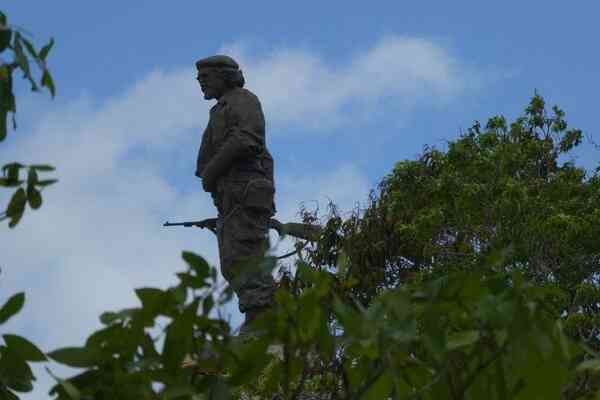
28. Explore Santa Ifigenia Cemetery, Santiago de Cuba
The Cuban hero Jose Marti is buried here in this, the signature cemetery of Santiago de Cuba. This legendary national hero was born in Havana in 1853 and through his political activity and writing became the Cuban symbol for their independence bid from Spain in the 19 th century. His poem Versos Sencillos (Simple Verses) was adapted to the song Guantanamera – the definitive patriotic song of Cuba.

In the Santa Ifigenia Cemetery, you’ll also find the final resting places of Fidel Castro, Cuban revolutionary Frank Pais, Tomas Palma, Cuba’s first democratically elected President, and members of the famous Bacardi rum family.
29. Visit Tobacco Fields and Rural Cuba
Cuba is famous for its cigars and tobacco fields can be found all across Cuba, but it’s the Pinar del Rio region that is most famous for producing the Habanos and Cohiba cigars. The town of Vinales is where most people visit the area. Depending on the time of year that you visit, you may see tobacco growing in the fields, or drying. You can take visits to the tobacco plantations , ride through the fields on horseback and understand a little more about Cuban cigars and how the industry works.
30. Smoke a Cuban Cigar in Cuba
You can buy cigars in Cuba anywhere. And for virtually nothing. Those free or US$1 cigars are going to be somewhat lacking though. If you’re not a smoker but want to try a cigar you’re in the right place. You can read my guide to Cuban cigars here.
And the best place to try a cigar in Cuba is while you’re visiting a tobacco farm. The easiest place to do this is in the area around Vinales. Take a tour of the Vinales Valley, either a day trip from Havana or a trip while you’re staying in Vinales and you’ll be able to understand the situation in Cuba. Find out who owns the tobacco farms, their history, and how they make money. Learn how tobacco is grown, what is used for cigars, for cigarettes and then find out how to roll a cigar. Finally, you can also smoke your own cigar – and you’ll also be taught how to.

We don’t smoke and never have, but we tried a puff or two on a cigar and it wasn’t horrible, but I’m really glad I tried, after all, it’s one of the unique things to do in Cuba.
31. Dance while you’re in Cuba
Whether you have rhythm or not, it’s hard not to be infected with the soul of Cuba as you travel around. Latin musical rhythm is everywhere. Find a Casa de La Muscia – Havana, Trinidad or the Casa de La Trova. Open squares, Cubanos will dance anywhere. Take lessons, or join in and have fun. The music is addictive, and a rum cocktail makes it all a little easier, but if you’re like me and have two left feet the watching is also addictive!

32. Get Hustled by a Jinitero in Cuba
You may not have any choice in this and it’s likely to be fun the first time, but then it gets irritating.
Jinitero actually means “jockey” in English and while the word Jinitera (the female version of the word in Spanish) is often translated as a prostitute, in Cuba Jinitero generally means hustler. Cuban’s by necessity have had and continue to need to find creative ways to make money. One of the ways to make money is to offer services to tourists – accommodation, transport, services – and not always legitimately. The guy who waits around at the bus station asking if you have somewhere booked to stay? He’s a Jinitero. He’ll get paid for taking you to a specific casa particular. Blokes hanging around asking if you want a taxi? They’re very unlikely to be the taxi driver, more likely the Jinitero who’ll get paid by the taxi driver for delivering you, the customer, to them.
Many Jiniteros are ok – I couldn’t ever admit that they’re great – and they sometimes perform a useful service, connecting you as a customer with the service provider when you might not know where to look. In the main, though they’re a pain.
If you want to maximize your Jinitero pain just step off a bus in Trinidad. Just learn to say no, and keep walking.
33. Explore Trinidad, UNESCO World Heritage City of Cuba
Trinidad is an Instagram photographer’s wet dream. Beautiful cobbled streets with gloriously brightly painted houses. Stunning views across the rooftops, cute little cafes to escape from the heat of the sun. The neo-baroque main square of Plaza Mayor and seriously grand colonial buildings are the reasons that many visitors to Cuba flock here.
The centre of the city, founded around 1514 is a UNESCO World Heritage site and one of the grandest, owing to the local plantations which made it rich. Sugar cane and tobacco production contributed vastly to the wealth of the area, with local plantation owners showing their wealth with grand buildings and palaces. Read about all the things to do in Trinidad here.

You’ll want to visit the Playa Mayor, the Museo Historico Municipal, the Bell Tower, for amazing views and the Museum de Arquitectura. You’ll also want to make sure that you have somewhere peaceful to escape to. While Havana is bigger, there definitely seem to be more Jiniteros here in Trinidad. Peaceful and quiet it’s not!
34. Enjoy the peace of Sancti Spiritus in Cuba
One of Cuba’s original seven cities, you’ll find Sancti Spiritus a haven of tranquillity after the big city atmosphere of Santiago de Cuba or the hustling madness of Trinidad. In Sancti Spiritus you’ll find narrow and winding streets stunning colonial buildings and the only remaining colonial-era stone bridge in Cuba in the Yayabo Bridge. Parque Serafin Sanchez, the main park of Sancti Spiritus is for me the nicest city centre park in Cuba. As in many Cuban cities, there’s a Casa de la Trova where you can go to listen to music and meet people, or you can enjoy watching life go by in the café Yayabo near the stone bridge. Come on down and see some of the best things to do in Sancti Spiritus.

Sancti Spiritus isn’t UNESCO World Heritage protected like Trinidad, but it does have gorgeous photogenic cobbled streets, stunning buildings and zero Jiniteros. It’s well worth a visit.
ESSENTIAL TIPS FOR EXPLORING CUBA INDEPENDENTLY
These are the resources and booking sites that we use when traveling to Cuba.
Get a Cuba Travel and Medical Insurance Quote from Visitors Coverage here – Alternatively, Civitatis Insurance is a great option for the required insurance for Cuba. You will need a Cuba Tourist Card to enter Cuba – some airlines include these, if yours doesn’t, buy one from EasyTouristCard – now valid for 90 days. Book your Viazul Bus tickets here Pre-book and prepay shared & private shuttles here Book the best FREE Walking Tours in Cuba Reserve attractions, day trips, and activities in Cuba here Get online in Cuba EASILY with a Cuba eSIM – read about Cuba ESIMS here , or buy a Cuba eSIM here .
Download and install a VPN BEFORE you travel to Cuba > discount coupon here Book Accommodation in Cuba’s Casa Particular here
Final Words on the 34 Most Iconic Things to Do in Cuba
Cuba is unique in so many ways, the challenge is not finding iconic things to do in Cuba, more fitting all the best things to do in your time there. We hope this has made a good attempt at outlining what we think is essential Cuba. There’s more detail in many of the other articles on Cuba’s Best – but do let us know what else you want to hear about!
Cuba’s Best is a participant in the Amazon Services LLC Associates Program, an affiliate advertising program designed to provide a means for sites to earn advertising fees by advertising and linking to amazon.com, amazon.co.uk, amazon.ca. Amazon and the Amazon logo are trademarks of Amazon.com, Inc. or its affiliates .
Sarah Carter
Leave a comment cancel reply.
Your email address will not be published. Required fields are marked *
Save my name, email, and website in this browser for the next time I comment.
Privacy Overview

Travelling Without a Passport
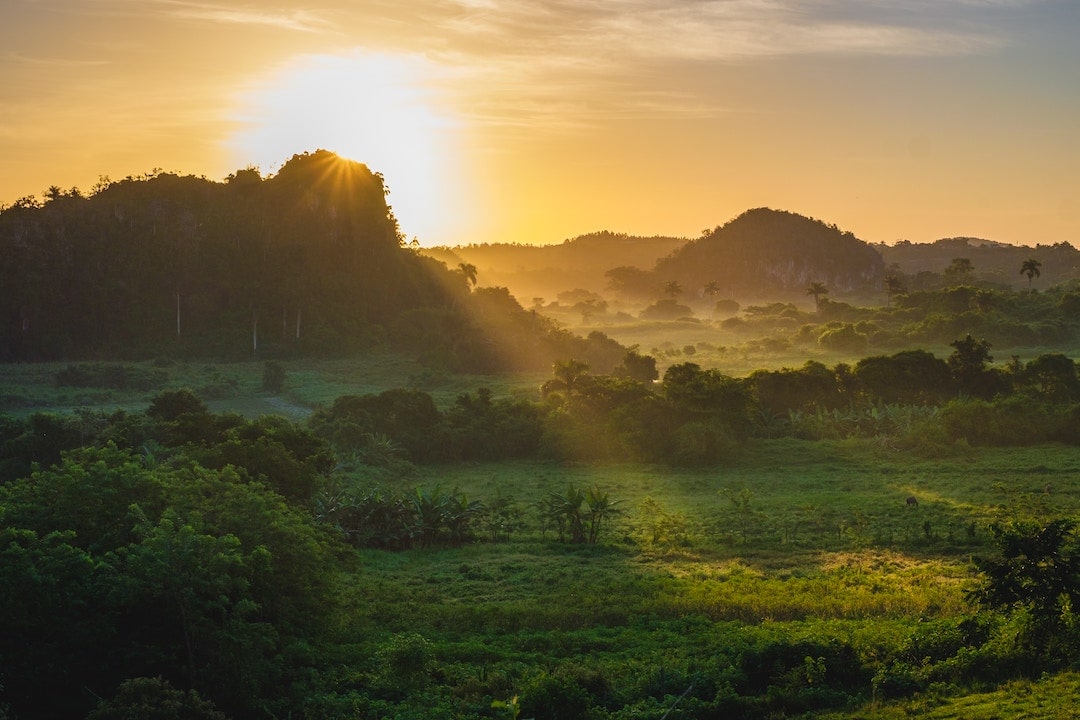
Where to Go in Cuba (Besides Havana)

When someone utters the word “Cuba,” your mind probably conjures up an image of Havana, with its time-worn facades and fifty-year-old Chevrolets.
The country’s infectious capital has undoubtedly become Cuba’s star attraction, and it’s easy to see why; not only is Havana beautiful, but it’s also an atmospheric place where the past is palpable — every colonial street, every crumbling building, every grandiose square has a different story to tell.
There are so many compelling reasons to visit Havana, but we’re going to assume you don’t need another one. Instead, we’ll give you plenty of good reasons to travel outside of the country’s capital city. From the remote city of Baracoa to the cultural hub of Santiago, here are six places to visit in Cuba (besides Havana).
Santa Clara
Santiago de cuba.
Travel to: Cuba

If you head to Viñales after Havana, get ready to experience a jarring contrast; as the city’s weathered streetscapes and vintage cars fade from view, you’ll find yourself surrounded by imposing mogotes (limestone karsts), lush greenery, and ox-powered ploughs ambling through tobacco fields.
Casa particulares , or homestays, are the main type of accommodation here, giving you the chance to stay with a local family and indulge in delicious home-cooked meals every night.
Aside from visiting a tobacco farm — which is an absolute must in this area — hiking, cycling, and horse-back riding, there isn’t an abundance of things to do in Viñales (at least in comparison to popular hotspots like Havana) — and that’s the beauty of this region; it’s the type of place where you can immerse yourself in the natural world, catch a glimpse of traditional Cuban rural life, and enjoy some of the most incredible landscapes in the country.
Viñales also happens to be the epicentre for Cuban tobacco farms, so if you’re keen to smoke a famed Cuban cigar (and see how they’re made beforehand) this is the place to do it.
Top things to do in Viñales:
- Visit a tobacco farm
- Explore the area by bike or horseback
- Watch the sunset from the viewing platform at Hotel Jazmines
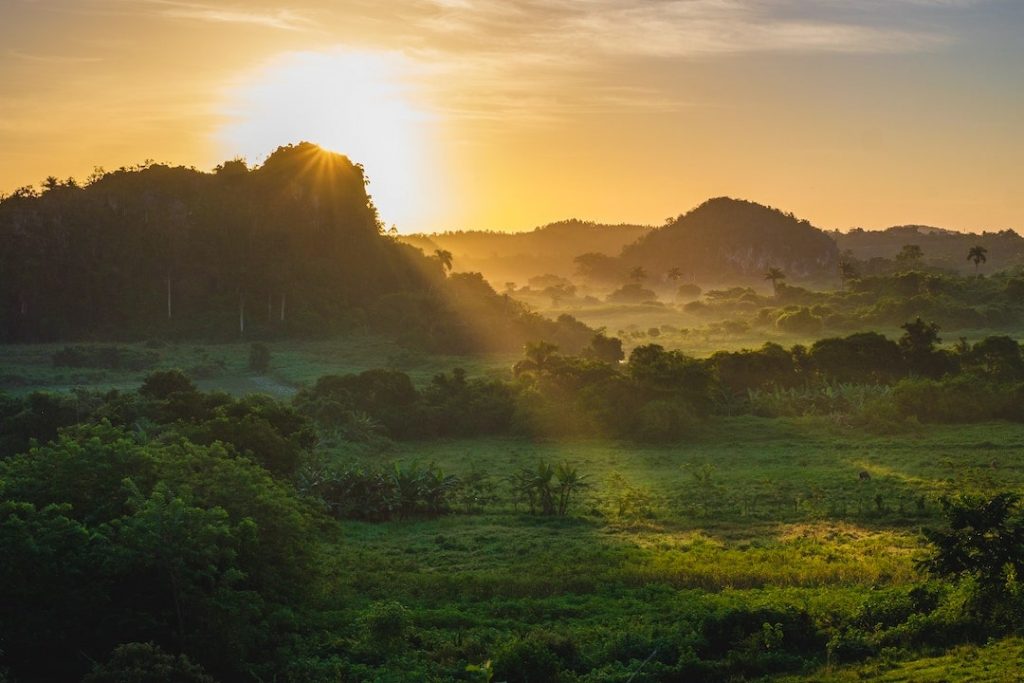
Commanding a spectacular natural setting on the Bahia de Jagua, Cienfuegos has a distinctly European feel (it was founded by French settlers in 1819), and it’s often dubbed the Paris of Cuba.
It’s an easy place to spend a day or two: explore the city’s historic centre, which is filled with elegant, French-style architecture and several notable attractions, and then venture along the Malecón sea wall to Punta Gorda, a laid-back waterfront neighbourhood.
Cienfuegos also acts as a great jumping-off point to visit the infamous Bahia de Cochinos (Bay of Pigs) — one of the country’s top snorkelling and diving hotspots — as well as the stunning El Nicho waterfalls, hidden amongst the hills of Topes de Collantes Nature Reserve Park .
Top things to do in Cienfuegos:
- Visit notable attractions like José Martí Park and Ferrer Palace
- Walk along the Cienfuegos Malecón
- Take a day trip to the Bay of Pigs or Topes de Collantes Nature Reserve Park
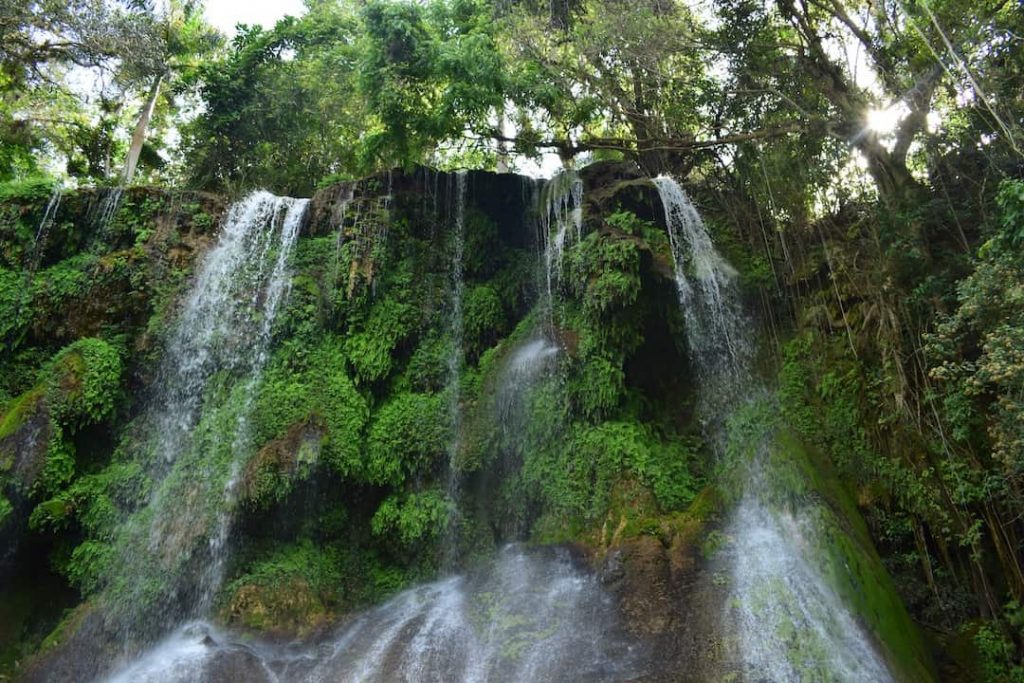
See Also: This is What Happened on My First Group Tour in Cuba
Pristinely preserved and largely unchanged since the 1800s, Trinidad is a standout destination that deserves to be on your Cuba itinerary.
The city’s heart is Plaza Mayor, a pedestrian-friendly plaza ringed by 18th and 19th-century colonial buildings and a wealth of architectural treasures. Many of Trinidad’s top landmarks and attractions can be found here, including the Museo de Historia Municipal, but there are plenty of lesser-known gems to discover along its winding back streets and unassuming alleyways.
After the sun goes down, head to the steps leading up to the Casa de la Musica, where locals and tourists gather to salsa dance every evening. Join in or watch from the sidelines with a cocktail in hand — either way, you’ll get swept up in the camaraderie and festive spirit.
If you find yourself longing for a little breather from the hustle and bustle while you’re here, Playa Ancon — one of the best beaches on Cuba’s southern coast — is only a 15-minute drive from Trinidad.
Top things to do in Trinidad:
- Explore the city’s main sights and attractions in Plaza Mayor
- Climb the tower of La Iglesia y Convento de San Francisco
- Spend the afternoon at nearby Playa Ancon
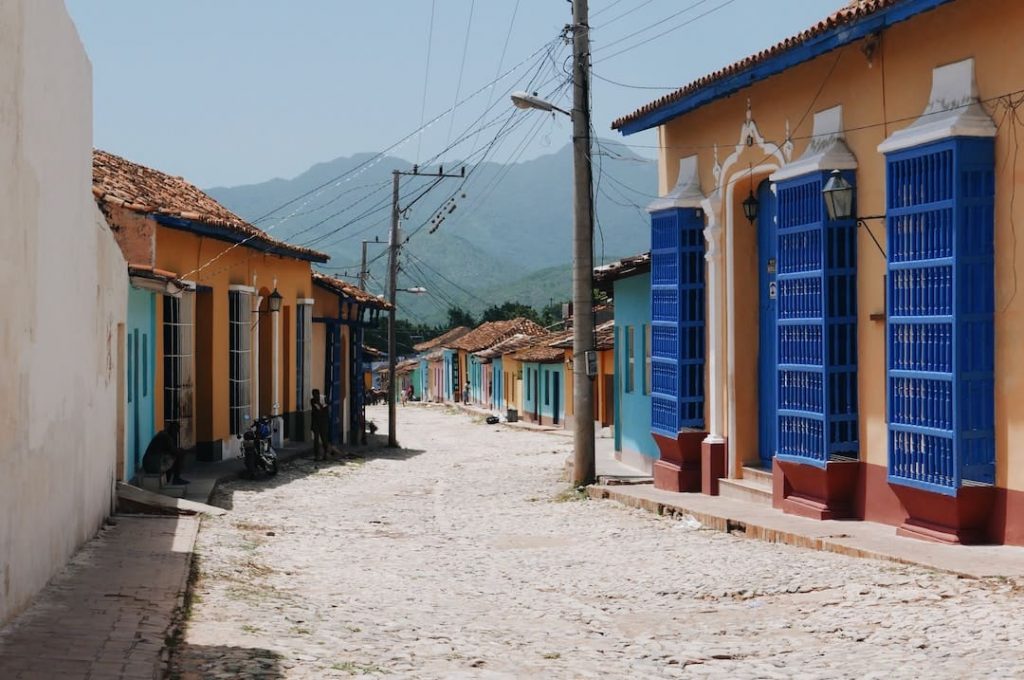
Most travellers are drawn to Santa Clara for its fascinating history (it’s the site of the final battle of the Cuban revolution), but this city is full of surprising quirks and attractions — and they’ll tempt you to stick around a bit longer.
Aside from visiting the museum and monuments dedicated to Che Guevara, a few of Santa Clara’s highlights include Parque Vidal, the vibrant central square, Constantino Pérez Carrodegua Tobacco Factory, and Loma del Capiro, Santa Clara’s best lookout point.
Top things to do in Santa Clara:
- Visit the Che Guevara Mausoleum Square
- People watch in Parque Vidal
- Tour a cigar factory
Santiago is second to Havana in size, but this fiery city has plenty to boast about, especially when it comes to culture, carnival, and Cuban rum.
Music is the main draw here — Santiago is the birthplace of just about every Cuban music genre — and you can’t walk more than a few steps without being serenaded by a soulful ballad or hypnotic salsa rhythm.
In July, the city explodes into a riot of colourful costumes and a chorus of song and dance during carnival, the largest and most traditional festival of its kind in Cuba.
Music isn’t the only thing that Santiago does well — the city’s rum culture is also one of the best on the island (this is where Bacardi opened its first-ever rum factory, after all). The Cuban government continues to produce rum at the former Bacardi distillery under the Ron Caney brand, so be sure to stop by for a tour and tasting during your stay.
Top things to do in Santiago de Cuba:
- Visit Castillo del Morro
- Take a sightseeing tour around Parque Cespedes
- Delve into the country’s tumultuous history at Plaza de la Revolucion and the Moncada Barracks
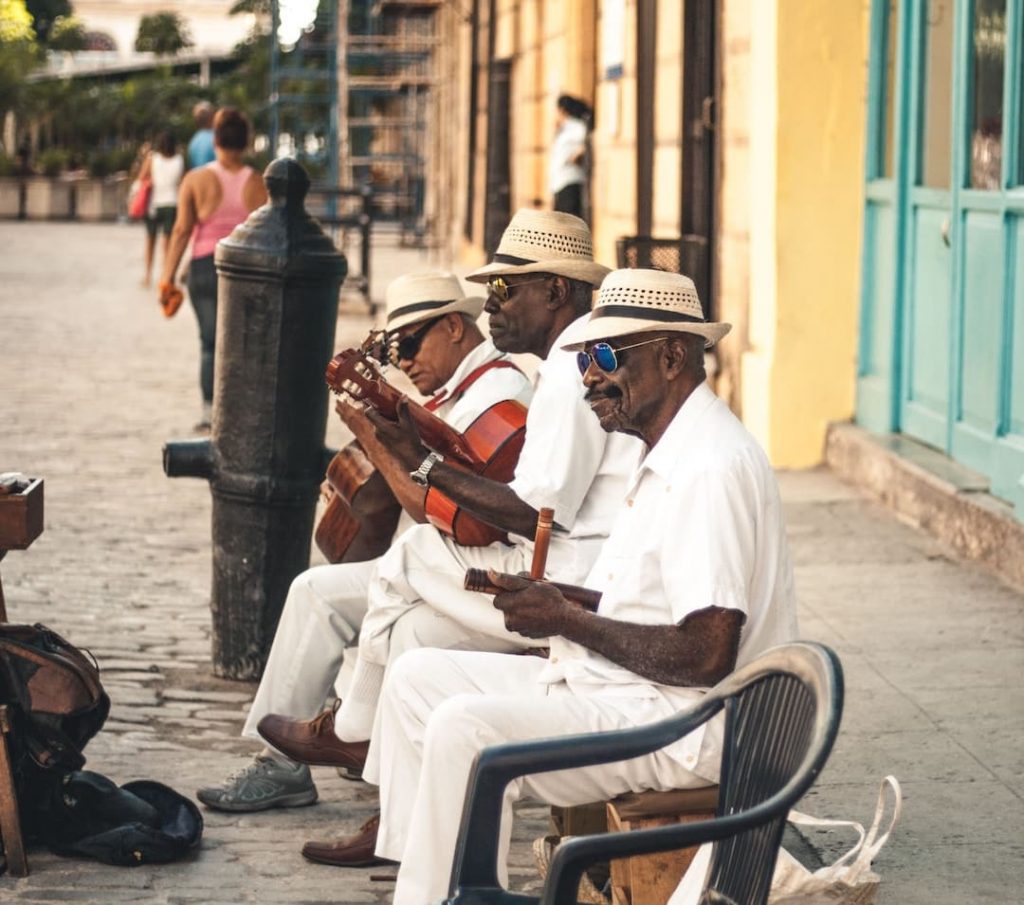
See Also: 13 Things to Know Before You Go to Cuba
If you’re looking for a Cuban destination that’s well and truly off the beaten path and virtually free of tourist hordes, Baracoa is it. This little-known slice of paradise is the oldest city in the country and one of the most isolated, situated at the far eastern tip of Cuba.
Getting here isn’t easy, but if you’re willing to put in the effort, you’ll be rewarded with some of the most spellbinding vistas in the country — and some of the best food on the island. The surrounding countryside has loads to offer in the way of natural attractions, from swimmable rivers to cascading waterfalls and trekking trails.
Don’t leave without trying some local chocolate and cucurucho, a Baracoan specialty made with a mixture of coconut, fruit, and honey served in a palm leaf.
Top things to do in Baracoa:
- Learn about the history of chocolate production at Casa del Cacao
- Head underground to explore a series of caves at the Museo Arqueologico La Cueva del Paraiso
- Go hiking in Parque Natural Majayara
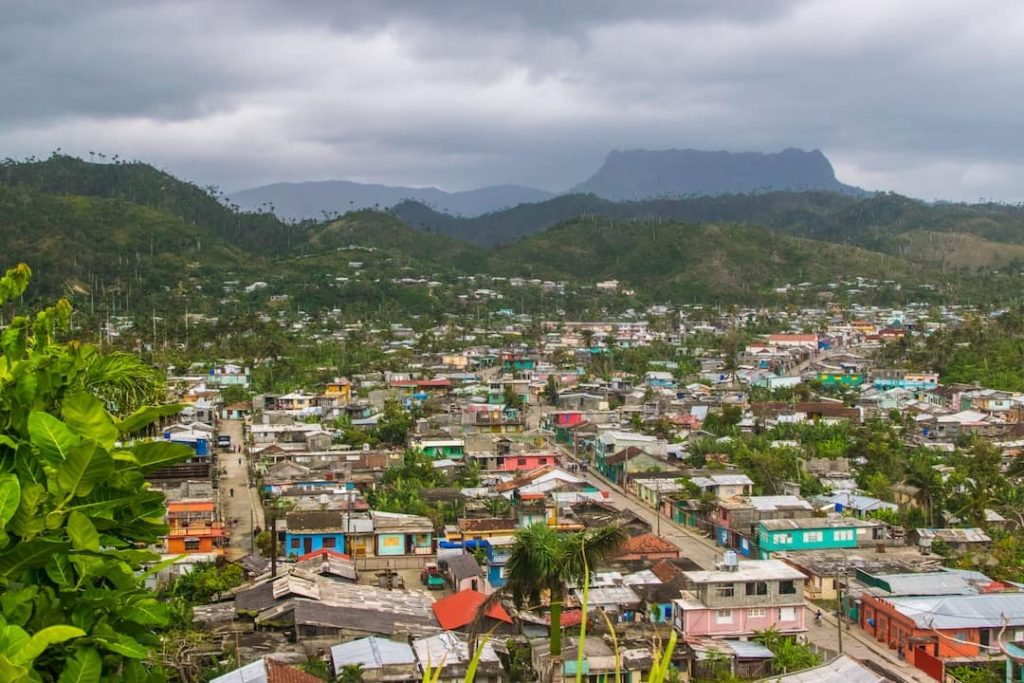
Where do you most want to visit in Cuba? Any other destinations you’d add to this list? Let us know in the comments!

Ashley Nitransky
Ashley is a Content Editor at TourRadar. When she’s not writing, travelling, or obsessively checking flight prices on Skyscanner, you can find her attempting to fine-tune her photography skills or watching a shark documentary.
Related Articles
- Food & Drink
Your Guide to Amsterdam’s Secret Bars and Speakeasies
One of the most popular cities in Europe, Amsterdam has no...
- North America
Your Guide to Easter Around the World
Easter is a time to celebrate new beginnings. The symbols and...
- Central America
The Best Spring Break Destinations
As long as academics have been a part of our lives,...

Why You Need to Spend at Least 10 Days in Jordan
Get unlimited access to the world's best travel stories. subscribe now., privacy overview.
- Skip to right header navigation
- Skip to main content
- Skip to primary sidebar
- Skip to footer

- Nomading by State
- Australia/Oceania
- North/Central America
- South America
- Ski Resorts

What Is Cuba Most Famous For?
October 4, 2022 By // by Leigh Hogle
Famous for its historic Cuban Revolution, as well as its world-renowned cigars, Cuba is a beautiful island country tucked away in the northern Caribbean Sea. This Spanish-speaking destination features charming cities like Havana and gorgeous white-sand beaches.
One reason for fewer American visitors is because of the poor relationship between the United States and Cuba, which began during the Cold War. However, travel doesn’t have to be tainted by politics, and Cuba is an enigma worth studying.
With around 3,500 miles of stunning coastline, historic architecture, and plenty of colorful, vintage cars, a trip to Cuba is one you’ll never forget.


Spanish Phrases To Learn
Bienvenidos – welcome to cuba.

Cuba comes in many layers and while the outside may look shabby, there is gold hidden underneath the surface. Old facades and bright colors line the streets of Cuba, and a vibrant island culture greets you as you step off of the plane.
The country’s economy has long struggled from US embargos, but you wouldn’t know it from looking at the faces of the Cuban people. With warm smiles and high energy, Cubans eagerly embrace all visitors to their island.
Crowned as the stoic leader of Cuba, Havana is the country’s capital . As the most well-known city in Cuba, it’s also the number one place to visit for tourists. The spotlights in Havana shine on the city’s history, art, and gastronomy. Pirates once plumaged the shores of Havana, before colonialism changed the culture.
Now, Havana is famous for its art museums and colorful avenues. Even more popular are the bohemian cafes and bars, which entice visitors with a good meal and a strong drink.
Culture and Language
Spending budget, how to get around, top cities to visit.

While Cuba is most famous for its history with Spain, the Soviet Union, and the United States, the island’s history began long ago. The Guanajatabey (also spelled Guanahatabey), who were the first colonizers, discovered the island in the fourth millennium BC.
Afterward, the Taíno and Ciboney people migrated to the island and pushed the Guanajatabey people into the western area of Cuba.
Cuba History
It was then, in the famous year 1492, that Christopher Columbus discovered Cuba . This led to the country’s first foreign relationship and started the colonization of the islands by Spain. Under Spain’s control, Cuba was flooded with African slaves as the land was converted into sugar plantations.

As the wealth on the island grew and cities like Havana were developed, pirates targeted the island. For much of the 16th to the 19th century, Cuba was under attack. Pirates began the turmoil, but problems continued well into the late 1800s as the country struggled for independence from the United States.
While Cuba became independent in 1902, the end of the war was far from over and the country’s relationship with the United States continued to deteriorate.
One of the biggest disagreements occurred after the Cuban Revolution , which started in 1953 and saw Fidel Castro rise to power. Castro’s relationship with Ernesto Guevara, better known as Che , was a tremendous influence on Cuba’s revolution. Che was Argentinian, but his Marxist ideas suited Castro and they quickly became friends.

The relationship would be one that the United States would soon despise. Castro, guided by Che, pushed out the US, which led to the start of problems between the two countries.
The United States always thought it would maintain its influence over Cuba, but with Castro shutting them out, their grip was slipping, and the Soviet Union was entering the scene. Under influence of the Soviet Union, Cuba became an ally and depended on the Soviet’s aid.
This deeply upset the US and led to the Cuban Missile Crisis . The crisis uncovered that there were Soviet missiles in Cuba, which was far too close for comfort for the United States.

Ultimately, the relationship between the two countries could not be recovered and even today, Cuba-US relations are unstable.
Even with the people being ricocheted around the rocks, the Cuban spirit cannot be broken. The people are full of life and they enjoy it. Their survivalist culture has proven them right throughout the years and shown that even through multiple hardships, Cuba can and will survive.
With a zest for life, Cubans enjoy big celebrations, cozy gatherings, and salsa dancing.
Official Language
Spanish and Latin cultures are still prominent in Cuba. Spanish is the official language on the island. While most people on the island only speak Spanish, English is becoming more common in tourist areas as the country has opened up to visitors in recent years.
However, African culture is also prominent because of the country’s history of colonization and the introduction of African slaves. Today, Creole is the second most spoken language in Cuba, which was brought from Haiti but originally rooted in West Africa.

While the cost of health insurance adds up, it’s only one part of your spending budget for Cuba. With the embargo, it’s important that you thoroughly plan your trip to Cuba before you arrive in the country.
A spending budget is a great way to help you estimate the costs of your trip to ensure you travel with the correct amount of cash to Cuba. To help you reduce the amount of cash that you’ll travel with, it’s a good idea to book as much of your trip as you can, prior to your arrival in Cuba.
Your flight and accommodation can all be booked prior to your arrival in Cuba, but the cost of food, drink, and transportation will all need to be paid with cash while you are visiting the country.
Since you need to support the local people, it’s also best to wait to book local tours and activities until you are in Cuba. So, don’t worry about making those bookings in advance.

Flights to Cuba are fairly affordable. With more people traveling to Cuba, you can find some tickets for very cheap if you search through multiple airlines’ websites or hire a travel agent. The prices will also change according to the time of year you visit Cuba.
Tourist high season in Cuba is during the winter months. December, January, February, and March are when most travelers are eager to hit the Cuban beaches and stroll the colorful avenues. The winter months also line up with Cuba’s dry season, which means less rain and more sun for big adventures.
Accommodations
Once you have arranged for your flight to Cuba, you need to look at different accommodation options. Accommodation in Cuba ranges from moderately expensive to luxury prices, and it’s important to make your bookings in advance. Booking ahead of time also means that you won’t have to travel with as much cash.

Most people make their reservations through Airbnb , but some local hotels may have their own websites that you can use to book your room. Hostels are the most affordable option in Cuba, but they can be harder to book online. However, many backpackers who wait until they are in Cuba can still find rooms at hostels.
The next most affordable option is what locals call casa particulares. This is a private room inside a home that is owned by a local. These rooms are rented through Airbnb, and there are plenty of listings on the site.
Casa particulares are a great option for travelers who want to connect with the local people and venture more in-depth into Cuban culture.

If you aren’t comfortable with either of those options or if you have a bigger budget, you may want to stay in a hotel. There are plenty of boutique hotels on the island that are locally owned. If the name is not on the restricted list issued by the US government, you are safe to stay there.
With all of your bookings pre-arranged and paid for prior to your trip, it’s then time to focus on how much cash you need when you are in Cuba.
The vast majority of accommodation establishments will not provide any food or drink service, so the price of meals and drinks will need to be considered as a part of your cash fund. Cuba is budget-friendly, but it has some high-end establishments too.
Much like Cuba’s history, its cuisine is very diverse. Most dishes are influenced by Africa, Spain, and the Caribbean. But Cuba is also a Latin country, and many of the flavors are also similar to those found throughout Latin America.

One of the best and most flavorful dishes in Cuba is called ropa vieja . This dish includes shredded beef, which has been slow-cooked in a tomato sauce. The meat is then served with rice and fried plantains.
Another favorite dish amongst travelers and locals is called pernil relleno de moros y Cristianos . This dish combines roast pork with strong flavors like orange, oregano, and garlic. Like most dishes, it’s served with rice, beans, and plantains.
For a little more heat, vaca frita is stuffed with strong spices that will make your tastebuds dance. The dish uses skirt steak as the main meat, which has been braised in zesty herbs and spices. Lemon-drenched onions and peppers are then thrown on top as a final touch.

Tamales are also a favorite dish and snack in Cuba, and you can find them everywhere. They are made with corn but topped with plenty of spice to pack a punch.
Food is affordable in Cuba if you want it to be. You can eat like the locals to stay on a budget. You can find even more affordable meals if you visit the street stalls.
Snack-type foods are also sold on the streets, like Buñuelos , which are made of yuca. The party lifestyle is very much alive in Cuba, so you’ll probably want to hit a few bars.
Drinks in Cuba range in price, with local options being the more affordable. In touristy areas, the prices can be even higher, especially depending on the alcohol.

While Cuba is an island, it isn’t small. In fact, Cuba is the Caribbean’s largest island, so it takes a bit of planning if you want to visit various cities on your trip. Flights, buses, taxis, and rentals are all popular options in Cuba.
There are 11 regional airports in Cuba , and most are serviced by two domestic airlines. The international airport is located outside of the capital, Havana. But for some, traveling by plane is the fastest way to get around. However, most flights will originate in Havana from José Martí International Airport.
So, if you’re not in Havana and want to fly to another city, you’ll most likely have to fly to Havana and transfer to a new plane.

A more affordable option to transport your way around the island is by using Viazul , which is the local bus company. Buses are reliable and well-priced. Tickets can be and are encouraged to be booked in advance.
Taxis and Car Rentals
Taxis can take you around a city or to and from the airport. Just be aware that not all taxis use a meter system. You should always agree on a price before you get in and begin a trip with a taxi and be prepared to pay more for long-distance taxis as they are expensive.
Some people prefer to drive themselves by renting a car. Car rentals are popular in Cuba and safe. But the cost may hold some travelers back. When you are driving, you’ll need your valid US passport and US driver’s license, or whatever your home country’s passport and license are.
Havana is mighty popular for tourists who visit Cuba, but it isn’t the only option. There are lots of other cities to visit on the island, and you may find that one captures your heart. Here are Cuba’s top cities for tourists.

Havana is the main highlight of Cuba and arguably, one of the most famous because of its status as a Cuban icon. The city is plastered with color and impressive Spanish colonial architecture. The Plaza Vieja is one of the city’s hotspots where tourists like to meander.
Off the streets, you can step inside a museum of art or history to learn more about Cuba and its culture. Some of the best restaurants are also in Havana, so you can have a blast testing the local flavors.

Historic and jaw-droppingly beautiful, Holguín is another popular city in Cuba for tourists to visit. The coast is lined with white-sand beaches, which have attracted thousands of visitors ready to relax in one of the local resorts.
The city streets are quite historic and display some of the classic Spanish colonial architecture. A few museums are also a favorite site for visitors, who want to learn more about the area.

Preserved to remember the past, Trinidad is a UNESCO World Heritage Site. Here, the streets and buildings still display Cuba’s colonial history. Cobblestone streets lead way to small studios, galleries, shops, and local markets.
Many of the local restaurants are housed in colonial buildings, which makes them unique from other establishments throughout the country. The nearby Valle de Los Ingenios is also where most of the old sugar plantations were built. You can tour the area and visit the numerous haciendas.
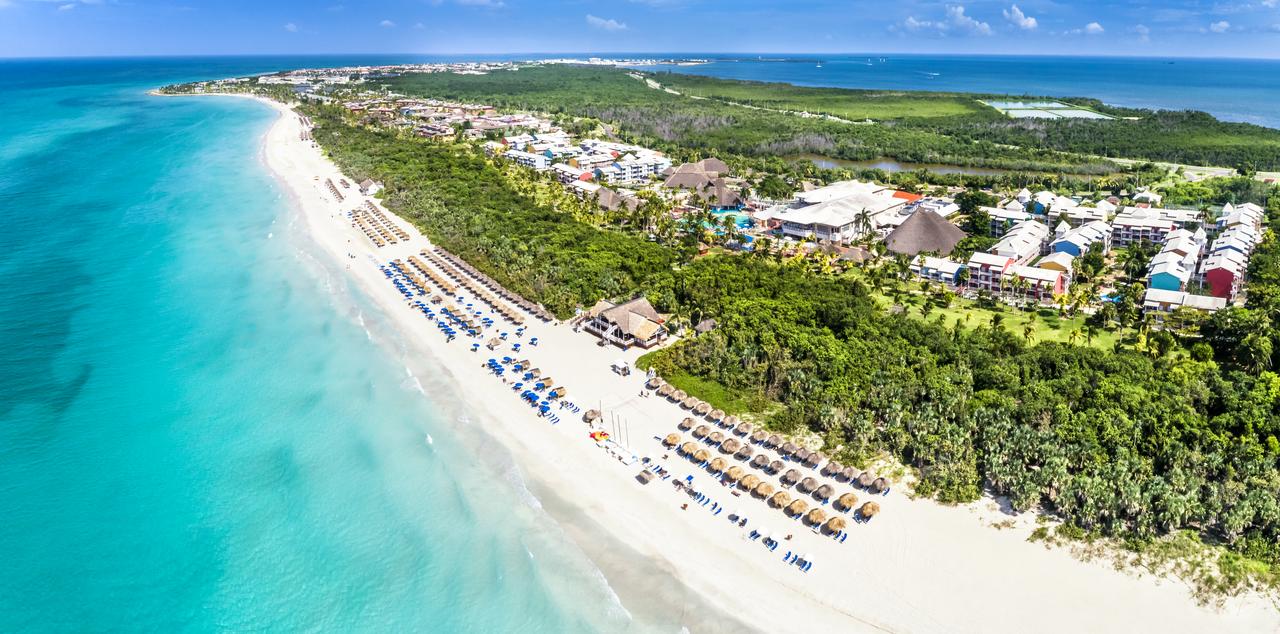
Jutting out from the mainland like a thin twig, Varadero is Cuba’s top resort area. The town is spread out on this narrow strip of land and features highlights like a golf course and ecological nature reservation.
The crystal clearness of the Atlantic Ocean entices visitors to come and spend their days relaxing in this Cuban paradise. Similar to many resort areas, there are plenty of activities to get the heart racing or places to go and melt your stress away.
“Pearl of the Antilles”

While some may be hesitant to visit Cuba, now is the time to leap into a great adventure. This once secretive island is slowly being opened to travelers, so they can experience the vibrancy of Cuban culture and the island lifestyle.
With no hard feelings about the political issues surrounding the US and Cuba, Cuban hosts are eager to welcome guests with a smile.
Visit Cuba’s official tourism website .

About Leigh Hogle
Leigh Hogle is a writer with an emphasis in travel, film, and product marketing. She is known for taking the road less traveled and also has a passion for animals, architecture, and photography.

La Vida Nomad
- Privacy Policy
- Disclaimer—Terms of Service
Destinations
- Nomading by Country
- Sightseeing
- Meet the Team
- Work with Us
- Czech Republic
- Netherlands
- Switzerland
- Scandinavia
- Philippines
- South Korea
- New Zealand
- South Africa
- Budget Travel
- Work & Travel
- The Broke Backpacker Manifesto
- Travel Resources
- How to Travel on $10/day
Home » Central America » Itinerary
INSIDER CUBA ITINERARY for (2024)
Cuba is an incredible adventure. You’ll know it for its sensual music and dance, and of course its cigars. But the large Caribbean island has much more to offer!
Its beaches are pristine, the ocean water balmy and blue. It’s cities and villages have an unusual mix of Spanish and African roots and influences, resulting in architectural styles and a vibrant culture that is totally unique to the island.
It’s the least commercialized island in the Caribbean, and certainly one of the most beautiful, which is saying a lot! To make the most of a short time on this fantastic island, we’ve got a Cuba Itinerary with all the best stops and trips!
You’ll take in everything, from museums and fortresses to beaches and mountains. With such a fascinating history and contemporary culture, this is definitely one to tick off the bucket list.

Unlock Our GREATEST Travel Secrets!
Sign up for our newsletter and get the best travel tips delivered right to your inbox.
Best time to visit Cuba
Where to stay in cuba, cuba itinerary, day 1 itinerary in cuba, day 2 itinerary in cuba, cuba itinerary – day three and beyond, staying safe in cuba, day trips from cuba, faq on cuba itinerary.
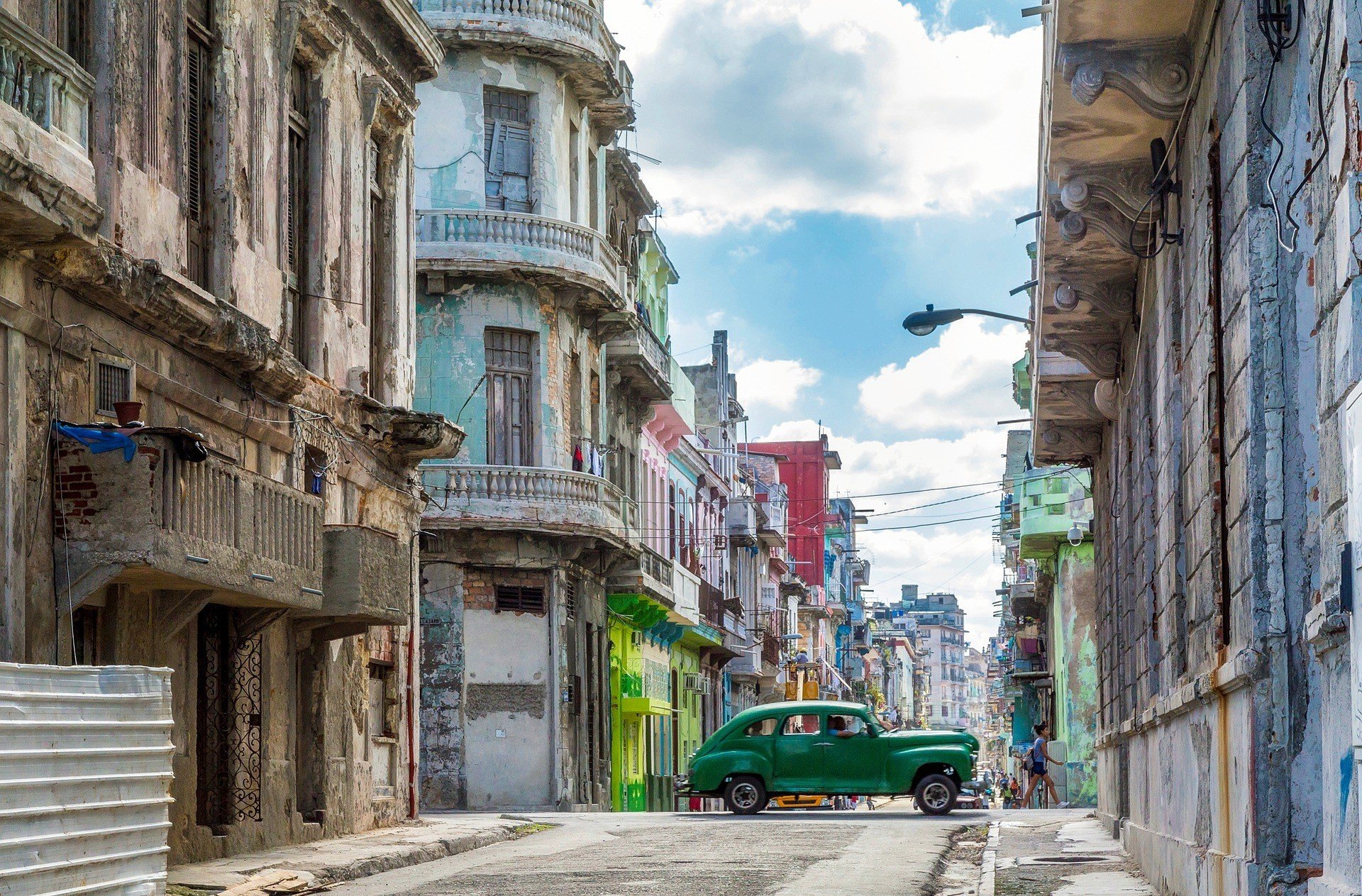
The Broke Backpacker is supported by you . Clicking through our links may earn us a small affiliate commission, and that's what allows us to keep producing free content 🙂 Learn more .
With a warm tropical climate, and long stretches of coast, backpacking Cuba is an dream come true. Its summers are long and languid, stretching its days so that you can enjoy them fully. The best time to visit is between December and May. The days are sunny and dry, and the ocean waters balmy.
During winter, Cuba gets wet, but it certainly doesn’t get chilly! Many enjoy the very different ambiance of its quiet season. If you don’t mind the heat and the rain (which brightens the colors and makes the earth smell beautiful) then June-July is a great time to go, especially because everything is cheaper, including flights.
Between August and October, there is a risk of hurricanes. So you may want to avoid the island in this period! Of course, if you keep an eye on the weather reports before you go, there’s little threat. And everything is priced down for the off-season. So, if you’re planning a trip to Cuba, the best time to visit depends on you.
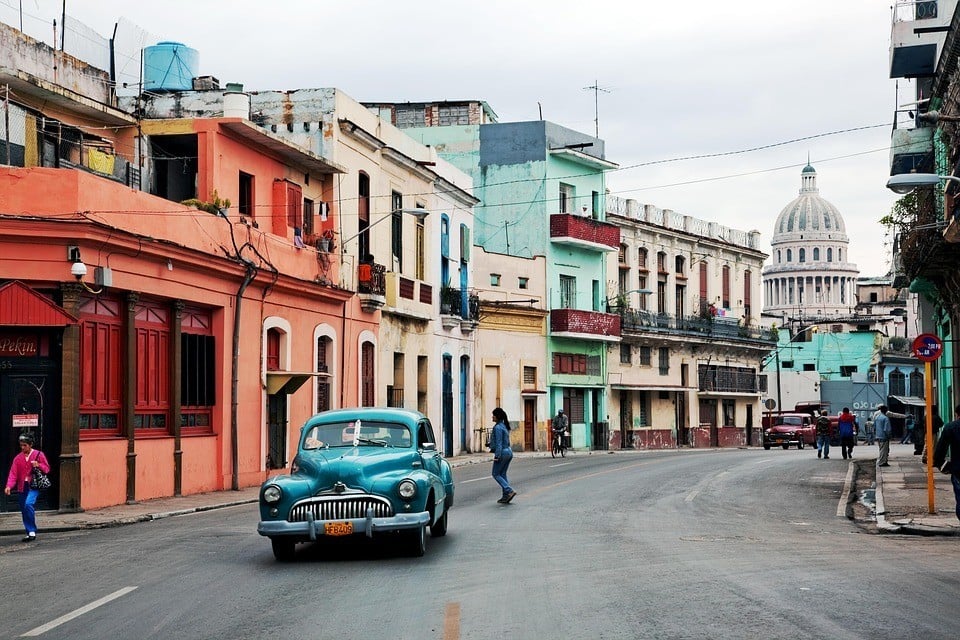
The best Cuba points of interest are in Havana and Santiago de Cuba! That’s why day 1 and 2 of our Cuba Itinerary are based here.
Havana has some really interesting neighborhoods , with Spanish colonial architecture and narrow cobblestone streets. Since you’re only spending one day here, find somewhere close to the city center! There is lots to do, and you don’t want to spend too much time on travel.
Our favorite neighborhood to stay in Havana is Prado! Linking Old Havana with modern life, this neighborhood is really something special. There are plenty of attractions in the area, and it’s great to watch locals going about their day. You can find quite a few of Havana’s hostels in this area too.
On the promenade, you’ll find artists, skateboarders, craft sellers and grandmothers gossiping on the benches. It’s a perfect place to just walk around and get a feel for the unique contemporary culture of Cuba!
In Santiago de Cuba, see if you can stay in La Socapa! This lovely little neighborhood is pressed against the rocky coast of the city. It’s rather unknown amongst tourists, so if you’re looking for an authentic stay in Cuba, this is the perfect area!
Best Hostel in Cuba – Hostal Mirella para Mochileros
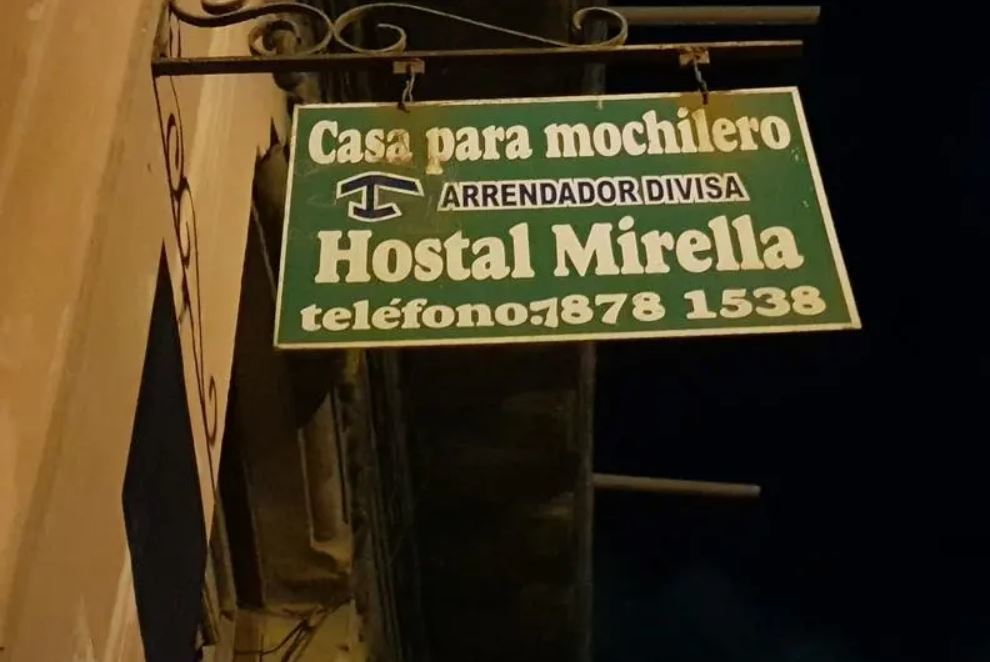
This centrally located party hostel is great fun. It’s a perfect place to meet new friends if you’re keen to explore with others! The shared dorms are comfortable, and there is a balcony and living room available to everyone. It’s a small hostel, but it’s got wonderful staff and everything you need.
Best Airbnb in Cuba – Casa Nivia y Pepe en Aguacate
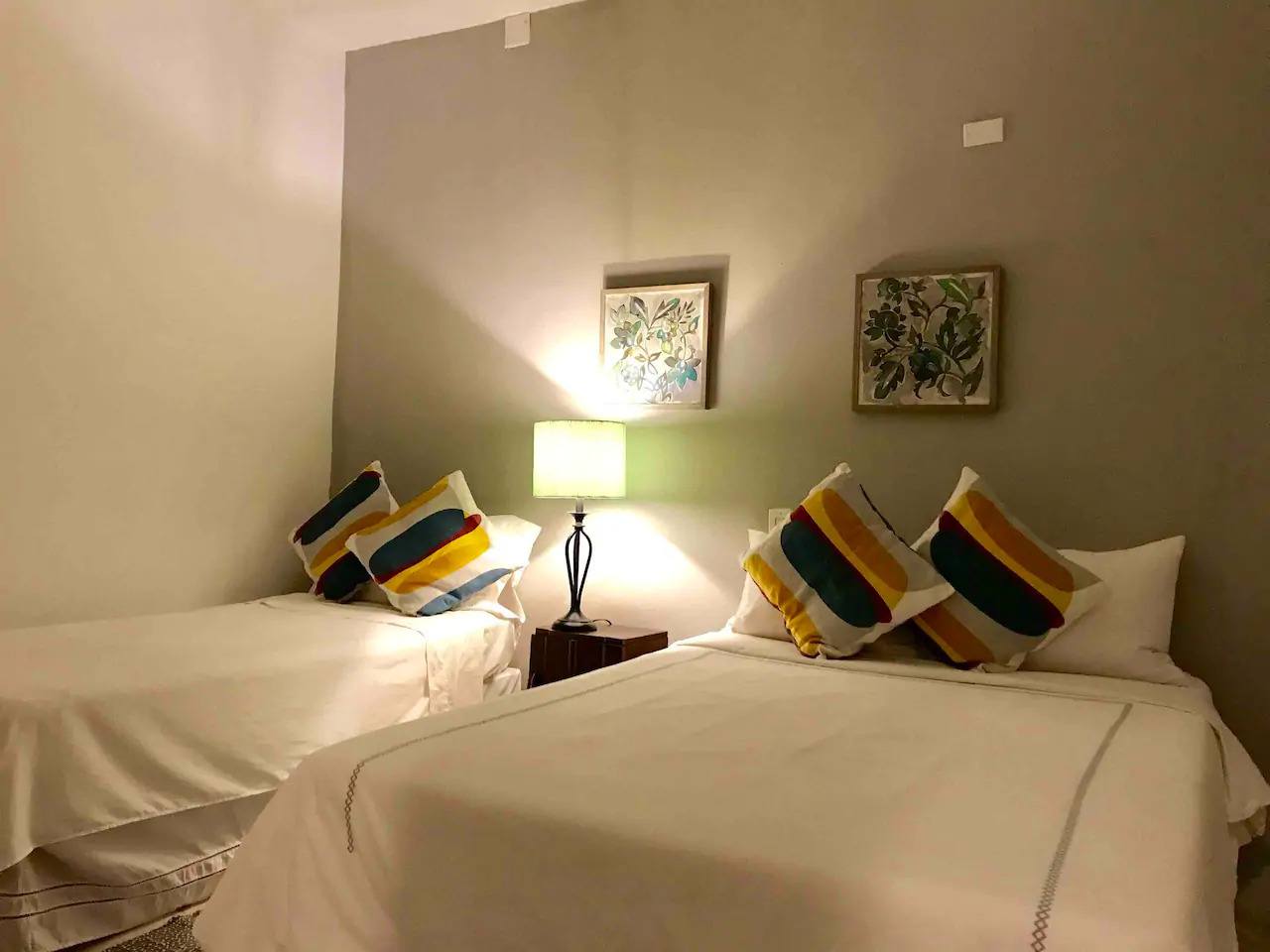
A short walk from the historic centre of Trinidad, this one-bedroom flat is the perfect home away from home. Located on the second floor, this bright, spacious, and peaceful home has its own private entrance and two delightful terraces.
Enjoy modern amenities, comfortable accommodations, and delicious Cuban meals throughout your stay in Trinidad.
Best Budget Hotel in Cuba – Libertad
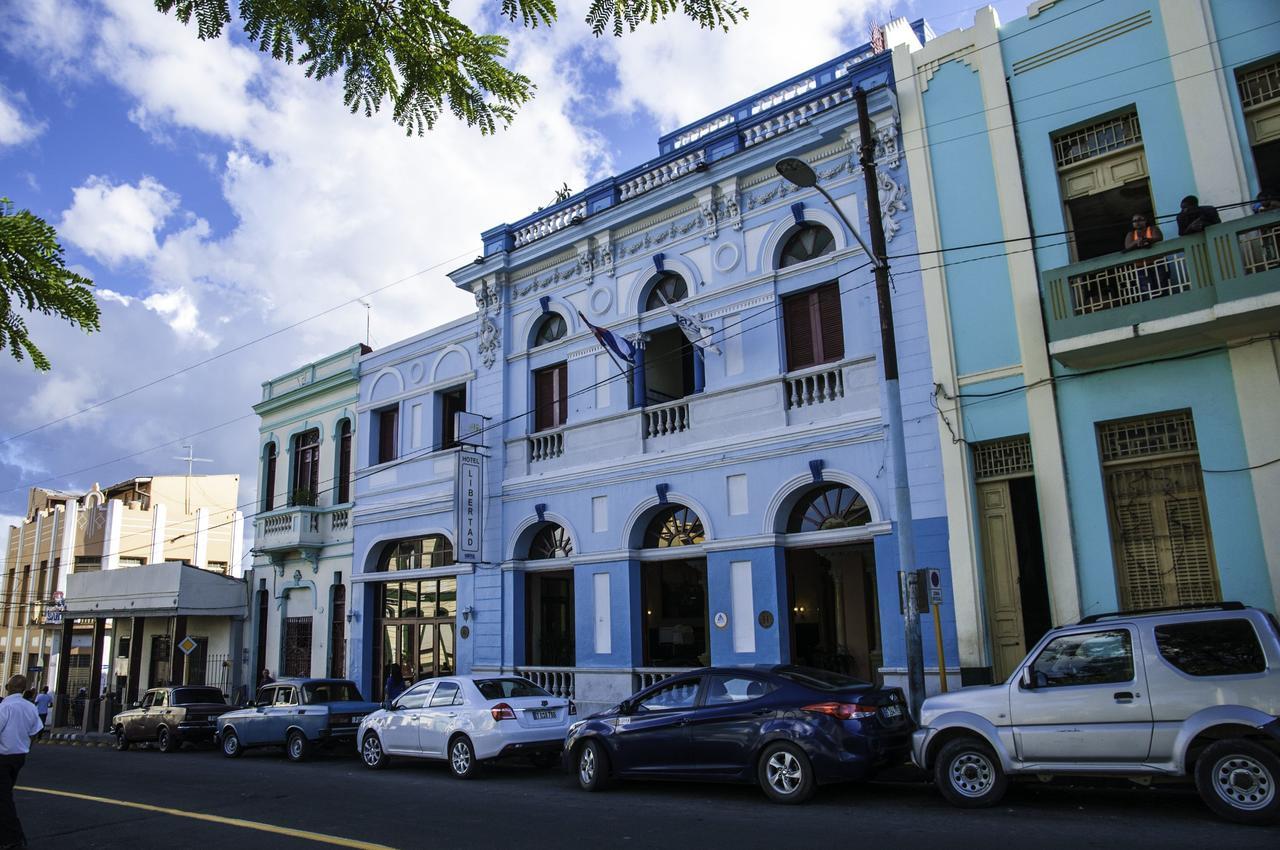
A charming budget hotel, Libertad has everything you need – and at a great price! It has a bar, restaurant, and continental breakfast provided. The rooms are airy and vibrant. Your views over Santiago de Cuba are gorgeous. Especially from the rooftop hotel!
Best Luxury Hotel in Cuba – Hotel Saratoga
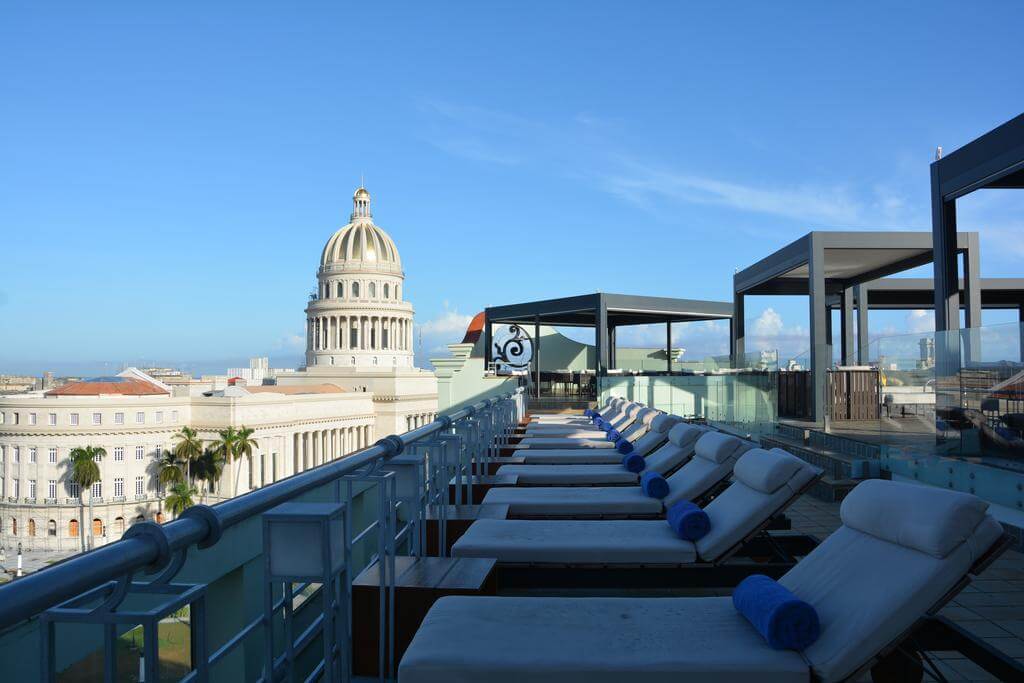
This lovely luxury hotel is one of the top places in Havana, Cuba! With a fitness center, on-site restaurant, and old-style rooms, it’s a great place to stay if you’re looking for something special. Great staff, located right next to the old quarter, and incredible views.
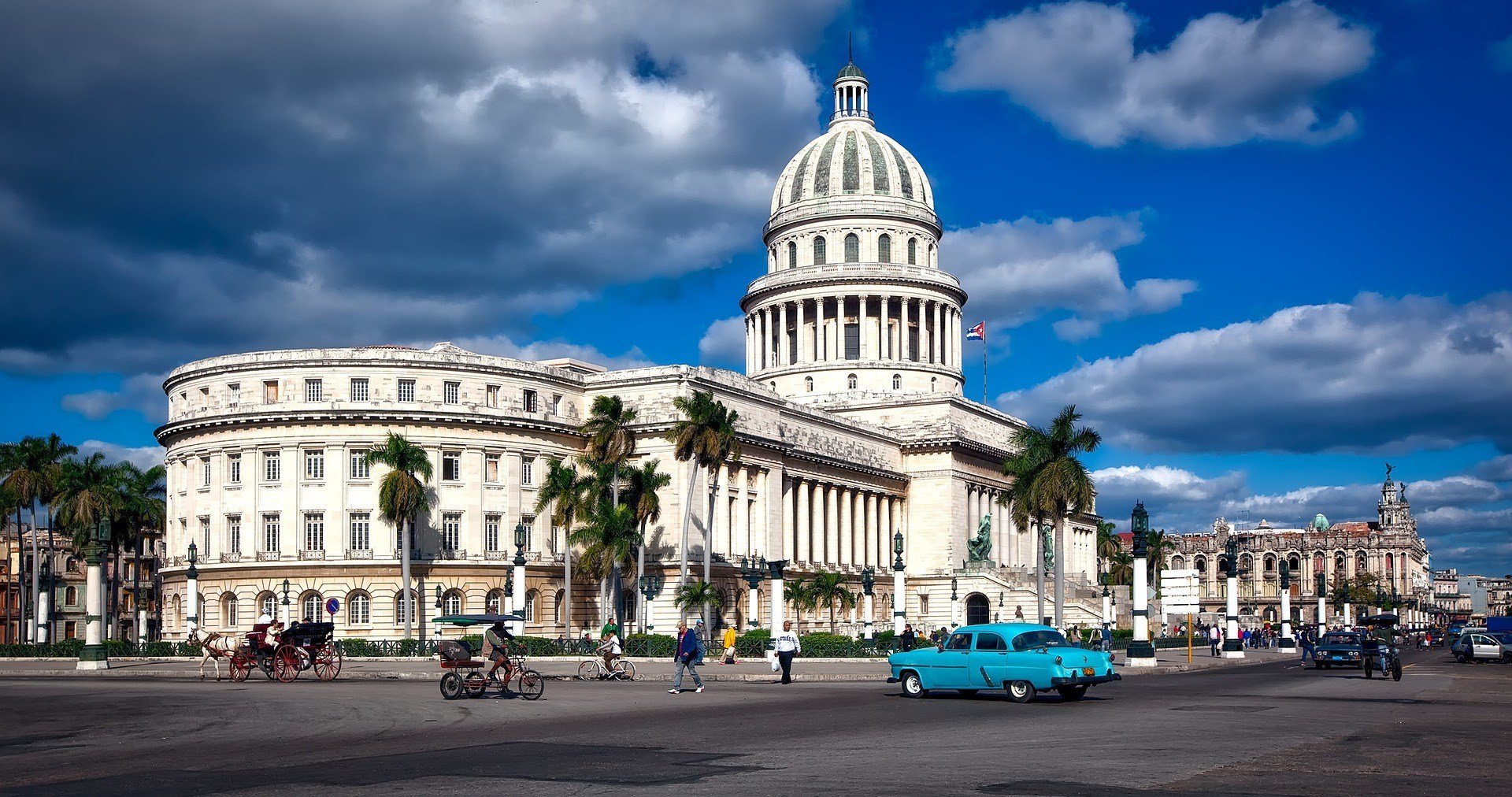
Cuba is a reasonably large island – not the kind you can walk around in a few hours! In order to get between the beautiful island’s two main cities, you can catch a very reasonably priced airplane.
You can also drive, but it will take you a full day, and the cost of renting a car and paying petrol will add up to more than the flight ticket! It is, however, a great way to tour Cuba, if you have more time. That’s why deciding where to stay in Cuba is very important before you start your travels.
When you’re traveling within the cities, walking is a great option! This way you’ll see all the details in the little things, and see more of the local culture. The cities are reasonably small, with all the main Cuba attractions centrally located. This makes walking ideal. Touring Cuba by bicycle is also a great option!
The main public transportation is buses. These are usually quite old and very affordable. But with the growth of tourism, you can also find buses with air conditioning and onboard bathrooms, or a taxi.
El Capitolio | Museo de la Revolucion | El Morro Castle | Parque Almendares | Fortaleza de San Carlos de la Cabaña | Gran Teatro de La Habana | Cuban Art Factory
Day 1 of our Cuba Itinerary is spent in Havana! This city is where you’ll land, and has some of the top Cuba attractions, conveniently located in one beautiful city.
Day 1 / Stop 1 – El Capitolio
- Why it’s awesome – It’s Cuba’s glorious version of Washington’s White House!
- Cost – $10 including a guided tour.
Food recommendation – Get breakfast at Mango Habana.
The El Capitolio Nacional (National Capitol of Cuba) is Havana’s most iconic building, and one of the most important Cuba attractions.
Similar to the capitol building in Washington D.C, The El Capitolio Nacional is larger and richer in detail than its counterpart. Building started in 1926 by US-backed dictator Gerardo Machado and took more than 5000 workers, 3 years, and about 17-million American dollars to complete!
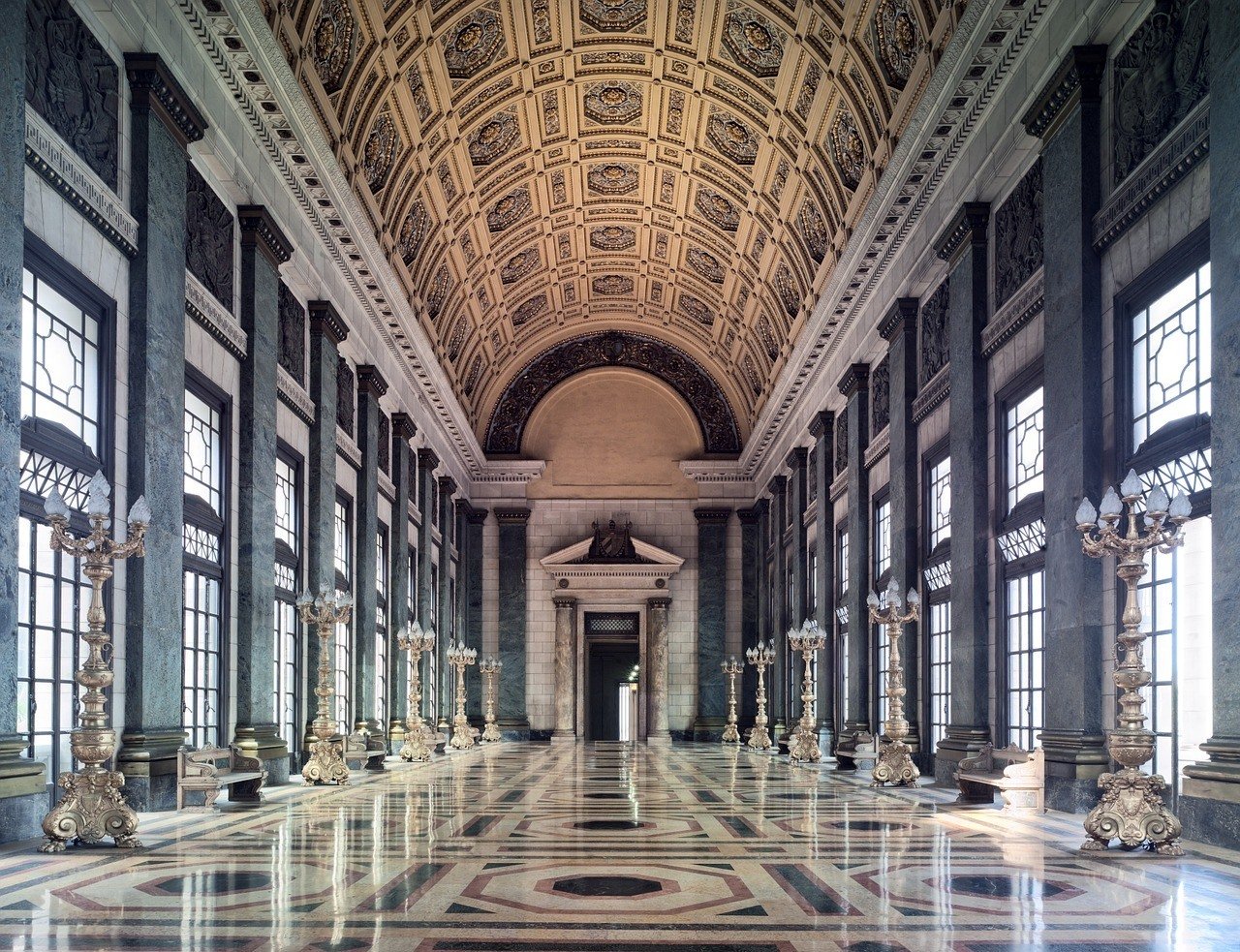
Perhaps Cuba’s most ambitious and grandiose building, it was constructed in the affluent period of the post-WWI sugar boom, when the Cuban government had a lot of money to throw around.
Once the seat of the Cuban Congress, and then the house of Cuban Academy of Sciences and the National Library of Science and Technology between 1959 to 2013, the building is now open to the public. Stroll through its immense structure and admire the architectural details and interesting artifacts.
Day 1 / Stop 2 – Museo de la Revolucion
- Why it’s awesome – All the most important artifacts from Cuba’s most influential event.
- Cost – $8, free for children under 12.
- Food recommendation – Enjoy a casual breakfast at Café del Angel.
The Cuban Revolution is certainly one of the country’s most important historical events. The location of this museum reflects this – it’s located in what was the Cuban Presidential Palace, an opulent historic building of the old order.
The exhibits include some very important contributions to the revolution, including news stories and old photos about the event, as well as personal items belonging to Che, Cienfuegos and Fidel among others.
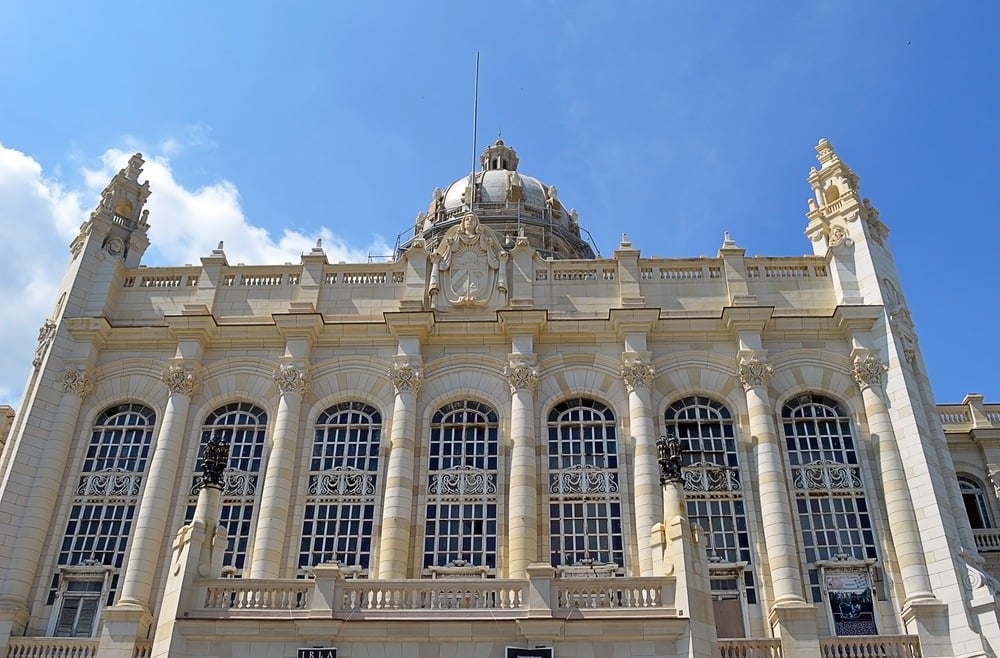
Founded soon after the 1959 victory against the Batista dictatorship, the intention of the museum has always been to show the world the rights violations of the ousted dictatorship and the sacrifices of the revolutionaries.
The building which was the country’s opulent face to the world is now its means of showing how it has changed and how far it has come, as well as what that opulence masked.
If you’re taking a vacation in Cuba, a little of its history is important to contextualize all your experiences! This is an important place to experience and understand the importance of its past. It’s also incredibly beautiful!
Insider Tip: Pay attention to the walls of the building – you’ll find bullet holes sprinkling it in numerous places. These too, tell a story of the revolution and the building’s past!
Day 1 / Stop 3 – El Morro Castle
- Why it’s awesome – The castle is huge and iconic, with great views.
- Cost – $6 for entrance, free to walk the surrounds.
- Food recommendation – Yummy food at Los Doce Apostoles.
Built by Italian engineer Juan Bautista Antonelli, this fortress was used to repel raiders from the Cuban capital. It took 30 years to complete, all due to economic problems and political wrangling!
Completed in 1630, the fortress’ most distinctive feature was a huge chain running from El Morro to La Punta castle across the bay. This was raised when hostile ships were spotted, shutting the bay to new arrivals and causing vital damage to those that tried to enter.
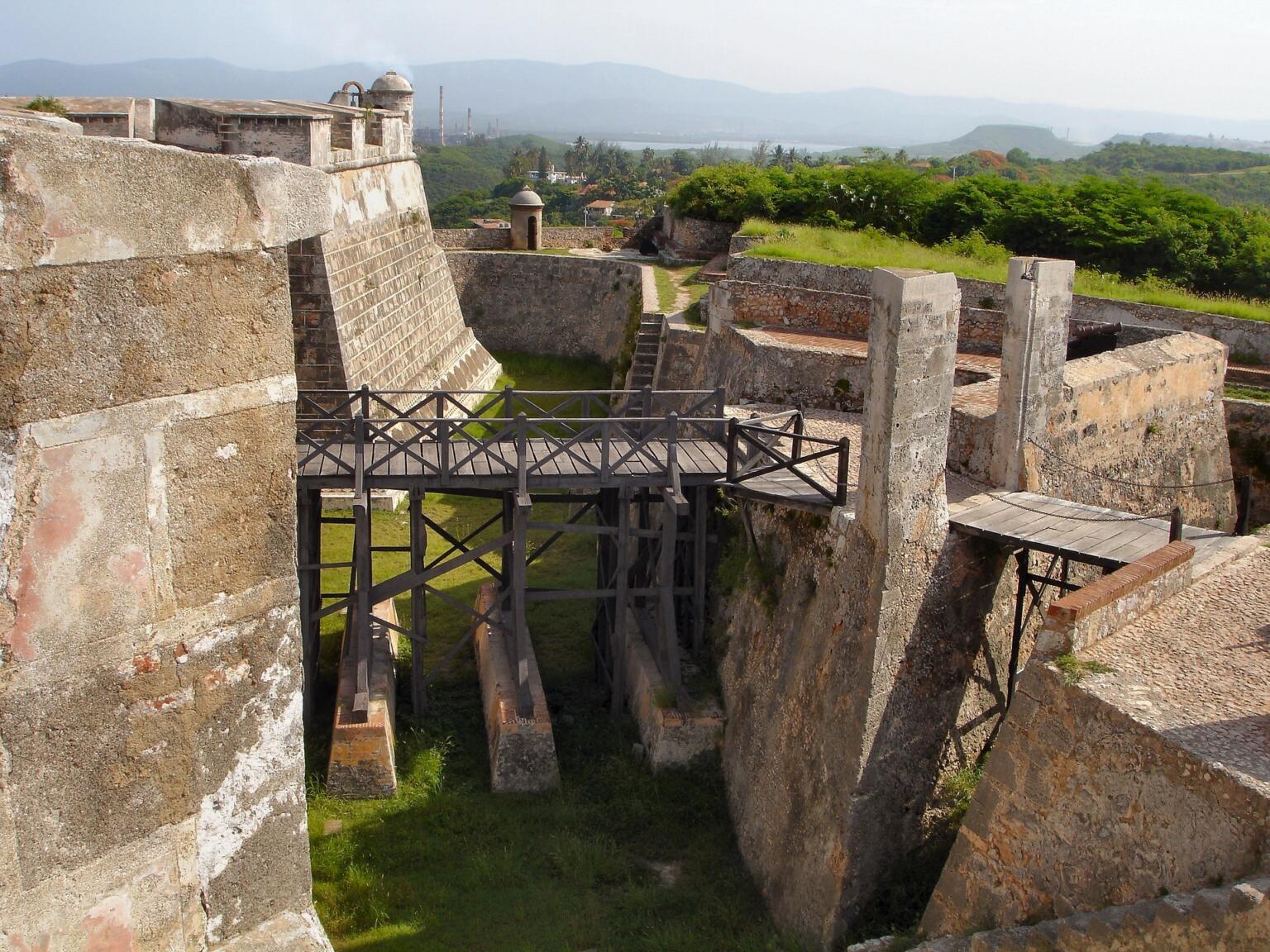
During its more recent history, El Morro has been used as a prison. Now, though, it’s one of Havana’s most impressive tourist attractions. When you visit be sure to climb the lovely Faro del Morro lighthouse, from where you can see panoramic views of Havana and the Caribbean sea.
The castle has imposing walls, a moat and that stoic lighthouse, and hugs the cliffs of the bay in an amorphous shape. You can reach it via ferry or by looping around the bay over land.
In the castle complex, you can visit the Maritime Museum, which documents the attacks on the castle, including the successful 1762 attack by the British. You can also see the creation and exhibition of various art-works, as well as artisan stalls and small stores of all types. It’s a great place to stroll through and get in some of your souvenir shopping.
Day 1 / Stop 4 – Parque Almendares
- Why it’s awesome – An exotic and lush green forest in the middle of the city.
- Cost – Free!
- Food recommendation – Bring a picnic of bread varieties and cold meats.
This exotic green park is the perfect place to relax and enjoy a lunchtime picnic. It’s in the process of restoration, and you’ll notice how some areas are in need of upkeep while others are picture-perfect. That’s because it’s a work in progress!
Widely regarded as Havana’s lung, the park is extensive. It’s a serene space full of greenery and color contrasts, beautified by the hanging green curtains of gigantic Jaguey. A wide diversity of plants thrive here in the tropical climate.
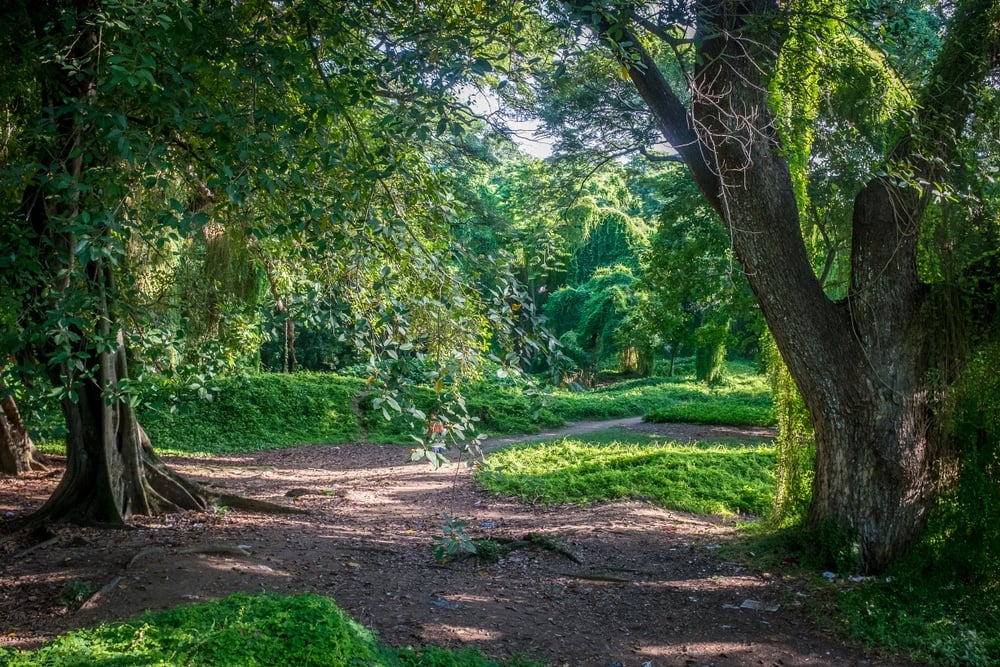
A wild forest at the heart of a bustling city is an unusual blessing, and you’ll appreciate its ability to rejuvenate. Take your shoes off and wiggle your toes in the green overgrowth. Take some photos with gorgeous verdant backdrops.
It’s a simple experience, but one of our favorite Cuba points of interest.
Day 1 / Stop 5 – Fortaleza de San Carlos de la Cabaña
- Why it’s awesome – It stretches along the coast, offering lots to see and do!
- Cost – $6.
- Food recommendation – Grab evening tapas and cocktails at El Canonazo Paladar.
Located against a hill in the eastern side of the port of Havana, this vast fortress was erected in the 18th century as a means of protecting the weakest spot in the city’s defense system.
The fortress measures cover a full 10 hectares, the largest Spanish colonial fortress in the Americas. You can stroll along it, admiring the imposing stature and impregnability of the old fort. These days it also has bars, restaurants and souvenir stalls along much of its length.
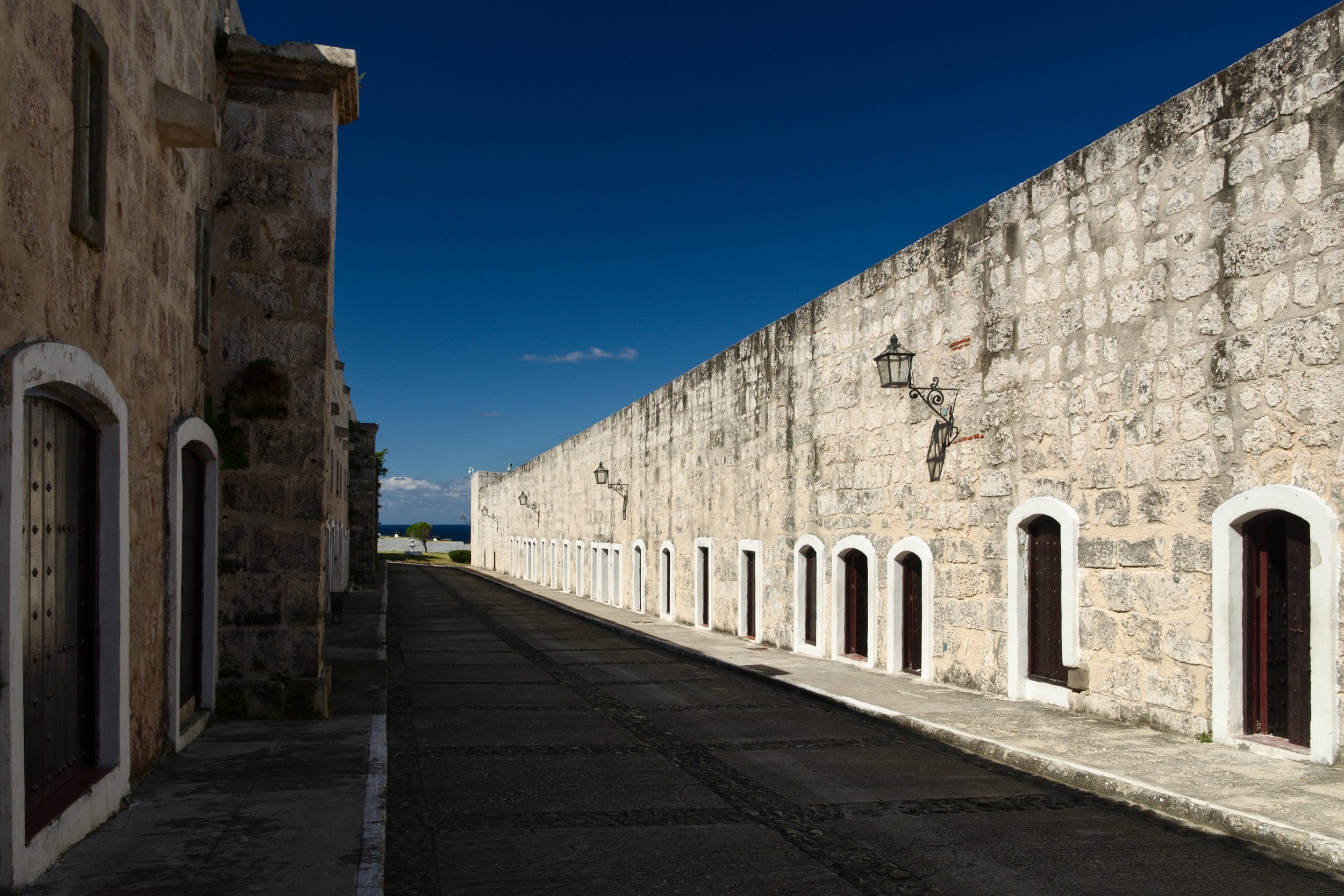
You can also find two historical museums here if you’re finding yourself engrossed by the islands fascinating and complex history. You should be here for the nightly cañonazo ceremony at 9 pm. This popular evening excursion involves actors dressed in full 18th-century military dress, reenacting the firing of a cannon over the harbor.
It’s a fun end to the daytime part of your day, and not to be missed!
Day 1 / Stop 6 – Gran Teatro de La Habana
- Why it’s awesome – Ornate and grand, with world-class performances.
- Cost – Ranges depending on the performance.
- Food recommendation – Get a delicious dinner at Mango Habana.
With highly ornate architectural details and fantastic acoustics, the Gran Teatro de La Habana is an important stop on your Cuba Itinerary . It is Cuba’s largest opera house and the official stage for the Cuban National Ballet!
See if you can buy a ticket to one of the incredible performances hosted here. If not, it’s still well worthwhile to tour the old theatre, admiring its marble sculptures and facade, as well as impressive bronze works. You can ask about guided tours at the box office.
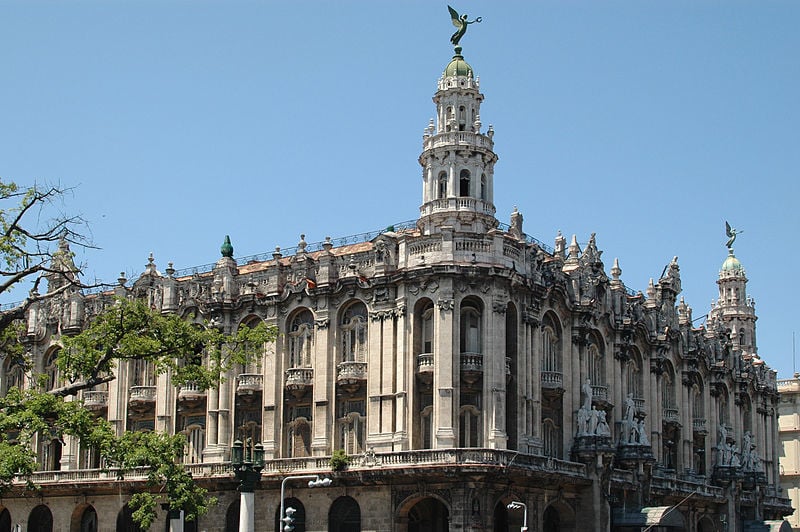
But if you can get a ticket (and you should be able to), you’ll find dance presentations every weekend. These range from ballet to contemporary dances and Spanish-influenced choreographies. Companies come from all over the country and abroad to perform here.
The four groups of white marble sculptures on the building’s facade were created by Giuseppe Moretti and represent charity, education, music and theater. Perfect subject matter for its location!
Day 1 / Stop 7 – Cuban Art Factory
- Why it’s awesome – Combining culture and nightlife, you’re guaranteed to have a brilliant time.
- Cost – $2.
- Food recommendation – Enjoy the in-house tapas and cocktails!
A great place to go night or day, this old cooking-oil factory has spaces for visual arts, architecture and design, theatre, dance, photography and music. Basically, all of the arts are represented here at this unique, eclectic place.
It’s an important stop on our Cuba Itinerary to observe and understand contemporary responses to the country’s history. And it’s just really, really fun!
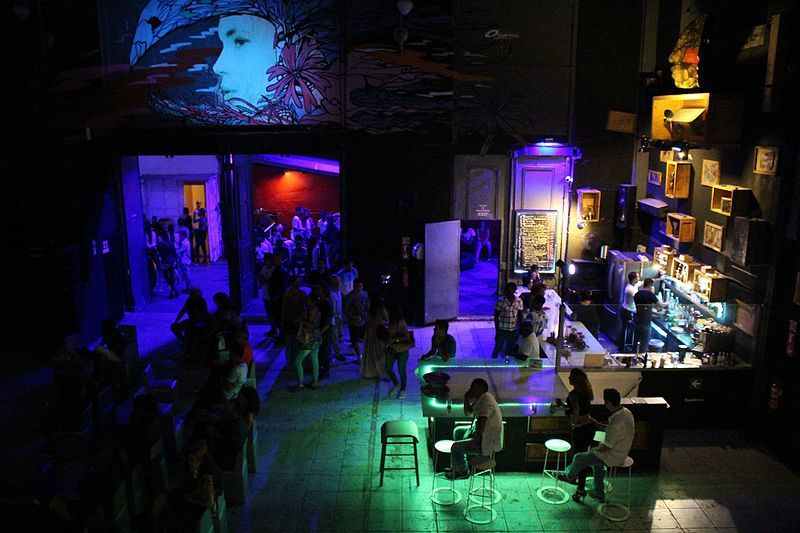
Open from Thursday to Sunday, the Art Factory has some of Havana’s best cocktails. It caters to music lovers, providing salsa, reggae and club music, as well as various amazing dance performances. It also has some incredibly original jewelry and graphic design pieces – so if you have the cash and you’re looking for something new, you can also do some shopping!
Drink wine and cocktails, eat tapas, and chat with locals and foreigners. Dance (or learn to) or sit in a remote room watching a symphony played across the wall. It’s definitely one of the coolest places to visit in Cuba.
All the rooms are connected by hallways filled with some of Cuba’s best art offerings, including sculptures, posters, art and proposed architectural projects. It’s a sensory explosion and can be enjoyed all night. The perfect cultural nightlife experience you can have anywhere!

Wanna know how to pack like a pro? Well for a start you need the right gear….
These are packing cubes for the globetrotters and compression sacks for the real adventurers – these babies are a traveller’s best kept secret. They organise yo’ packing and minimise volume too so you can pack MORE.
Or, y’know… you can stick to just chucking it all in your backpack…
Cathedral of Our Lady of the Assumption | Santa Ifigenia Cemetery | Cespedes Park | Diego Velazquez Museum | La Gran Piedra
For the next part of our 2 day itinerary Cuba, leave behind the city of Havana for Santiago de Cuba! The flight takes under 2-hours before you get to experience a totally different side of Cuba.
Day 2 / Stop 1 – Cathedral of Our Lady of the Assumption
- Why it’s awesome – Beautiful and classical, the Cathedral is filled with art.
- Cost – ~$2.
- Food recommendation – Try something uniquely Cuban at Thoms Yadira Restaurant.
Filled with Cuban and European art, the cathedral is a treasure trove. Your fee is considered a donation to the poor of Santiago de Cuba and the maintenance of the church. It is therefore not fixed.
Climb up to the right tower of the cathedral and enjoy the view over the city. The cathedral has quite a history! At different times in its past, it was destroyed by fire (a few times), taken over by pirates, and hit by earthquakes and hurricanes. Still, it stands today as one of the most beautiful Cuba attractions – with a few touch-ups and rebuilds!
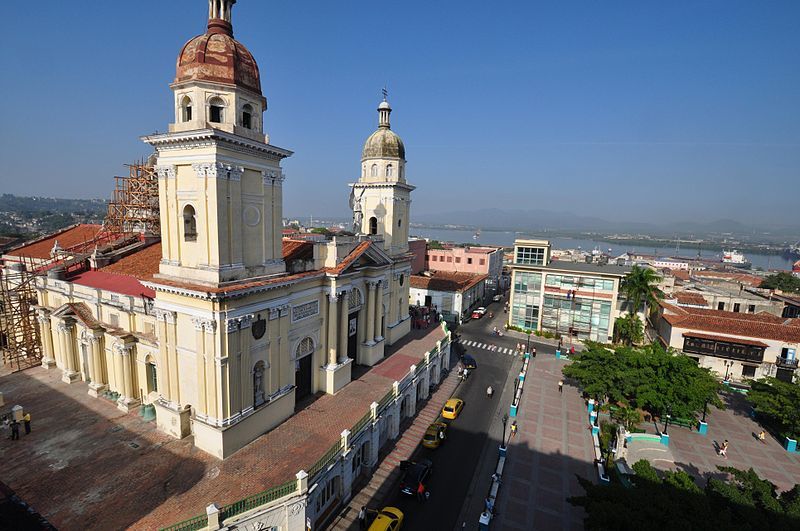
The church’s history starts in 1514, at the beginning of the Spanish colonization of Cuba. A small, rudimentary chapel dedicated to Saint Catherine, it went through various stages of development and growing importance.
It was destroyed in the earthquakes of 1678, 1766, 1852 and 1932. Finally, it became a national monument of Cuba in 1958. It’s a lovely place to visit and admire the architecture and art. Whether you’re religious or not, it’s a worthwhile stop!
Day 2 / Stop 2 – Santa Ifigenia Cemetery
- Why it’s awesome – The mausoleum and guard change are impressive, and the grand old cemetery beautiful.
- Cost – $3 for tourists (free for locals).
- Food recommendation – There are no nearby restaurants, so be sure to pack some snacks and a bottle of water .
While it’s unusual to include a cemetery in a travel itinerary, this is one of Cuba’s best attractions! The Santa Ifigenia holds the tombs of many great historical figures, among over 8000 others.
It is the final resting place of Fidel Castro and was created long before to accommodate the victims of the War of Independence and a yellow-fever outbreak in 1868. It’s most impressive feature is the mausoleum of José Martí, where a round-the-clock guard is changed every 30 minutes. It’s very ceremonious, and an interesting event to observe!
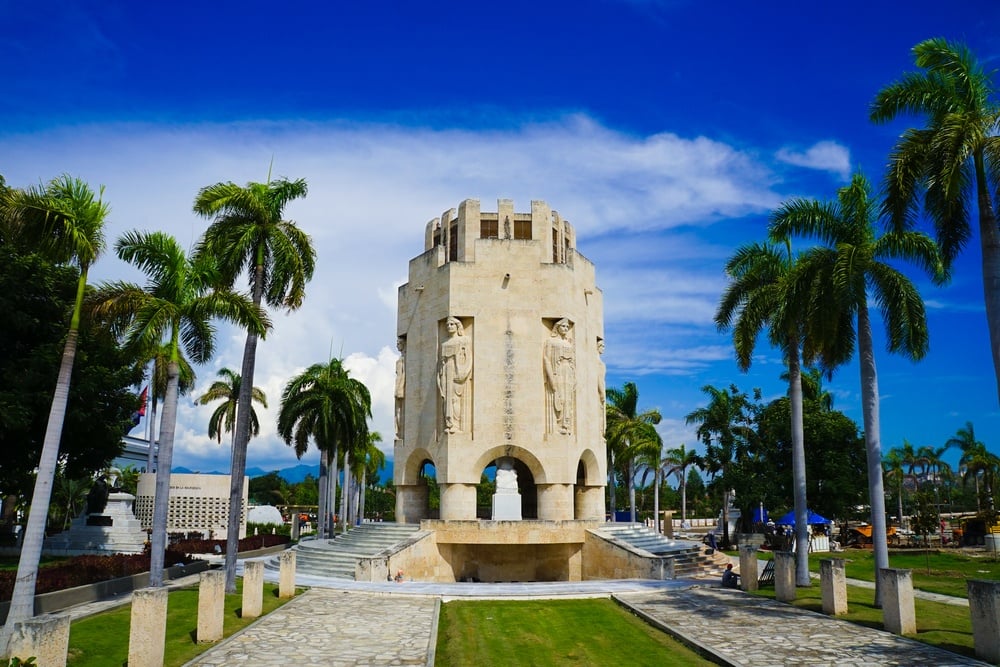
Other notable figures you’ll find are Cuba’s now disgraced first president and Emilio Bacardí y Moreau of the famous rum dynasty (Bacardi!), among heroes and renowned men and women.
The cemetery is simply beautiful, and an uncommonly important part of the local history and culture. Some of the largest funerals in Cuba have taken place here, with thousands of people sending off their loved ones to their last home.
Day 2 / Stop 3 – Cespedes Park
- Why it’s awesome – A great way to experience the local culture and architectural significance.
- Cost – Free.
- Food recommendation – Enjoy a casual meal at Parque Del Ajedrez.
Centrally located and surrounded by Cuba landmarks, Cespedés Park is a gem! There’s so much to enjoy here, including the architecture of the surrounding buildings, the live music and performances, and the lively conversations taking place all around you.
The Park has long since been a cultural, social and political hub of Santiago de Cuba, and locals love to debate and enjoy themselves here. It’s one of the best places in Cuba to relax and enjoy the island’s ‘street scene’ and participatory culture.
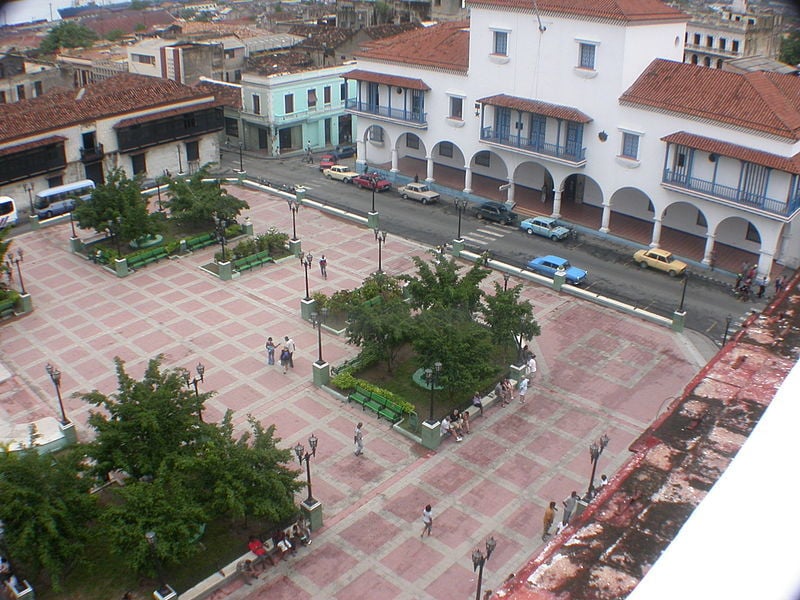
There’s always something going on here, with many local initiatives taking place. It’s one of the best places to enjoy a free performance and listen to musicians from an older time transport their audience with Cuban rhythms!
Stroll through the large garden and the tiled courtyard. In the middle of the square, you’ll find an impressive bronze bust of the park’s namesake, Carlos Manuel de Céspedes. He was a landowner who in 1868 started the struggle for Cuban Independence – an important local figure!
Insider Tip: The Park is a great place to bring your camera ! Surrounded by such important historical buildings, and is so beautiful in its own right, you’ll find lots of great shots.
Day 2 / Stop 4 – Diego Velazquez Museum
- Why it’s awesome – It’s a historic monument and a museum!
- Food recommendation – Dinner at Thoms Yadira Restaurant.
The Diego Velázquez Museum is not only filled with historic artifacts and information but is an important and impressive national monument itself. Situated in Cuba’s oldest surviving building, it was once the residence of Diego Velázquez, the Spanish conquistador who conquered Cuba and created a few very important settlements.
He established Santiago de Cuba in 1514 and Havana a year later. The house was completed in 1530 and has somehow survived the threat of fires and hurricanes which so many other Cuban landmarks have fallen to. That makes it the oldest example of Cuba’s colonial architectural style!
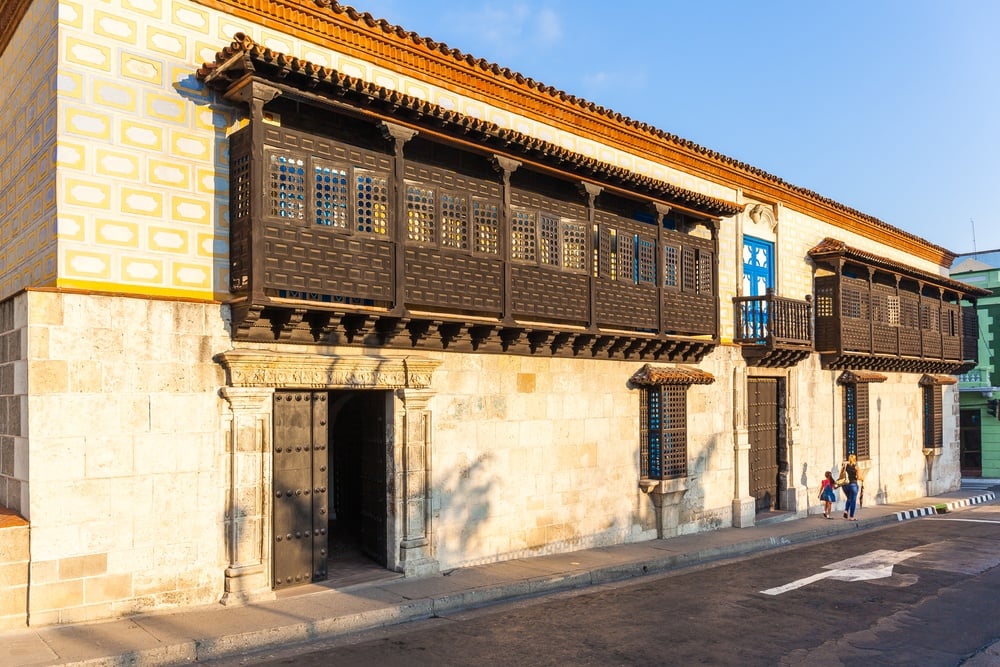
Restored in the late 1960s and inaugurated as the Museo de Ambiente Histórico Cubano 1970, there is lots to see in this old museum. It is curated to show the life and times of the Spanish colonial era, with artifacts of British, French, Spanish and Cuban origin.
The design and decoration of the rooms allow you to fully grasp the wealth of the colonialists of that era, underpinned as it was by the incredible trading opportunities which came about from Spanish exploration of Latin America.
Spend a few hours here to take it all in and get a grasp of Cuba’s fascinating history, beyond the more recent revolution!
Day 2 / Stop 5 – La Gran Piedra
- Why it’s awesome – It’s an iconic rock, and a beautiful getaway!
- Food recommendation – Get something at the outdoor Cafetería 1234.
The definite highlight of this stop is the 63,000-ton boulder that crowns the top of the mountain, perched there like something left behind long ago, high above the Caribbean. But that’s not all the mountain has to offer!
A hike up here brings you into contact with part of Cuba’s greenest and most biodiverse mountain range. Spot exotic birds and creatures scurrying through the underbrush, and find magnificent, lush plant-life.
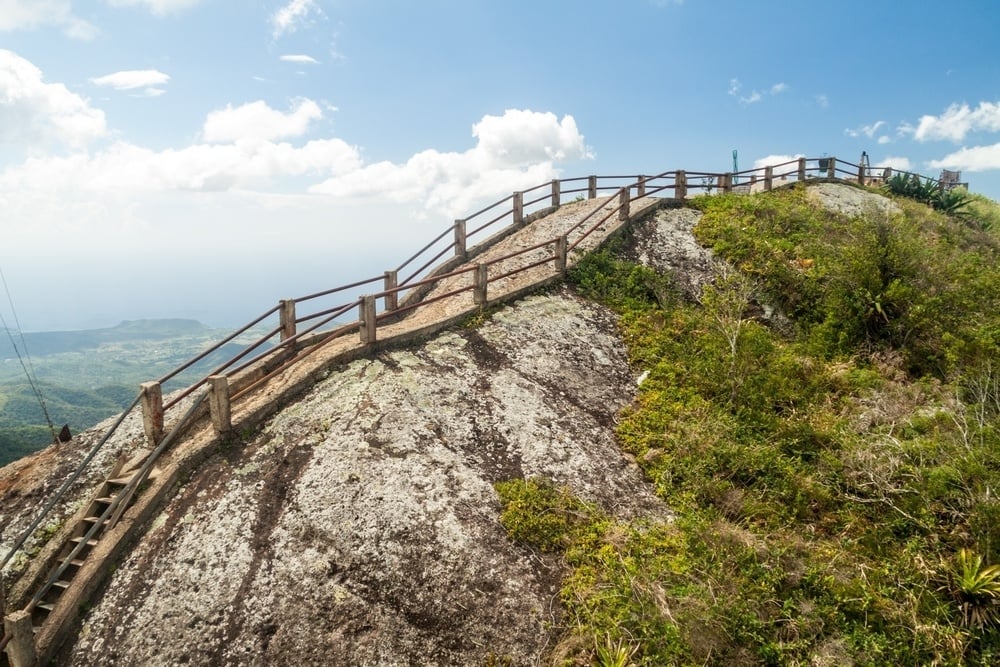
The mountains have a unique heritage, with a legacy of 18th-century coffee plantations at their base, and many local stories attached to them. You can find a tour guide here to show you around, or tour the area yourself – whichever suits you best!
The unique site is a national monument and a watchtower with panoramic views over the mountain ranges and coast. While it’s a bit of a drive from Santiago de Cuba (under an hour), it’s one of the top Cuba landmarks, and certainly worth the visit. Especially when you can enjoy the sunset from this gorgeous vantage point!
Insider Tip: You can rent a car or catch the bus here. But certainly, the most fun option is renting a motorbike! It’s a great way to appreciate the Cuban countryside and enjoy the warmth on your way to the stop.
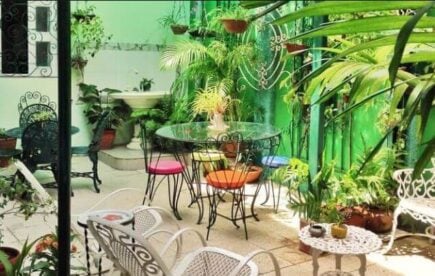
Hostal El Artista
Surrounded by great restaurants and interesting sights, this hostel is within walking distance of the town’s main attractions.
- Enjoy a fresh, delicious and cheap espresso at the cafes on Main Street
- Take in the amazing panoramic views of Santa Clara from the Loma del Capiro
- Take in a show at the marvellous Teatre La Caridad
Classic American Car Tour | Cabaret Tropicana | Private Cuban Cooking Experience | Cuevas de Bellamar | Ernest Hemingway Tour
With 3 days in Cuba, there is such a wide variety of amazing, authentic activities and unique places. These are some great options you can choose from, to make a perfect day on your Cuba Itinerary!
2-Hour Classic American Car Tour
- Enjoy a ride in a beautiful vintage classic American car;
- Tour Havana and see all of its most impressive sights, as well as some local haunts;
- Feel old-school classy on this iconic Cuban experience.
Wondering what to do in Cuba on your third day? Cuba, and Havana in particular, is famous the world over for its classic American cars. How perfect, to be able to cruise around and see the sights on a tour in one!
The 2-hour tour gives you the opportunity to see Havana in style. Feel the wind in your hair as you ride through the quaint city streets in a truly classic 1950s American convertible. You can choose one in powder blue, or baby pink, to enjoy that real in-a-movie feeling.
The tour includes cruising through the suburbs of Centro Habana, Miramar, and Vedado. You’ll also pass a few great Cuba points of interest that aren’t included in Day 1 of your Cuba Itinerary!
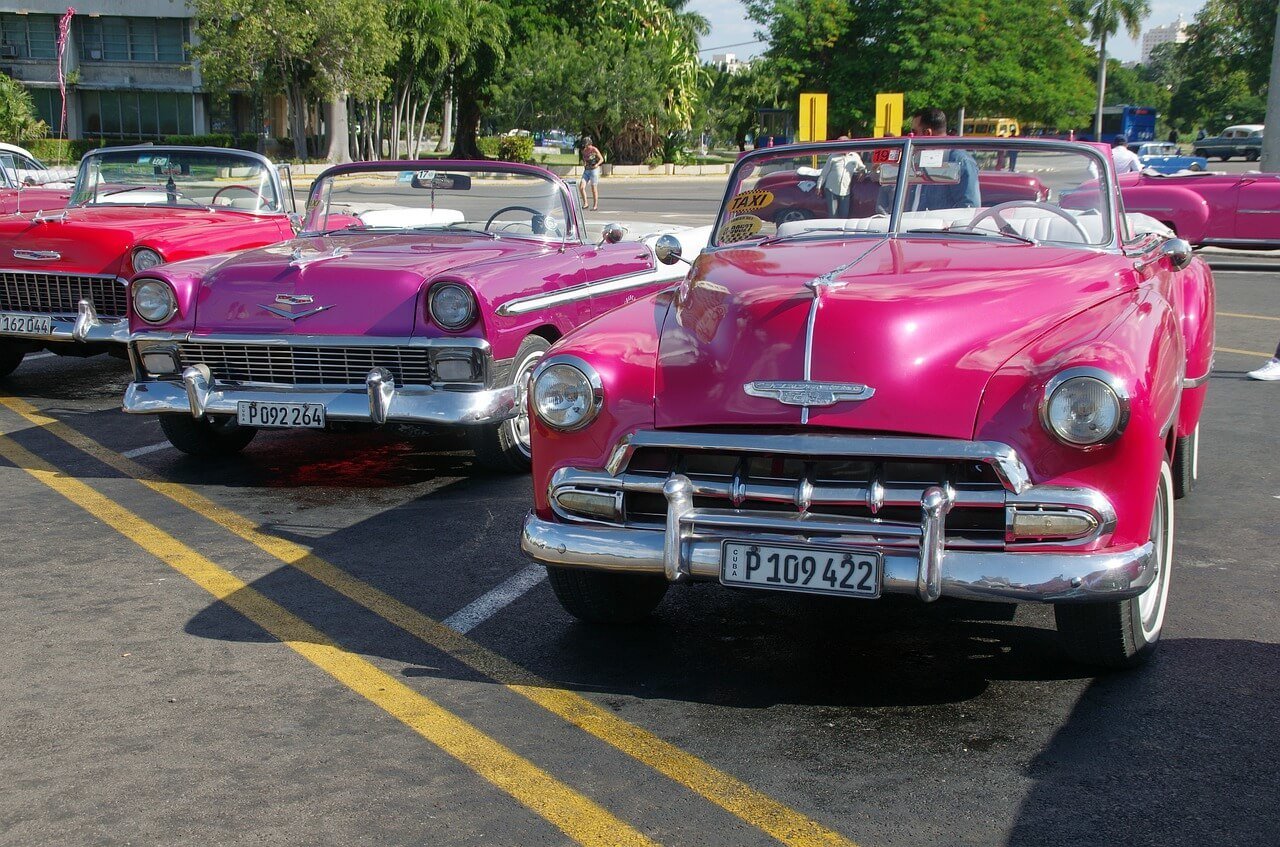
After a 90-minute drive in your ‘50’s classic’, this Cuban tour draws to a close with a visit to the famous Salon de Los Grandes bar. This unique place was once a fortification built to guard Havana during the missile crisis.
And finally, you’ll walk through the garden terrace of the beautiful Hotel Nacional. Here you’ll enjoy a cocktail overlooking the Malecon at sunset. You can stay on longer if you choose, and enjoy cocktails into the night!
It’s a really wonderful experience and feels absolutely unique. Be sure to bring your camera ! You will want a picture of this.
Cabaret Tropicana
- Lovely historic venue dating back to 1939;
- Fantastic, eclectic show that combines all the best of Cuban art;
- A memorable evening with a floor show and great drinks.
You can’t go to Cuba without watching one of the island’s famous shows! And Cabaret Tropicana is just our favorite place to see one. It feels like a really authentic experience, located outdoors in a wooded area – a unique setting among the traditional city Cabarets.
You’ll have one memorable evening, enjoying a 2-hour show that beautifully combines ballet and carnival choreography with bright, vibrant costumes and the island’s iconic Carribean music.
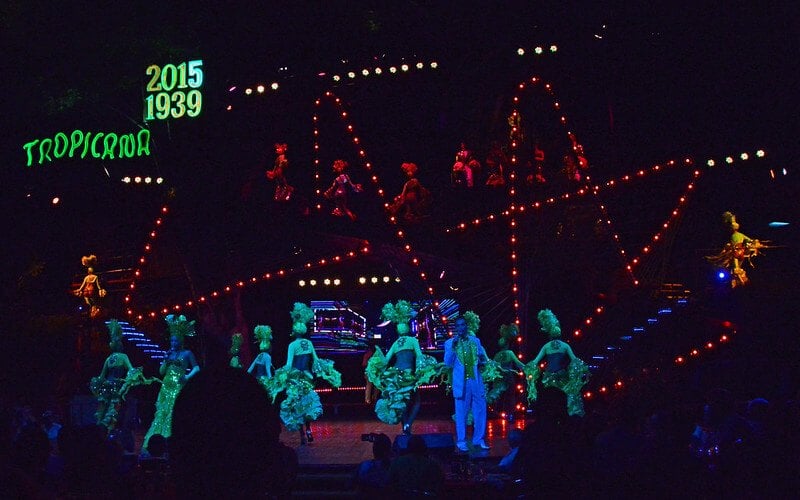
You can choose between a selection of offers, but the simplest and most well-priced option includes the Tropicana Floor Show, a tasty welcome drink, 1/4 bottle of 3-year-old Havana Club rum with a mixer of your choice and a plate of savory snacks!
What sounds better than dinner and a show, to round off a full day of exploring? We can’t think of anything! Of course, if you want to find a cabaret show once you get to Cuba, have a look around.
There are a few great options, and all of them have their own style and approach. You can even try out a few, ending off all your days with cabarets! It’s certainly one of the best things to do on the 3 day itinerary Cuba.
Havana: Private Cuban Cooking Experience
- Source your ingredients at a farmer’s market with your chef;
- Learn to prepare a traditional Cuban meal;
- Learn some of the area’s history while you chat and cook.
If you’re looking for an authentic Cuban experience , where you can chat with locals, learn about their culture and history, and prepare some great food with them, you won’t get better than this. It’s one of our favorite ways to experience Cuba!
Stroll through Old Havana on a Cuba walking tour to a local farmer’s market – here your guide and the chef helps you choose the ingredients you need to prepare a traditional Cuban meal. You’ll also find some weird and wonderful produce, and learn about them as you go.
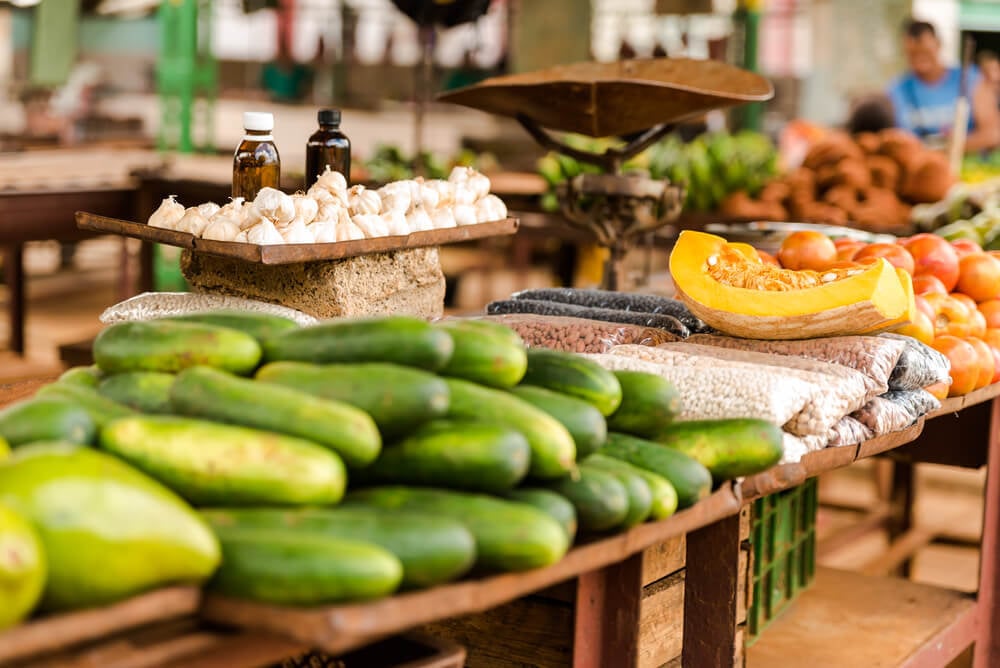
You will also learn about the importance of food in Cuba’s history, including the dual economy, food production, and ration system that was implemented during the revolution. You’ll also see some of Havana’s important sites and hear about their history as you walk to the kitchen or casa.
Join the chef in preparing traditional Cuban dishes based on your selected ingredients – they can adapt the meal plans for vegans, halal, or vegetarian! So everyone is welcome. The meal depends on what is available in the season, but typical Cuban dishes include beans and rice, fried plantains, and yucca root with garlic sauce, among other options!
Once you have prepared the meal, you can enjoy the feast! The chef will also provide a traditional Cuban dessert and cocktail, which is incredible. Enjoy getting to know them and tasting the fruits of your labor.
Explore the Caves at Cuevas de Bellamar
- These gorgeous caves a short drive from the city and one of the greatest Cuba attractions;
- The surrounding area is lush and beautiful, making it ideal as a half-day trip;
- There are stalactites and stalagmites to admire, and even an underwater stream.
Visitor-friendly and with multiple caves, Cuevas de Bellamar is the most remarkable natural wonder on the island-country. And you don’t even have to climb a mountain to get there!
The cave system descends 50m underground and follows about 750m of underground corridors and caverns. There are 2500m of cave systems here, but only part of it is safe and open to the public. Stroll and shimmy and climb through the cave system, admiring the millenium-old formations there.
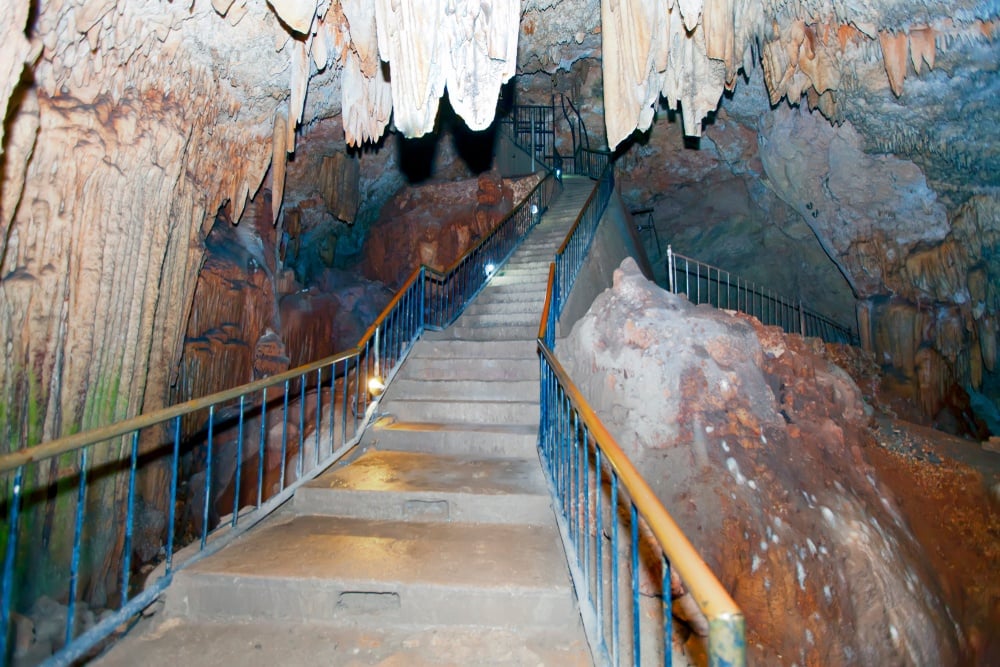
The caves were first discovered in 1861 (at least, first within recorded history). Today tours are conducted in various languages including English. They’re 45-minutes long and go every hour from 9:30 am.
The entrance is located within a small complex where you’ll also find some shops, restaurants, and a children’s playground. It’s a fantastic place to spend a few hours on your Cuba Itinerary. Admire the eerily sparkling crystals and an underground stream running through the caves.
The caves cost $5 USD for entrance and an additional $5 USD to bring your camera. It’s an extra fee, but very worthwhile! You will itch to take photographs of the beautiful sights, and snap a few with you in it.
On the Trail of Ernest Hemingway Tour
- Explore Cuba through the eyes of the famous author Ernest Hemingway;
- Visit attractions loved and written about by the author on a half-day tour;
- See where Hemingway lived and wrote his most popular novel, “ The Old Man and the Sea ”.
Earnest Hemingway gifted his 1954 Nobel Prize to Cuba, having lived on and off the island for 20 years, and feeling that the island inspired many of his works.
On this laid-back tour of Cuba, you visit the Finca Vigía where Hemingway lived and wrote some of his best literature. Next stop is Cojímar, the small town where Hemingway was inspired to write “The Old Man and the Sea” – that’s one of the books on our Cuba reading list!
There you’ll find an unusual statue, made in his honor. Created by from old anchors, props and tools salvaged by local fishermen, it’s the perfect seafaring ode to the author!
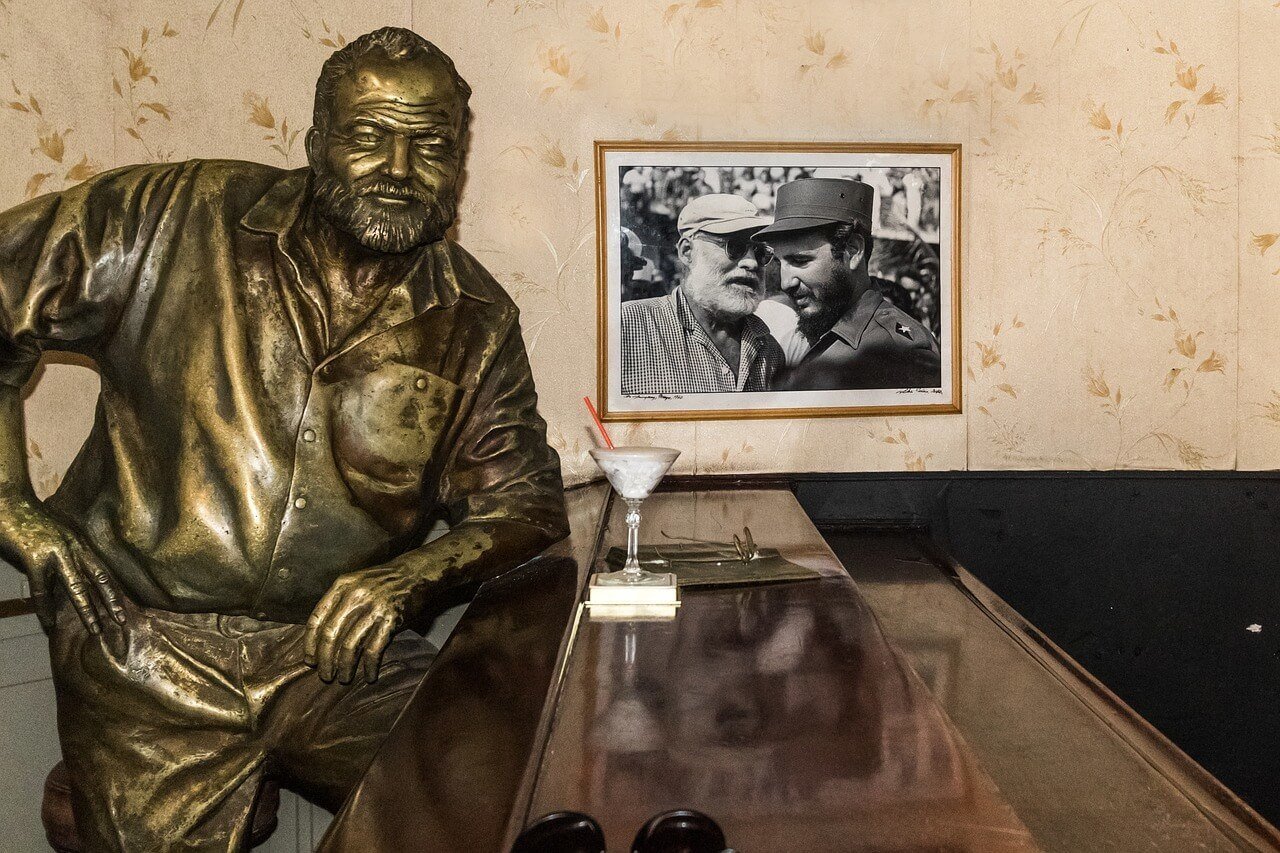
You don’t have to love Hemingway to enjoy this tour. The author just provides an angle from which to observe the unique history and culture of Cuba and see things you would have missed on your own. That, after all, is why we enjoy tours.
Explore the old haunt of Hemingway and his cohorts, enjoying a cocktail and lunch before you return to the city to follow the Hemingway trail through Old Havana. It’s a lovely way to see the old town, with little stops along the way to appreciate colonial architecture and modern touches.
Bring your camera and your walking shoes – the tour will take you to many new places, and you want to be prepared!
Cuba is a very safe place to travel ! Its violent crime rate is very low, and theft and muggings of tourists are quite rare. We suggest you keep a map on you so that you do not get lost, and stick to well-lit areas. But these are just normal precautions when traveling somewhere new!
Opportunistic crime is slightly higher – scams and such. So be wary of anything that feels like a scam! You won’t be in any danger, but you could end up losing some cash.
Pickpockets also frequent the busy areas of Havana and Santiago de Cuba. When there are a lot of people around, a good safety practice is to keep a hand on your bag! This way you know it’s safe and sound.
Many of the island’s residents are poor, so the temptation of theft can be great. This is why you should also keep only the money you need on you , and any very valuable possessions at home, or in a safe at your hotel.
Another important thing to keep in mind is that Cuba is a communist country. At the time of visiting you may not be allowed to take photos of anything pertaining to the government. While the political system has little effect on tourism, you may at times find it uncomfortable.
Don’t Forget Your Travel Insurance for Cuba
ALWAYS sort out your backpacker insurance before your trip. There’s plenty to choose from in that department, but a good place to start is Safety Wing .
They offer month-to-month payments, no lock-in contracts, and require absolutely no itineraries: that’s the exact kind of insurance long-term travellers and digital nomads need.

SafetyWing is cheap, easy, and admin-free: just sign up lickety-split so you can get back to it!
Click the button below to learn more about SafetyWing’s setup or read our insider review for the full tasty scoop.
Sunny Viñales Day Tour From Havana
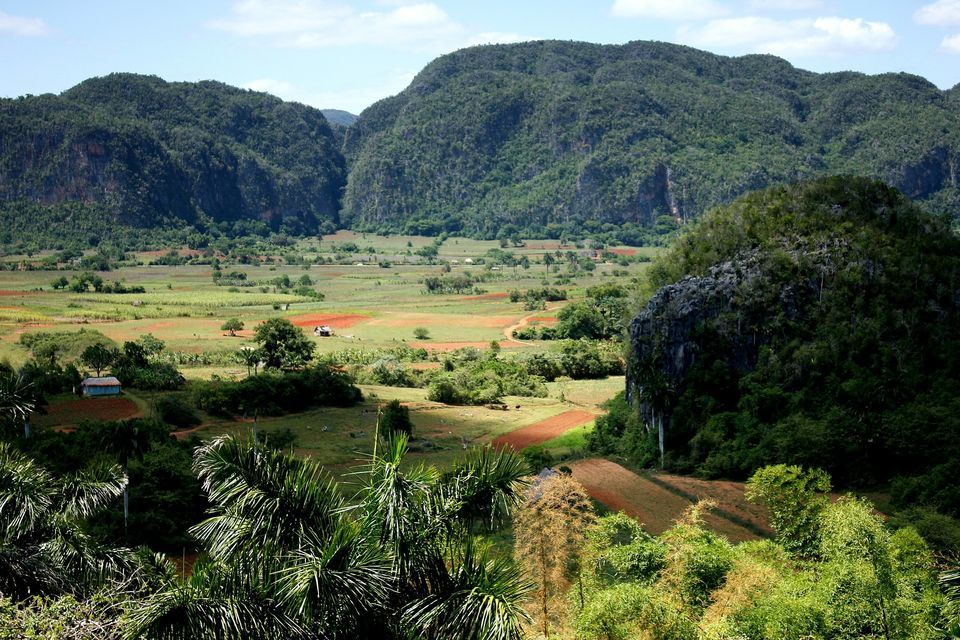
On this day trip, you’ll visit the famous Cuban coffee and tobacco plantations in Viñales Valley! Enjoy a welcome drink before setting out on a 4-hour trek on the area on horseback.
You’ll ride through the plantations, with a knowledgeable guide who will tell you all about their fascinating histories! Stop at some beautiful caves and a lake. Lunch is served at a beautiful old Cuban restaurant, Finca el Paraiso.
After that, you’ll visit Cueva del Indio, an amazing old Indian cave, by boat. You’ll also see the Botanic Garden in Vinales, and the massive, brightly colored Mural de Prehistoria! You will even learn how Cuban cigars are made and get the opportunity to try one.
Yumurí Valley Jeep Safari
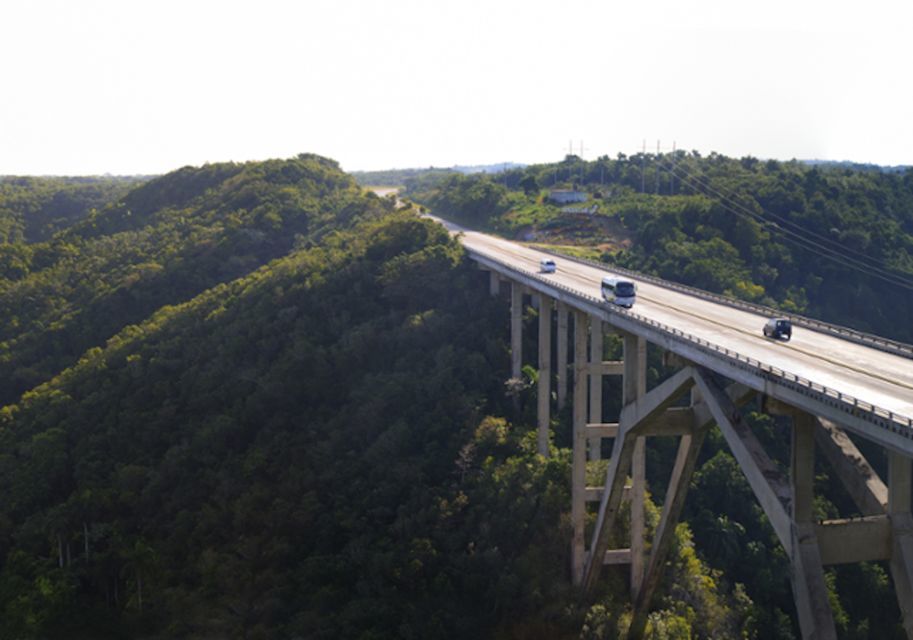
Another incredible Cuba point of interest is the Yumurí Valley! Explore over 150 kilometers of the area’s lush green landscape on an off-road Jeep Safari! You’ll cross the rivers and quarries, see royal palm tree groves and small Cuban countryside villages.
Then, head to the beach to tan, snorkel and swim! Explore the partially underwater Saturno Cave and watch the ocean bed activities of exotic fish and Carribean creatures.
Next, you’ll tour Matanzas, known as the “City of Bridges”. Enjoy panoramic views of the seventeen bridges that cross the 3 rivers traversing the city. You’ll then drive through Yumurí Valley to reach the ranch where you’ll have lunch and cocktails!
Afterward you can enjoy a horseback ride, relax with a view, or go canoeing! The tour ends with a 30-minute boat ride, looking out over the Caribbean ocean and the coast.
Catamaran Cruise Tour to Cayo Blanco with Dolphins
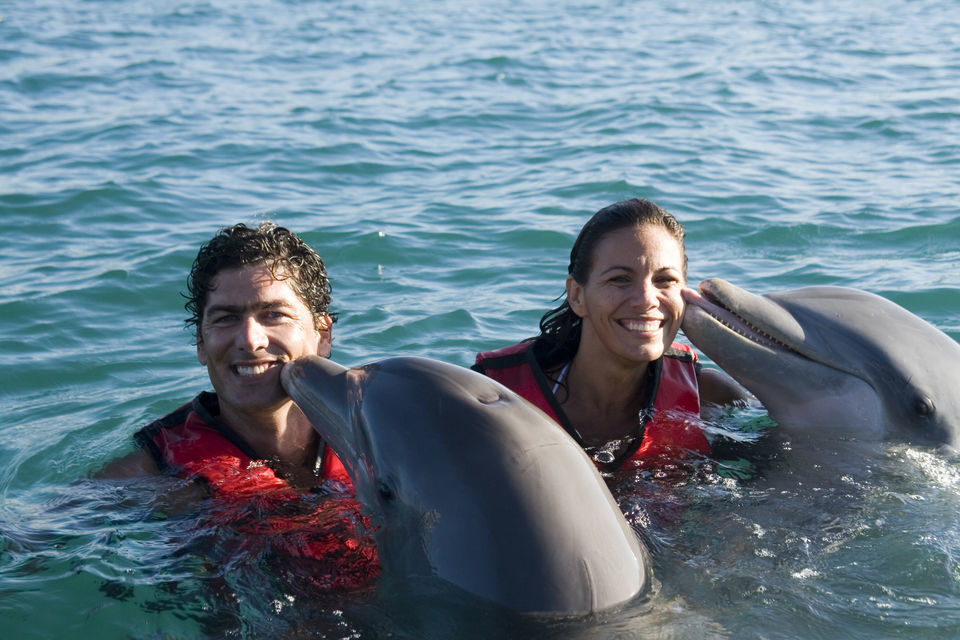
Enjoy a full-day tour to the gorgeous Cayo Blanco! Here you will have the opportunity to explore the vibrant, bustling fish communities and the reef formations, and admire the unique Gulf of Calzones.
Plus, swim and snorkel with playful dolphins at Rancho Cangrejo! It’s an amazing experience, and one which does not harm the dolphins in any way (so, not SeaWorld). Snorkel in the coral reefs full of life. It’s ideal for families and couples!
After your exciting day of water-bound activities, you’ll enjoy a Caribbean lunch and some laid-back beach time, working on that tan or lying in the shade of palm trees.
Tour to the Caribbean and Crocodile Farm
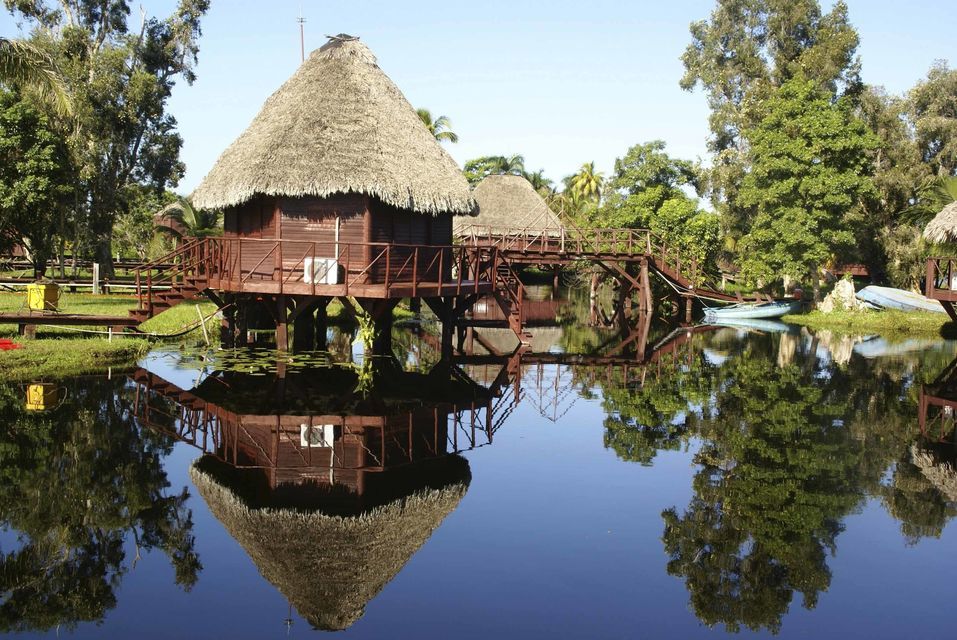
Come face to face with crocs on this awesome full-day tour. This Cuba tour will take you through the naturally diverse and striking Zapata region of the island, where you’ll get far off the beaten path and explore the more rural side Cuba.
The crocodile farm you’ll visit allows the prehistoric animals to live in their natural habitat. That’s where you can view them. On the banks of the river, while you cruise along it in a boat. Don’t worry, it’s safe!
Afterward, you’ll enjoy a delicious Cuban lunch, and get some free time to snorkel, swim, sunbathe, and sip on cocktails. Basically just living that idyllic island life you always dreamed of!
Everglades, Miami City Tour & Bay Cruise
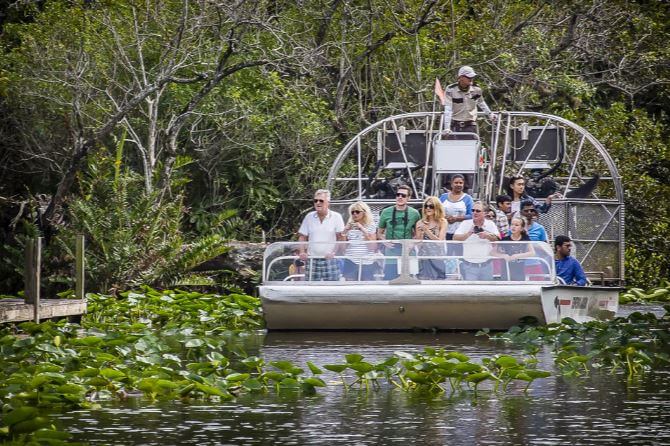
Take a short flight to Miami to see all the best the famous coastal city has to offer! This tour includes a trip through the Everglades, where you can spot rich wildlife in the swampy landscape, like turtles, snakes and exotic birds.
Then, visit Miami’s hotspots, like Coconut Grove and the movie-ready Miami Beach. You tour guide will tell you all about the attractions you see, including their history and any movies they’ve been in!
Finally, enjoy a cruise around the bay and past ‘Millionaire’s Row’, where celebrities’ houses line the bank. It’s a massive contrast to the last few days on your Itinerary for Cuba, and worth seeing just for that.

Stash your cash safely with this money belt. It will keep your valuables safely concealed, no matter where you go.
It looks exactly like a normal belt except for a SECRET interior pocket perfectly designed to hide a wad of cash, a passport photocopy or anything else you may wish to hide. Never get caught with your pants down again! (Unless you want to…)
Find out what people want to know when planning Cuba itinerary.
How many days should you stay in Cuba?
A minimum of 3 days in Cuba is ideal if you’re looking to hit the hotspots. If you’re keen to explore outside of Havana, plan for 1-2 weeks.
What should you include on a 1 week Cuba itinerary?
You won’t want to miss out on these top attractions: – Museo de la Revolucion – Cespedes Park – El Capitolio
What are the best things to do in Havana?
Aside from visiting the top attractions, we highly recommend taking a walk along the Malecon and heading to Cuban Art Factory for a drink or two!
Is 2 weeks in Cuba enough?
Definitely! This will give you enough time to explore the vibrant culture and amazing history that Cuba has to offer, as well as discover the scenery outside of Havana.
There’s no end to things you can do in Cuba! But when you’re only spending a few days on the island, these are certainly the best way to fill your days.
You’ll end the tour of Cuba with incredible memories and a great tan. Not to mention a way better understanding of the country’s unique history and culture! That’s the way all trips should end, we think. With joy and knowledge in equal abundance.
So get packing ! Cuba has some great accommodation options and something for everyone. Whether you’re looking for summer fun or a great way to spend some time over the winter season. You don’t want to miss out!

Aiden Freeborn
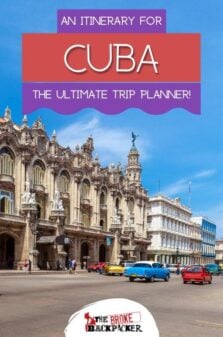
Share or save this post

Unbelievable that with the political repression and COVID infestation you can cite Cuba as a tourist destination. Maybe you should also look Into a people’s life and REAL life before speaking
The sad fact is that COVID and varying degrees of Political Repression are a reality on life in 2021 in many countries across the world – including my home nation of the UK.
A number of our writers have spent time in Cuba and their direct first hand experiences of the beautiful, fascinating country informed our content.
At the end of the day, this is a travel site and its not our place to delve too deep into peoples “real lives”. For similar reasons, we would never tell people to avoid Miami (as a random example…) despite the many problems the city experiences.
Kind regards
Leave a Reply Cancel reply
Your email address will not be published. Required fields are marked *
Save my name, email, and website in this browser for the next time I comment.
Notify me of followup comments via e-mail.
Most Popular tours

Western Skyline Ride
A week long cycling holiday through western Cuban countryside visiting Las Terrazas and the tobacco fields of Viñales via the spectacular Skyline Trail.
Private group dates available from £1474 pp.

Cuba Completa
A two-week cultural holiday visiting five of the nine UNESCO World Heritage Sites and discovering Cuba’s revolutionary history and vibrant culture

Cuba’s changing – come and meet Cuba’s new entrepreneurs and dive into their creative buzz.
Private departure dates available.
The Sustainable Cycling & Active Travel Experts In Cuba
Are you high-octane or more leisurely? Come cycling, kayaking or trekking with us. Or slow down and savour Cuba’s tropical flavours on one of our cultural trips. Share the adventure on our small group departures or create your own travel bubble with a private departure or tailor-made tour.
Cycling in Cuba
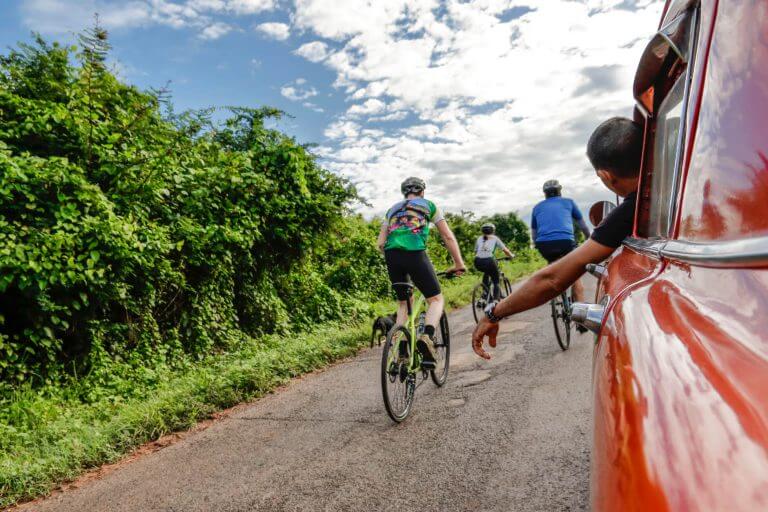
Active tours
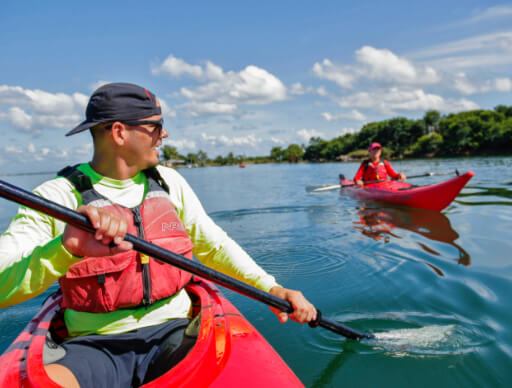
Cultural Cuba
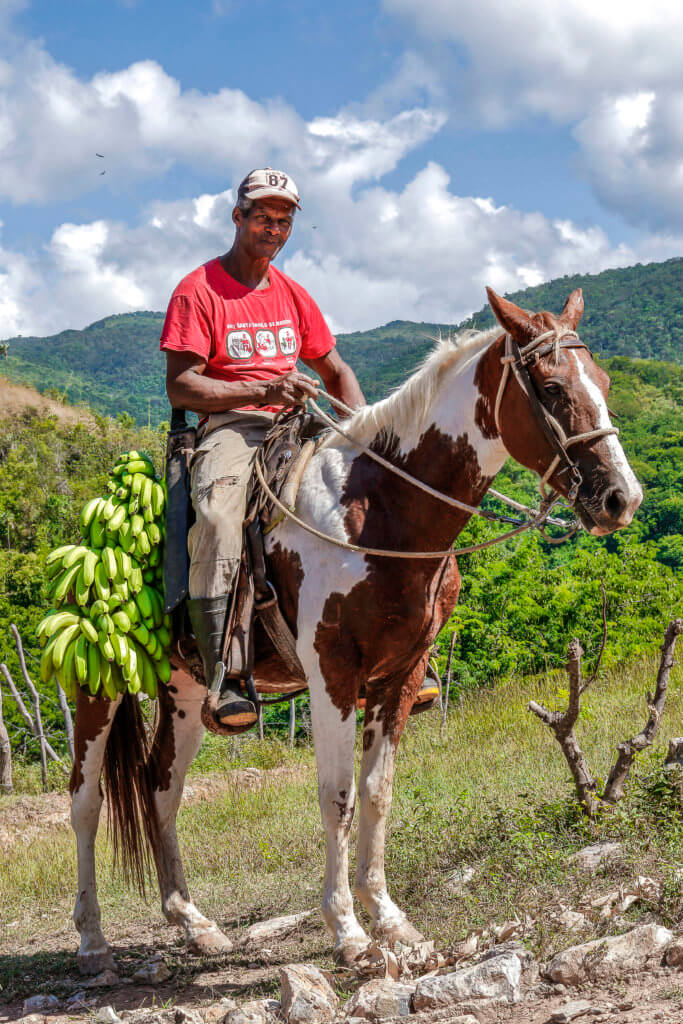
The Cubania experience
Cuba travel experts.
ABTA protected, we have 20+ years organising tours in Cuba. Experts in OFAC compliant tours for US travellers Travel to Cuba with peace of mind when you book one of our OFAC compliant tours
Sustainable Experiences
We champion responsible travel which protects Cuba’s rich biodiversity and sustains local community
24 Hours Support
English/Spanish speaking team available 24hrs during your holiday
Excellent Customer Service
Rating 5* on Google, we are here to help you prepare an epic holiday

In safe hands
We are Cubania Travel and we love what we do. We are the cycling and active travel experts in Cuba. We have an international standard bike workshop and an incredible team of trained cycling guides.
For the last 20 years, we have been providing exceptional and meaningful holidays, enriching the lives of active travellers and our community, and exposing them to a unique way of living by sharing the real Cuban experience.
We aim for excellence in everything we do – from the quality of our tours to the service we give and the experiences we offer. This is our purpose. It’s why we exist.
Why choose us
100% satisfield clients.
With a 5* rating on Google, Cubania has a track record of happy clients who have enjoyed sustainable experiences in Cuba. Reviews and testimonials from satisfied travellers reflect the company’s commitment to delivering exceptional journeys. Check out our Google reviews for yourself!
Safety and support
We look after your safety by providing expert guides, thorough risk assessments, and comprehensive orientation sessions. We offer 24/7 emergency support during your time in Cuba, maintain strong local partnerships, and provide travellers with well-maintained sports equipment. With Cubania, you’ll explore Cuba confidently, knowing you’re supported every step of the way.
Local expertise
More than 20 years of local expertise has made Cubania Travel the best agency for adventure and cultural tours in Cuba. Our deep-rooted local connections and insider knowledge guarantee authentic experiences, off-the-beaten-path discoveries, and seamless cultural immersion, making us the top choice for sustainable Cuban adventures.
Unique itineraries
We offer unique Cuba tours thanks to our profound local knowledge. We delve beyond tourist hotspots, unveiling hidden gems and show you Cuba’s unique culture by doing things the Cuban Way. With our deep-rooted connections and knowledge, we craft truly immersive adventures, ensuring each journey is a unique and unforgettable exploration of culture and nature.
Responsible travel
We champion responsible travel which protects Cuba’s rich biodiversity and sustains local communities by offering tours that are low in carbon footprint. In our tours, you’ll embrace human-powered travel (trekking, cycling, kayaking) and use only locally-owned accommodations and eateries. Our goal is to minimise environmental impact while maximising community support. Visiting protected natural areas underscores our commitment to preserving Cuba’s pristine landscapes, ensuring our journeys benefit local communities, travellers and the environment.
Small and Private groups
When you book with us, you can choose to join a small group of like-minded travellers, create your own private travel bubble or have a fully tailor-made trip. Whatever you choose, you’ll travel sustainably and experience Cuba, the Cuban way!
OFAC compliant tours for US travellers
Want to travel to Cuba from the US but overwhelmed by all the red tape? We hear you. The US Embargo on Cuba can make a trip to Cuba tricky for US travelers. But, with our support and a little planning, you can enjoy that epic Cuban adventure stress-free! We’ll help you understand the travel regulations set out by the US Treasury’s Office of Foreign Asset Control (OFAC) to ensure your trip is legal. View our ready-made OFAC compliant tours .

Cuba Tours for US Travelers
Are you a US citizen looking for a sustainable Cuba tour? View our OFAC (Office of Foreign Assets Control) compliant tours and get closer to the real Cuba!
Sustainable travel experiences
When it comes to the planet, we are committed to protecting it. We all emit too much carbon and we are on a mission to reduce our emissions and lower our carbon footprint year on year. We aren’t perfect but we are trying to be.
Need help planning your Cuba holiday? Get in touch with our friendly, international team of Cuba experts. Whether you are looking to join a group tour, create your own private group adventure or go bespoke, our sustainable holidays are packed with authentic experiences , flexible to suit your needs!
What our clients say
Connect with @cubaniatravel
Dive into the picturesque world of Cuba through the lens of Cubania on our Instagram feed. We curate the most enchanting moments from our trips, showcasing the stunning landscapes, cultural encounters, and the joy of our travelers.
Latest stories from Cuba
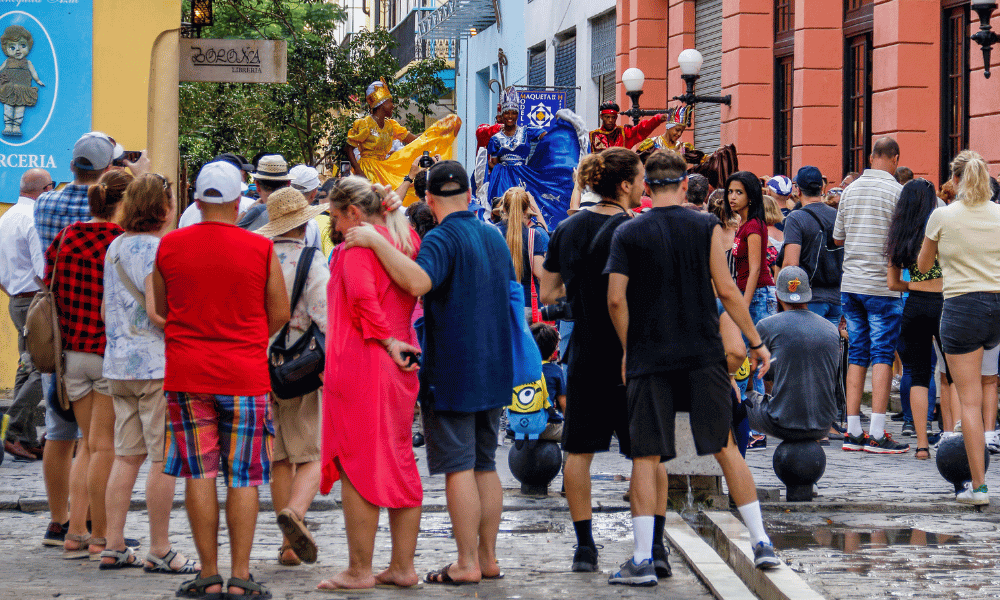
Is Cuba safe?
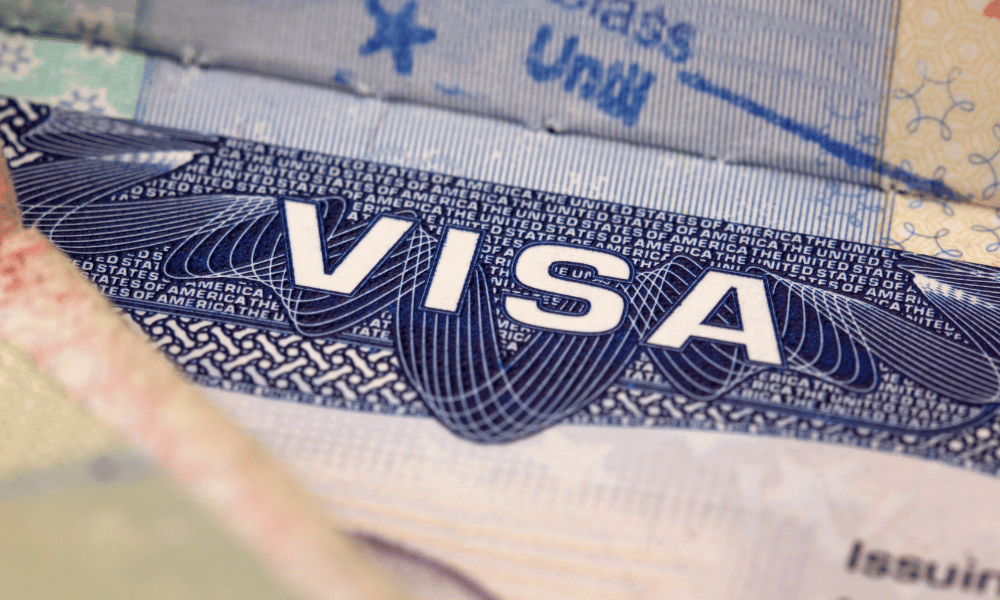
Can Europeans travel to the US if you have been to Cuba?
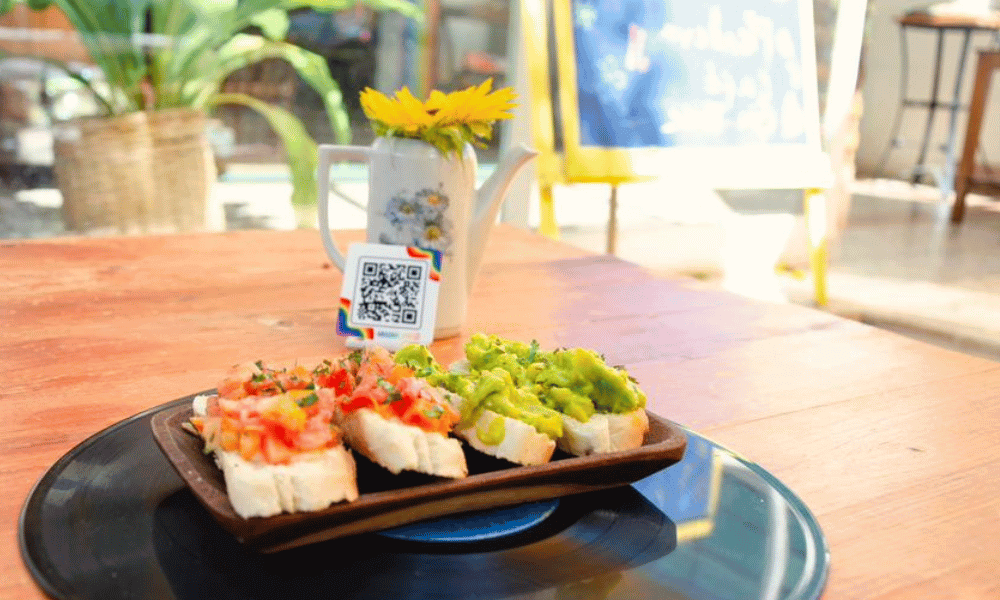
Top vegan places to eat in Havana
Free destination guide.

Subscribe to our newsletter to get useful information and up-to-date insights on the island. Get tips on: :
- Local language
- Cycling & Trekking
- Money & Costs
- Hotel & Facilities
Subscribe to our newsletter

Cuba is open! Book your trip now!
Free cuba travel guide.
Subscribe to our newsletter to get useful information and up-to-date insights on the island. Get tips on:
✔ Local language ✔ Cycling & Trekking ✔ Money & Costs ✔ Transport ✔ Hotel & Facilities
Business Channel B2C B2B Guides Journalists
Downloaded Destination Guide Bike Cuba Cubania Classic Cycle Cuba Insight Experience Havana Cuban Active Adventure Western Skyline Ride Cuba Completa Hip Havana Salsa Cubana Road Cycling Western & Central Cuba Bikepacking Cuba Kayaking in Cuba Run And Cycle In Cuba Havana Marathon Queer Cuba Havana Cycling Tour Western Cuba Trek Family Active Adventure Central Cuba Bike Ride Cuban Discovery Family Beach and Culture Central Cuba Trek Western And Central Cuba Trek Road Cycling Cuba Vuelta de Cuba
Consent I am happy for Cubania Travel to contact me occasionally via email
Click here to download Haga clic aquí para descargar
View Privacy Policy

Get a taste of the real Cuba on a legal tour for Americans.
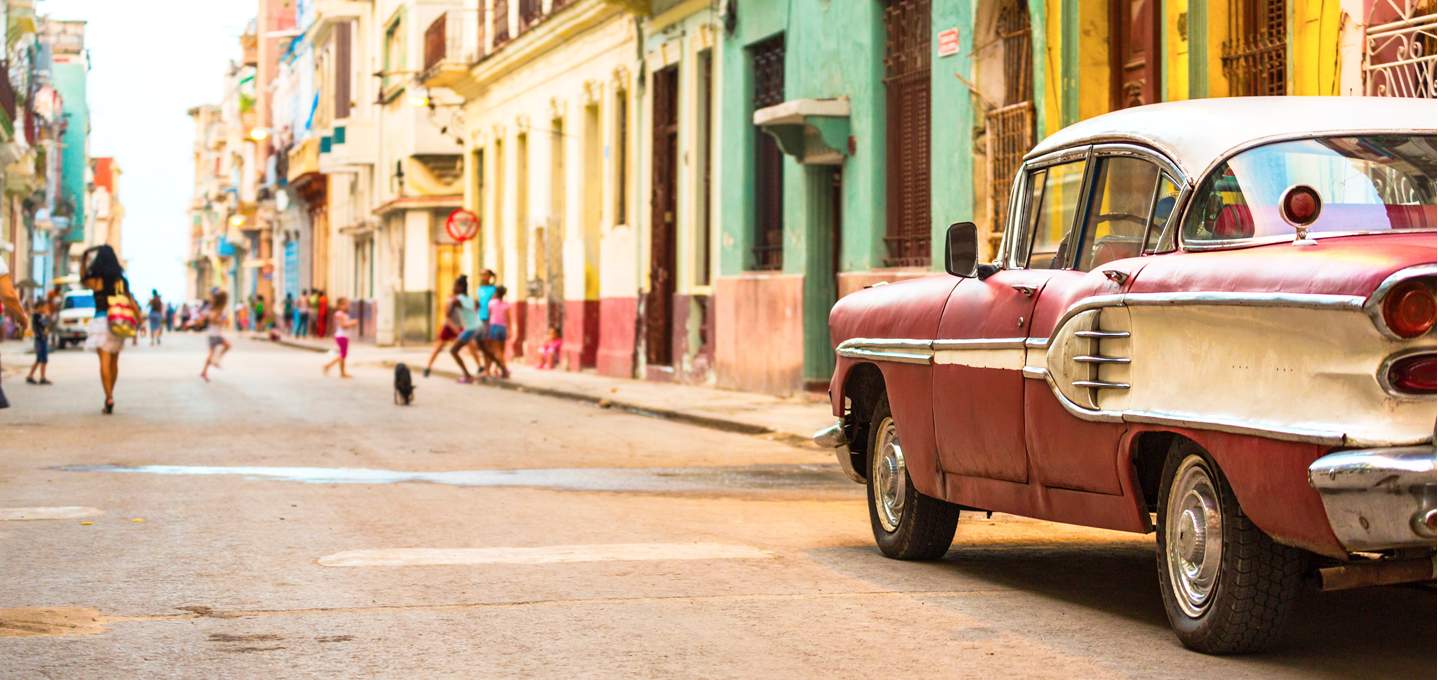
Legal Cuba Travel
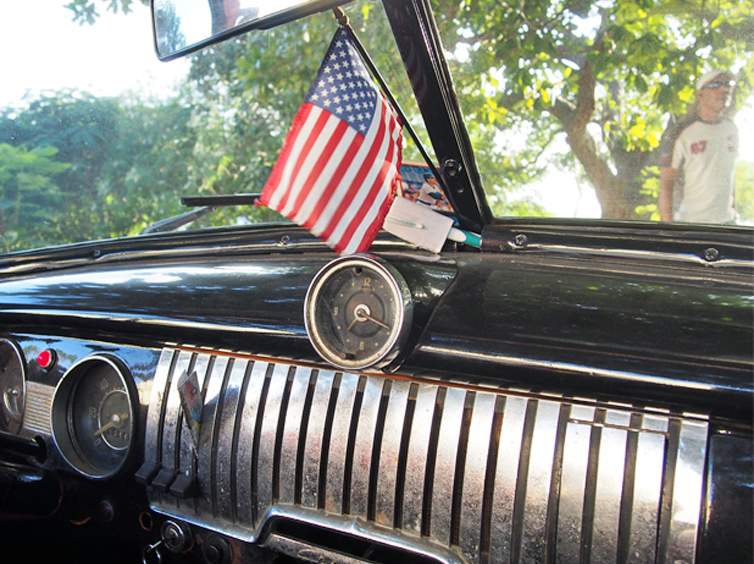
We've the latest information you need as an American citizen on Cuba travel licenses, Cuba tourist visas, flights to Cuba, and advice to plan your Cuba trip, safely and legally.
Our Cuba Tours
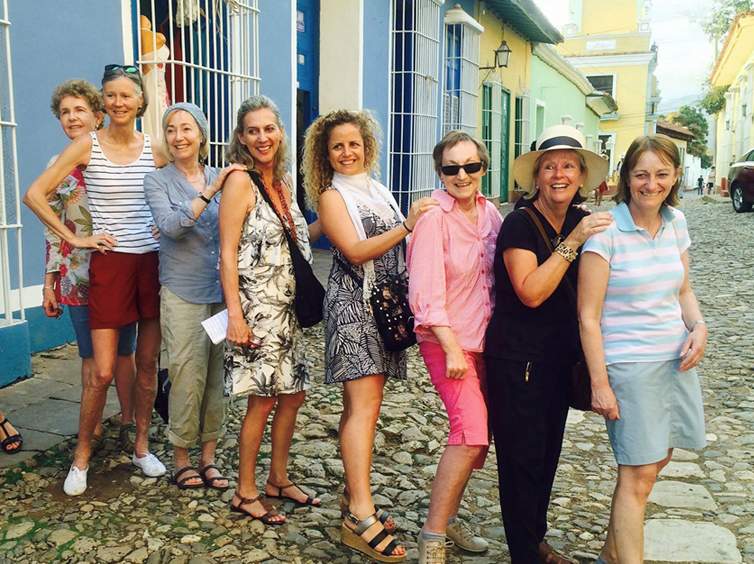
Our Cuba tours are compliant with U.S. Government regulations. We offer 9, 11 & 15 day options, with groups limited to 12 travellers.
Flights to Cuba
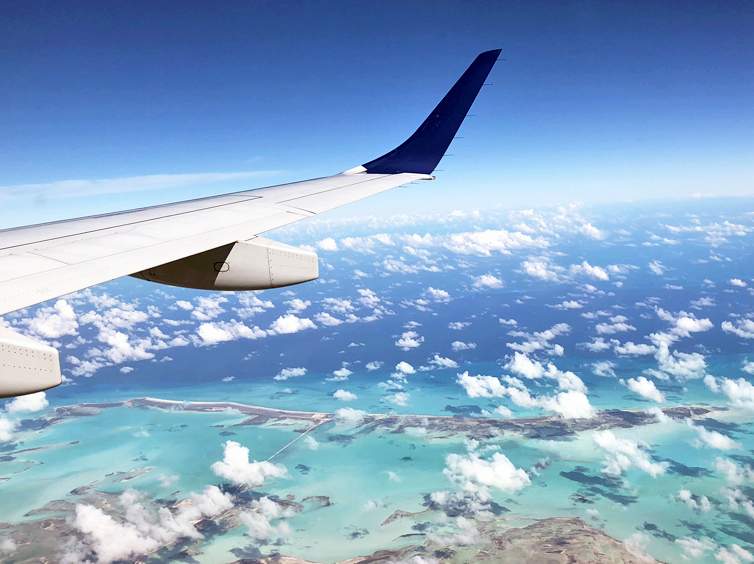
Choose your own flights to Cuba! All of our Cuba tours start and end in Havana. This gives you the freedom to choose the route to Cuba that is most convenient and economical for you
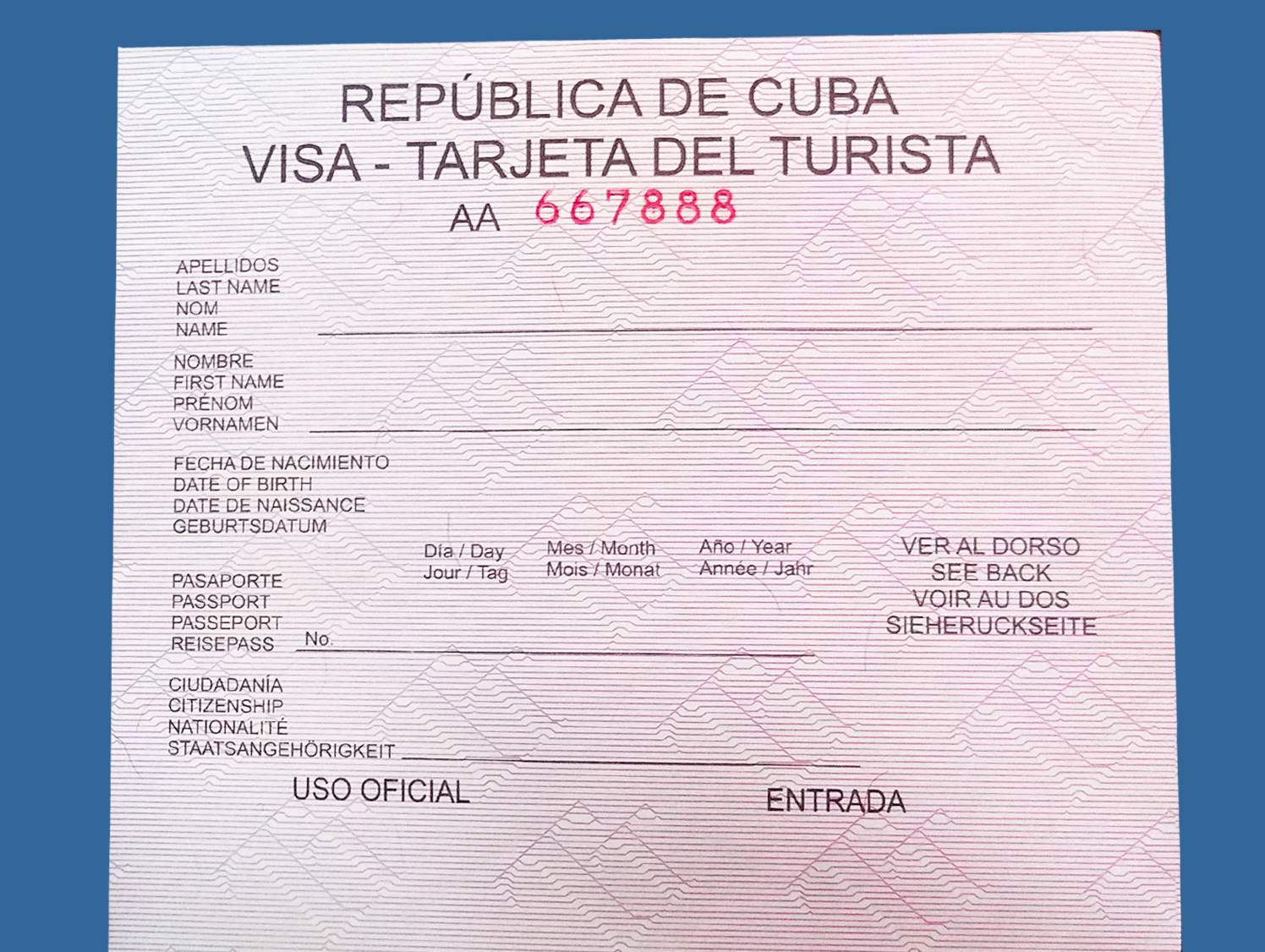
The Cuba Tourist Visa (or Tourist Card) is a document you need to enter Cuba. Read about what it is and how to obtain it!
" Our trip with Cuban Adventures exceeded all of our expectations. We normally do not travel on group tours but we are so glad we did. We learned so much from the guide about the history and the culture and the local hot spots to go to for food, drink and dancing. Thank you for making our trip to Cuba Amazing! We will definitely be back."
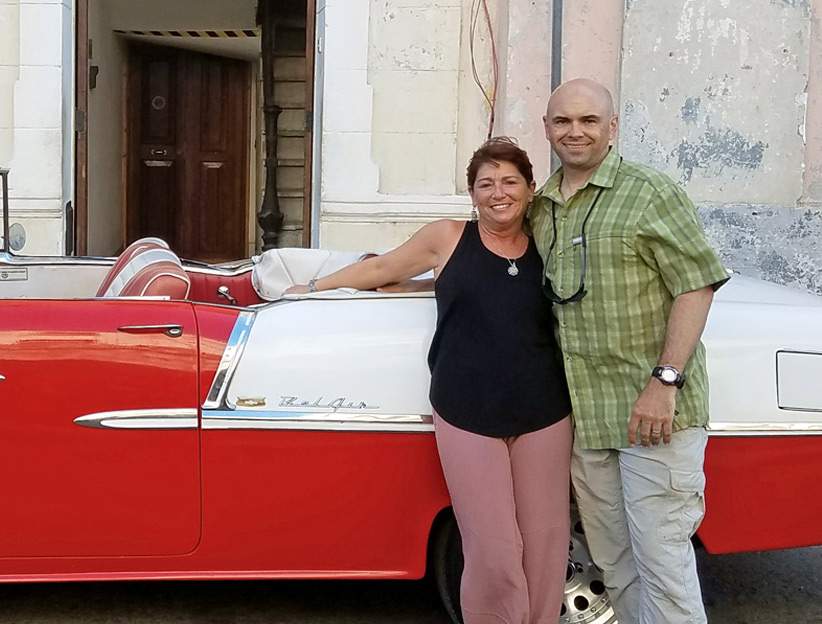
Choose your language
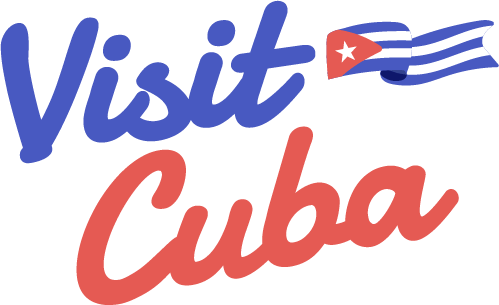
Beaches & Islands
Discover the Five Best Beaches near Santiago de Cuba
Playa Daiquiri near Santiago de Cuba
Photo: Alamy
Step onto the sun-soaked shores this season and uncover the best beaches near Santiago de Cuba, each offering a slice of paradise in this charming, yet underrated, Caribbean city
Ever wonder why Santiago de Cuba's beaches don't get as much buzz as other Caribbean spots? According to locals, these shores are where the real magic happens. With warm waters set against mountains and cliffs, each beach is an experience in itself.
They're not just picture-perfect postcards; they're places where relaxation meets genuine local culture. And the best part? Each one has its own vibe, perfect for chilling under palm trees or diving into the local scene. Get ready to dip your toes on the sandy shores of Santiago de Cuba's coast, where every beach has its own story, waiting to be part of yours.
Playa Siboney near Santiago de Cuba
Photo: Shutterstock
1. Playa Siboney
Named after the Arawak Indian word for "people of the precious stone," Siboney Beach presents an authentic slice of Santiago de Cuba's eastern coastal life. Favored by locals for its unique brown sands and rustic charm, this beach offers a serene escape from the more frequented tourist spots. Here, you can bask in the warmth of the sun, with the backdrop of small, greenery-covered elevations cradling quaint local homes.
As you explore, the beach reveals its charm beyond just sunbathing. Snorkeling here is an opportunity to be surrounded by a world of marine life, while beachfront stalls invite you to taste local flavors. We recommend the crispy chícharo fritters and zesty lemon-infused fried fish, served with congrí rice ! To reach Playa Siboney, just grab a taxi from Santiago's city center, with a ride typically costing around $15 to $20 USD.
Insider tip: Just a stone's throw away from the beach, Casa Museo Granjita de Siboney adds a historical layer, connecting you to Cuba's revolutionary past.
Playa La Estrella in Santiago de Cuba
2. Playa La Estrella
As the turquoise waters of Playa La Estrella sparkle under the Cuban sun, it's easy to see why this beach is a cherished retreat for those seeking tranquility. While it becomes a local hotspot from June to August, we recommend going during off-peak times, where you’ll discover a peaceful haven ideal for serene swims and moments of solitude.
Tucked away at the bottom of a cove, Playa La Estrella stretches for about 50 meters. Framed by cliffs and remnants of ancient fortifications near the San Pedro de la Roca Fortress , this Santiago beach merges natural splendor with historical intrigue. And if you're lucky, you might spot the occasional low-flying plane from Santiago Airport, reminding you that the modern world isn't too far away. The beach is easily accessible by local bus, an affordable journey at just $2 Cuban pesos.
3. Playa Bueycabón
One of the most delightful and family-friendly beaches near Santiago de Cuba, Playa Bueycabón is just a short journey from El Cobre, a quaint town to the west. Its shores are the perfect playgrounds for children sculpting sandy masterpieces, with the added comfort of vigilant lifeguards. The beach's charm is amplified by its " sombrillas de guano ," (traditional palm leaf umbrellas), offering a cool respite from the Caribbean sun.
Here, the aroma of crispy plantain chips known as chicharritas mingles with the ocean breeze, and beachfront stalls entice with tropical drinks like mojitos and piña coladas (or coconut water for the kids). Less frequented by tourists, Bueycabón retains an authentic feel, accessible by taxi or pocket-friendly bus at just $2 Cuban pesos.
4. Playa de Juraguá
While the Caribbean sun dips behind lush mountains, Playa de Juraguá reveals its quiet charm, a serene escape just south of Santiago. Local wisdom suggests afternoons are the best time to visit, when the horizon blends into a canvas of yellowish-pink sunsets against the clear blue waters. Ideal for couples seeking tranquility, this small beach town, home to about 700 residents, offers a secluded retreat from usually crowded tourist hotspots.
With a modest stretch of only about 200 meters, Juraguá's gentle waters and rich flora create an intimate coastal experience. We found that the $20 taxi ride from the Santiago city center is a small price for such peaceful serenity. Trust us, it's cheaper than a spa day and twice as rejuvenating.
5. Playa de Berraco
At Playa de Berraco, the intense blue waters invite you for a refreshing dip on those scorchingly hot days. This small strip of beach, lined with towering coconut trees and traditional sombrillas de guano , is perfect for sunbathers and shell collectors alike. The waves here have just enough kick to make swimming an adventure.
Frequented mostly by Santiago residents, Berraco is a great spot to connect with the locals, offering a genuine slice of Cuban beach life. To get there, it's a 1-hour drive from Santiago by taxi, priced at roughly $30 USD.
Written by Teresita Padrón.
Published January 2024.
Explore the Best Beaches in Cuba
City guide: cienfuegos.
Cienfuegos is a picturesque coastal town with laid back charm
Tarará Beach – Havana’s Best Kept Secret
Tired of typical tourist spots? Get to know Tarará beach,
Cayo Coco: The Ideal Cuban Paradise
Of all the Cuban islands, Cayo Coco has some of
Five of the Best Beaches in Cuba
Discover the best Cuban beaches making a splash in the
Subscribe to our newsletter
Get more travel inspiration, tips and exclusive offers sent straight to your inbox
I would like to get Visit Cuba newsletters in my inbox
Paradise for Your Inbox
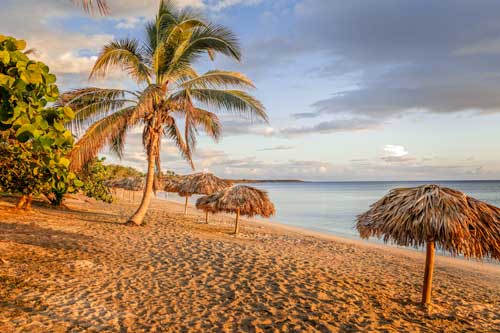

10 Best Resorts in Cuba: Ultimate Cuban Resorts Guide [2024]
Home to some of the most beautiful and untouched beaches in the Caribbean, Cuba is a Caribbean island beach destination like no other. While neighboring islands tend to be overbuilt and overcrowded, Cuba offers an incredibly refreshing, laid-back resort experience you’ll never forget.
Looking for the best resorts in Cuba for your ultimate beach getaway? These are our top picks among Cuba resorts , plus all the local tips and tricks you need to find and book the best Cuban resorts along the most beautiful beaches on the island.

This post contains affiliate links that may reward me monetarily or otherwise when you use them to make qualifying purchases – at no cost to you. As an Amazon Associate, I earn from qualifying purchases. For more information, please read our disclosure policy .
Best Resorts in Cuba
As you consider the best places to visit in Cuba for your resort stay, you’ll likely be looking at a few key beach destinations on the island. Varadero , just two hours west of Havana, is a popular, easily accessible spot that is Cuba’s most famous resort town and home to one of the best beaches in the world. For many travelers, it’s the best option for Cuban resorts.
Alternatively, Holguin in eastern Cuba has incredible beaches and beautiful resorts. Off the coast of Cuba, islands like Cayo Largo del Sur , Cayo Santa Maria , Cayo Coco , and Cayo Guillermo have pristine beaches and the best Cuba resorts you’re dreaming of.
These are the best resorts in Cuba for every type of Cuban beach getaway:
- Best Luxury Beach Resort in Cuba: Cayo Guillermo Resort Kempinski
- Best All-Inclusive Resort in Cuba: Royalton Hicacos Resort & Spa
- Best Family-Friendly Resort in Cuba: Paradisus Los Cayos
- Best Resort in the Northern Cays of Cuba: Royalton Cayo Santa Maria
Looking for a “city resort” getaway in Havana ? While Havana is home to a few true resorts, they’re really nothing special. Resorts in Havana are located on the outskirts of the city and offer neither a great beachfront nor good proximity to the best things to do in Havana . None make this list of the best Cuba resorts.
Cuba Travel 101
- Currency in Cuba: A Local’s Guide for Travelers
- How to Get Wifi in Cuba [Updated!]
- Is Cuba Safe? Updated Cuba Safety Guide
- Ultimate Cuba Travel Guide – A Local’s Advice for Travelers

Cuba Resorts
1. cayo guillermo resort kempinski.
Best Luxury Beach Resort in Cuba
$$$ | Cayo Guillermo
The white sands of the world-famous Playa Pilar on Cayo Guillermo are home to Cayo Guillermo Resort Kempinski , our top pick among the most luxurious resorts in Cuba. What makes this all-inclusive beach resort in Cuba so special? It’s home to the island’s only overwater bungalows!
The resort’s seven overwater bungalows are truly luxe on a level it’s hard to find elsewhere in Cuba, with sparkling plunge pools and direct water access. However, even if you stay in one of the 222 “standard” rooms or suites at the Cayo Guillermo Resort Kempinski , you’ll be impressed with their lovely and luxe yet cozy furnishings and beautiful ocean views.
The resort is home to four restaurants, bars, and lounges, as well as a beautiful spa and wellness center with an impressive menu of services, and is complete with a sauna and steam room.
Reviews and Bookings: Cayo Guillermo Resort Kempinski
15 Best All Inclusive Resorts in Cuba
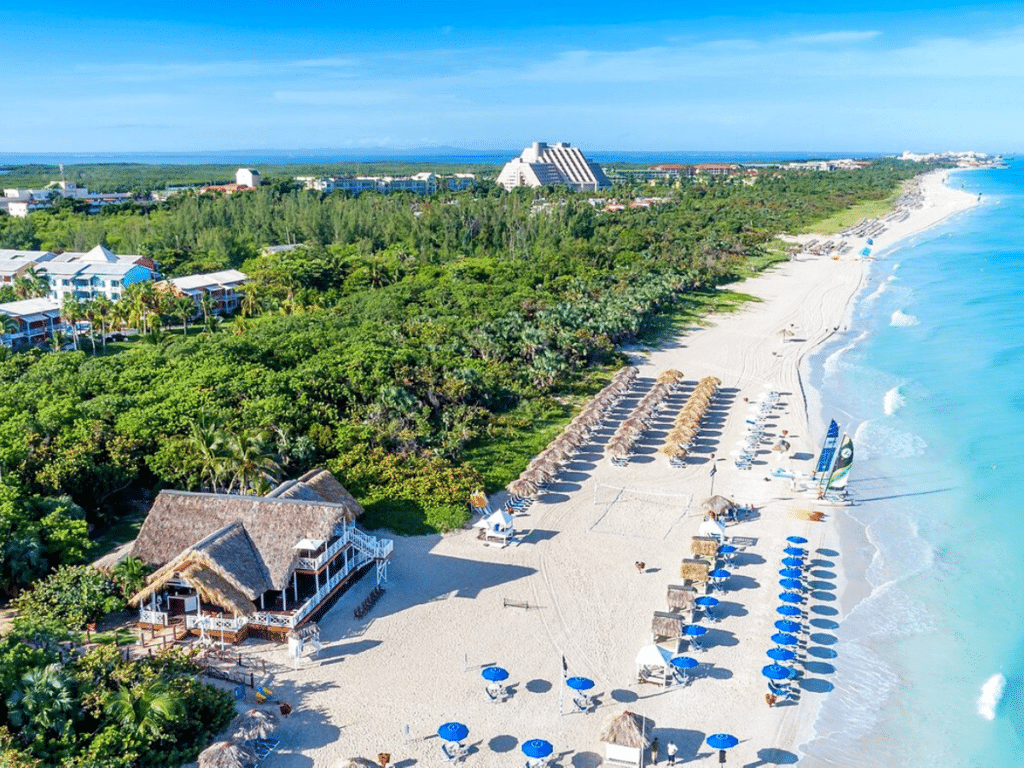
2. Royalton Hicacos Resort & Spa
Best All-Inclusive Resort in Varadero
$$ – $$$ | Varadero | All Inclusive | Adults-Only
Of the many Cuba resorts to choose from in the island nation’s resort town par excellence of Varadero , the Royalton Hicacos Resort & Spa is by far our top recommendation. This impressive adults-only, all-inclusive Cuban resort has endless amenities with a golf course, eight restaurants, a spa, and beautiful, expansive grounds where guests will discover a number of pools, beach bars, and places to enjoy the laid-back lifestyle of Varadero.
Royalton Hicacos Resort & Spa is perched on a pristine section of the Varadero beachfront, truly too beautiful to describe, and offers watersports and activities that will keep adventurous travelers busy for days. Overall, this stunning resort is the cream of the crop among Varadero resorts!
Reviews and Bookings: Royalton Hicacos Resort & Spa
Plan a Trip to Varadero
- Varadero, Cuba: Ultimate Traveler’s Guide
- 12 Best Things To Do in Varadero
- Havana to Varadero: 5 Easy Ways To Travel
- 10 Best Resorts in Varadero
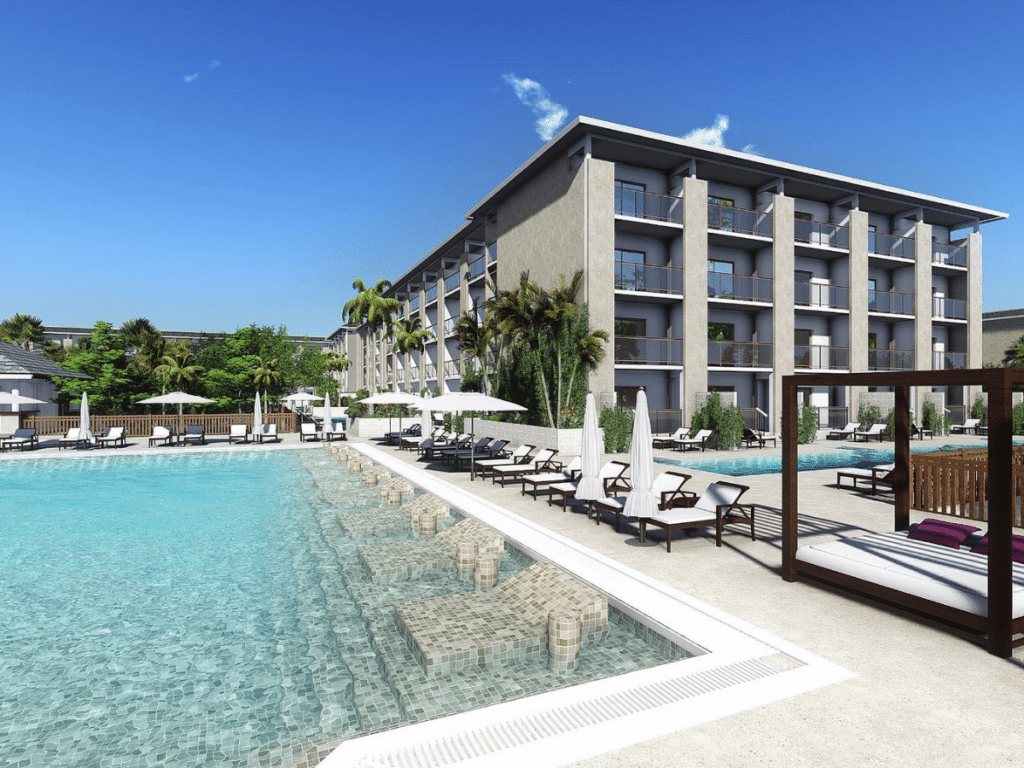
3. Paradisus Los Cayos
Best Family-Friendly Resort in Cuba
$$ | Cayo Santa Maria | All Inclusive
Our top choice among the best Cuba resorts for a family-friendly getaway is Paradisus Los Cayos , located along the beautiful beaches of Cayo Santa Maria in Cuba’s northern cays. A fantastic kids’ club and plenty of spaces around the resort that are dedicated families are highlights. Calm waters on the beach and the extensive choices of food and activities really help it cater to families with kids of all ages.
Even if you’re not traveling to Cuba with the whole family, you’ll love Paradisus Los Cayos with its numerous restaurants, bars, lounges, and beautiful beachfront. The resort also offers excellent options for upgrades in club rooms, which include private outdoor space and swim-out pools on the lower level.
While Cayo Santa Maria is a fantastic choice for a laidback, easygoing travel experience in Cuba trip, if it’s too far for you to travel (especially with kids in tow!), head to super-accessible Varadero and stay at Iberostar Selection Varadero instead. It’s another one of our top picks among family-friendly all-inclusive resorts in Cuba.
Reviews and Bookings: Paradisus Los Cayos
What to Pack for Cuba
Check out our Ultimate Cuba Packing List to help you pack for your trip – we’re sharing exactly what to bring to Cuba and what we never travel without.
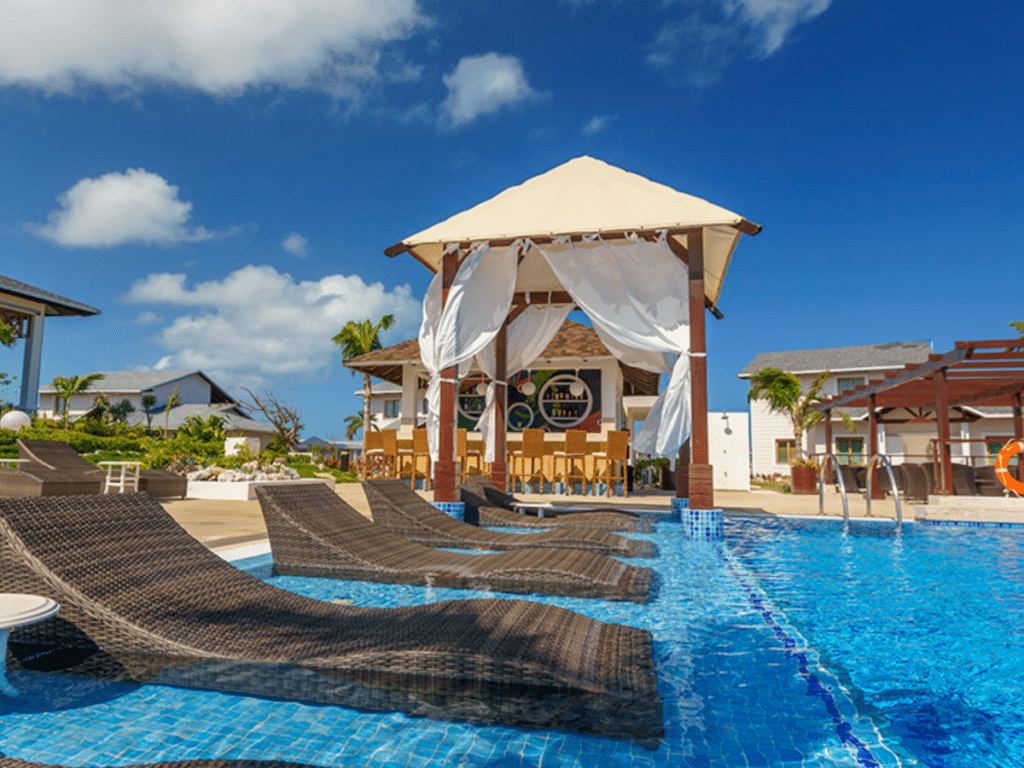
4. Royalton Cayo Santa Maria
Best Resort in the Northern Cays of Cuba
$$ – $$$ | Cayo Santa Maria | All Inclusive | Adults-Only
The Royalton Cayo Santa Maria was awarded by TripAdvisor as the number one all-inclusive resort in the Caribbean in 2023, and it’s easy to see why. This stunning resort, nestled among the white sands of largely untouched Cayo Santa Maria , offers an incredible mix of resort amenities and impeccable service while allowing travelers the chance to bask in one of the most beautiful destinations in the country.
With just 122 rooms, the Royalton Cayo Santa Maria feels almost like a boutique resort , especially in comparison to its overwhelmingly large neighbors on islands like Cayo Coco and Cayo Guillermo . Here, visitors will enjoy a retreat, not a circus.
Service throughout this award-winning Cuba resort is personalized and friendly, and despite the resort’s smaller size, the amenities are amazing. Guests can enjoy multiple swimming pools, a pristine, sandy beachfront with great options for watersports, and one of the best spas in the cays of Cuba .
Reviews and Bookings: Royalton Cayo Santa Maria

5. Meliá Buenavista
Yet another one of the most beautiful resorts in the increasingly popular destination of Cayo Santa Maria is the Meliá Buenavista . Nestled between a white sand beach and the tiny cay’s pristine natural forests, this dreamy resort makes enjoying one of Cuba’s most beautiful beach destinations a breeze.
This 108-room resort offers exceptional dining and has particularly great snorkeling, with beach areas that are protected and reefs fanning out right in front of the resort. Upgrade your stay to The Level for access to numerous additional amenities, and choose from a number of room configurations and even private villas for added privacy and convenience for parties of all sizes.
Reviews and Bookings: Meliá Buenavista
Plan a Trip to Cuba’s Cays
- Cayo Santa Maria: Ultimate Traveler’s Guide
- Cayo Largo del Sur: Ultimate Traveler’s Guide
- Cayo Coco: Ultimate Traveler’s Guide

6. Paradisus Río de Oro Resort & Spa
$$$ | Guardalavaca – Holguin | All Inclusive | Adults-Only
Paradisus Río de Oro Resort & Spa is an adult-only, all-inclusive Cuban resort located along the sands of Playa Esmeralda, one of the nicest beaches in Cuba . Incredibly tranquil waters and pristine white sand make it the perfect destination for a beach vacation, though the amenities and attention to detail make it one of the top choices on our Cuba resorts list.
This beautiful beach resort is known for having delicious food, a great spa, and a beautiful pool, with several lounges and restaurants around the grounds of the resort. Watersports like kayaking, kitesurfing, and even the resort’s catamaran are all part of the all-inclusive resort package , which makes for even more fun at the beach.
Paradisus Río de Oro Resort & Spa is located in Holguin , an eastern province of the country that has some of the most impressive beaches on the island. Holguin’s international airport makes for easy transport, making this one of the easier-to-reach beach resorts on the western part of the island, especially if you have additional destinations on your Cuba itinerary .
Reviews and Bookings: Paradisus Río de Oro Resort & Spa
Travel Essential
Don’t think about traveling to Cuba without a good VPN (Virtual Private Network) . Using a VPN while connecting to the internet is an easy way to keep your personal information safe from hackers and trackers. We’ve used NordVPN for years and couldn’t recommend it more – it’s a must for safety online, especially in Cuba.
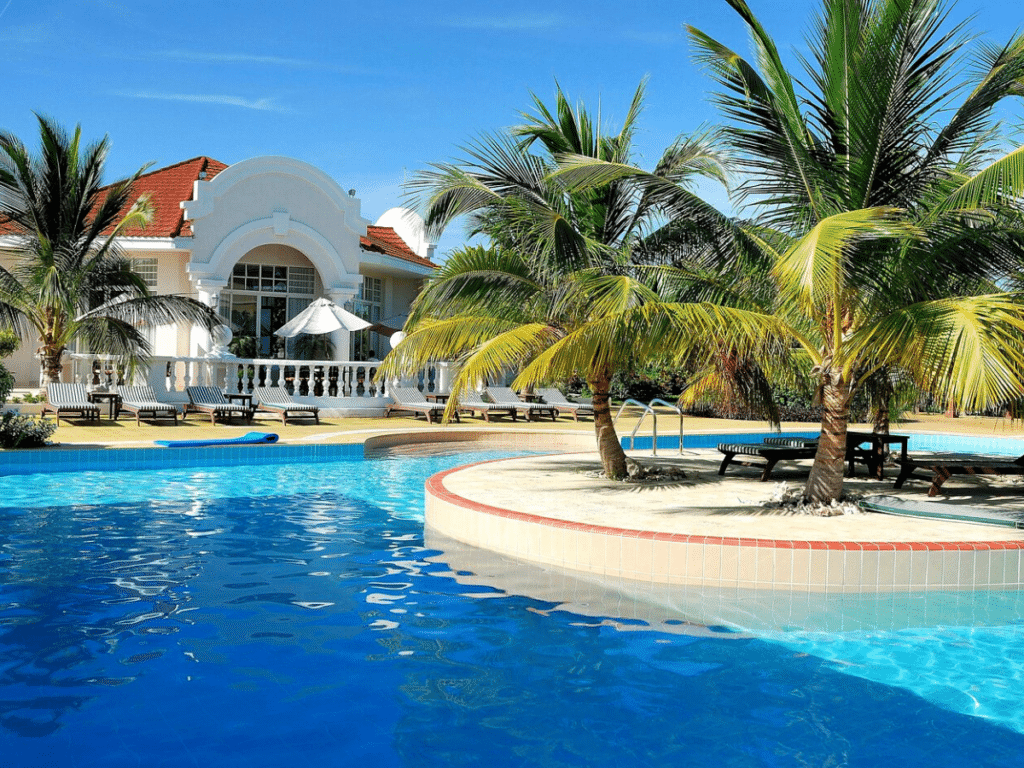
7. Iberostar Selection Ensenachos
$$ | Cayo Ensenachos | All Inclusive
Tucked away alongside the larger and more well-known Cayo Santa Maria is Cayo Ensenachos, home to little more than Iberostar Selection Ensenachos . Its secluded spot on a lesser-visited cay lends the resort an almost private island feel, while direct access to two of the island’s best beaches means guests can enjoy some of the most beautiful beachfronts in the Caribbean.
This impressive beach resort has great installations, including a number of restaurants and lounges, beach bars, and entertainment options, including plenty to do for visitors of all ages. The staff is friendly and exceedingly helpful. While some of the areas of the resort could use some stylistic updates, Iberostar Selection Ensenachos is both perfectly comfortable and luxurious, making for a memorable beach vacation.
Reviews and Bookings: Iberostar Selection Ensenachos
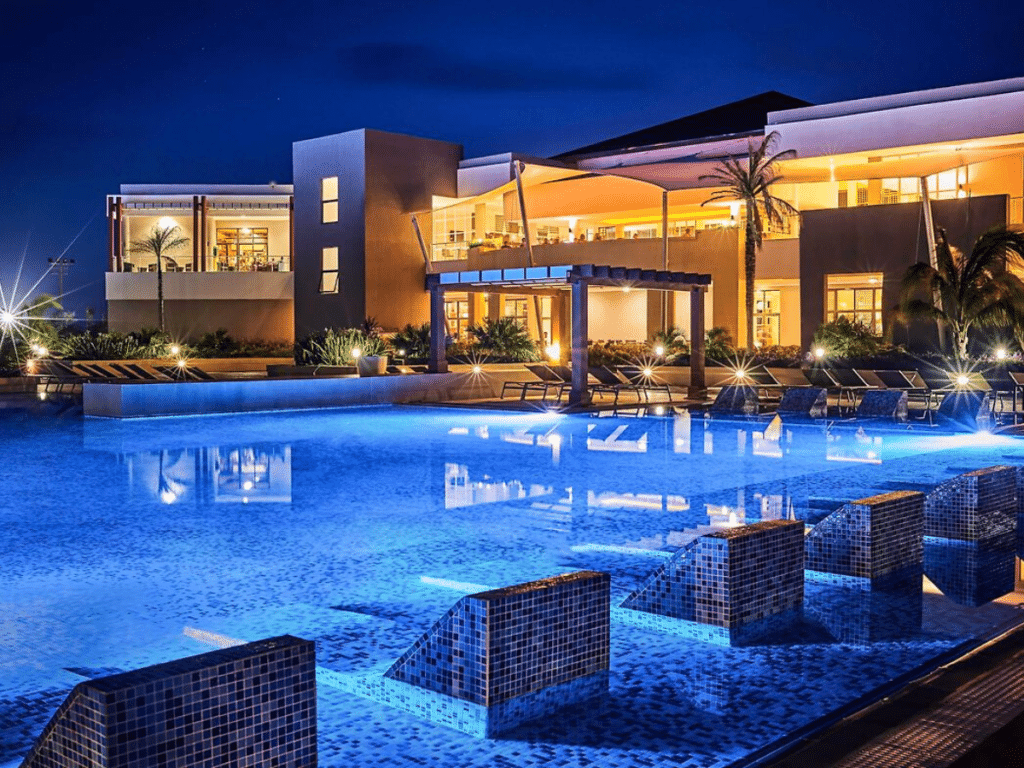
8. Gran Marena Cayo Coco
$$ – $$$ | Cayo Coco | All Inclusive
New, modern construction, beautiful furnishings, and delicious food make the Gran Marena Cayo Coco (formerly the Pullman Cayo Coco Hotel) stand out among the best resorts in Cayo Coco , and earn it a spot on our list of the best resorts in Cuba.
This 518-room resort is large yet maintains plenty of open space across its ample grounds, meaning that even at full capacity, it doesn’t feel overwhelming or crowded, but like a welcome retreat. With 8 restaurants, 10 bars, and even 7 different pools, you’ll need a return visit just to experience everything this hotel has to offer. The highlight is the direct access to two distinct beaches, considered among the best in Cayo Coco, with unlimited watersports options for guests.
Reviews and Bookings: Gran Marena Cayo Coco
Travel Insurance
Cuba requires that all travelers have proof of a comprehensive travel insurance policy in order to enter the country. Check out our guide to travel insurance for Cuba for more details. We recommend these brands for Cuba travel insurance:
- Visitors Coverage : Coverage for Cuba travel available to citizens of all countries, though not currently available to residents of New York and Maryland in the United States.
- Insubuy : Coverage for Cuba travel available to citizens of all countries and states of the United States.

9. Iberostar Selection Varadero
$$ – $$$ | Varadero | All Inclusive
Long a favorite destination among travelers headed for the ultimate resort vacation in Varadero, Iberostar Selection Varadero is among the best resorts in Varadero , home to its own pristine slice of beachfront with plenty of amenities and great service to match. Excellent service, great food, tons of activities, and a great spa make this one of the best Cuba resorts to consider.
While our top recommendation for the best resort in Varadero is the adults-only resort Royalton Hicacos Resort & Spa , the Iberostar Selection Varadero is by far the best choice in Varadero for families , given the resort’s dedicated kids’ club and excellent programming for children and teens. Don’t count this place out if you’re looking for a romantic, adults-only getaway – there is plenty to do for adults, and dedicated adults-only spaces, as well.
Reviews and Bookings: Iberostar Selection Varadero
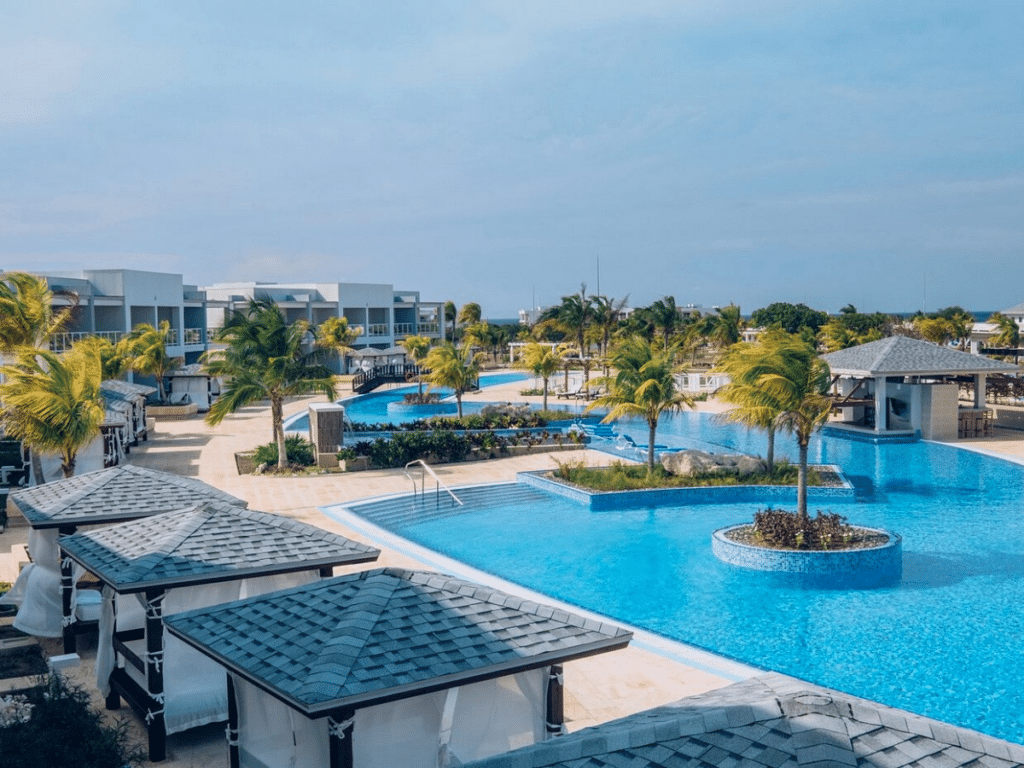
10. Iberostar Selection Holguin
$$$ | Playa Pesquero – Holguin | All Inclusive
Nestled between the white sand beaches of Playa Estero and Playa Pequero – both among the most pristine beaches on the island of Cuba – Iberostar Selection Holguin invites guests to experience one of Cuba’s most magnificent destinations while enjoying resort installations that anyone would love.
Updated, modern furnishings give a breezy Caribbean vibe to the entire resort, while the expansive beach and exterior spaces, including a massive pool deck with plenty of loungers and sun beds , invite unending relaxation. The resort also offers dedicated kid-friendly areas and adult areas, making the resort a great choice for a multigenerational vacation.
Fly directly into the international airport in Holguin or take a connecting flight from Havana that lasts just over an hour, and you’ll be on the beach in no time.
Reviews and Bookings: Iberostar Selection Holguin
- How to Get Cuba’s Tourist Visa [Required!]
- 15+ Best Hotels in Havana
- What to Pack for Cuba: Ultimate Packing List
Cuban Resorts
Can americans go to resorts in cuba.
Many American travelers are surprised to learn that traveling to Cuba from the United States is not really that complicated and doesn’t require that travelers apply for a visa or special permission ahead of time. However, American travelers are not allowed to stay at hotels and resorts in Cuba that are fully or partially owned by the Cuban government.
Unfortunately, ALL the resorts in Cuba on this list are off-limits to American travelers – almost every large beach resort in Cuba is, as the Cuban government closely controls major tourist development of this kind.
We recommend that travelers look for smaller, independently-owned beachside hotels as an alternative – Varadero and the town of Guardalavaca in the province of Holguin have plenty! – though you’ll find options all over Cuba.
For a full summary of hotels that American travelers should avoid while traveling in Cuba, check out the U.S. Department of State website for an updated list.
Read More: Legal Travel To Cuba Guide for American Citizens
Are Cubans Allowed to Stay in Resorts?
Yes, Cubans are allowed to stay at resorts in Cuba. This wasn’t always the case, however. For many years after the Cuban Revolution, Cuban citizens were not allowed to stay at many of the country’s biggest and most important hotels and resorts, which catered exclusively to tourists.
Now, you’ll find plenty of Cubans and Cubans living abroad who stay at hotels and resorts across the country.

Carley Rojas Avila
Carley Rojas Avila is a bilingual travel writer, editor, content marketer, and the founder of the digital travel publications Home to Havana and Explorers Away. She is a serial expat and traveler, having visited 40+ countries and counting. Carley has written for publications like Travel + Leisure, MSN, Associated Press, Weather Channel, Wealth of Geeks, and more. Find her front row at a Bad Bunny concert, befriending street cats, and taste-testing every pizza in Havana.

What You Need To Be Aware Of As A Tourist Visiting Cuba
B eaches with white sand as fine as sugar, vintage American cars cruising down streets lined by colorful aging buildings, and the chance to puff on a fine cigar while watching people dance the salsa in the warm night air: It's not hard to understand the picture-postcard allure of Cuba. It's a country in the throes of rapid change as it emerges back onto the world stage after decades of stagnation following the 1959 revolution. So now is a wonderful time to pack your dancing shoes and visit the Caribbean's largest island.
However, Cuba isn't an uncomplicated tropical paradise and there are several things you need to be aware of before you visit as a tourist. Like, as an American, is it even legal for you to visit Cuba as a tourist? What's with the money situation? And can you access the internet or are you going back to the Stone Age (also known as the early 1990s)?
Can Americans Visit Cuba?
Cuba is just 103 miles from the tip of Florida making it the ideal winter getaway for sun-seeking Americans. However, the U.S. imposed restrictions on travel to Cuba in 1963 and while the level of restrictions has varied over the years, as of July 2023, Americans can't visit Cuba purely for tourism purposes.
That said, there are 12 categories of authorized travel to Cuba, and the one that most Americans visiting the island use is the "support for the Cuban people" category. You'll need a passport with six months validity at the time of entry and two blank pages. You also need a Cuban Tourist Card, which you can usually get from your airline for as little as $50.
Speaking of airlines, you can fly direct to Cuba from several U.S. cities, including Miami, Tampa, New York City , and Houston. Most direct flights from the U.S. land in the Cuban capital of Havana, though there are several nonstop flights from Miami to other destinations in the country, including Santiago de Cuba and the popular beach resort of Varadero.
Cuban Currency
There's good news and, let's say, tricky news when it comes to paying for things in Cuba. The good news is that there is now one currency used by residents and visitors alike in the country: the Cuban peso (CUP). The Cuban convertible peso (CUC), which used to be the currency used by tourists, was eliminated in 2021.
The only official place you can exchange currency in Cuba is at Cadeca exchange houses. You cannot get CUP outside of Cuba, nor should you take the currency home with you. Spend or exchange anything you have left over before you go to the airport (after security, you should pay in foreign currency).
What about credit cards? U.S. credit and debit cards won't work in Cuba. Credit cards from major financial institutions like Visa and Mastercard from other countries should be accepted by certain businesses and ATMs. However, cash is king in the country and it's always a good idea to keep some with you for tips to service workers.
The Internet In Cuba
Cuba is the perfect place to go on a digital detox. We're going to be honest: Getting online isn't as easy as in the U.S. and internet speeds can be sluggish. However, if you need to connect to the internet, you can. The most common way to access the internet in Cuba is via hotspots in places like public parks and on the Malécon in Havana. (They are also perfect for people-watching, so embrace the experience!) Many hotels and some other businesses also have Wi-Fi.
To access the internet in most places you're going to need a NAUTA card, which you can purchase from ETECSA offices around Cuba. Be prepared to stand in line to buy the card and take your passport along with you. Our advice? Be patient and make the most of your offline moments to fully immerse yourself in the Cuban experience. And plan to latergram your posts on Insta.
Sleeping And Eating
When it comes to accommodation in Cuba, you'll find a range of options. From all-inclusive beach resorts to cozy casas particulares, you'll find somewhere to suit your preferences and budget. Our pick for independent travelers is a casa particular, a privately owned guesthouse which offers a fantastic opportunity to experience Cuban hospitality firsthand. Many places offer breakfast and an evening meal, so you can taste home-cooked Cuban food. It's also an excellent way to support the Cuban people (this is likely the stated purpose of your visit, after all) as the money you pay goes directly to the guesthouse owners. In contrast, the Cuban government holds at least a 51% share in all hotels in Cuba. Hotel star ratings are often on the generous side, so be discerning.
As far as food goes in Cuba, your best bet is to go to a paladar, a privately run restaurant that serves excellent versions of classic Cuban dishes like roast pork, shredded beef, and suckling pig (the cuisine is pretty meat-forward). A note on cultural sensitivity: Many products that are widely available in the U.S. might not be in Cuba and even basic products often disappear from Cuban shops at short notice. Savor what's put on your plate and enjoy the often simple but tasty food.
How To Support And Respect The Cuban People
Staying in casas particulares and eating at paladares are just two ways that you can support the Cuban people on your trip. Consider taking a salsa class run by a local, buying locally made handicrafts, and whiling away the steamy nights sipping rum and listening to musicians put on a fabulous show. By patronizing local businesses, not only are you financially supporting the Cuban people, but you're also going to have an authentic Cuban experience.
We touched on the unavailability of some food items earlier, but shortages extend to many consumer products in Cuba. Bring everything you think you'll need for your trip, including medications. You may also want to bring a roll of toilet paper (glamorous, we know), as public bathrooms often don't have it. Power cuts are common; while they might be frustrating, remember that you're only there for a short time and, for Cubans, power cuts are infuriating, so keep your complaints to yourself. This goes for everything, really; if you're not prepared for some minor inconveniences, don't visit Cuba. If you want to take a memorable trip to a country steeped in history with a vibrant culture, stunning urban architecture, and beautiful natural landscapes, it'll all be worth it.
Read this next: The World's Best Places To Put On Your Travel Bucket List


COMMENTS
Boca de Guama is the peninsula's tourist center, and its main attraction is the Criadero de Cocodrilos, a crocodile farm. 14. El Nicho Waterfalls. Poceta de Cristal in El Nicho National Park. If you're looking for a ravishing slice of nature in central Cuba, head to El Nicho waterfalls.
5. Baracoa. Best for wildlife spotting. Located in the easternmost tip of Cuba, just getting to Baracoa is an experience in and of itself. The road from Guantánamo leads to La Farola, a sinuous 60km-long (37-mile) road considered the most scenic drive in Cuba.
Trinidad. Linda Garrison. The beautiful Spanish colonial city of Trinidad, Cuba, takes visitors back in time. Located in the mountainous central Cuba province of Sancti Spíritus, Trinidad is a UNESCO World Heritage Site. Founded in 1514, the city is a well-preserved example of a Caribbean sugar town of the 19th century (the surrounding area is ...
This open-air venue hosts live music and dance performances, making it a lively spot to spend an evening. Discover the vibrant colors and rich culture of Trinidad. 6. Baracoa, Guantánamo. Known for its rich cultural offerings, unique cuisine, and historical landmarks, Baracoa is one of Cuba's most scenic destinations.
2. Trinidad. Trinidad is a popular "second city" for visitors to Cuba looking for more places to visit in Cuba beyond Havana - and is easily one of the best cities to visit in Cuba. While often overshadowed by Havana, Trinidad can easily stand on its own as an unforgettable destination in Cuba.
Trinidad. Submitted by Trijit Mallick from DogTravel Buff. With bright-colored buildings, pastel houses, and cobblestone streets, Trinidad is one of the best-preserved colonial towns in Cuba. It is a small town but packed with history, beautiful architecture, scenic beauty, and delicious local cuisines.
Spend a night at Havana's most famous cabaret, Tropicana nightclub. Visit La Casa de la Musica for the biggest and best party in Havana. Enjoy vibrant salsa music and great drinks at both of the central Havan locations. Enjoy a night of great jazz at La Zorra y el Cuervo, a funky and cozy subterranean club.
45. Climb Pico Turquino in Sierra Maestra, the best hike to do in Cuba. Getting to the top isn't easy, but if you like hiking, this is a must-do in Cuba. Two paths lead to the top; a 7-mile trail from the Turquino Caves on the coast, and an 11-mile trail from the Bartolomé Masó neighborhood of Santo Domingo.
9. Fabrica De Arte Cubano. 2,509. Points of Interest & Landmarks. The F.A.C., Cuban Art Factory, located on the 26 and 11 in Vedado, is the best night cultural proposal in La Havana. There is always something new to do, theater, jazz, contemporary dance, concerts, DJ's, exhibitions or intranet chatting.
Taking a vacation to Cuba means swimming in crystalline waters, playing in the powdery sands, and absorbing the ultra-Caribbean atmosphere - and the entire island is covered with these scenic locations! ... Get more travel inspiration, tips and exclusive offers sent straight to your inbox. I would like to get Visit Cuba newsletters in my inbox ...
The beach is connected to mainland Cuba by a bridge, but you can also travel by air to the Jardines del Rey archipelago island. The white-sand beaches are covered by cloudless skies and plenty of sunshine, and the gently lapping water is a beautiful turquoise color. Visit the Parque Natural el Bagá to see crocodiles, turtles, and flamingoes.
Greatest Waterfalls in Cuba. Imagine finding yourself in Cuba, surrounded by an exuberant natural environment - where the vivacious green mountains stretch out into a splendid blue sky - while the fresh Caribbean seabreeze brightens your face. And on this tropical voyage, you discover a land of waterfalls on every corner of the island.
18. National Botanical Garden of Cuba. Where to Stay in Havana for Sightseeing. Map of Tourist Attractions in Havana. More Places to Visit near Havana. 1. Old Havana (Habana Vieja) Catedral de San Cristobal. Old Havana, Cuba, a UNESCO World Heritage site, oozes the charm of days gone by.
The square is a bit out of the way from the heart of the capital, so most tourists get there via one of the classic car taxis that you can rent from Old Havana. Driving by this famous mural was one of my favorite things to do in the city. 21. Pop By Hemingway's Old House. Earnest Hemingway's House in Havana.
3. Visit Hotel Nacional in Cuba. The iconic Hotel Nacional just back from the Malecon in the Vedado district of Havana was opened in 1930 when Cuba was a major tourist destination for wealthy Americans. Today it is a National Monument in Cuba and is a famous location for a mojito on the lawn.
In this video, we will talk about some handpicked places to visit in Cuba, so let's jump into the Top 10 places to visit in Cuba. Travel Hack To book CHEAPES...
Instead, we'll give you plenty of good reasons to travel outside of the country's capital city. From the remote city of Baracoa to the cultural hub of Santiago, here are six places to visit in Cuba (besides Havana). Viñales. Cienfuegos. Trinidad.
Havana, Cuba. Photo: serena_tang. Havana is the main highlight of Cuba and arguably, one of the most famous because of its status as a Cuban icon. The city is plastered with color and impressive Spanish colonial architecture. The Plaza Vieja is one of the city's hotspots where tourists like to meander.
INSIDER CUBA ITINERARY for (2024) Cuba is an incredible adventure. You'll know it for its sensual music and dance, and of course its cigars. But the large Caribbean island has much more to offer! Its beaches are pristine, the ocean water balmy and blue. It's cities and villages have an unusual mix of Spanish and African roots and influences ...
We delve beyond tourist hotspots, unveiling hidden gems and show you Cuba's unique culture by doing things the Cuban Way. With our deep-rooted connections and knowledge, we craft truly immersive adventures, ensuring each journey is a unique and unforgettable exploration of culture and nature.
Cuban Adventures operates licensed people-to-people escorted small group travel to Cuba for American citizens, and is one of Cuba's best and leading tour companies since 2005. ... We learned so much from the guide about the history and the culture and the local hot spots to go to for food, drink and dancing. Thank you for making our trip to ...
1. Playa Siboney. Named after the Arawak Indian word for "people of the precious stone," Siboney Beach presents an authentic slice of Santiago de Cuba's eastern coastal life. Favored by locals for its unique brown sands and rustic charm, this beach offers a serene escape from the more frequented tourist spots.
These are the best resorts in Cuba for every type of Cuban beach getaway: Best Luxury Beach Resort in Cuba: Cayo Guillermo Resort Kempinski. Best All-Inclusive Resort in Cuba: Royalton Hicacos Resort & Spa. Best Family-Friendly Resort in Cuba: Paradisus Los Cayos. Best Resort in the Northern Cays of Cuba: Royalton Cayo Santa Maria.
Cuba is just 103 miles from the tip of Florida making it the ideal winter getaway for sun-seeking Americans. However, the U.S. imposed restrictions on travel to Cuba in 1963 and while the level of ...